



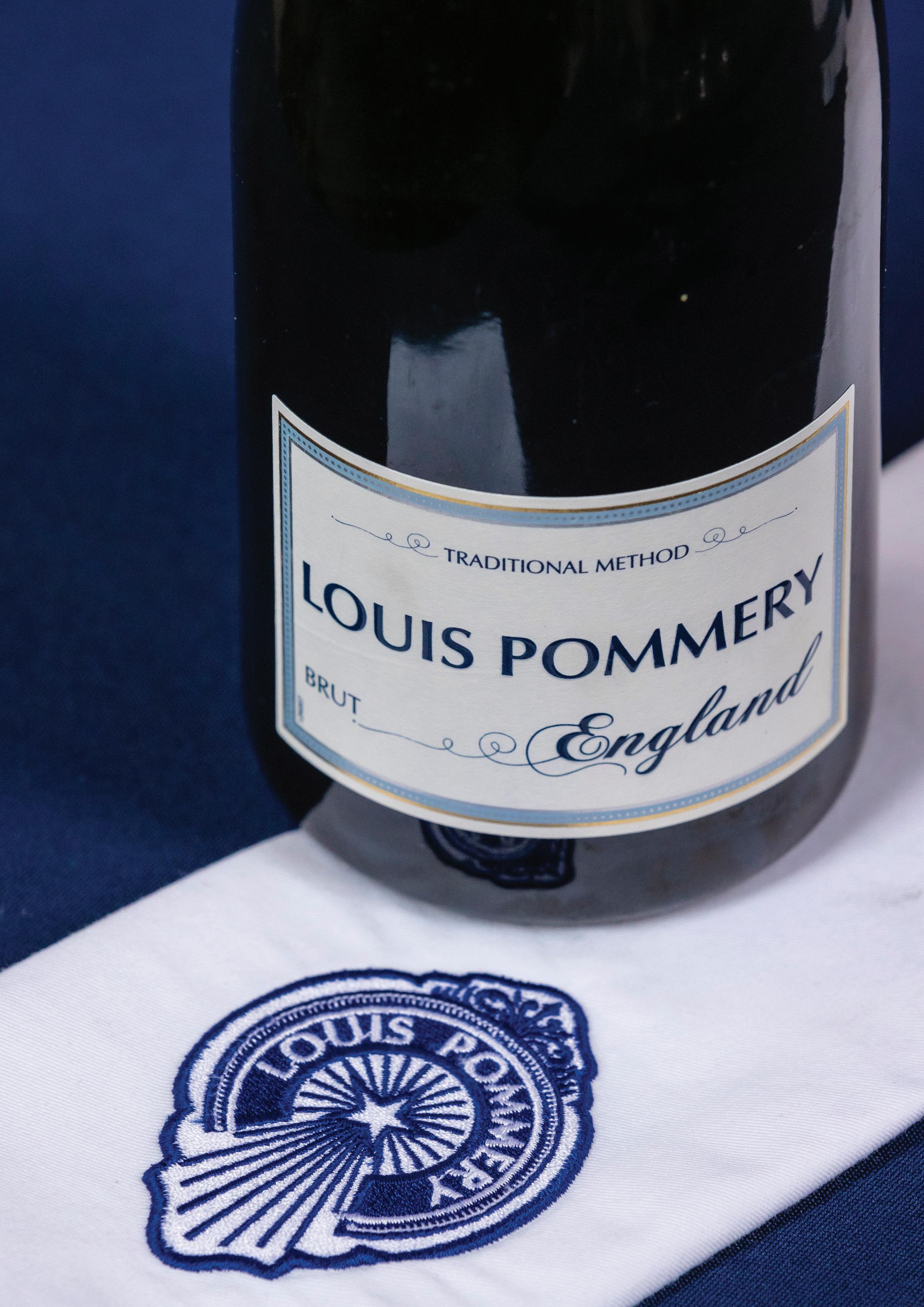







APRIL 2024 ™ Expect the unexpected INSIDE Exploring wine culture Pruning competition Welsh Wine Showcase LAND & PROPERTY CONSULTANTS Expert advice for viticulture: • Site-finding • Sales & acquisitions • Planning applications • Environmental schemes & grants Call us on 01892 770339 Matthew Berryman 07710 765323 matthew@c-l-m.co.uk




Flavy X-Treme



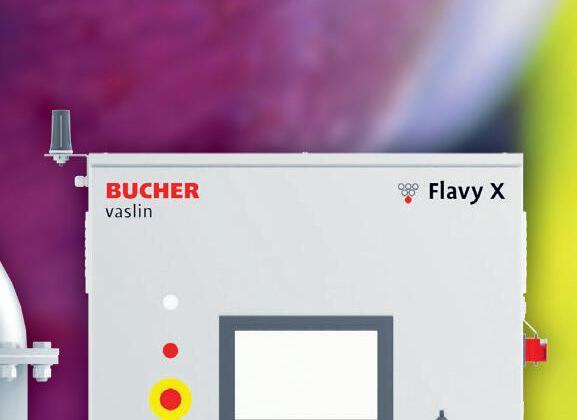


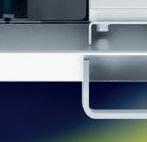







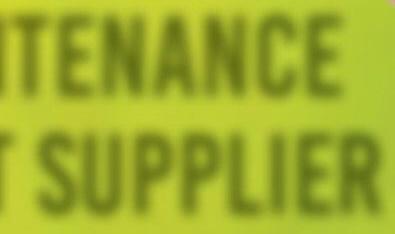





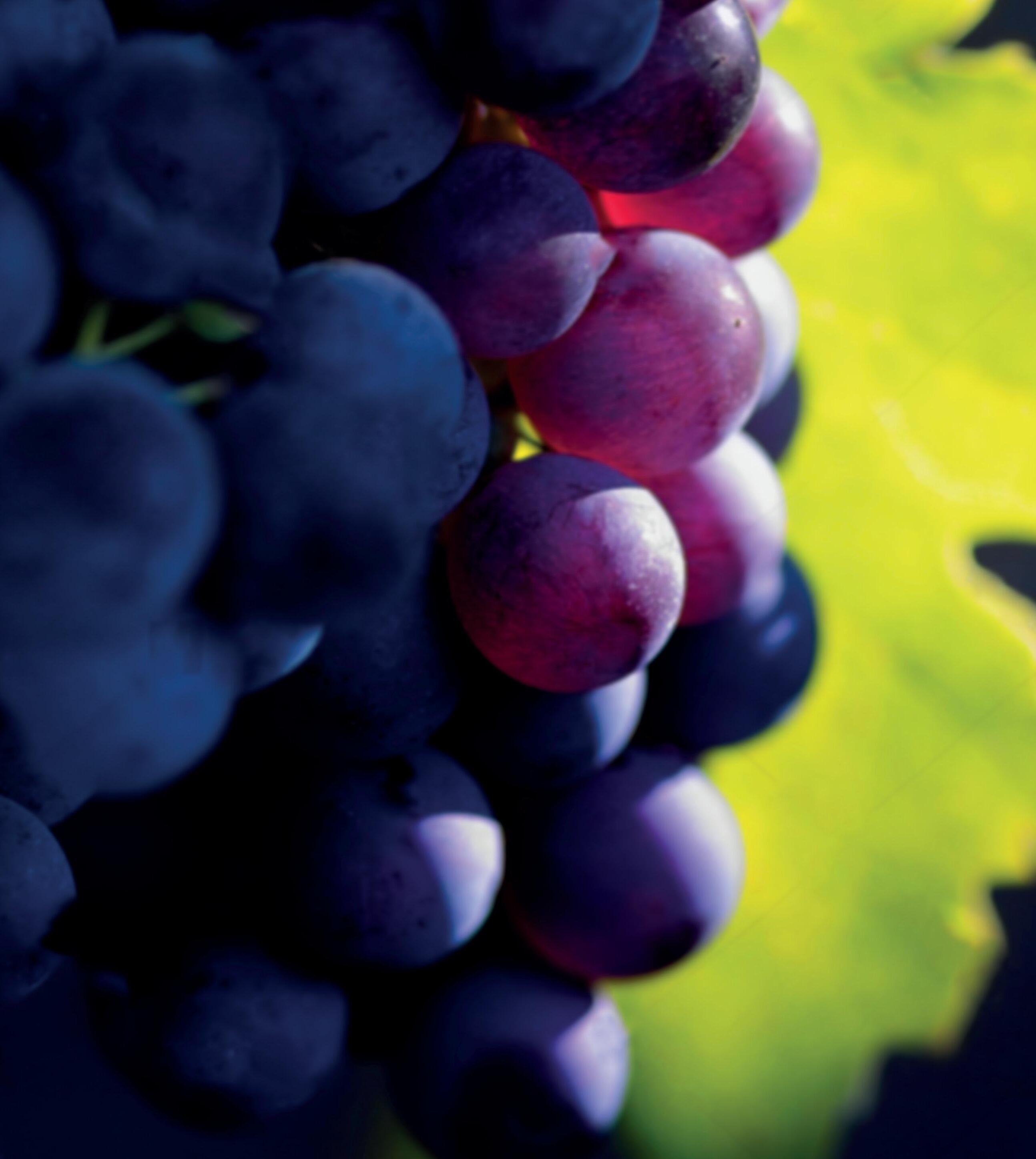
T: +44 (0)1327 342589 E: SALES@core-equip.com GET IN TOUCH core-equip.com FILTRATION VERSATILITY Installation, training, service and maintenance from The UK’s leading Winery Equipment supplier
most versatile crossflow filter on the market, capable of filtering wine, wine lees, juice and juice lees as well as sparkling wine. Renowned for its ease of use and rock-solid reliability, this unique machine benefits from high juice recovery rates, a low environmental impact and up to 20 hours of continuous use.
The
www.vineyardmagazine.co.uk
VINEYARD
Kelsey Media, The Granary, Downs Court Yalding Hill, Yalding, Maidstone, Kent, ME18 6AL 01959 541444
EDITORIAL
Editor: Rebecca Farmer vineyard.ed@kelsey.co.uk
Features:
Malcolm Triggs
GRAPHIC DESIGN
Jo Legg Flair Creative Design jo.legg@flair-design.co.uk
ADVERTISING & MARKETING
Jamie McGrorty 01303 233883 jamie.mcgrorty@kelsey.co.uk
PHOTOGRAPHER
Martin Apps www.countrywidephotographic.co.uk
MANAGEMENT
DIVISIONAL MANAGING DIRECTOR: Steve Kendall
PUBLISHER: Jamie McGrorty
RETAIL DIRECTOR: Steve Brown
SUBSCRIPTION MARKETING MANAGER: Claire Aspinall
PRINT PRODUCTION MANAGER: Kelly Orriss
DISTRIBUTION
Distribution in Great Britain: Seymour Distribution Limited
2 East Poultry Avenue, London EC1A 9PT Tel: 020 7429 4000 www.seymour.co.uk
Distribution in Northern Ireland and the Republic of Ireland: Newspread Tel: +353 23 886 3850
Kelsey Media 2024 © all rights reserved. Kelsey Media is a trading name of Kelsey Publishing Ltd. Reproduction in whole or in part is forbidden except with permission in writing from the publishers. Note to contributors: articles submitted for consideration by the editor must be the original work of the author
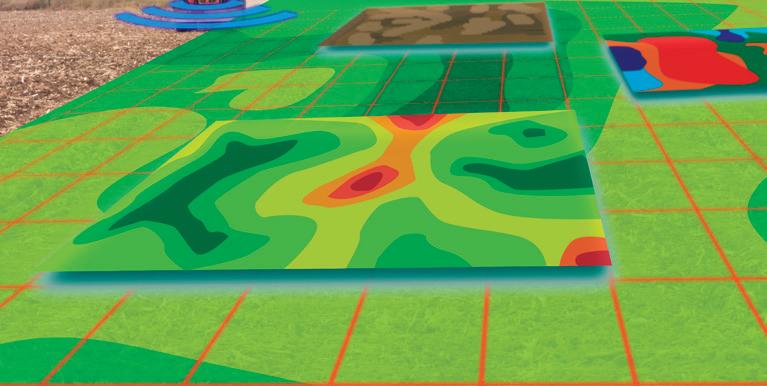

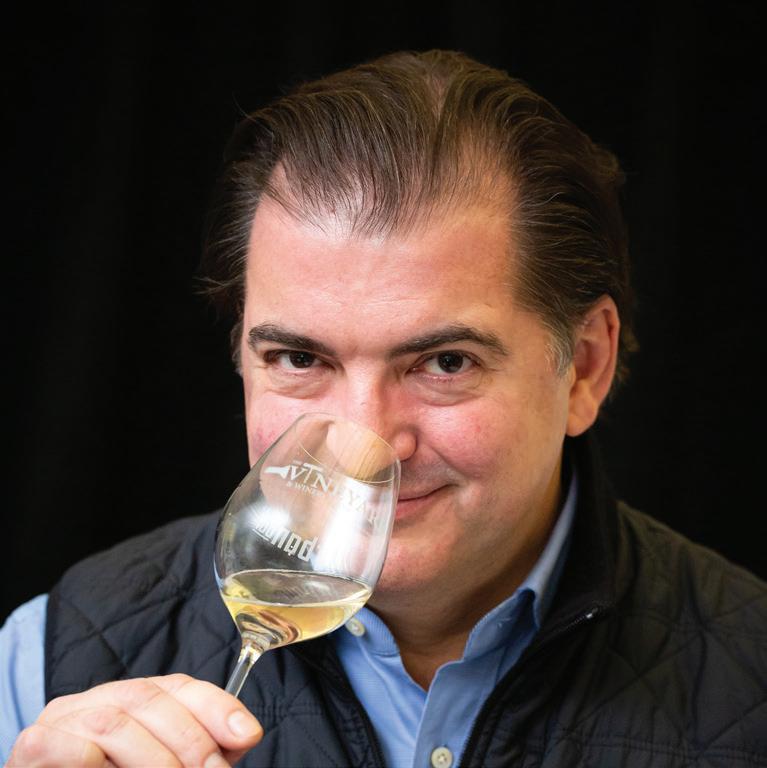


and not previously published. Where photographs are included, which are not the property of the contributor, permission to reproduce them must have been obtained from the owner of the copyright. The editor cannot guarantee a personal response to all letters and emails received. The views expressed in the magazine are not necessarily those of the Editor or the Publisher. Kelsey Publishing Ltd accepts no liability for products and services offered by third parties. Kelsey Media takes your personal data very seriously. For more information on our privacy policy, please visit https://www.kelsey.co.uk/privacy-policy/ If at any point you have any queries regarding Kelsey’s data policy you can email our Data Protection Officer at dpo@kelsey.co.uk globe-asia vineyard.ed@kelsey.co.uk twitter @VineyardMagGB facebook VineyardMagGB NEWS
Success in Scandinavia
Distinguished visitors at the Vineyards of Hampshire press and trade tasting 14 Exciting and unique wines at the Welsh Wine Showcase 18 £50k grower grant announced REGULARS
Posing with alcohol Women in Wine London. 26 Matthew Jukes Middle aged.
The agronomy diary Picking out the SFI options.
The vine post The importance of mapping before planting.
Education Visiting wineries is a key component of degree courses at Plumpton College.
Representing you WineGB team changes. 65 Machinery The new New Holland Stage V T4 Speciality tractor is proving as popular as ever. 66 Machinery advice and tips Fighting frost in the vineyard. FEATURES 11 Revolutionary crop protection Innovative frost management project for the British wine industry secures government funding. 21 Uncorking success Key legal considerations for launching your own winemaking business. 38 A viticulturist's diary Choice of rootstocks can influence the crop 48 Exploring wine culture Where are the opportunities for growth and expansion in the UK wine tourism market?
cover image: Pinglestone Estate © Martin Apps, Countrywide Photographic iti t i ts in G t B t in VI N E YAR D www.kelsey.co.uk
8
12
16
34
36
45
46
Front
CONTENTS

Features
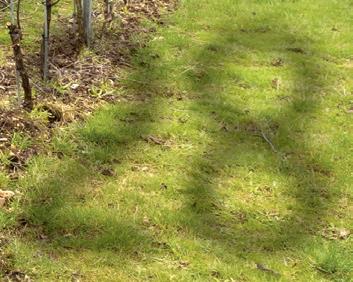
28
Expect the unexpected A visit to Pinglestone Estate in Hampshire proved enlightening.
42
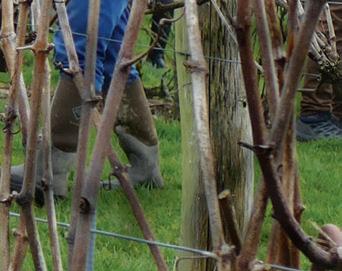

Pruning competition
The annual WineGB Pruning Competition is a great opportunity for viticulturists from the UK to get together to celebrate the art of pruning.
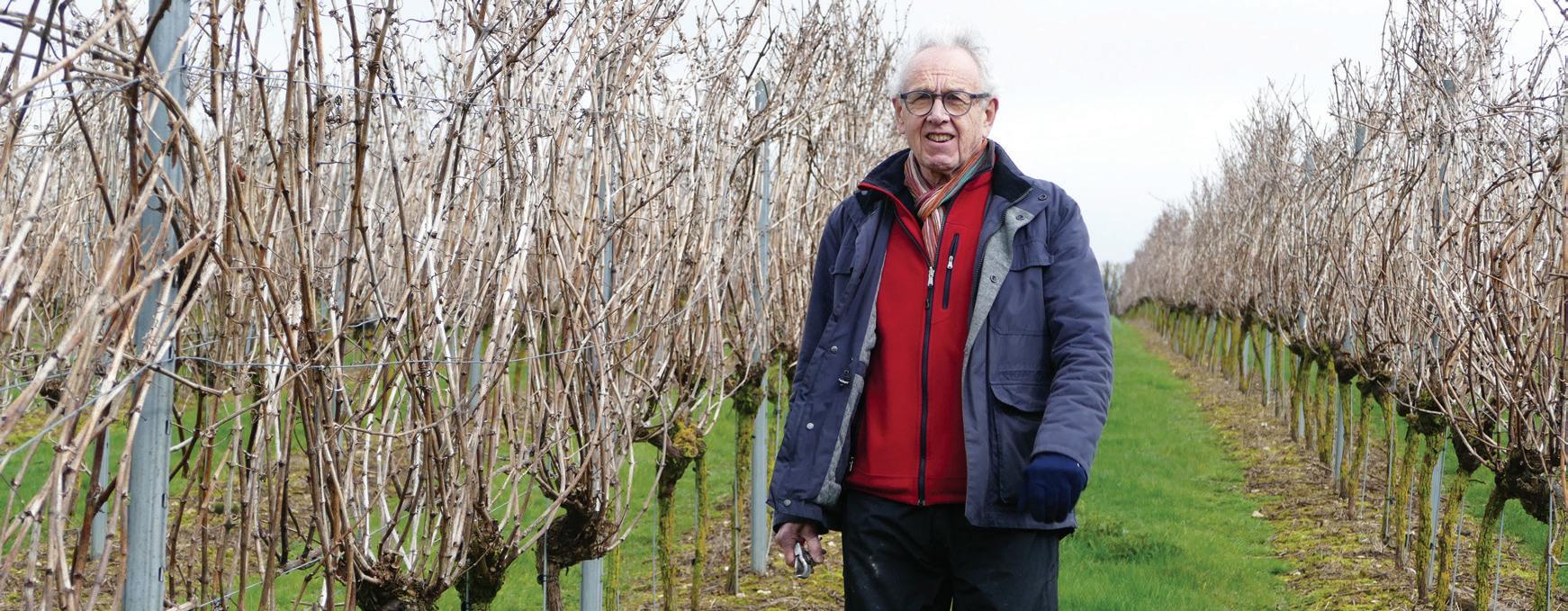
Written from experience
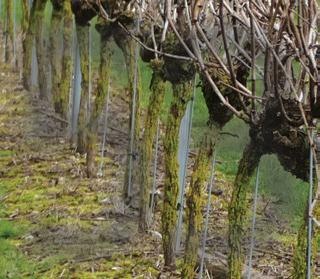
53
Introducing our new contributor, Stephen Skelton.
56
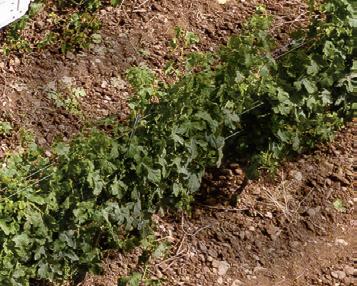

Vitifruit Equipment
It would be difficult to find a machinery supplier with more experience of viticulture than David Sayell, one half of the highly respected Edenbridge, Kent-based Vitifruit Machinery.











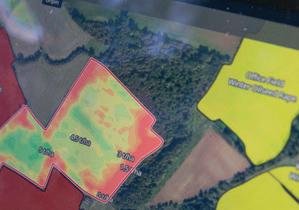



RFrom the editor







"You can’t stay in your corner of the forest waiting for others to come to you. You have to go to them sometimes." A.A. Milne – Winnie the Pooh



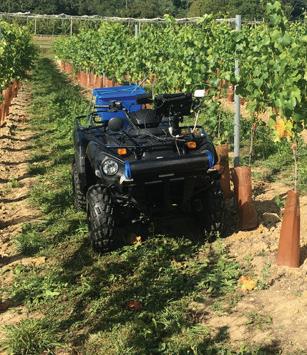











In an industry that can sometimes require long solitary hours, be it in the winery or the vineyard it was exciting to have a month packed with events that brought people together.


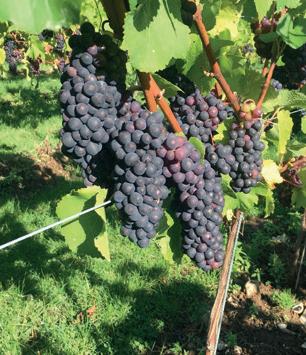

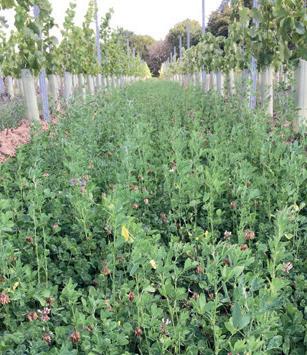





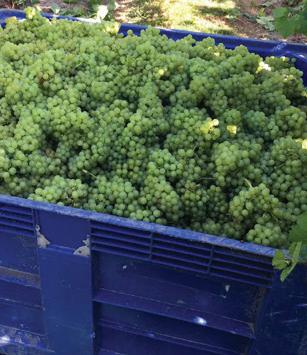
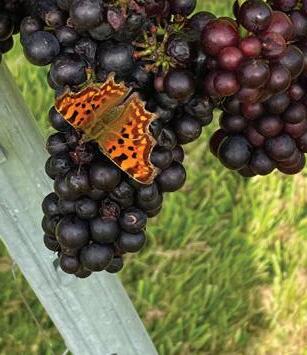





The WineGB pruning competition (page 42) took place in Dorset moving to the west country for the first time. There was a great atmosphere with competitors coming from both far and near and it was encouraging to see that the change of location had encouraged some first time entrants. Taking place in the middle of March as pruning comes to a close competitors (who have been honing their skills for months), judges and spectators all came together to celebrate the hard work that takes place in vineyards across England and Wales.


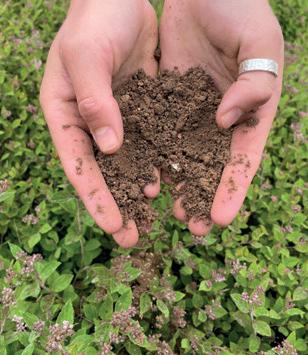

The hotly contested event provided something invaluable – a sense of community into which everyone was welcomed. I would encourage more people to get involved in this once a year celebration of vineyard skills. Looking forward to next year there has already been some speculation as to where the competition might be held.
Another event on this theme of coming together was the Welsh Wine Showcase (page 14) held for the first time at the London Welsh Centre. It was heartening to see so many from all areas of the wine industry at the event and as I left I found the atmosphere of positivity had rubbed off (even a quick jog to catch the almost departing train did nothing to dampen this mood).
These events have made me reflect on how good it is to be part of a community and how important it is to come together to chat, be inspired and make lasting friendships. Both the vineyard and winery are busy places but taking the time to be part of events such as these can bring a renewal of energy and enthusiasm that you didn’t know you needed.
6 6 Send your thoughts and comments by email to vineyard.ed@kelsey.co.uk
APRIL 2024 | VINEYARD










ONE VINE AT A TIME VINEWORKS HAS BEEN SUPPORTING UK VINEYARDS SINCE 2006 FOR MORE INFORMATION CONTACT: 01273 891777 VINE-WORKS.COM SALES@VINE-WORKS.COM VineWorks has been supporting UK vineyards since 2006 Specialising in: • Vineyard Establishment • Vineyard Services • Vineyard Shop • Fruit Brokering For MORE INFORMATION CONTACT: 01273 891777 vine-works.com sales@vine-works.com ONE VINE AT A TIME SPECIALISING IN: • VINEYARD ESTABLISHMENT • VINEYARD SERVICES • VINEYARD SHOP • FRUIT BROKERING VineWorks has been supporting UK vineyards since 2006 Specialising in: • Vineyard Establishment • Vineyard Services • Vineyard Shop • Fruit Brokering For MORE INFORMATION CONTACT: 01273 891777 vine-works.com sales@vine-works.com ONE VINE AT A TIME
Success in Scandinavia
Kent based Simpsons’ Wine Estate are flying the flag for English wine in Scandinavia with their wines now available in Sweden, Finland and Norway.
Export now makes up 45% of the winery’s overall turnover, with Norwegian sales being one of the main contributors.
Norway accounts for 63% of Simpsons’ total exports, and over a quarter of overall sales. Flint Fields Blanc de Noirs and Gravel Castle both have a fixed listing in the Monopoly shops and a report from the Monopoly in summer 2023 showed four SWE wines in the Top 10 performing cuvées over the previous 12 months (three still wines –Simpsons’ Railway Hill Rosé, Simpsons’ Gravel Castle Chardonnay and Simpsons’ Rabbit Hole Pinot Noir – and one sparkling – Simpsons’ Flint Fields Blanc de Noirs sparkling).
Earlier this year in Finland, Simpsons’ Rabbit Hole Pinot Noir 2022
Simpsons' at Embassy tasting
launched in 70 Alko stores (via the Finnish Monopoly). And across the border in Sweden, Simpsons’ White Cliffs won the Blanc de Blancs sparkling tender with the Systembolaget Monopoly at the end of last year and will launch online and in their shops on 8th March 2024.
Comments Charles Simpson, “Our team has just returned from a very successful trip to Denmark and Sweden, pouring wines with our importer and at two WineGB events for members of the wine trade and for consumers. We’re delighted to see such a thirst for English wine in these markets and it was a brilliant experience to be there with other English wineries showcasing the diversity of English wine that is now available.”
Simpsons’ Wine Estate team exhibited at Prowein for the first time, showing selected wines from Simpsons' portfolio. They also joined eleven other leading English wine brands on the WineGB stand in Düsseldorf.
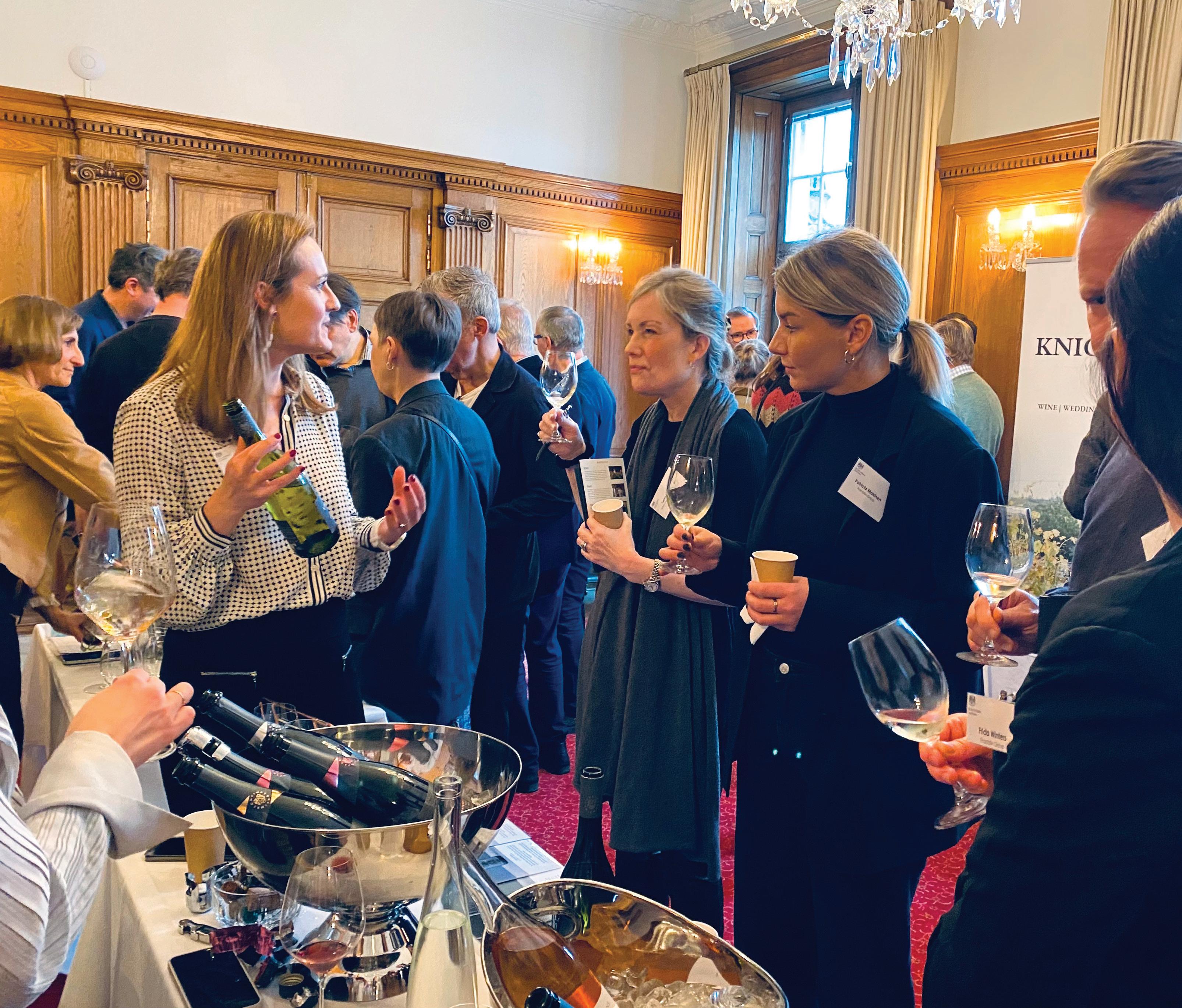
8 8 NEWS
APRIL 2024 | VINEYARD
Photo: British Embassy Stockholm
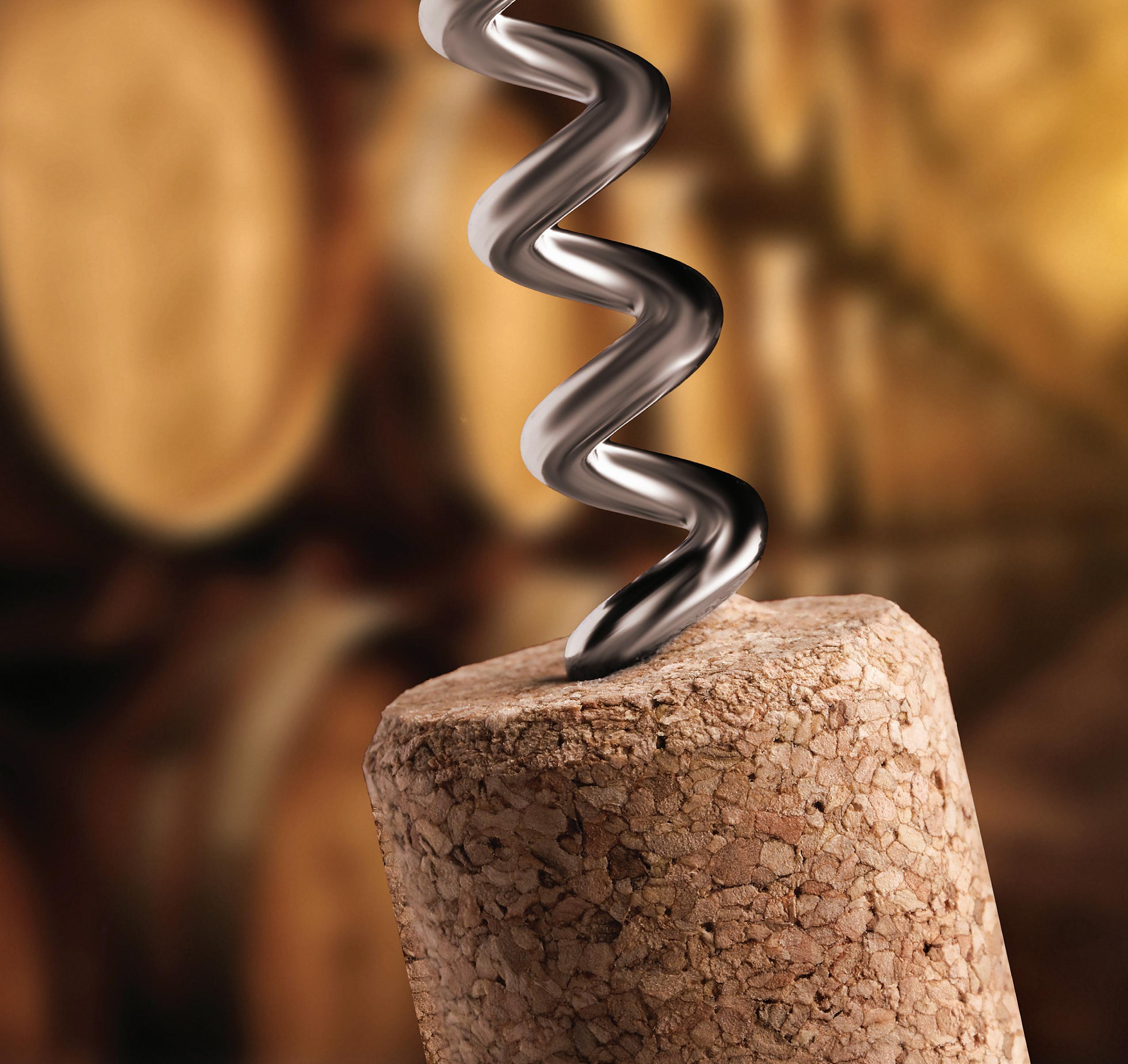
Things aren’t easy right now. But you can sure to minimise risks to your profits so that you can work towards a great end-result.
We’ve a wide portfolio to help you manage key disease threats, particularly downy mildew, with specialist vine fungicides Cuprokylt and Frutogard. There are also EAMU options for powdery mildew, Botrytis and more. And you’ve the support you need: our horticulture and viticulture team can provide expert advice, not just on products, but effective IPM.
It’s all in our comprehensive guide. Rely on it for valuable solutions at any time.
guide

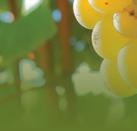

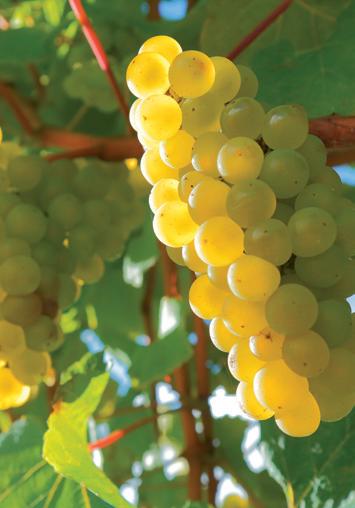
with
Grow a corker this year,
our help to control diseases.
Use plant protection products safely. Always read the label and product information before use. For further information with regard to the warning phrases and symbols refer to the product label. Cuprokylt® (MAPP 17079) contains copper oxychloride and is a registered trademark of Industrias Quimicas Del Valles, S.A. Frutogard® (MAPP 19105) contains potassium phosphonate and is a registered trademark of Certis Belchim BV. Vintec® (MAPP 20311) contains Trichoderma atroviride strain SC1 and is a registered trademark of Bi-PA NV/SA. Amylo-X® (MAPP 17978) contains Bacillus amyloliquefaciens subsp. plantarum strain D747 and is a registered trademark of Mitsui AgriScience International S.A./N.V. Cosine® (MAPP 16404) contains cyflufenamid and is a registered trademark of Nippon Soda Co. Ltd. Karma® (MAPP 16363) contains potassium hydrogen carbonate and is a registered trademark of Certis Belchim BV. Contact Certis Belchim on 0845 373 0305, e-mail infoUK@certisbelchim.com or visit certisbelchim.co.uk. © Certis Belchim 2024. Successful vine-growing Your guide to tackling pests and diseases CUPROKYLT® FRUTOGARD® VINTEC® AMYLO-X® COSINE® KARMA®
Get your vine-growers’
at www.certisbelchim.co.uk/viticulture

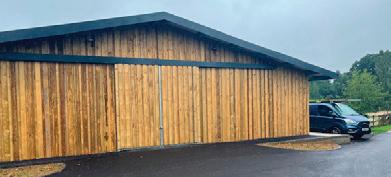
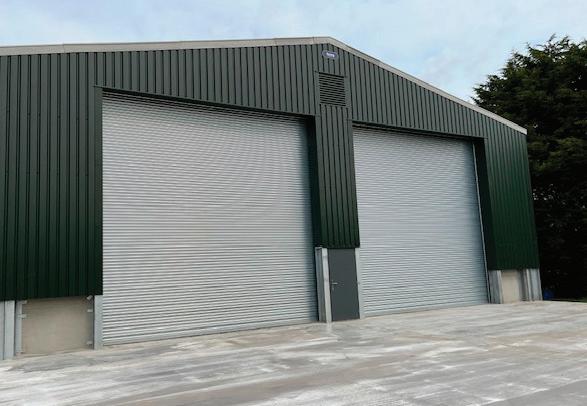






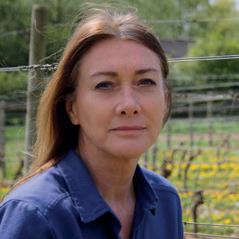


























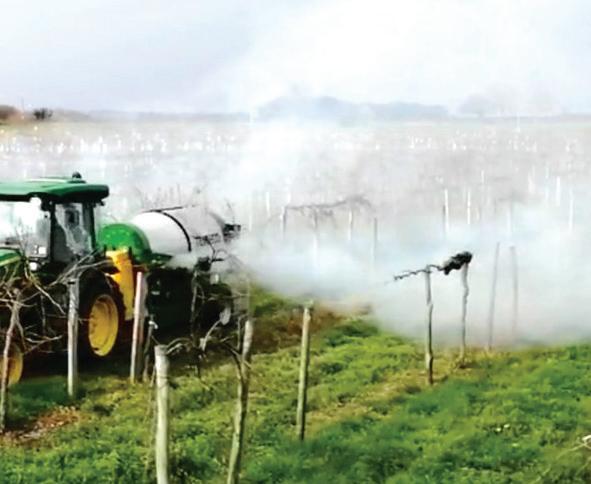





























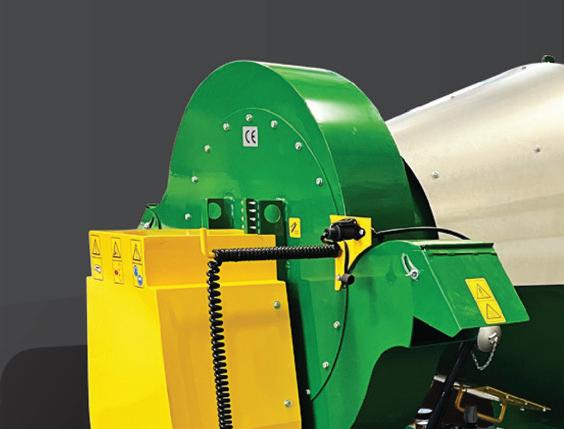
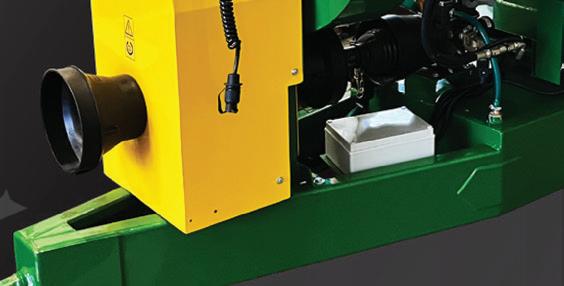
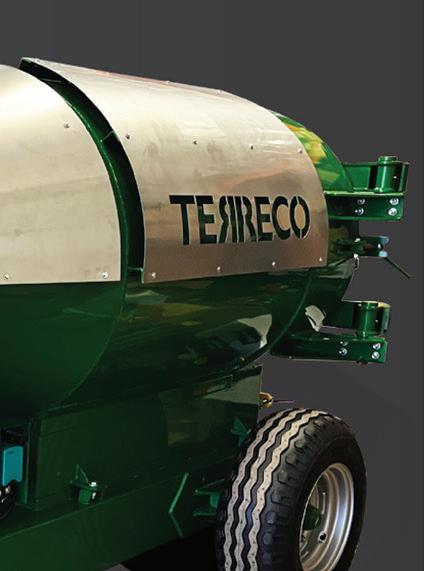




10 10 www.agrovista t: 0115 939 0202 e: enquiries@agrovista.co.uk @AgrovistaUK @AgrovistaFruit 02/23 Specialist Vineyard Agronomy From vineyard establishment through to post-harvest management, our dedicated agronomists are able to ensure that you maximise your yields of top quality fruit, whilst satisfying the ever more complex demands of legislation, protocols and consumer expectation. Contact us for more information. “Working closely with our growers, we use integrated pest management to optimise fruit quality and yield.” Penny Meadmore Viticultural Consultant for Agrovista UK Office 01825 371500 � info@formabuild.co.uk www.formabuild.co.uk 100% British designed & built Over 35 Years experience Site visits Call to arrange a site survey formabuild.co.uk STEEL FRAMED BUILDINGS, RECLADDING, REPAIRS AND GROUNDWORK � � @formabuild.co.uk @info_forma We specialise in the supply and construction of steel framed buildings. We have a wealth of knowledge and experience in the wine and fruit production sector to complete your new facility Based in the heart of Sussex, covering the South East. Sussex builders since at least 1605. Forma offer all aspects of steel framed construction and cladding together with groundworks and electrical fit out if required. order yours now for delivery this season! Kirkland UK, Griffins Farm, Pleasure House Lane, Maidstone, ME17 3NW www.kirklanduk.com | info@kirklanduk.com | 01622 843013 The Terreco Frost Protector diffuses fog; a mixture of smoke and water up to a 25m distance each side. Burning time of 3-5 hours with each pass lasting up to 20 minutes. Vitigel – the anti-freeze solution APRIL 2024 | VINEYARD
Revolutionary crop protection
Innovative frost management project for the British wine industry secures government funding.
An innovative frost forecasting and management project for grape vines, with the potential to revolutionise frostrelated crop protection, has secured over £300,000 in funding from Innovate UK and the Department for the Environment Food and Rural Affairs (DEFRA).
Called Smarter Forecasting, Communication and Management of Frost Risk in Vineyards, the project will aid the development of domestic viticulture, the UK’s fastest expanding agricultural sector. It will create hyper-localised, site-specific, and variety-specific frost risk forecasts, enabling vineyard managers to make more informed, targeted, and sustainable choices when responding to frost events.
The project is being led by sensor manufacturer Terraprima and agri-tech facilitator Agri-Epi Centre, and supported by land-based education provider Plumpton College, vineyard and winery consultancy Vinescapes, vineyard monitoring solution Vinewatch, weather forecasting provider WeatherQuest, and Wines of Great Britain (WineGB), the trade body for the English and Welsh wine industry.
Sensors installed in Dillions Vineyard (West Sussex), JoJo’s Vineyard (Oxfordshire), Tanhurst Estate Vineyard (Surrey), Plumpton College (East Sussex), Ridgeview (East Sussex), and Quarry Wood (East Sussex) will be used to assess frost risk at a micro level. By combining weather forecasting models with mapped frost risk assessments and real-time on-site measurements from the sensors, the project will launch site-specific forecasts of both frost risk and frost type.
This site-optimised forecasting will subsequently be available through an app, which will deliver frost alerts to mobile devices.
The number and severity of UK spring frost events causing vine damage varies from year to year and in bad years can contribute to significant yield loss. With climate change leading to warmer springs and an earlier budburst (the time when vines are at risk of damage), UK vineyards are expected to remain vulnerable to impactful frost events. This project will enable vine growers to have a more
focused approach to protecting their crop by only concentrating on both the specific areas that have been identified as being at risk and the intervention techniques which are best suited to the forecast conditions.
The UK currently has just under 4,000 hectares under vine and this is projected to hit 7,600 hectares by 2032, according to figures published by WineGB.
The project will last for two years, and the grant was secured through Innovate UK’s ‘Farming Futures: Environmental Resilience, Feasibility’ funding competition, a collaboration between the Department for Environment, Food and Rural Affairs (Defra) and the UKRI Transforming Food Production Challenge.
Commenting on the project, Ben Gillingham, Managing Director of Terraprima, said: “This important and exciting project brings together some of the leading players in UK viticulture to improve the sector’s resilience against one of the greatest yield threats we face. The Terraprima Ladybird is ideal for accurately capturing the highly localised climate data required for accurate frost forecasting and we look forward to helping protect UK vines both during and after the project.”
Eliot Dixon, Head of Agri-Tech Engineering at Agri-Epi Centre, added: “Through this project, we will be providing a vital early warning of frost risk to vineyard managers, at a precision never achieved previously. This uses a fusion of weather modelling, IoT sensors and remote sensing to create a robust and commercially relevant solution that shows the very best of UK agri-tech.”
Sam Linter, Director of Wine at Plumpton College, said: “Spring frost is a significant threat for many grape growers in the UK, requiring understanding on forecasting and management options. Being involved in such an innovative frost management project, bringing together different approaches and modelling systems, gives our students exposure to the current and developing

technologies. Plumpton College is proud to be associated with this research in progress that supports the productivity of the industry and the students’ future careers.”
Dr Alistair Nesbitt, CEO of Vinescapes, commented: “This funding is excellent news for the sector. Through this project we will bring together a fantastic skill set to try and develop tools that growers in the UK will benefit from in both forecasting and managing frosts. We know early season frost risk is a significant concern for many producers and it’s being enhanced with climate change and an increase in climate variability, but the good news is that with the right tools and equipment, we know the risk can be reduced and managed – and that’s what we aim to support through this project.”
Sebastian Holmes, Operations Director at Vinewatch, said: “Using established technology in an innovative way to help growers to monitor and mitigate the perils of frost is exciting. We have been developing this approach for some time and we’re delighted to see it finally becoming reality. Our aim is to provide growers with the best precision tools they can get to let them counter an extremely damaging and mostly unpredictable threat to their productivity, sales and profits.”
Marcus Krumins, Data Scientist at WeatherQuest, said: “Our project is developing a service which forewarns the location, intensity and type of any anticipated vineyard frost event, calibrated to actual vineyard temperature measurements. We’ll support a step-change in UK vineyard frost resilience and help vineyard teams optimise which frost mitigation technique to choose.”
Phoebe French, Membership Engagement Manager at Wines of Great Britain, said: “Frost events can significantly affect grape yields and require vineyard managers to be on alert throughout the night, often for days on end. This project will give vine-growers greater control of their frost management and hopefully their sleep schedule!”
11 DESKTOP www.vinescapes.com ENVELOPE info@vinescapes.com phone-alt 01306 733960 11
APRIL 2024 | VINEYARD
Distinguished visitors
The Vineyards of Hampshire press and trade tasting was once again a resounding success. On the 20 February members from all aspects of the wine industry came together at 67 Pall Mall to enjoy the wines of Hampshire. It was great to see so many enjoying the regional aspects of English wine at this event.
All the members of Vineyards of Hampshire were in attendance with Black Chalk, Danebury Vineyards, Exton Park, The Grange, Hambledon, Hattingley Valley, Louis Pommery England and Raimes welcoming the numerous visitors.
Regional tasting events provide the perfect atmosphere to get the wine conversation going with people from all aspects of the trade with the central location of this event in London allowing plenty of visitors to attend.
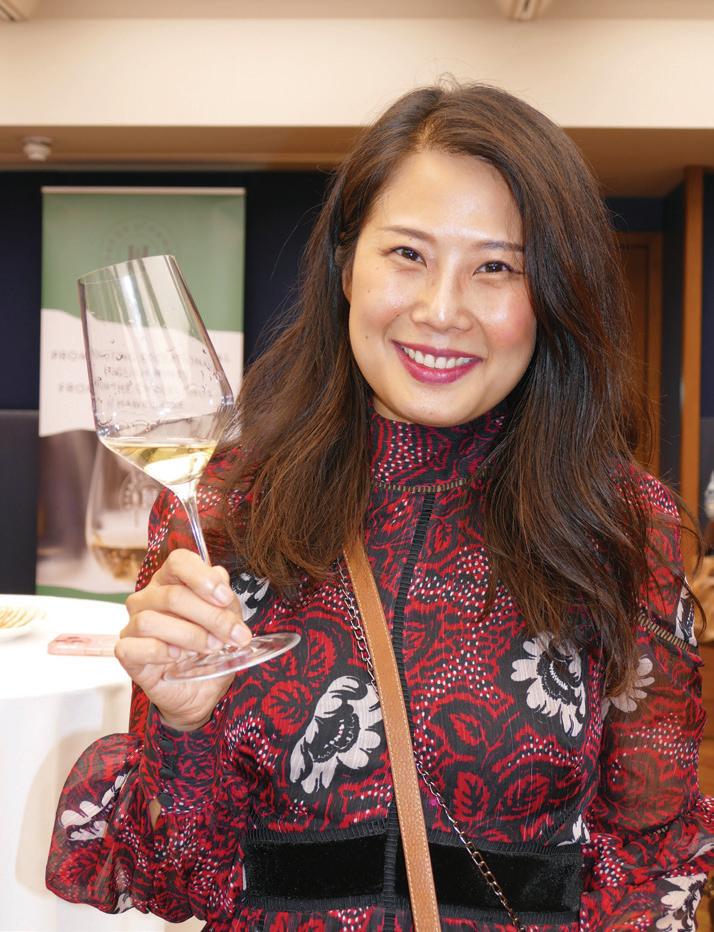
Vineyard magazine was able to catch up with some of the distinguished visitors to the event including Oz Clarke and Decanter wine judge Vidya Narasimhan. Speaking to Kelly Liang who is a content creator and works with many wine businesses internationally was fascinating as she is also writing a novel with wine as one of the central themes. A truly marvellous way to blend two fascinating creative disciplines.
The importance of such events cannot be overstated. It is an opportunity not just to taste wines but for the trade to hear the latest news and catch up with producers. Really enabling the buyers to engage with the true stories behind the wines. It was a perfect opportunity to talk to Augusta Raimes and find out about the recently opened tasting room and to talk with Caroline Stevens of Danebury Ridge about their new vineyard manager.

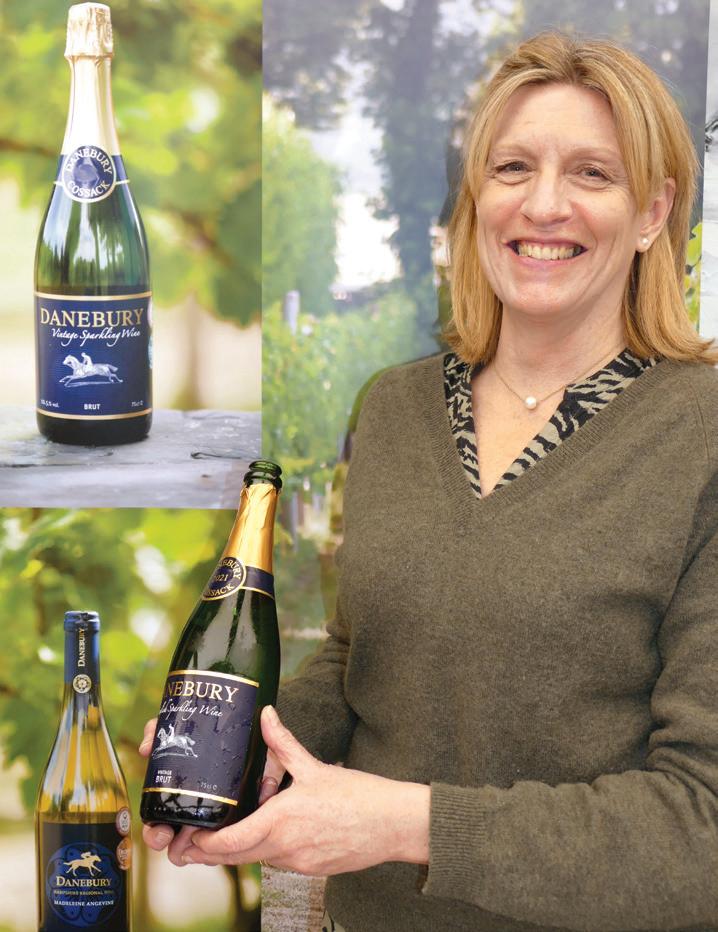

12 12
VINEYARDS OF HAMPSHIRE PRESS AND TRADE TASTING
Zoe Driver, assistant winemaker at Black Chalk with Oz Clarke
Caroline Stevens of Danebury Ridge
Kelly Liang


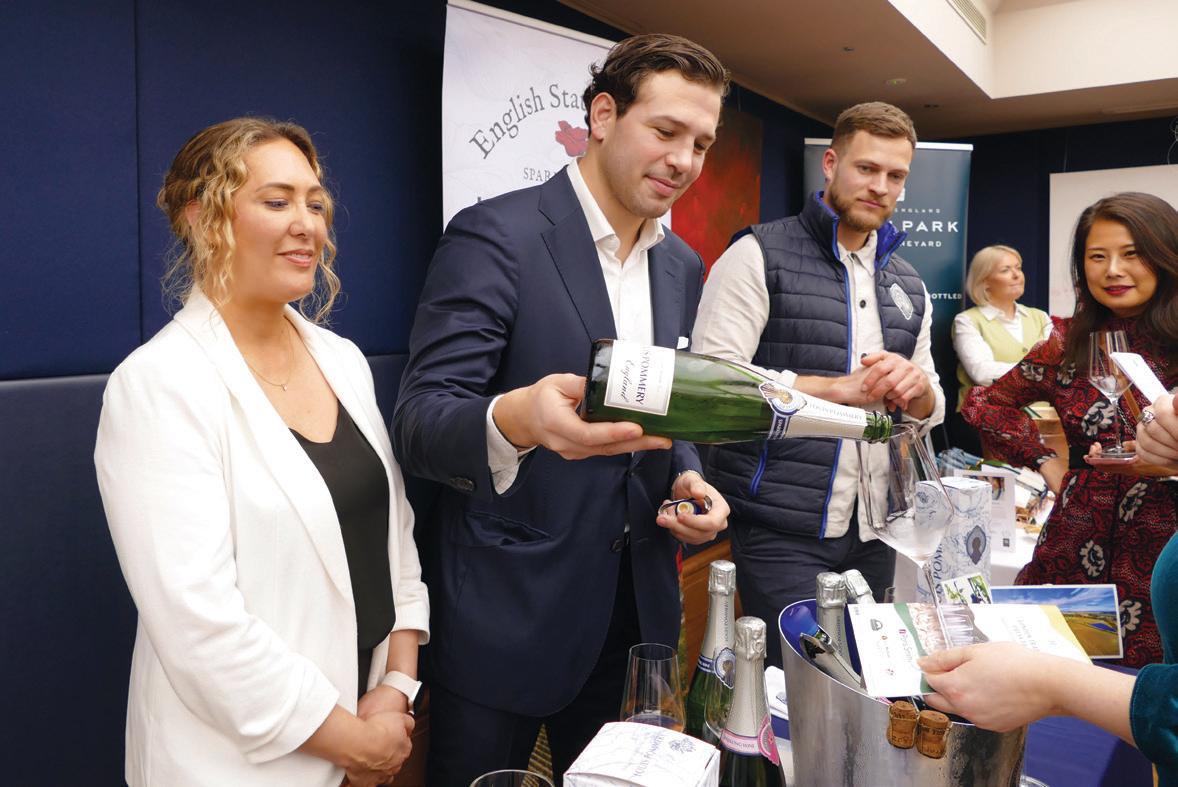
The wines were of course sensational and there were a few wines that were having their first commercial outing. One wine that had not been fully released was the Exton Park Blanc de Noirs Vintage 2014. This wine due for official release in March 2024 had yet to go through the full labelling process so it really was a sneak peak. These yet to be released wines create a natural buzz of enthusiasm at trade and press events. With seven years lees aging and a retail price point of £65 this adds another superb sparkler to the Exton Park portfolio. Louis Pommery England were also able to offer those in attendance a tasting of the new sparkling Rosé that is made with estate grown fruit and based predominantly on the 2021 harvest.
The successful event brought producers, press and trade together to enjoy and discuss the unique qualities of the Hampshire wine region and the momentum will hopefully carry forward as we look to the next growing season and beyond.
Lasham

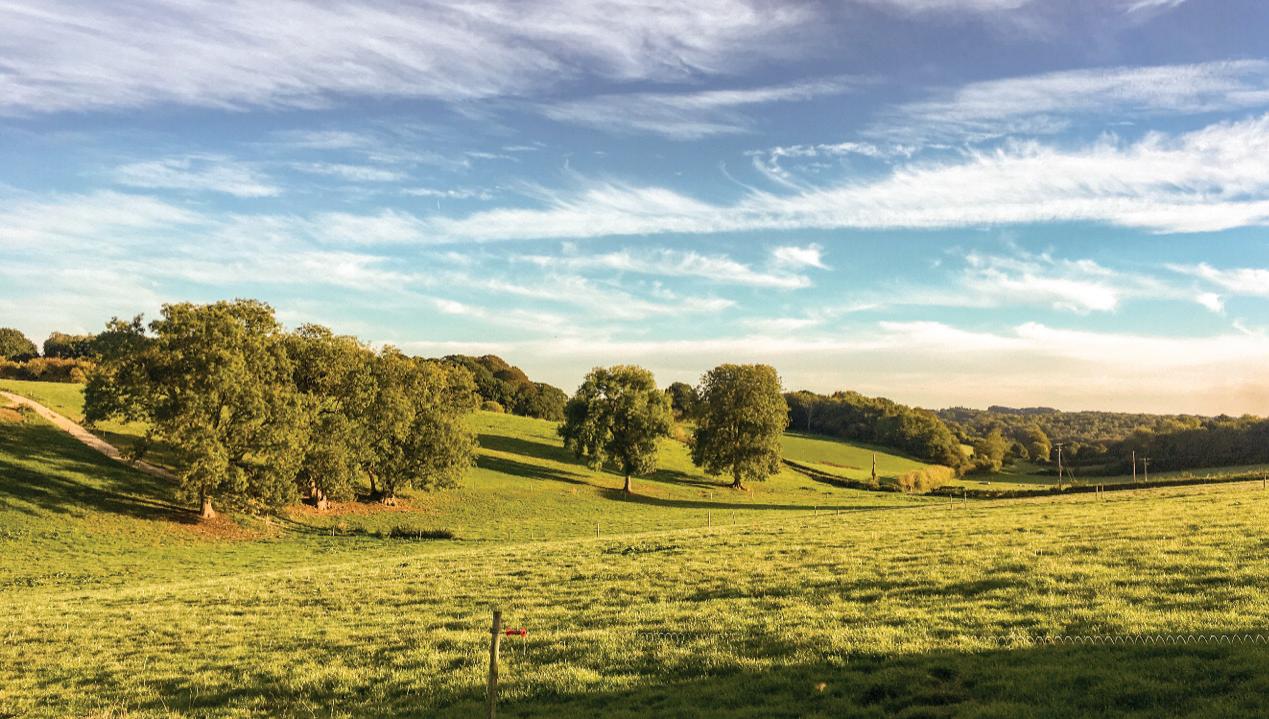
TEMPERATURE & HUMIDITY CONTROL
Our facility maintains a consistent temperature and humidity level.

BONDED WAREHOUSE
Store your wines securely without incurring custom duties or taxes.
Full-time CCTV and alarm system.
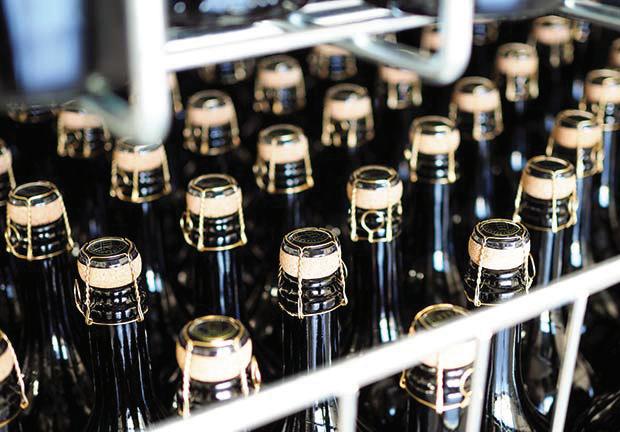
13 13
Alice Griffiths of Posing with Alcohol
SECURE STORAGE SPACE
FLEXIBILITY AND SCALABILITY
storage plans for all
and
07557 539458 cameron.marshall@lashamfarm.co.uk New Farm House, Lasham, GU34 5RY
Flexible
types of storage types
durations.
Farm are a family run farm now offering state-of-the-art temperature controlled wine storage
APRIL 2024 | VINEYARD
LF
Exciting and unique
On 5 March 2024 the London Welsh Centre was host to the Welsh Wine Showcase event. This was the first time this event had been held in London and the interest in Welsh wine was obvious from the steady stream of visitors that attended the event.
With a truly vibrant feel the venue was continually welcoming a full cross section of visitors from members of the press and trade buyers to winemakers and wine professionals. It was great to see so many truly engaging with the producers and really investigating the unique feel of each of the wines.
With Wales now the home of 50 vineyards the event included established producers Ancre Hill Estates, Gwinllan Hebron Vineyard, Montgommery Vineyard, The Dell Vineyard, Vale Vineyard – Gwinllan y Dyffryn, Velfrey Vineyard, Whinyard Rocks and White Castle Vineyard. It
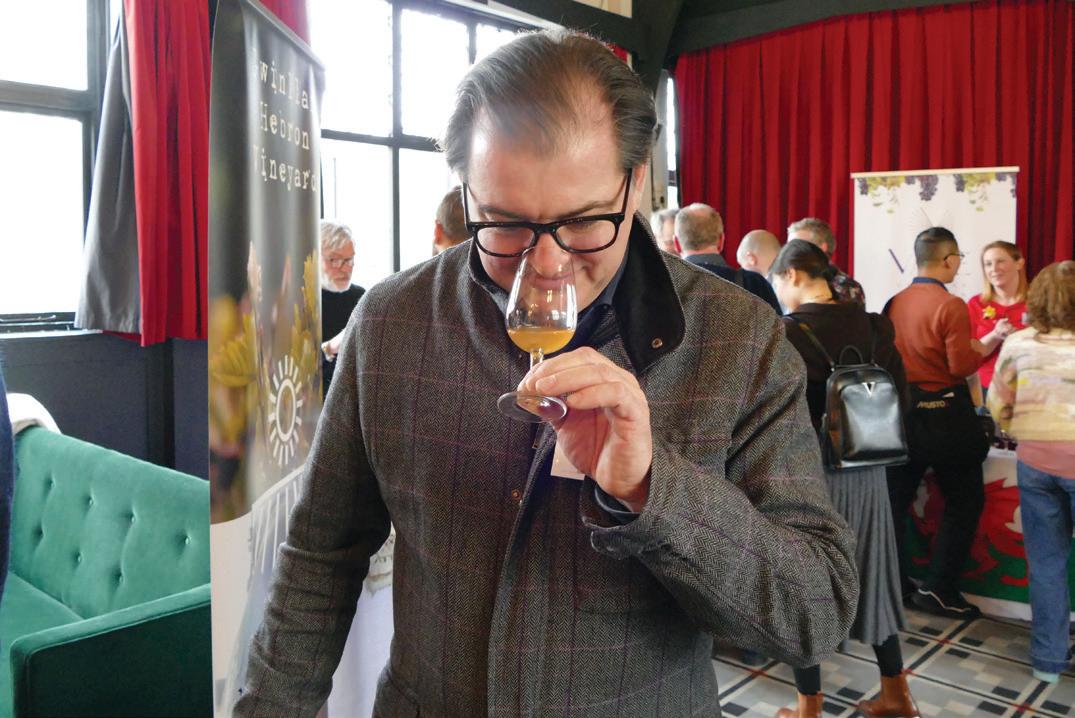
was also great to see representatives of newly planted vineyards that are yet to release wines such as St Hilary Vineyard in the Vale of Glamorgan that will launch a rosé in September 2024 alongside Chilled & Tannin Vines and Gwinllan Cae Popdy. With all these vineyards in attendance . The event was able to highlight that not only were each of the Welsh vineyards truly unique but even with a single producer the diverse nature of the varieties planted offers something impressive, exciting and unique for everyone. From the Biodynamic Orange Wine of Ancre Hill Estates, Col Fondo at The Dell Vineyard, Sparkling Red at Whinyard Rocks and a newly released rosé which is a fascinating blend of 85% Solaris and 15% Pinot Noir Précoce from Montgomery vineyard there was so much for the visitors to try that many stayed far longer than they had originally planned. Of particular note was the White Castle Cabernet
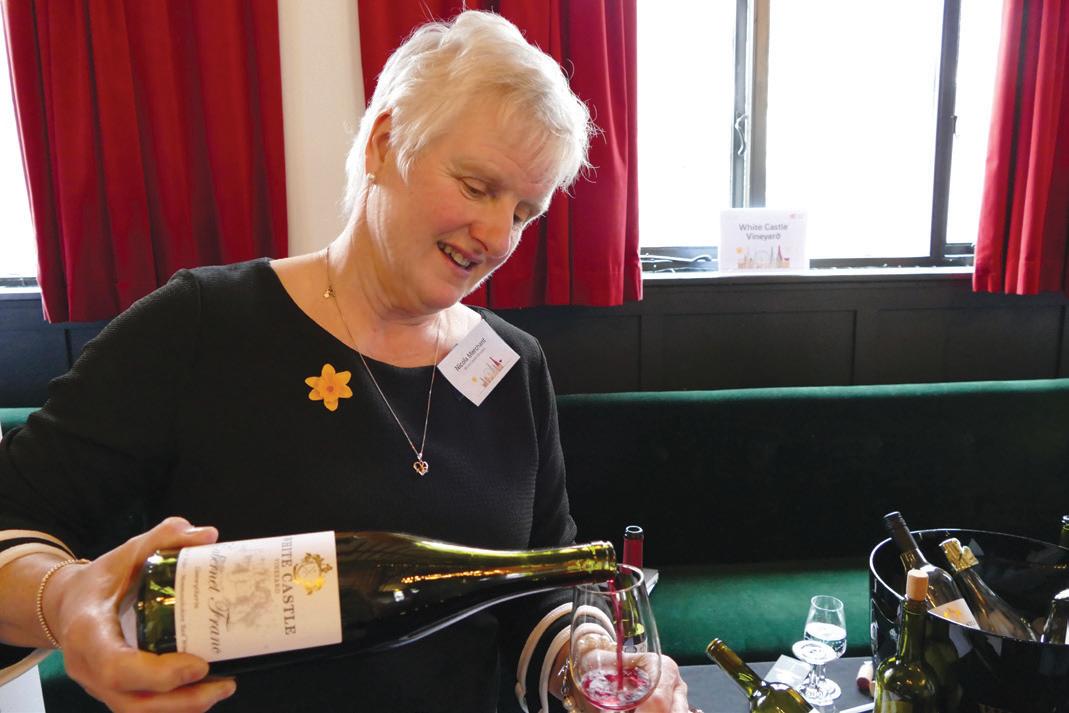
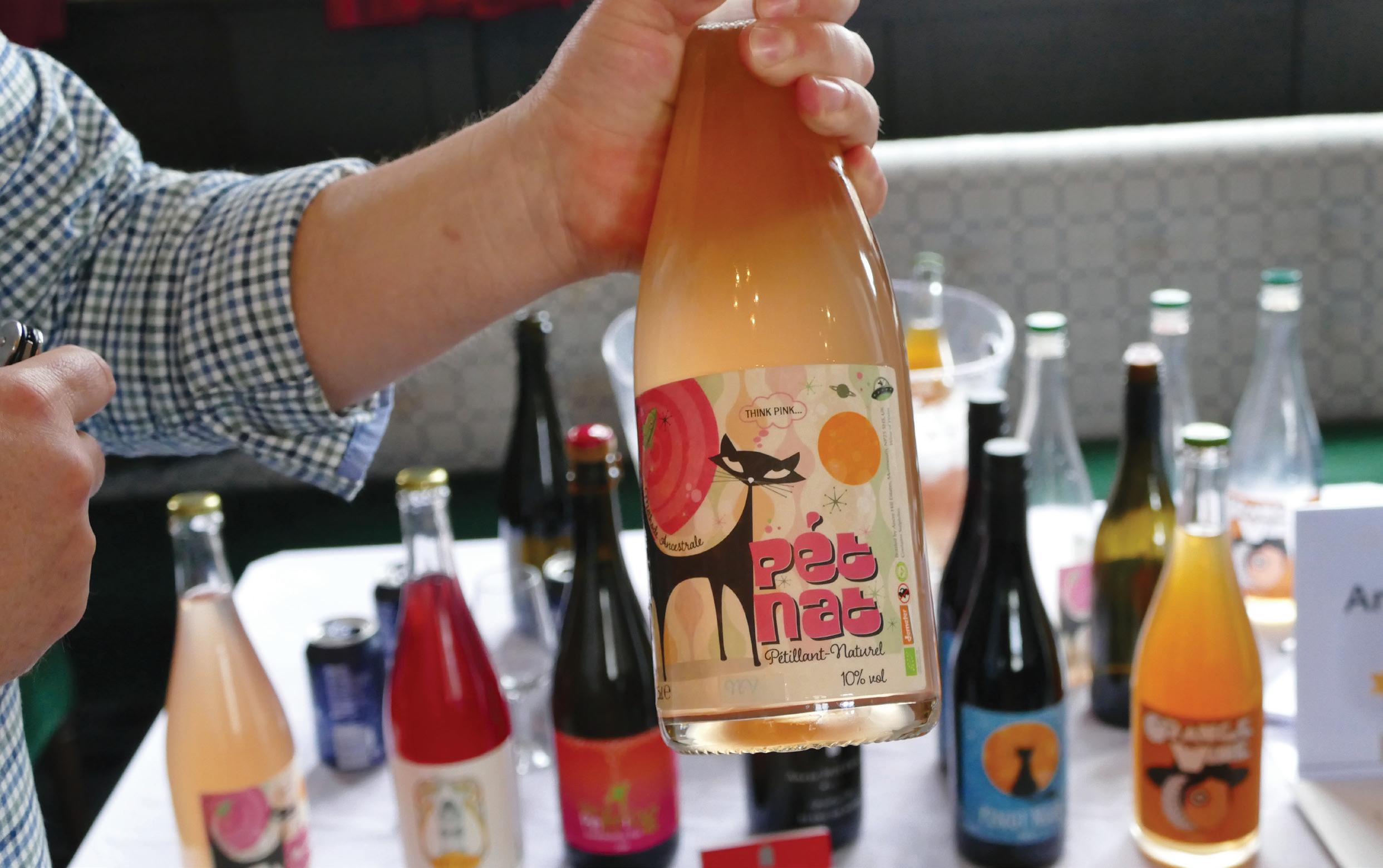
14 14
WELSH
SHOWCASE
WINE
Franc. Planted by Robb and Nicola Merchant this small area of vines has produced a limited release Cabernet Franc varietal wine – with under 300 bottles produced this was a special tasting experience.
Also part of the Showcase was a stand that sought to highlight the numerous products from Wales that have been granted Geographical Indication Status. The number of these speciality products is growing all the time but the current number stands at 20 with the latest edition being Welsh Single Malt which was granted PGI status in July 2023. Some of the products available to try included Welsh Laverbread (PDO) Anglesey Sea Salt (PDO), Welsh Caerffilli Cheese (PGI) and Welsh Leeks (PGI). This provided a real chance to spread the message about the premium products of Wales but also brought context to the excellence of Welsh Wine as part of the excellence of Welsh produce.
The event had an atmosphere that was captivating and hopefully there will be many future events that showcase Welsh wine at its most diverse and at its very best.
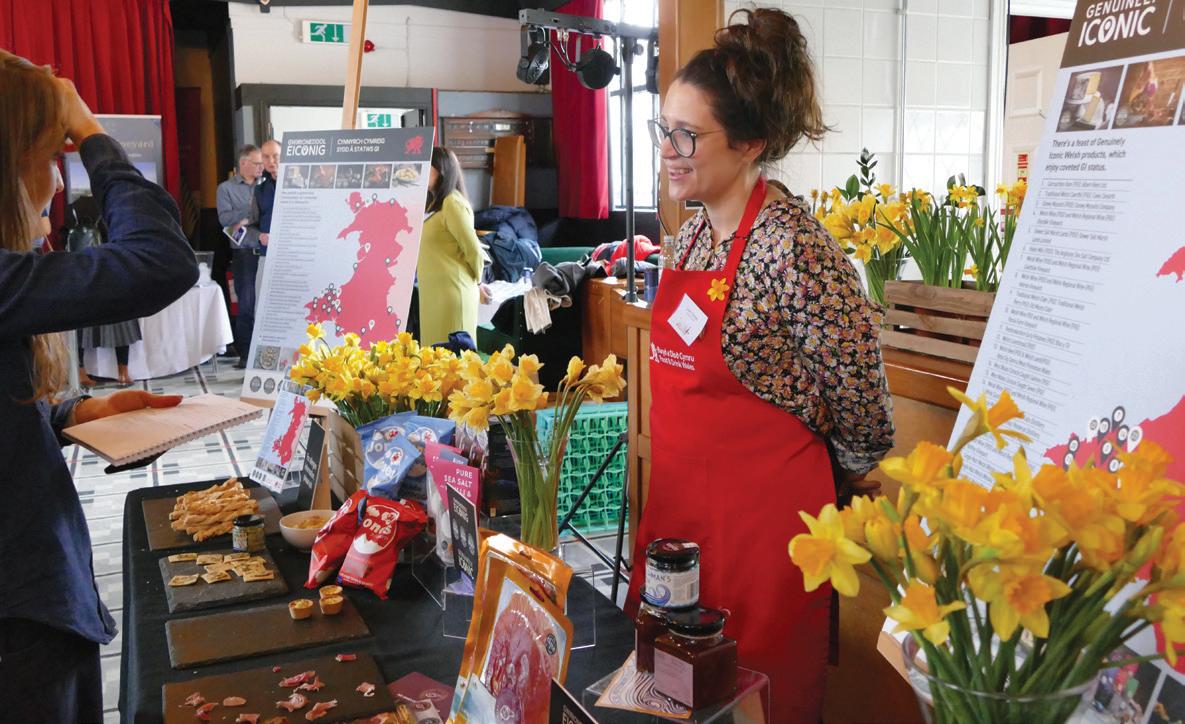
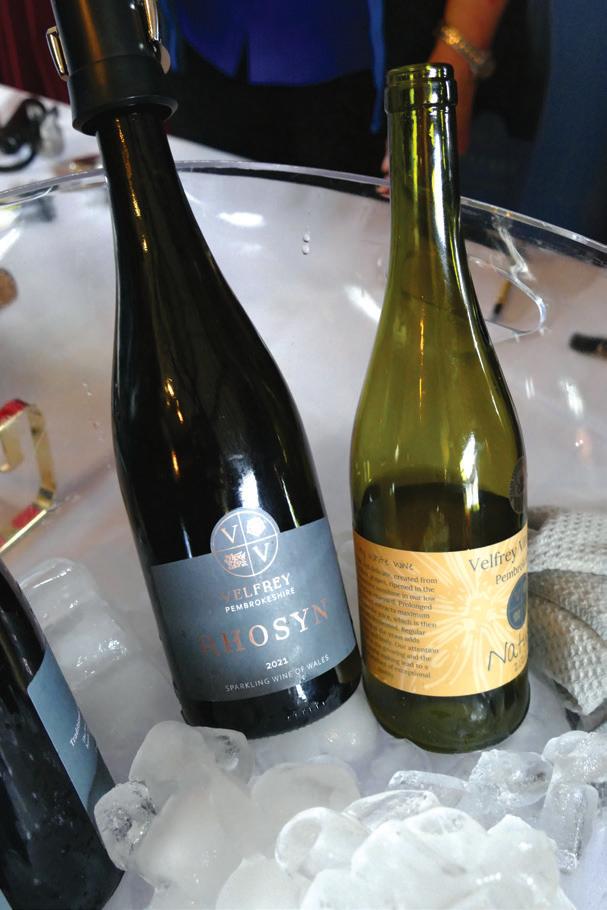

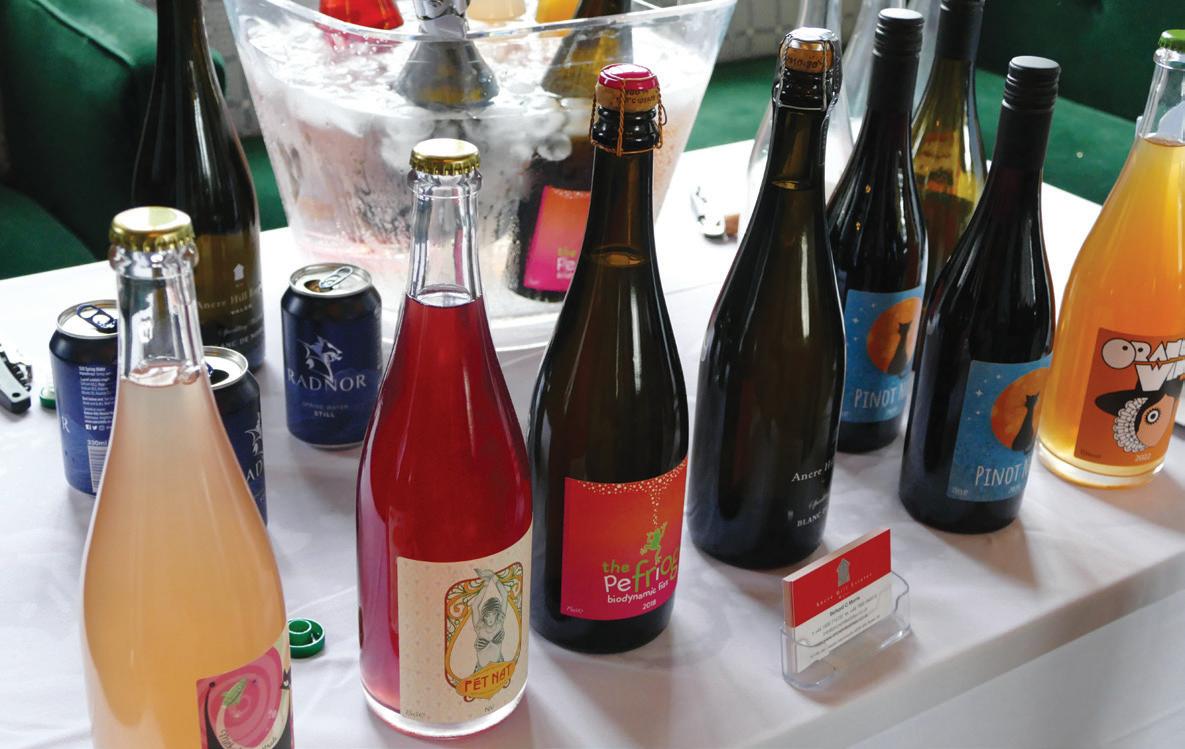

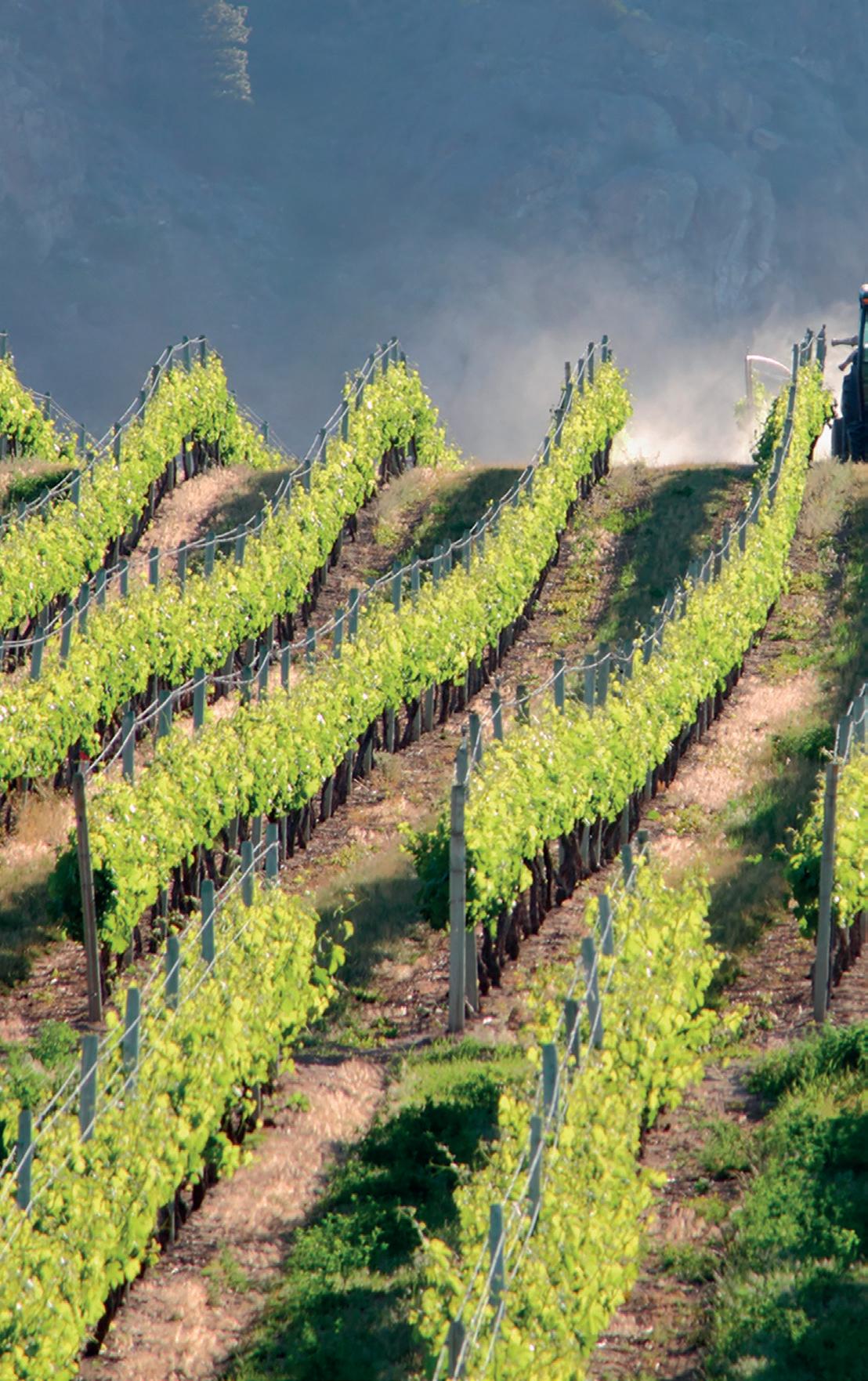

15 15
www.icl-growingsolutions.uk A combination of ICL Specialty Fertilisers advanced coating technology and specially selected granular fertilisers, makes Agromaster a controlled-release fertiliser the perfect choice for vines & topfruit. Ask your local distributor for details. Precision Nutrition for optimum results Contolled Release Fertiliser APRIL 2024 | VINEYARD
Women in Wine London
Vineyard Magazine will be following Alice Griffiths each month as she shines a spotlight on various events in the English and Welsh wine industry.
London Cru Urban Winery was the gracious host for the latest instalment of Women in Wine London. A leading wine industry networking group, providing opportunities to meet, share ideas and connect professional women across the city. Since September 2015 they have been producing creative ways to champion women in the wine industry.
Tucked away down in SW6, based in an old Victorian warehouse is London Cru. Our host Beth Brickenden, winery events manager at London Cru welcomed us with a glass of Pinot Gris Sparkling Rosé 2022. Bottled as per traditional method but disgorged early to maintain fruity zesty characters, such as ripe apricot, red berries and citrus. This Pinot Gris Rosé is a refinement of the PétNat style from the previous vintages. A firm favourite of the night, especially when combined with Mystic Bureks Balkan bakery offerings.
Combining women from all over the wine community including sommeliers, wine makers, marketing, sales and educators it was a fantastic opportunity to showcase this urban winery, the first in London with innovation at its very core value. A tour around the winery highlighted the use of state-of-the-art winemaking facilities, such as concrete and stainless tanks, French oak barrels and modern eggs.
London Cru is not just a winery, it also a social hub for the community hosting immersive tastings, tours, private and corporate events. These range from small fine dining experiences in the Barrel Room, to catered Tuscan style dinners, cabaret and street food.
Attended by a wealth of the English wine community including winemaker Emma Rice, Phoebe French from Wine GB and SWGB Ambassador Anne Jones.
Women in Wine London is a fantastic opportunity to meet and connect with fellow women working in the wine industry. Subscribe to their mailing list for latest information and to join for future events.

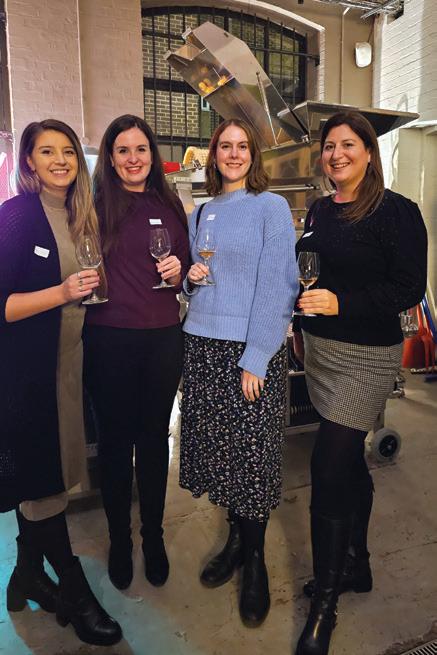
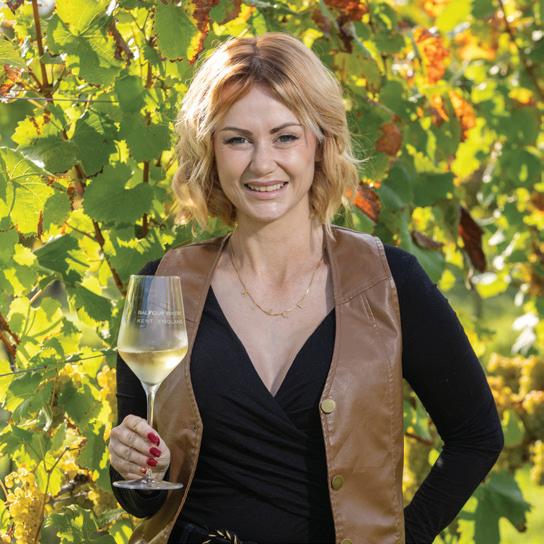
Alice Griffiths
Alice Griffiths is a wine communicator boosting the profile of English and Welsh Wine on social media, under the popular handle of Posing With Alcohol. Alice has worked within the agriculture industry for the past 20 years, spending time as a lecturer and a smallholder before discovering her passion for viticulture, winemaking and wine tasting.
Get in touch to have your events featured: ENVELOPE Posingwithalcohol@gmail.com
INSTAGRAM Alice can be found on social media under @posingwithalcohol on Instagram.
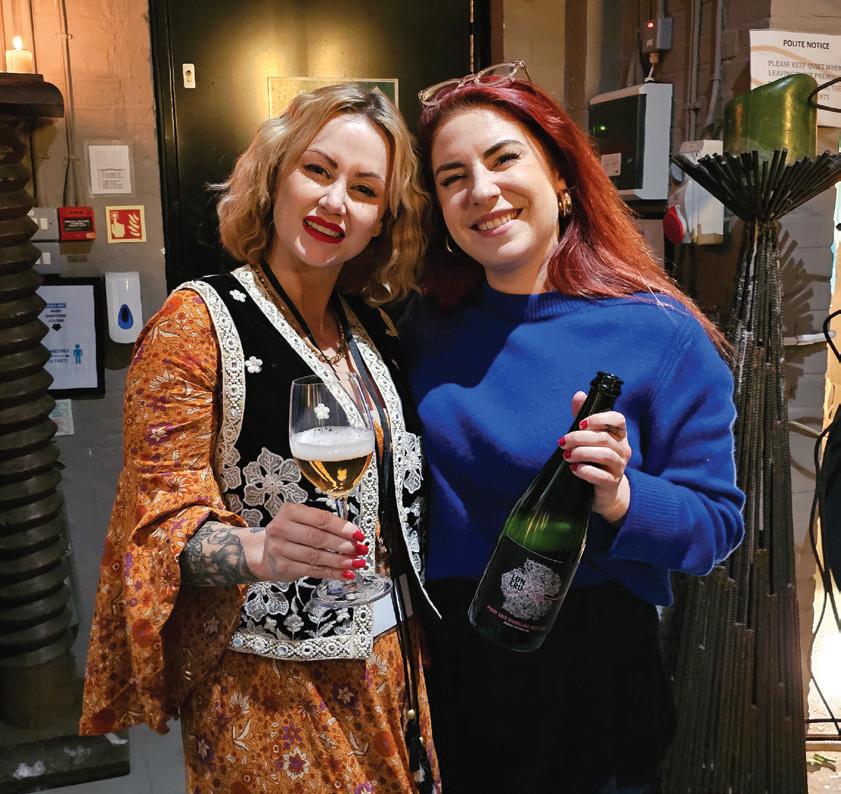
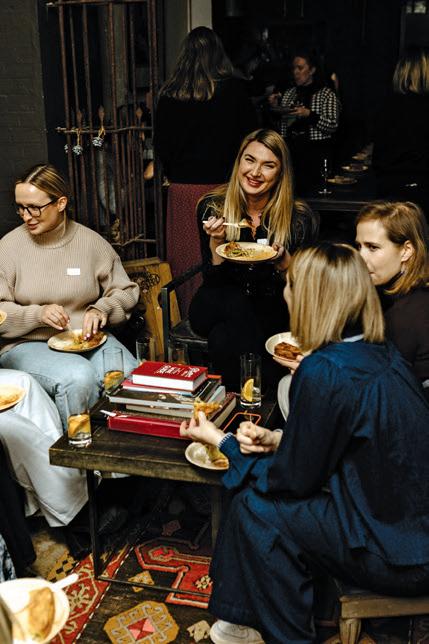


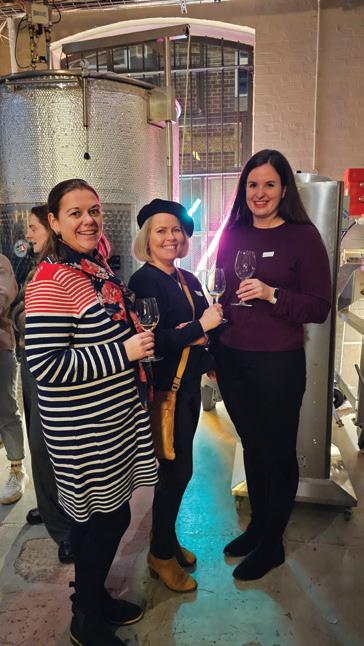

16 16 POSING WITH ALCOHOL
Photos:
Krishanthi Puwanarajah www.womeninwine.co.uk www.londoncru.co.uk
Al eGrif t h s
APRIL 2024 | VINEYARD


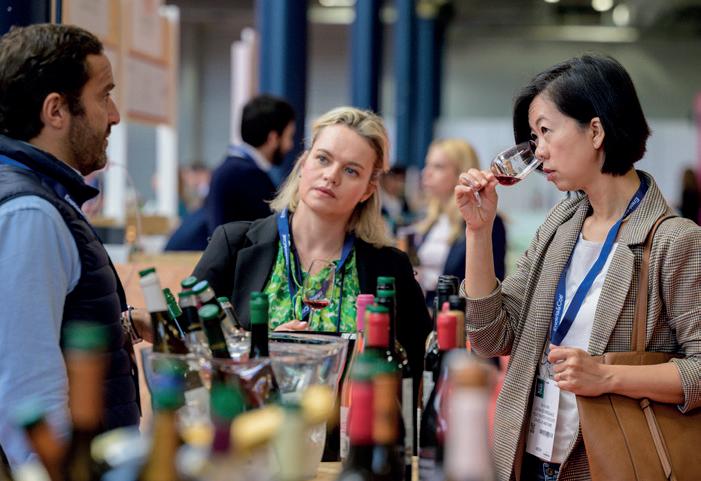


REGISTER TO ATTEND THE UK’S BIGGEST DRINKS TRADE EVENT REGISTER: LONDONWINEFAIR.COM #LWF24
£50k grower grant announced
RootWave’s game changing eWeeder for orchards and vineyards has been included in DEFRA’s Farming Equipment and Technology Fund 2024. The company also anticipates that growers will be able to claim further funding from the Combined Environment Land Management Offer.
The pioneering tractor-powered machine that delivers full control of weeds using electricity was one of the top scoring items for productivity and environmental benefit on the list. As a result, growers can claim the maximum grant allowance of £50,000 – more than half the machine’s list price.
CEO Andrew Diprose says the grant means that growers with 25 hectares of orchards
and vineyards could save money versus their existing sprayer and herbicide programme.
“The running costs for a RootWave eWeeder are tiny in comparison to herbicides. Before this grant was announced we knew medium and large growers could save money by switching to eWeeding, now smaller growers can too.”
Farming Minister Mark Spencer visited RootWave in February to see the Warwickshire based company’s eWeeder in action.
The DEFRA Minister was impressed, commenting: “Keeping control of weeds is a crucial task all farmers face. RootWave is one of the most innovative companies in the country and DEFRA has supported the development of their innovative and

eco-friendly electric weeder.”
Growers may also be able to access further funding, an annual payment of £101 per hectare of land where eWeeding is used rather than herbicides, under the Combined Environment Land Management Offer. eWeeding is the only non-chemical solution that kills both weeds and their roots without disturbing the soil.
Andrew Diprose said: “eWeeding is the only weed control option that can outcompete herbicides on efficacy and cost. Growers can also access all the benefits of chemical-free weed control and for those in environmentally sensitive areas this can include further grant funding from other organisations such as water boards.”
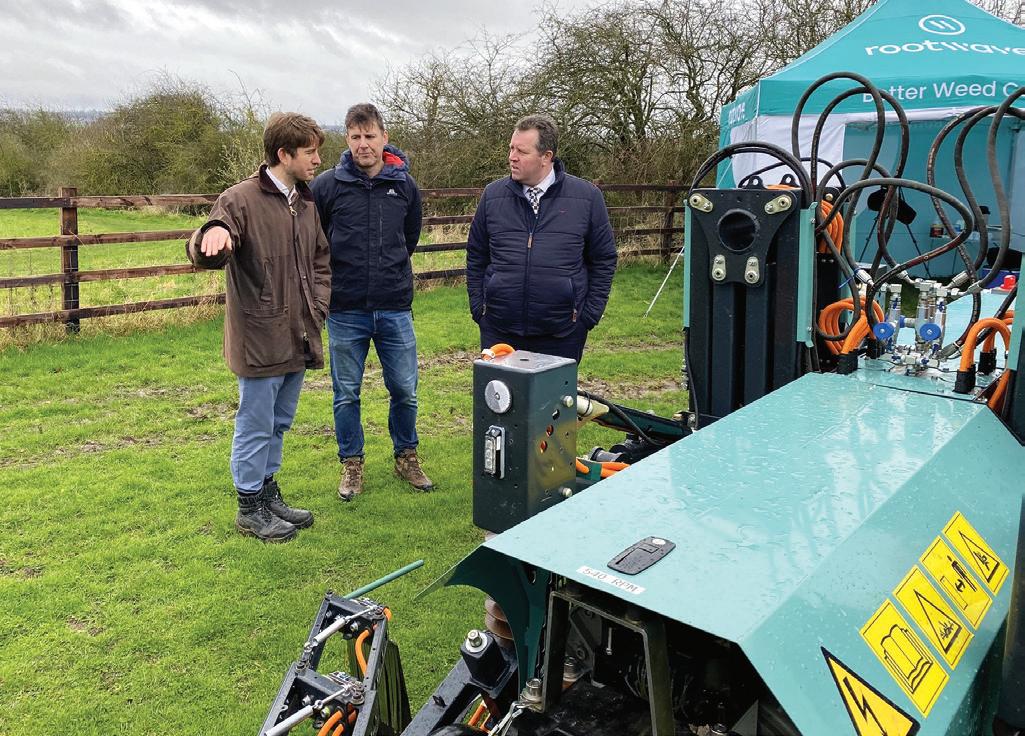
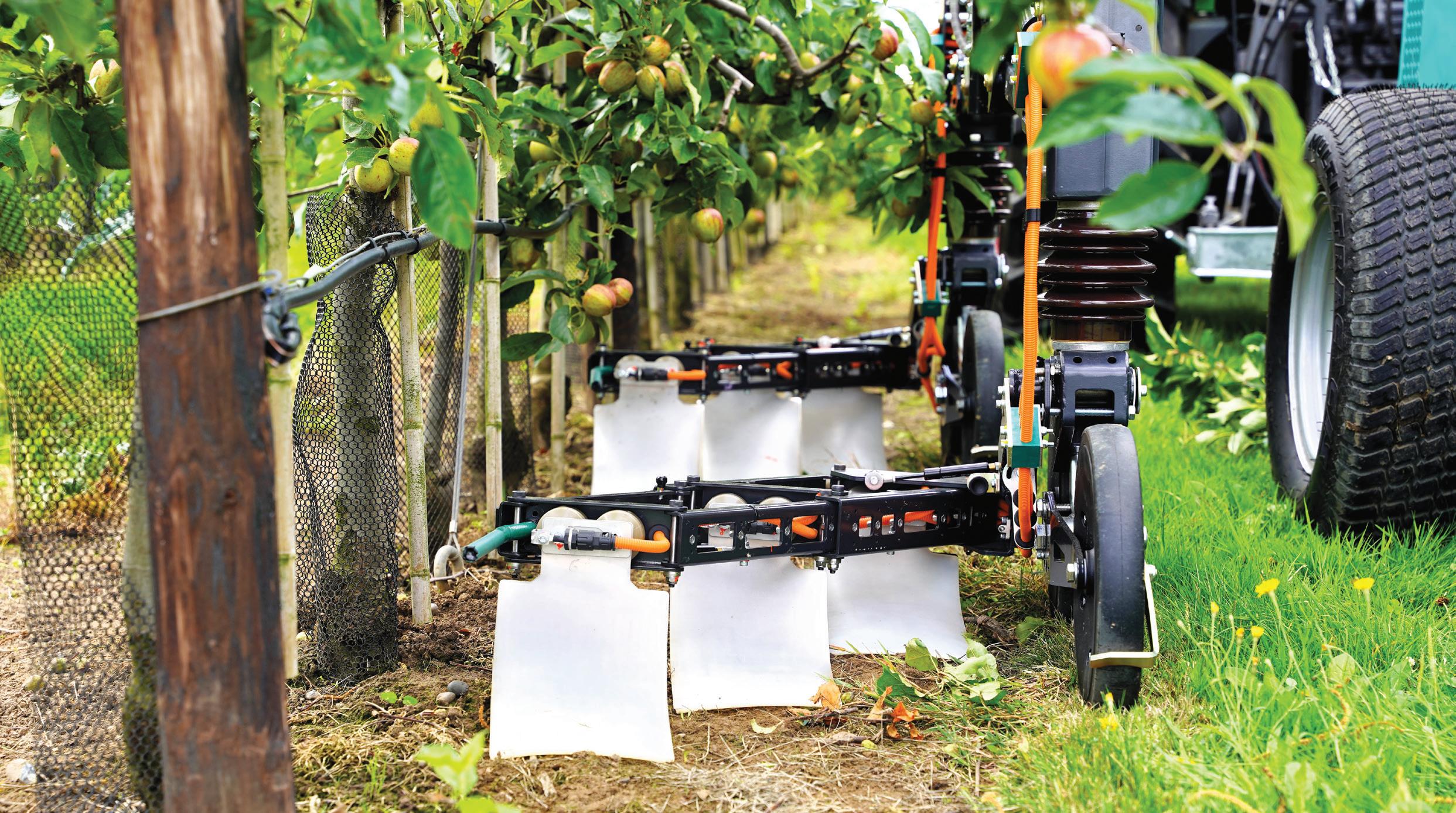
18 18 NEWS
APRIL 2024 | VINEYARD
Mark Spencer MP and Andrew Diprose with RootWave eWeeder
The Birketts Viticulture Team is one of the UK’s only legal teams dedicated to wine production. Made up of lawyers across our offices in the East of England, South-East and London; the Team brings together specialisms including Property (including agricultural matters, mines and minerals, residential and commercial development), Corporate and Commercial, Immigration, Health and Safety, Licensing, and Natural Capital.
Our breadth of experience enables us to understand your business better and the challenges and opportunities you face day to day.
Key contacts
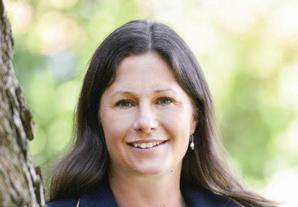

Annabelle Rout Partner in Agriculture & Estates
+44 1245 211215
annabelle-rout@birketts.co.uk
Adam Burden
Senior Associate in Agriculture & Estates
+44 1732 904747
adam-burden@birketts.co.uk

Barnsole Vineyard, Kent
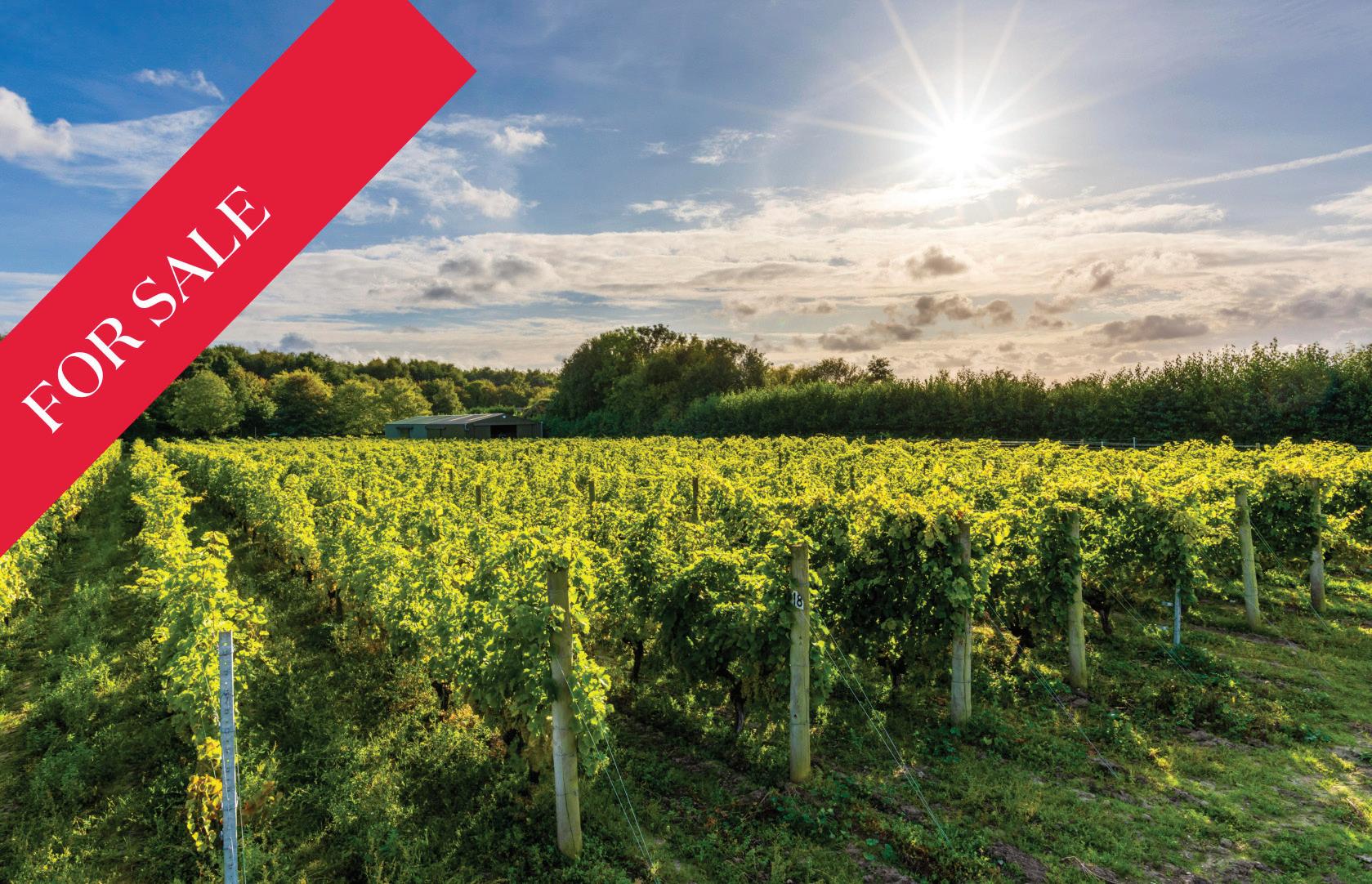
Barnsole
knightfrank.co.uk
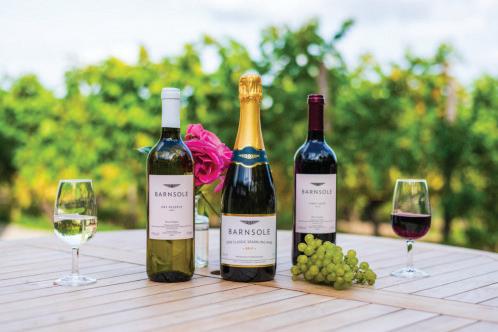
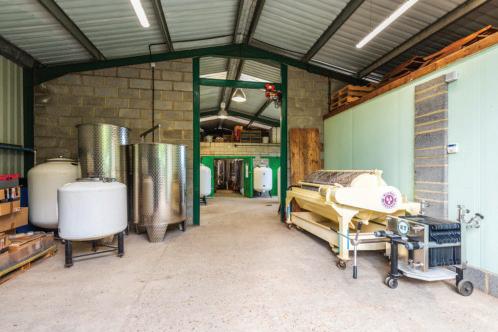
Your partners in property
19 19
of the Best Customer Focus Award in 2023
Winners
is more than just a beautiful
the
it's an opportunity. An established business boasting a robust 22% profit margin and proven financial track record,
pivot in any direction its new owner desires. Knight Frank Rural - South East Region will.king@knightfrank.com 01233 222382
vineyard nestled in the heart of
world's fastest-growing wine region;
Barnsole stands ready to
APRIL 2024 | VINEYARD
Bulk wine for sale
Have you got bulk wine to sell?
• Free to look
• Request a sample
• Post your own wines for sale for £10
www.wineandgrapetrading.co.uk
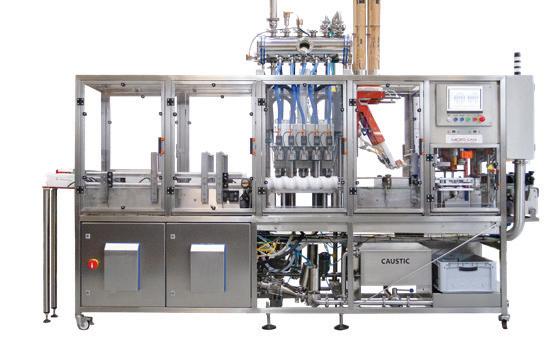


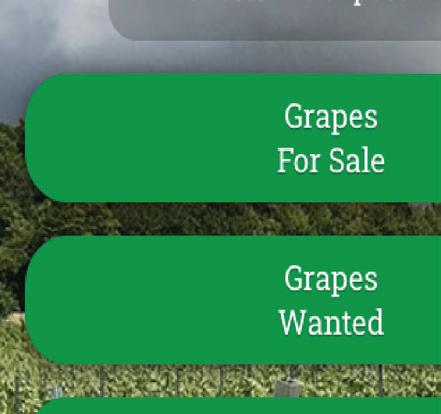




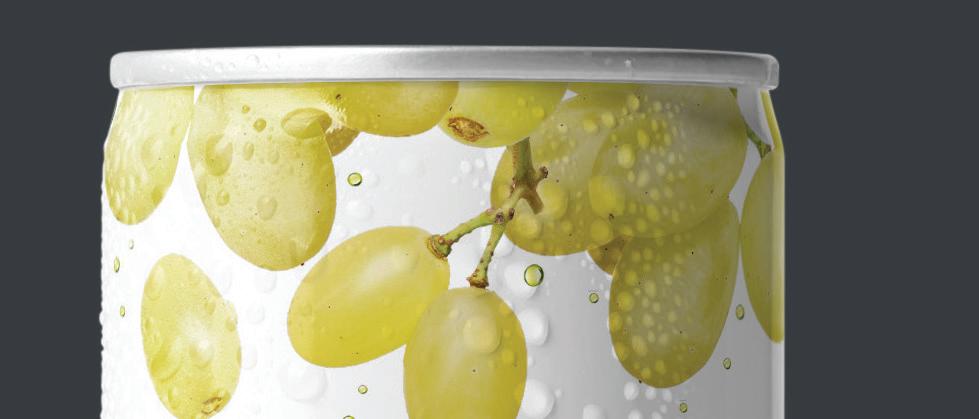
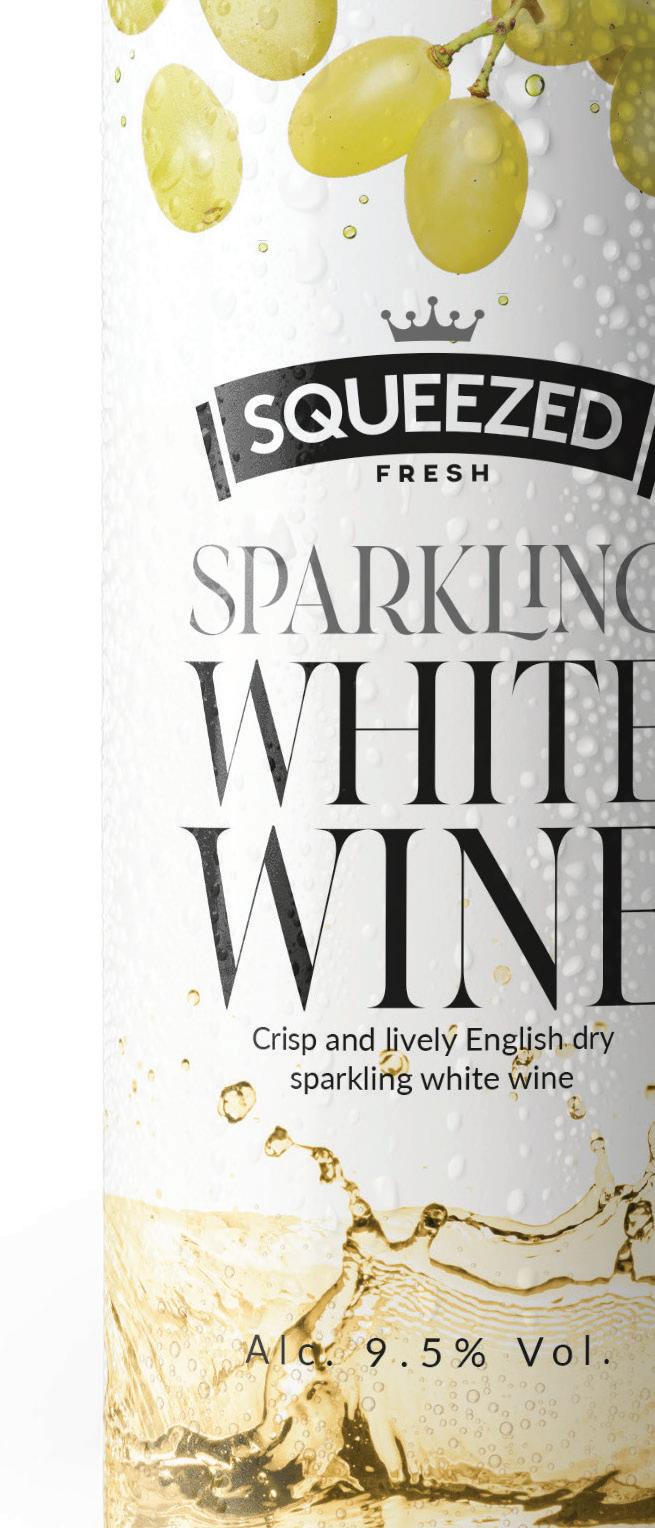

20 20
MICROCAN VINEYARD AD 190x133 FINAL.indd 1 07/11/2023 16:47 APRIL 2024 | VINEYARD
Uncorking success
Key legal considerations for launching your own winemaking business.


Embarking on the journey of establishing your own vineyard and/or winemaking business is an exciting venture. While the romance of creating fine wines is undeniable, navigating the legal and regulatory landscape is equally crucial.
Below are some key considerations to enable you to “ferment” success in your new business.
The grapevine of corporate structure
Before planting your first vine, you need to ensure that your business has an appropriate corporate structure. The number of possible structures (and variations on the structures) are like grape varieties – there are plenty of options, but only one or two will truly be fit for your particular circumstances and ambitions.
Additionally, if you are seeking external investment, spending the initial time to ensure you have a detailed partnership/ shareholders’ agreement and/or articles of association (if you intend to set up a limited company) is critical.
Licences and permits
The legal complexities of starting a new business can be daunting, but obtaining the necessary licences and permits (such as for the use of land and alcohol & premises licences) are non-negotiable.
Real estate
If you are seeking to acquire land to start from scratch or to acquire an already established vineyard, legal due diligence on the land and any buildings on it is key. If funding is required, a lender will often require full due diligence to ensure there are no issues which could adversely affect its security.
If you already own (or lease) arable land and your viability assessment is positive in terms of the land being suitable for viticulture, there are still a number of legal considerations that you will need to contemplate including:
◆ Planning
Planning consent(s) might be required to authorise the use of the land and any ancillary buildings for the purpose of wine making, wine selling, consumption of food and drink on the premises etc.
◆ Lease restrictions
If you occupy the land under a lease, does it contain any restrictions which could scupper plans to alter the permitted use under the lease and/or submit planning applications? It would be unusual for a lease to not allow the landlord some element of control over what is being carried out on its land.
◆ Development and construction
If you have grander plans to open a winery, will the scale of the development works warrant entering into a contract with the building contractor, obtaining warranties from any sub-contractors and so forth?
Harvesting talent
Winemaking is a collaborative effort –so it is important that your business and your employee team are appropriately protected through the use of bespoke employment/ service contracts and policies.
Contracts, contracts, contracts!
The biggest mistake we often see made by new business owners is that they do not spend enough time working through the finer details of their new supplier and/or customer contracts. Frequent issues include
unrealistic delivery terms, punishing payment schedules, indemnity clauses and unequitable termination rights. This is especially true for those who plan to sell their grapes or subcontract wine making to an already established winery (as this may require more complex sub-contractual arrangements).
Ensuring that your contracts are clear and fair upfront will help save significant management time and money later.
Keep intellectual property rights in mind
Intellectual property (both yours and others’) is a hugely valuable asset that needs to be protected. A lot can rest on branding in the food & beverage sector, and there are many legal protections that can assist to shelter one of your most important assets.
Food (and wine) for thought…
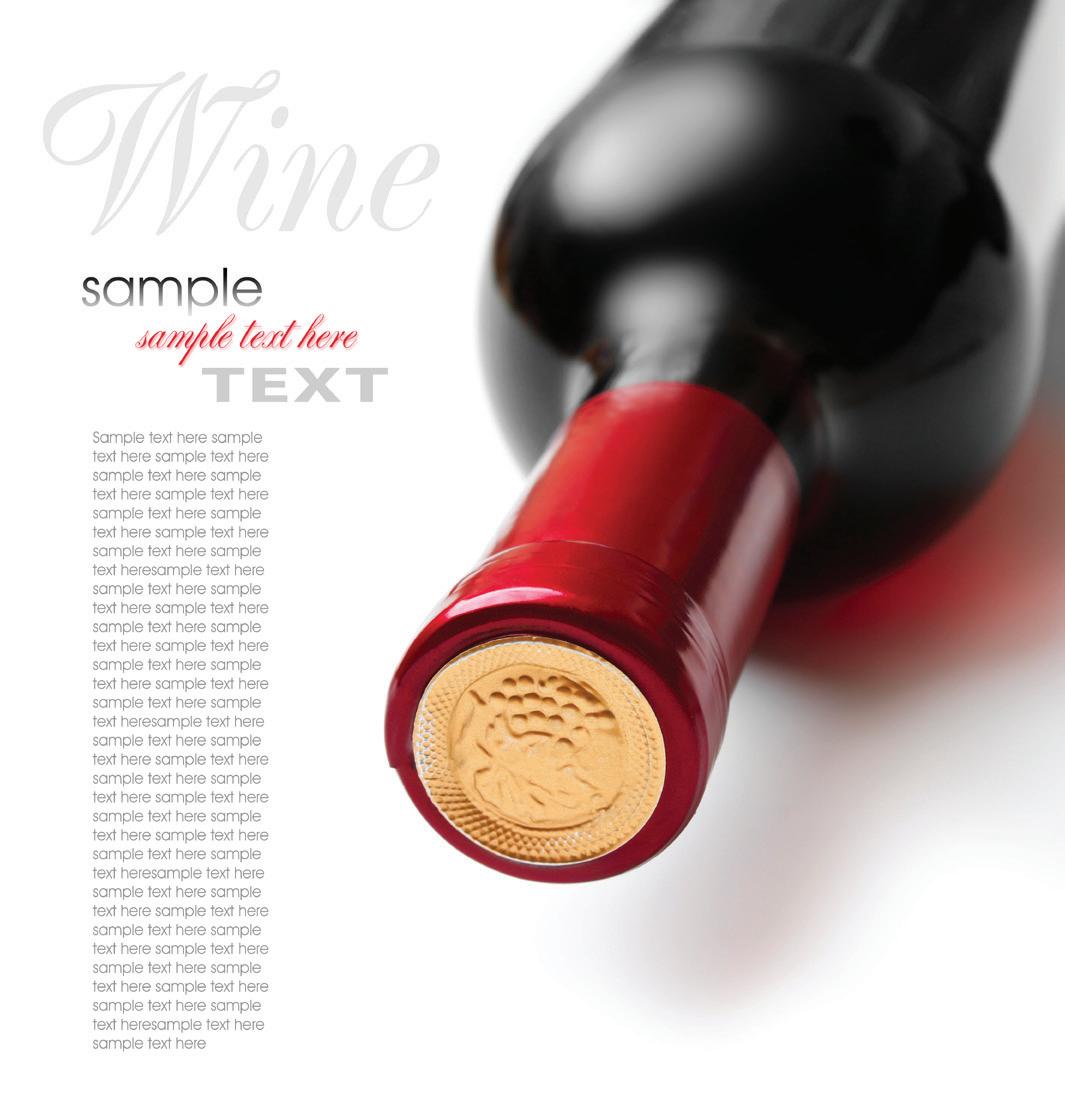
If you are considering starting a new vineyard and/or winemaking business, or acquiring an established venture, it is always wise to consult with experienced legal professionals who can guide you through the intricacies of doing so.
21 21
DESKTOP www.ts-p.co.uk ENVELOPE info@ts-p.co.uk phone-alt 01892 510000 K
ine organ Se nior Asso eal Est Jason Var yPart ne r , C o r petaro laicre
ta h er
APRIL 2024 | VINEYARD

RBC Brewin Dolphin is a trading name of Brewin Dolphin Limited. Brewin Dolphin Limited is authorised and regulated by the Financial Conduct Authority (Financial Services Register reference number 124444) and regulated in Jersey by the Financial Services Commission. Registered Office; 12 Smithfield Street, London, EC1A 9BD. Registered in England and Wales company number: 2135876. VAT number: GB 690 8994 69 The value of investments can fall and you may get back less than you invested. WHATEVER YOUR FINANCIAL PLANS, MAKE THEM WITH US. brewin.co.uk/1762 To find out more please contact Carla Morris on 020 3201 3890 or carla.morris@brewin.co.uk 1762
A heartfelt gesture of community support
As the festive season has well and truly faded into fond memories, Agwood wanted to take a moment to express heartfelt gratitude to everyone who made the Charity Christmas Market a resounding success.
Agwood raised an incredible £724.05 for the KSS Air Ambulance Charity. This achievement wouldn't have been possible without all who attended and contributed.
Steve Day, Agwood's General Manager and Gemma Lilly, Agwood's Marketing Manager, had the pleasure of presenting a cheque to Fran Vale, the Community Fundraiser from KSS Air Ambulance during the first week in March.
KSS are grateful for Agwood’s support. As an organisation committed to saving lives each day, they rely heavily on the generosity
of local businesses and communities to keep their life-saving service operational. With operating costs amounting to £16.6 million annually, equating to £45,000 per day, contributions play a crucial role in sustaining their efforts.
It's noteworthy that a significant portion of the air ambulances work involves supporting the agricultural, farming, and equestrian communities, given the nature of their operations and the rural settings they inhabit.
In 2022 alone, KSS responded to approximately 50 incidents related to these industries, highlighting the vital role KSS play in ensuring the safety and well-being of individuals within these sectors. Agwood’s support not only enables KSS Air Ambulance to continue their life-saving mission but

also empowers them to innovate, improve treatments, and enhance technology, ultimately increasing their capacity to deliver the best possible outcomes for all patients.
Once again Agwood would like to thank everyone whose generosity has made a lasting impact, and look forward to continuing to support the KSS Air Ambulance Charity in the future.
Streeter family launch first sparkling wines
Penny Streeter OBE and family have announced the launch of their first English sparkling wines from their West Sussex estate, Leonardslee.
Nestled in the heart of West Sussex, and with 38 acres of vineyard, Leonardslee Family Vineyards only makes English sparkling from fruit grown and nurtured in its own vineyards. Sustainability across the estate is key and everything has been carefully managed to ensure a fully sustainable approach from the outset.
Leonardslee is launching three sparkling wines, all made by traditional method: Leonardslee Blanc de Blancs (RSP:£60), Leonardslee Brut Reserve (RSP: £45) and Leonardslee Brut Rosé (RSP: £45).

The wines have a very distinct, uplifting label which features a barn swallow, this is symbolic of Penny herself, and the migration she makes between her two loves; her home in South Africa and her English sparkling wine estate. The swallow is also significant due to its long, established relationship with Sussex; the birds feature on the county crest and many end their long journey here from Africa.
The Leonardslee vineyards were planted in 2017 with Chardonnay (60%), Pinot Noir (30%), Pinot Meunier (10%), alongside a trial planting of Pinotage, which was the first of its kind in the UK.
The first wines will be ready for release early May, and the official launch of Leonardslee Family Vineyards will take place the first week of June with a series of launch events at Leonardslee House.
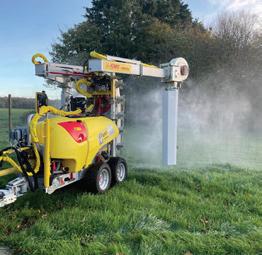
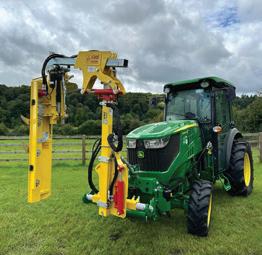
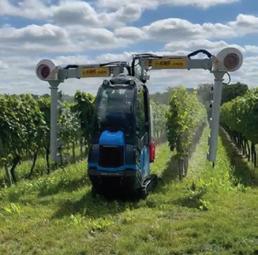

SALES SERVICING


23 23 NEWS
Based in South Oxfordshire www.amh-viticulture.co.uk 07973 500752 | andy@amh-viticulture.co.uk
Sales and specialist servicing of KMS Rinklin, leading innovator and specialised produce of technology for viticulture and fruit cultivation for the last four decades APRIL 2024 | VINEYARD
2024 date confirmed
The Vineyard & Winery Show, organised by Vineyard Magazine, have confirmed that this year’s show will take place on 20 November 2024.
Held for the first time in 2021, the show is now in it’s fourth year and has grown considerably in that time, from 80 exhibitors in the first year to 120 in 2023, providing growers and wine makers with a comprehensive display of equipment to view from a range of suppliers.
“Many visitors tell us that they have no need to attend the European shows, because they can find everything they need at The Vineyard & Winery Show,” commented Jamie McGrorty, Vineyard & Winery Show organiser and Publisher of Vineyard
Extra hall added for new exhibitors
The Vineyard & Winery Show has seen so much demand from exhibitors in the first three years that for 2024 it will be adding a large marquee to enable more exhibitors to attend. Bolted onto the back of the John Hendry Pavilion, it will create space for up to 40 new exhibitors
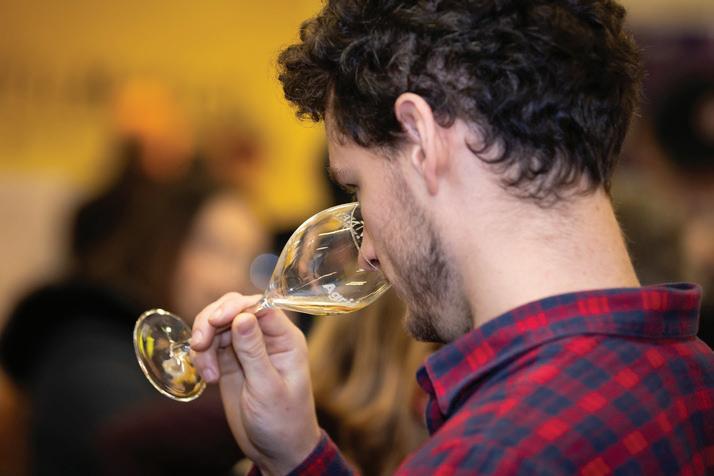
opposite a third wine tasting hub. “We simply could not fit in everyone who wanted to exhibit, and it just didn’t feel right turning companies away who want to join us, so we are really pleased that we have not only come up with a plan to accommodate these, but that we can also create a third wine tasting hub that will be central to this new area”.
All of the elements of last year’s show will return – such as the popular seminars hosted by WineGB and sponsored by Ferovinum, providing advice on a range of topics for growers and producers. The Top 100 UK wines will once again be available for tasting, providing buyers an opportunity to taste some of the best wines that the UK has to offer, as well as giving producers a chance to benchmark their own wines. “There is always a fantastic buzz around the wine Hubs”, commented Rebecca Farmer, Editor of Vineyard. “It is hard to put into words the atmosphere that is present around the wine hubs, you really have to come to experience it, but it’s so nice to see producers and


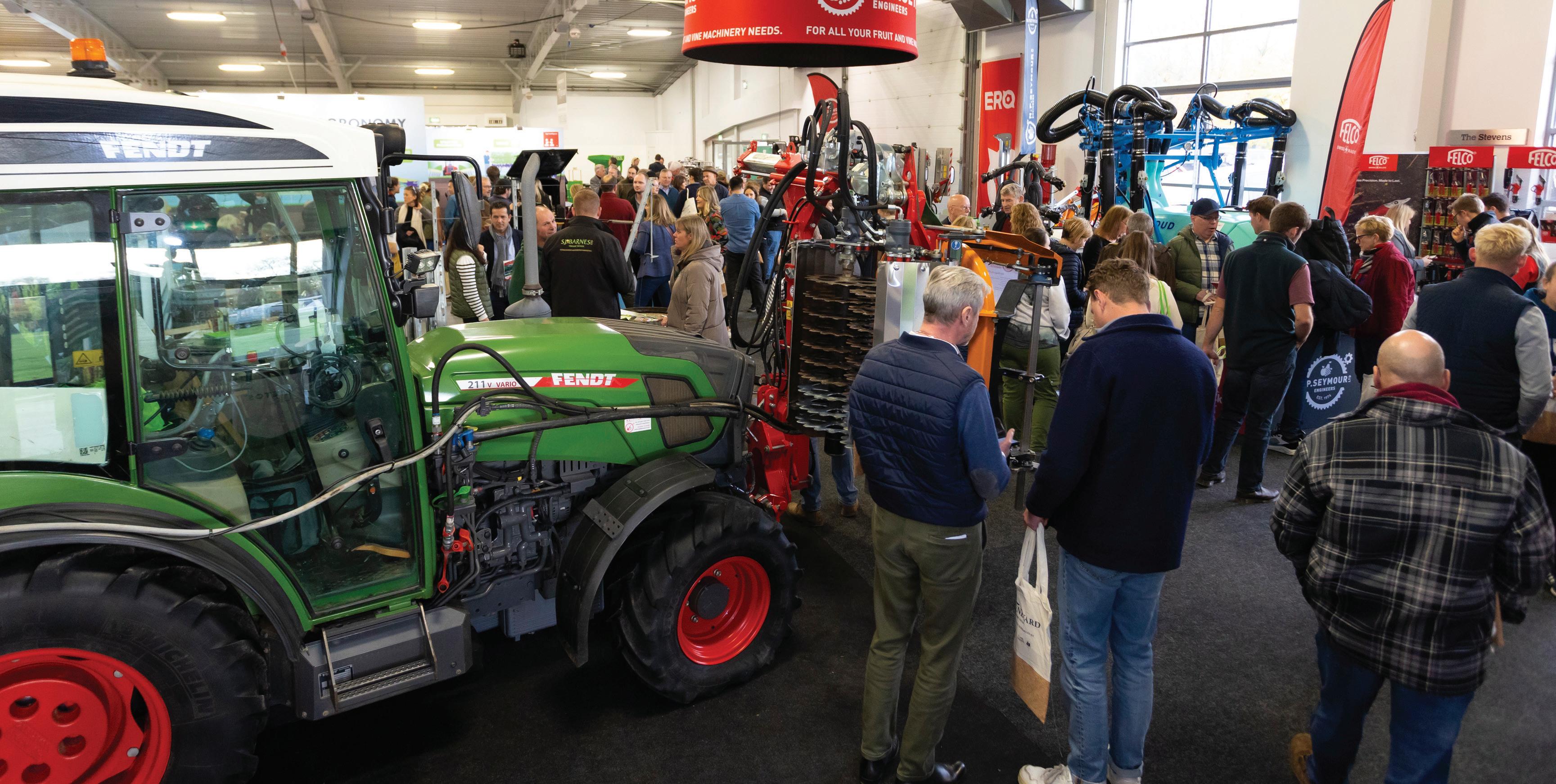
2024
24 24
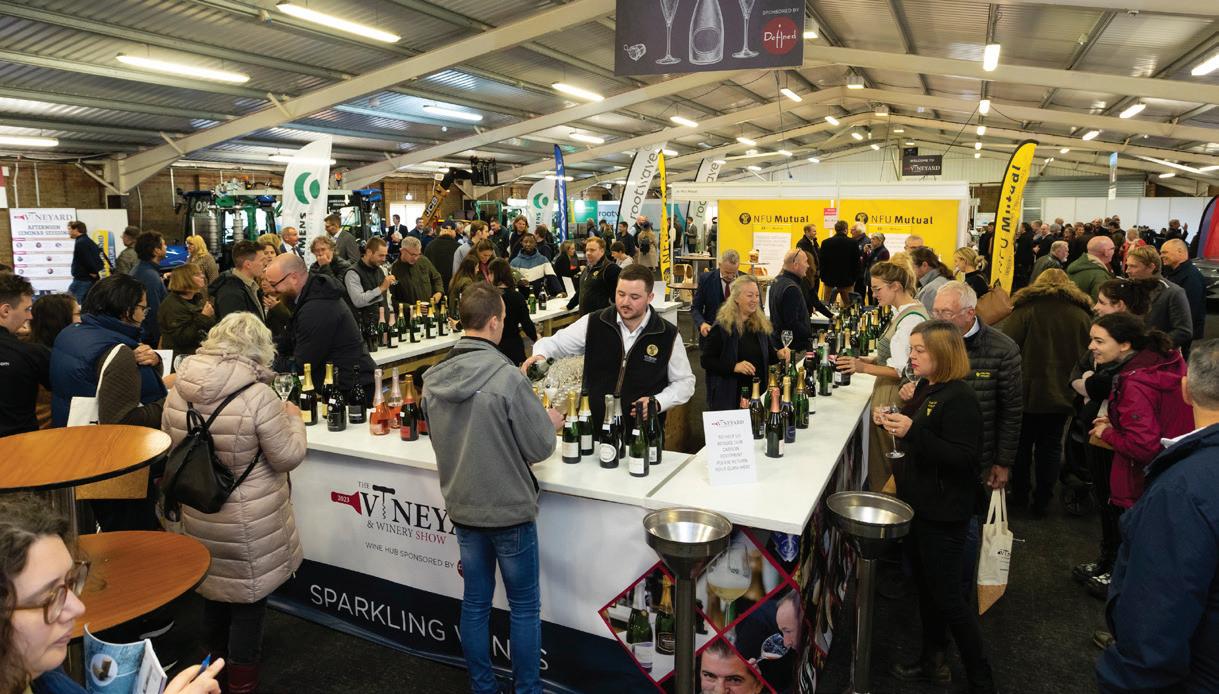
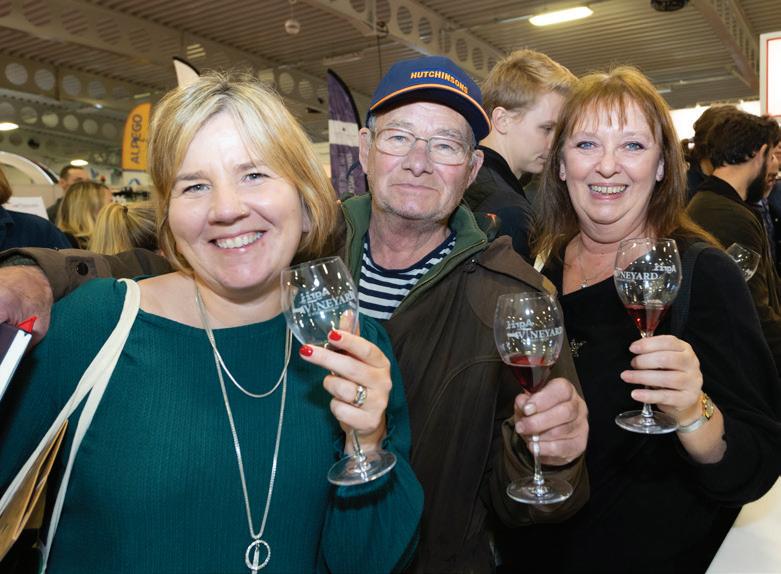



buyers coming together in one place to discuss the wines and to plan the coming season” added Rebecca.
Thanks to our sponsors
Five major sponsors, NFU Mutual, Core Equipment, Hutchinsons, Viitfruit and Royston Labels have all signed up to support this year’s show, with a new sponsor soon to be added to this elite line up being announced in the May edition of Vineyard.
“We cannot thank our sponsors enough for the support they give, because without this the show simply could not go ahead. We are privileged to be working within an industry that is not only achieving great things but one where companies with different services and skill-sets work together to enable that success” commented Jamie. “We look forward to welcoming everyone to this year’s show in November, after what we hope will be another good year for UK producers” concluded Jamie.





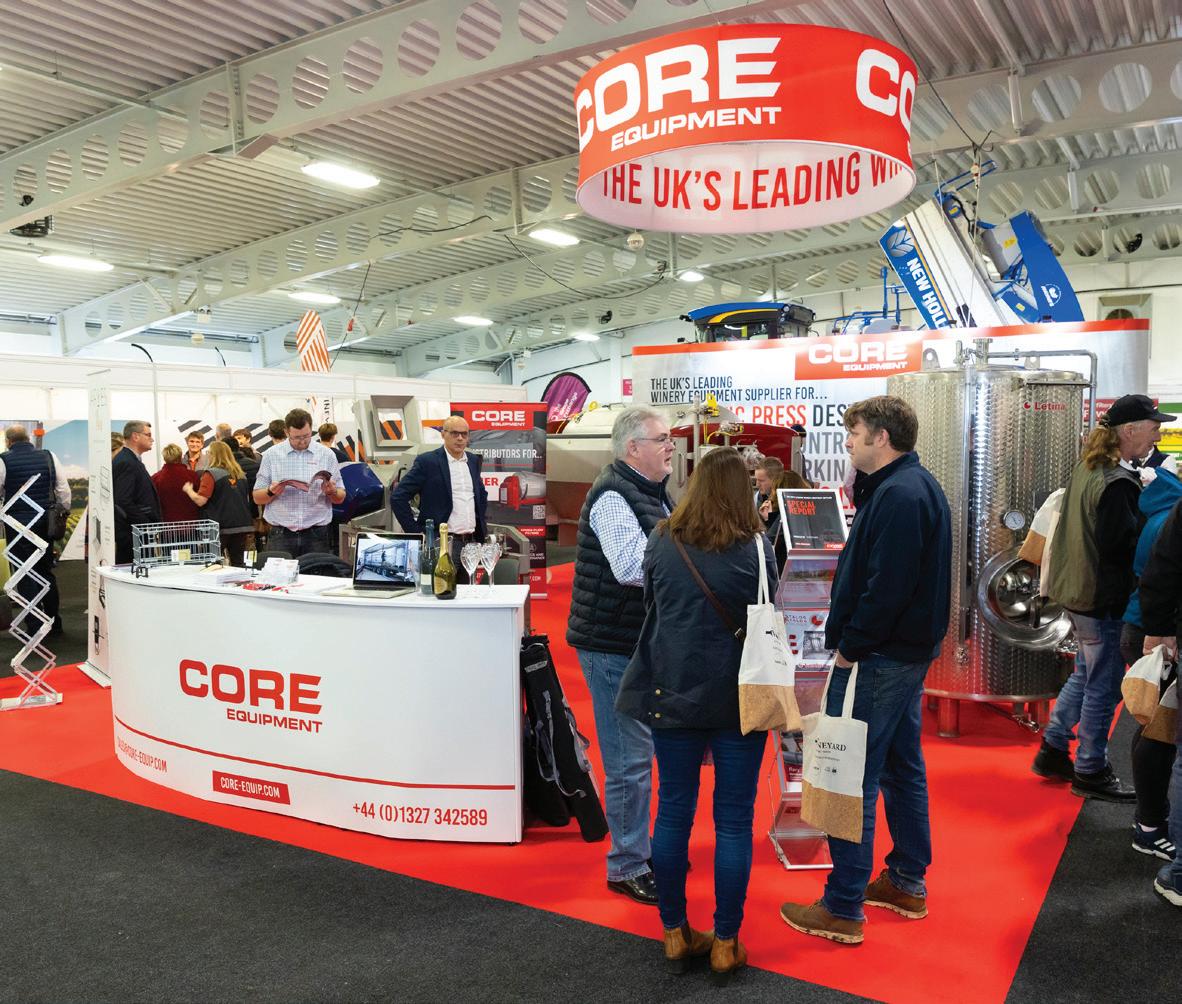
Vitifruit Equipment Sales and Hire In association with 25 25
When wines reach their middle age, they start to gather momentum and move with more fluidity and fl air.
It costs money to hold stock, and it shreds nerves, too. But the rewards for releasing wines when they are drinking instead of just-labelled are considerable. Still wines always find their way onto the market when they are young and fresh, and this makes perfect sense. However, sparklers are more sensitive to the timing of their release.
Ultimately, the winery cannot control when the consumer pops the cork, but one thing is certain, they can ensure that it is not too early in a wine’s life by timing their launch to coincide with the palate – not when the accountants in the building give a wine the
2013 Digby Fine English, Vintage Reserve Brut
£45.00
www.digby-fine-english.com
www.hedonism.co.uk
£267.00 for a case of 6 bottles
www.petershamcellar.com
£40.00
www.ocado.com
thumbs up. When a wine is too raw and squeaky, regardless of its potential, it will leave a slightly negative impression on its drinker. Most consumers are not wine pros, so they don’t have the required experience to appreciate that while the wine will improve, they can also enjoy the tension and verve in the glass despite the wine’s youth. Sadly, once a punter declares a wine ‘too sharp,’ they will never return. If you are a wine producer, please bear this in mind because you will not get a second chance. If, however, you taste, taste and taste again, with an open mind and an eye to deliciousness, then you can second guess your customers, and this will give you a solid chance
















of impressing on the very first sip. Six, eight or twelve months earlier, that exact wine might not have achieved the desired effect!
Of course, when wines reach their middle age, they start to gather momentum and move with more fluidity and flair. We can all appreciate the musculature and straining sinews of a sprinter in the blocks, but it is far more impressive to admire an athlete in full flow, seemingly effortless as the strides lengthen, the shoulders drop an inch, and confidence exudes from every pore. Confidence comes with age and experience; in the case of wine, middle age determines a wine’s true greatness.
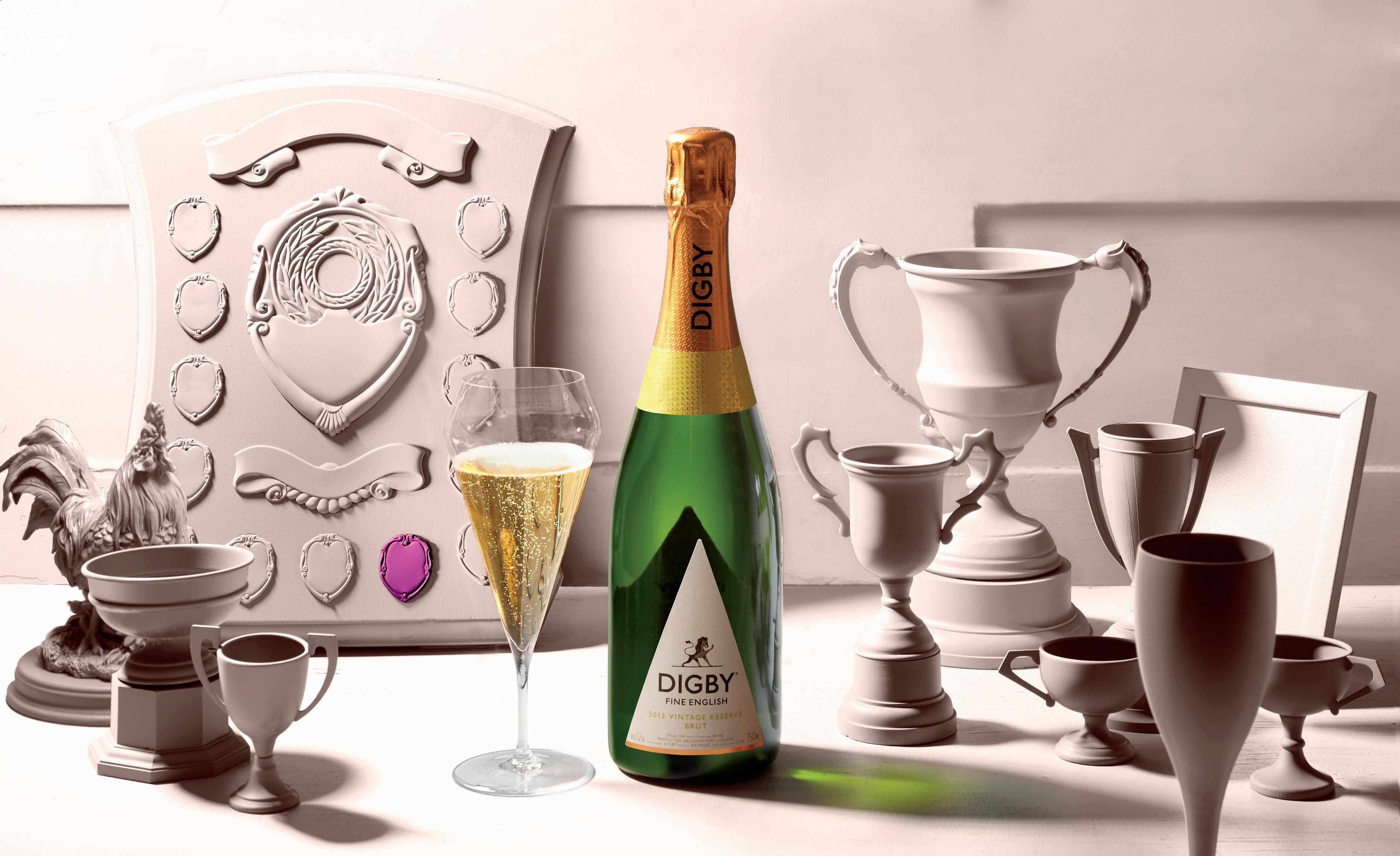
Here is another middle-aged wine, and now that it has reached its tenth birthday, it is worth reflecting on this wine’s history to date.
While it has never tasted better than it does today, I spotted its potential back in June 2021 when I featured it on this very page. Others agreed, and gongs followed, none more prestigious than being named Supreme Champion at last year’s WineGB Awards. But let’s look to the future because while I believe it has reached its halfway point, there are more twists and turns to come.
I imagine stocks will sell out fairly soon, and the second half of this wine’s existence will occur not in the Digby cellars but in peoples’ collections. I urge those with this mighty wine under their stairs to exercise restraint.
It looks regal now, but there are still more flavours to unravel and billow. Perhaps this wine is a marker for bold English wineries. Bollinger is about to release its 2015, while Moët, Clicquot and Roederer, including Roederer’s Cristal cuvée, are already there. Perhaps we should embrace our middle age more – Digby is doing just that!
DESKTOP www.matthewjukes.com ENVELOPE vineyard.ed@kelsey.co.uk 26 26
Mahe Juk e s
WINE REVIEWS
aged
Middle
APRIL 2024 | VINEYARD
2015 Hattingley Valley, Kings Rosé
£95.00
www.hattingleyvalley.com
www.hedonism.co.uk
www.caviste.co.uk
Finding sparkling rosé that makes it into middle-aged territory is tricky. This wine is Hattingley’s first ever Kings Rosé, and it is the perfect wine to debut this label!
The cold 2015 vintage gave rise to firm, centred, introverted wines, and many have never truly blossomed. Kings Rosé seems to be performing a slo-mo sun salutation in the glass as it unwinds incrementally in contact with air and ends up as a glorious, fully open, and extended beauty!
Pinot forms 90% of this blend, with Noir, Meunier and a touch of Précoce making up the numbers. Unlike rosés based on Chardonnay with a touch of added red wine, this one has a core of epic fruit and a long life ahead. Hattingley bucked the trend managing to gain ‘super-ripeness’ in 2015, and it shows.
I am not sure how many people have tasted ‘older’ rosés, but 2015 Kings is a wine with a prodigious engine, and while it is enjoying its middle age, you would be a fool to pop all your corks this summer. If you can think of a grander English sparkling rosé, you win a prize because this middleaged soul will gain glamour and allure as every day passes, and I believe there is a decade left in its tank.
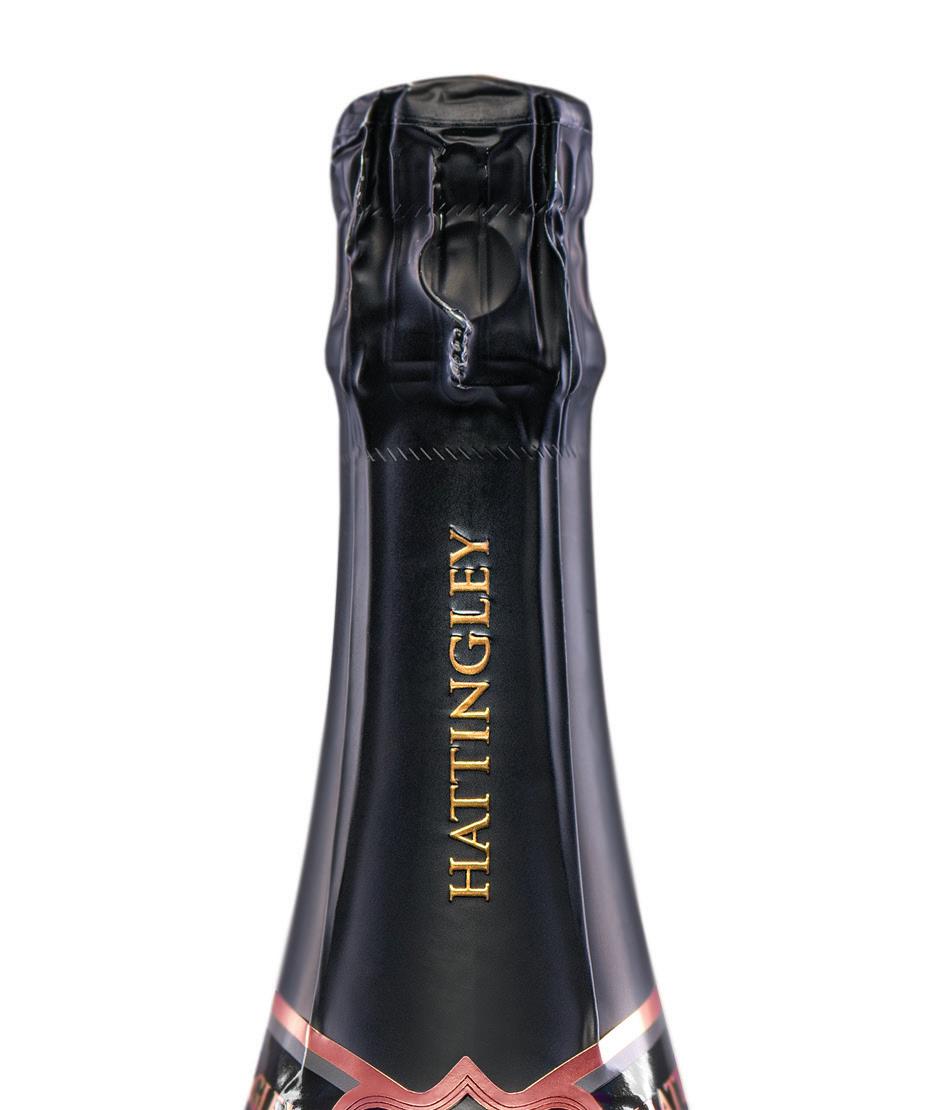
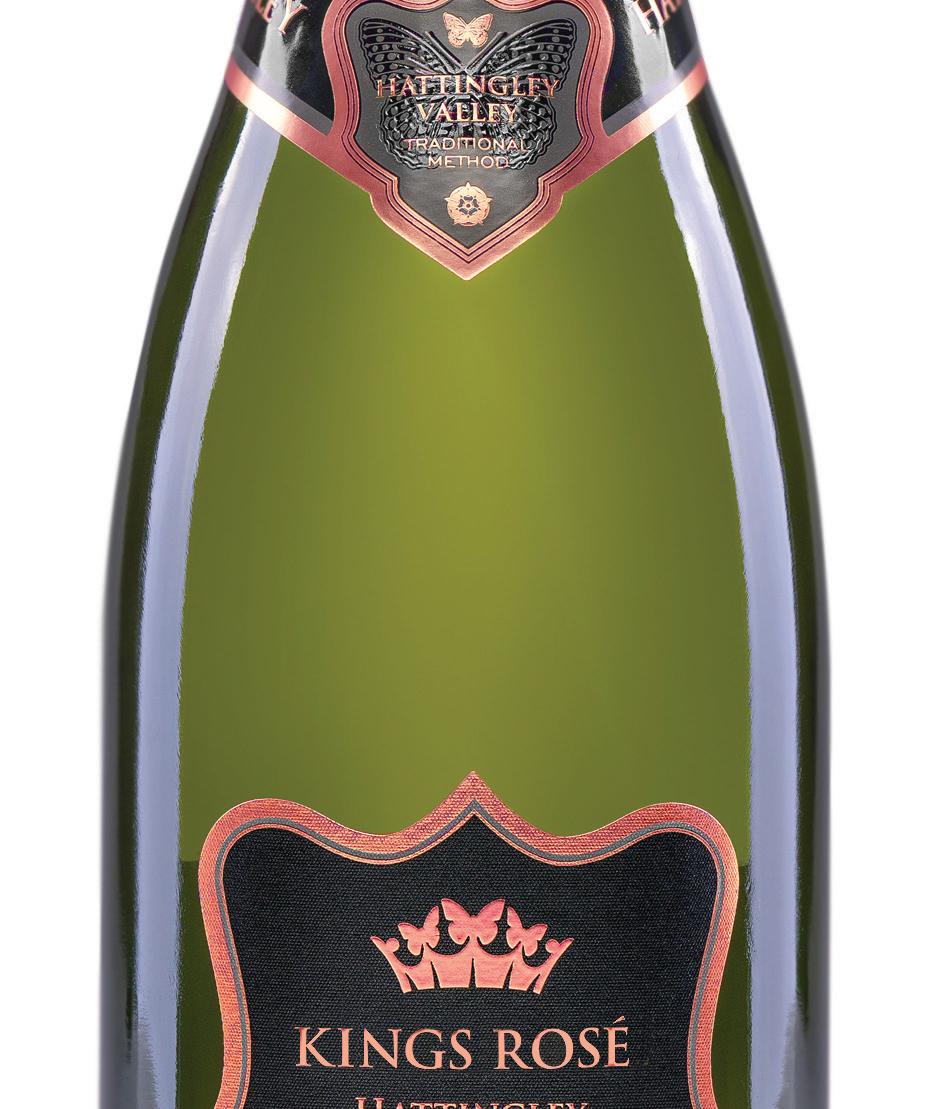
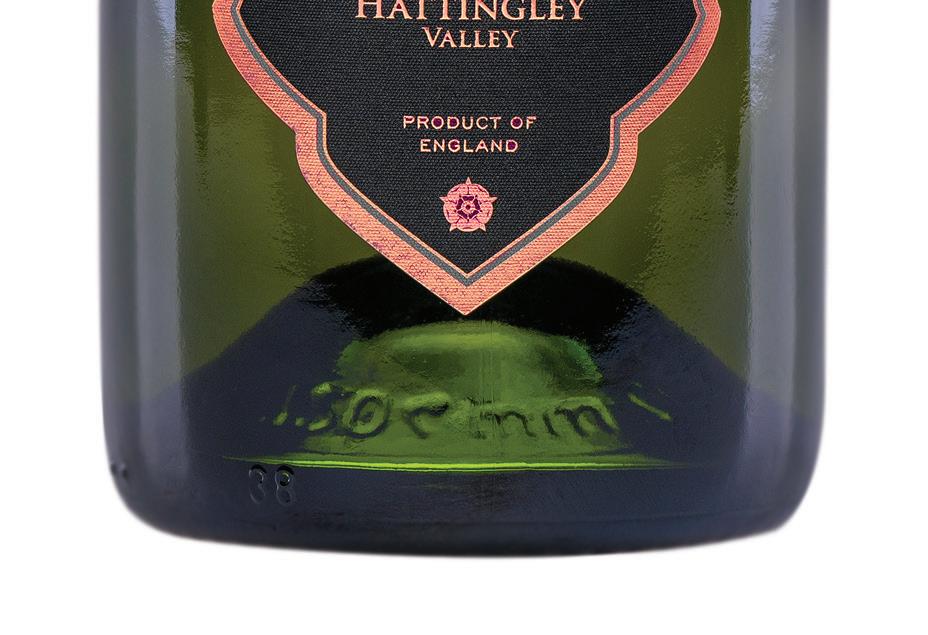
2015 All Angels, Classic Cuvée
£40.00
www.allangels.com
There has always been something slightly intangible at All Angels. There is no doubt that the wines are exemplary, but I think I have finally cracked the code just in time for this wine to hit the high notes.
I believe that the rare quality at All Angels is patience, and this wine is a case in point. The complex blend of 58% Chardonnay, 19% Pinot Noir, 13% Pinot Meunier and 10% Pinot Gris was bottle matured on its lees for six years.
This outfit only releases wines when they are ready, and, funnily enough, the 2017 will be released after six years on its lees, before the 2016 vintage. 2015 was a late harvest, in October and November, and with 100% malolactic and then 100% patience employed, this wine has been well worth waiting for.
Patience is a rare commodity in our business, and if this wine had been rushed onto the market, it would never have reached its ‘middle age’. I am so pleased that we can savour this wine now because it shows stunning balance, ample flesh, and more volume of fruit than anyone thought possible.
I believe there is more to come, too, hence ‘middle age’ and not ‘peak’. I think others could take a leaf out of All Angels’ book. If you can hold your sparkling wines until they approach their middle age, you will likely win a lifelong commitment from your customers. I am not alone in thinking that All Angels deserves to be a household name – this patience will surely pay off.
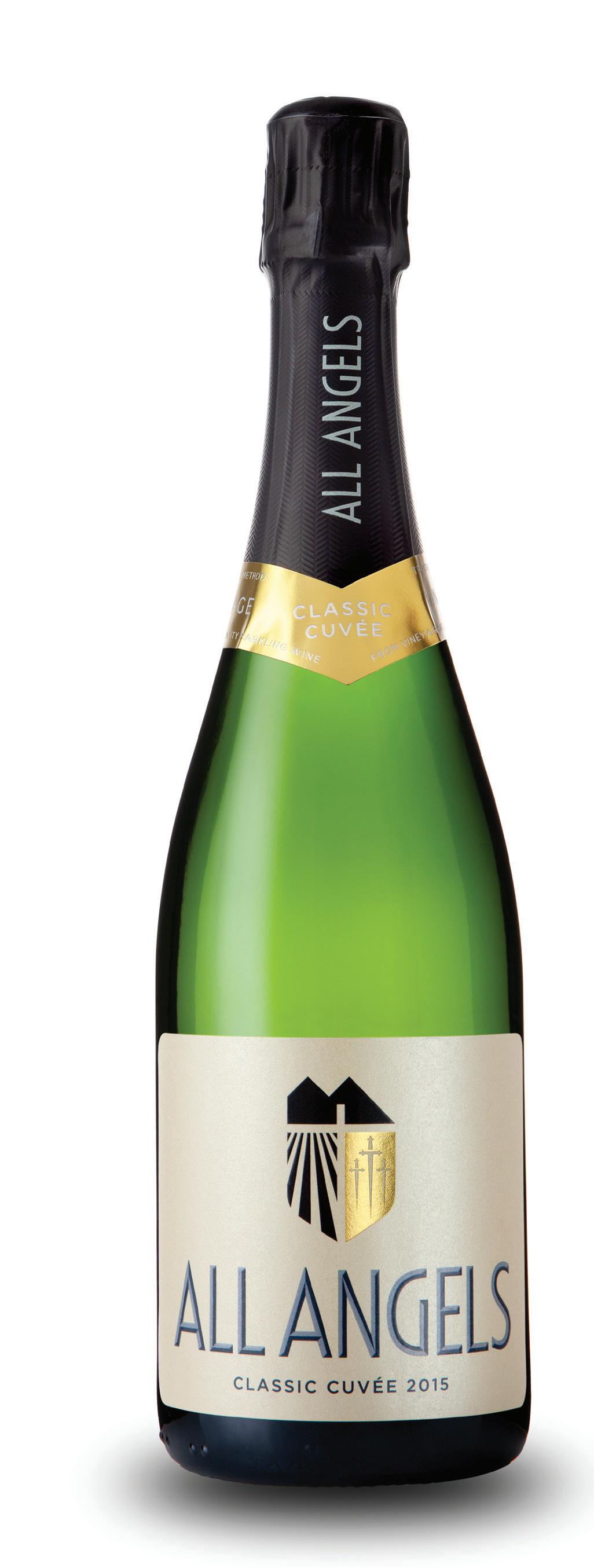
27 27
and a handful of indies including www.thenakedgrape.co.uk
Expect the unexpected
This month a visit to Pinglestone Estate in Hampshire proved enlightening.
Investment in vineyards on these shores has come in many forms over recent decades from traditional growers diversifying to those who have chosen to invest their money in a passion project but perhaps one source of investment that can be considered a complimentary surprise is that of French Champagne houses planting vines on the chalky soils of southern England.
Pinglestone Estate in Hampshire offers a 360° view of vines from the top of the gently sloping 40 hectare site. The wines produced from these vines are labelled Louis Pommery England. As we wander through the strategically planted blocks of Chardonnay, Pinot Noir, Pinot Meunier and Pinot Gris it is abundantly clear that despite the globally famous name attached to this venture this site has been individually nurtured. It is when speaking with head winemaker, Will Perkins and James Bowerman, vineyard manager, that the site specific attention to detail comes into sharp focus.

The Vranken Pommery Group is no stranger to innovation and this is not the only international venture that the
world renowned Champagne house has undertaken. Sparkling wine is also produced under the Louis Pommery California label with vines grown at sites in the Napa Valley. For a large company it is refreshing to note that the objective is only to produce wines that reflect the unique excellence of the sites that have been chosen. Louis Pommery England is uniquely focussed on expressing the very best of the Hampshire terroir and as such has ensured that those at the heart of the enterprise are also from the local area. The wines are driven by what the soil, climate and geography have to offer and not by any influences from elsewhere.
“This is not copy and paste, there has been no desire to recreate Champagne,” said Will. There are however some stylistic threads that are designed to let the wines express what the vineyard has produced and one of those is that there is no oak in the wines. Will explained that there is currently a discussion regarding the possible future use of concrete tanks and ceramic barrels.

These discussions around what the future might hold for Louis Pommery England are gathering pace because planning

permission has been granted for an on-site winery. Currently Will and his team use the winery facilities at Hattingley Valley (also in Hampshire) to produce their wine but they are hoping that the new winery will be ready in time for the 2025 harvest.
I ask why Will is so keen to incorporate alternative vessels into the production of wine at Louis Pommery England and he explained: “Concrete as a vessel can be tricky for sparkling wine production but it is the least imposing vessel type so it is respectful of the provenance.”

Louis Pommery England currently has two sparkling wines which are produced with home farmed fruits. The NV Brut together with the newly released Rosé which is predominantly based on the 2021 vintage (with the addition of the perpetual reserve) and has been aging for 18 months on lees in order to prevent the loss of fruit flavour. The wines have undergone 100% malolactic conversion “I have not worked with an English sparkling brand that has that,” said Will who has worked with other English vineyards including Hattingley Valley. “There is a retention of freshness as the spine of the wine but the Malo adds softness,” said Will. <<



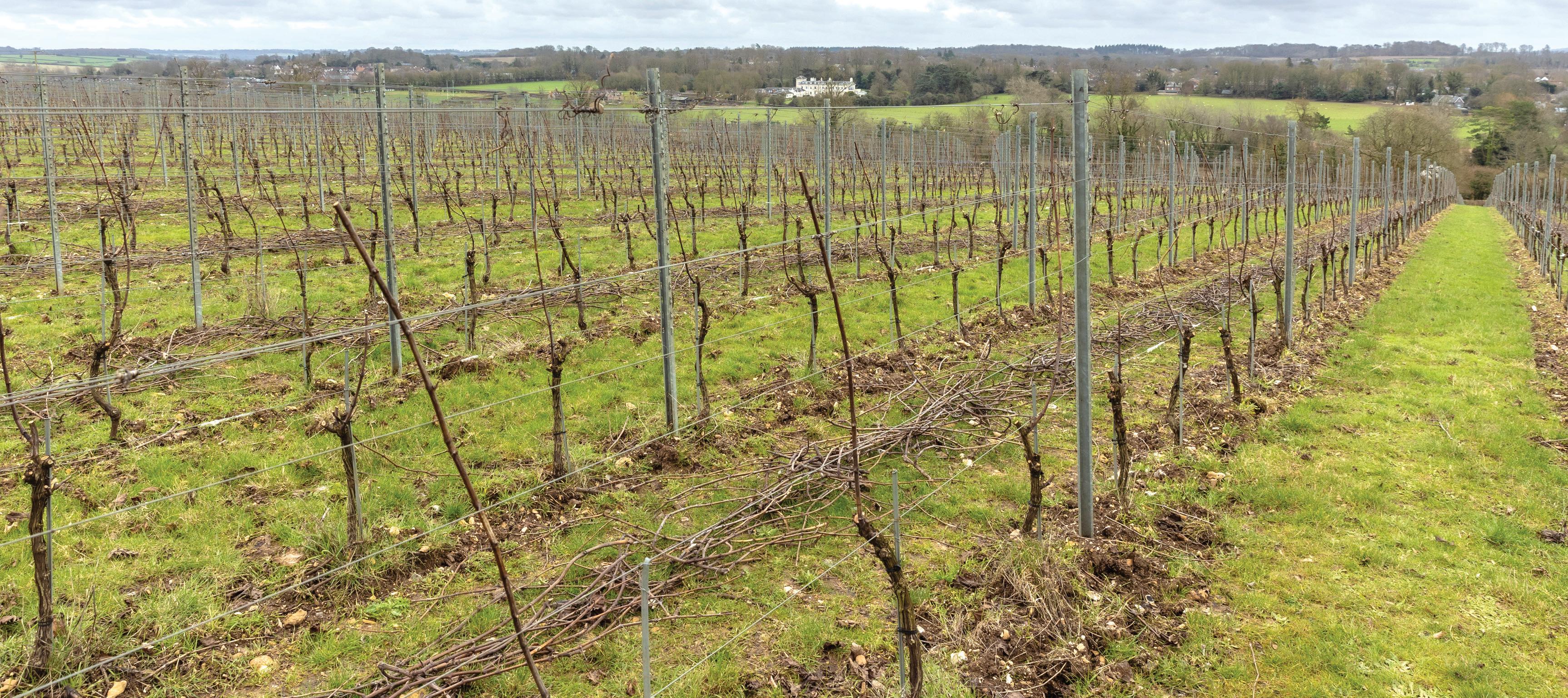
28 28 EDITOR'S VISIT Rebecca Fa er Ed i t o r

29 29
Photos: Martin Apps, Countrywide Photographic
Working within the group has enabled everyone to adopt better practices and learn from each other in a continuous cycle of improvement
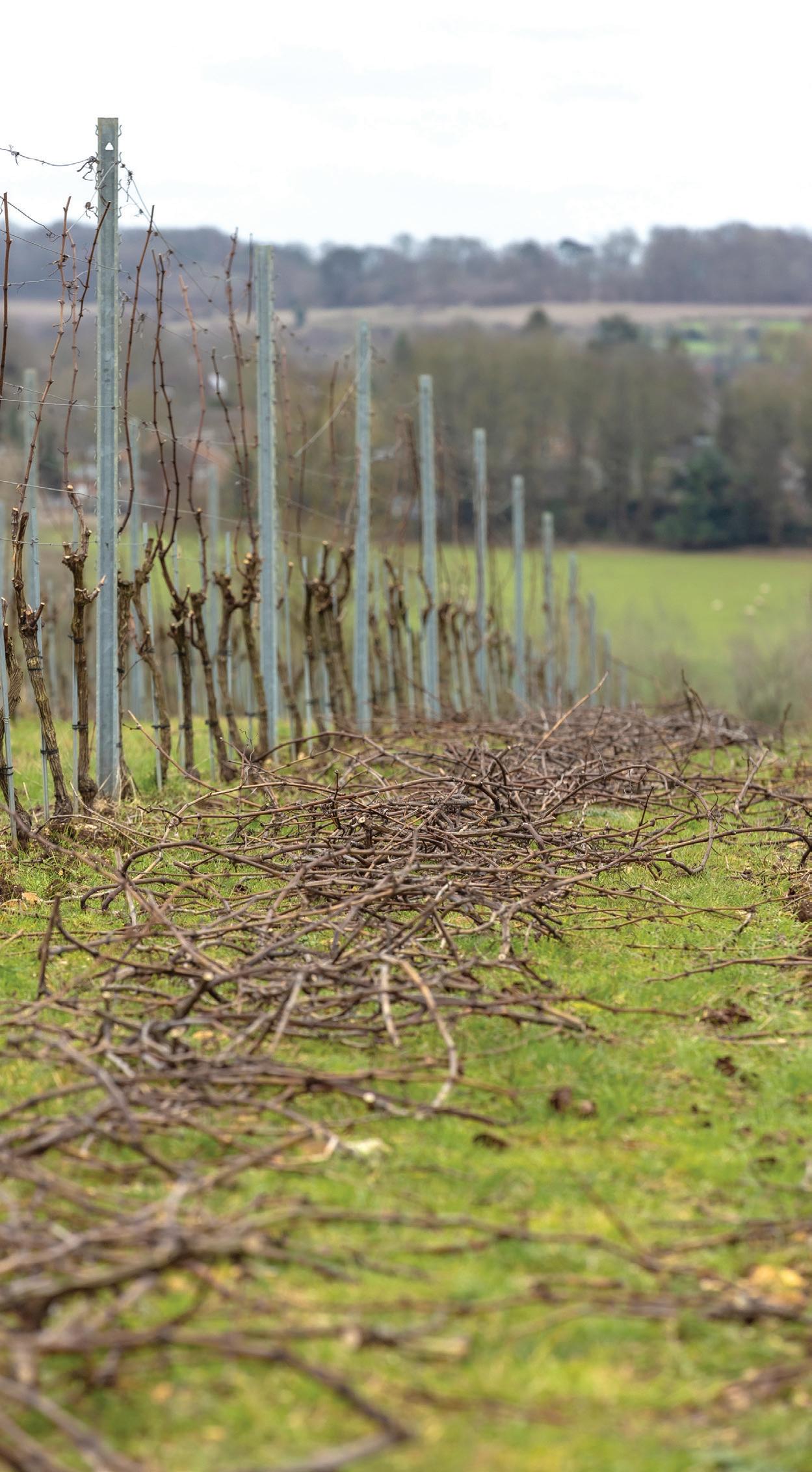
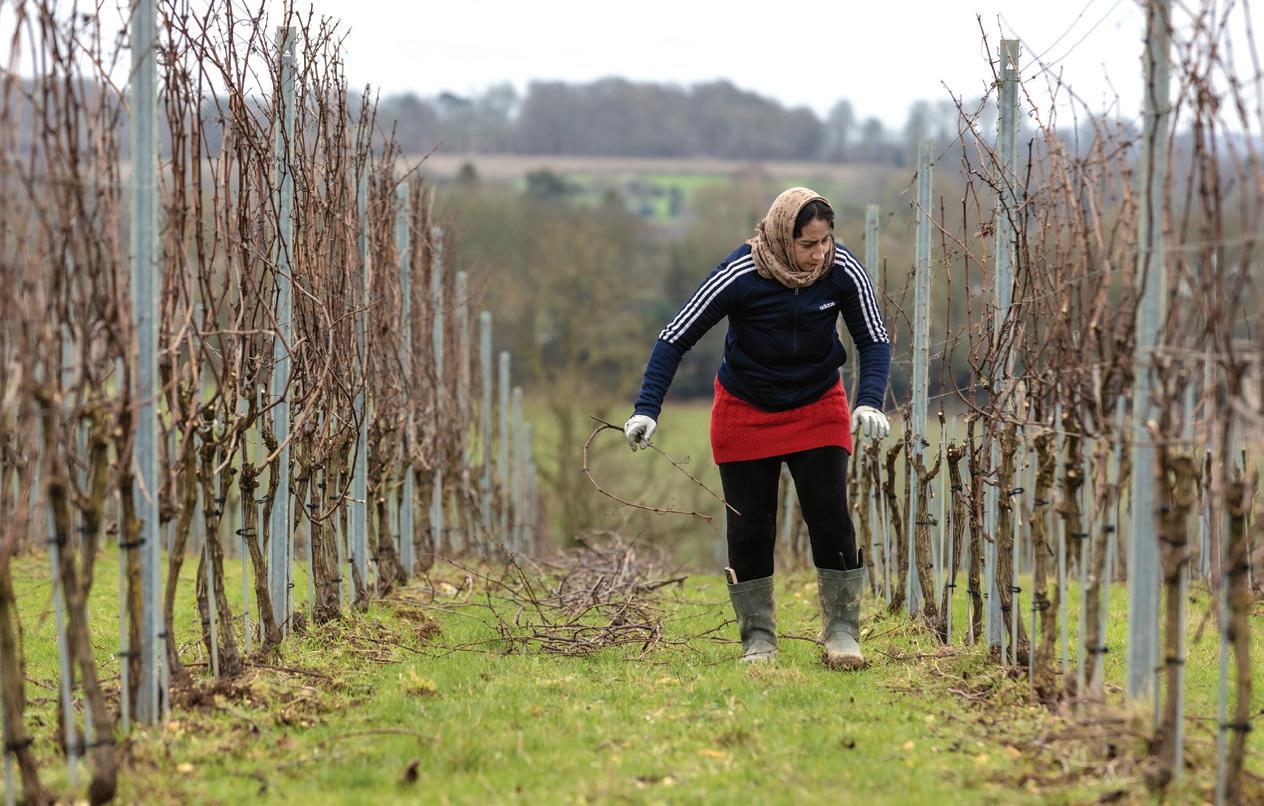
A complex eco system is being encouraged at Pinglestone so the bird population is actively being encouraged but only so that it is in balance with the insect population
<<
Will has worked full time in the wine industry since 2013 when he was offered a position as an assistant winemaker. Taking a degree at Plumpton College and after working on secondment in South Africa he has also worked in Spain, California, New Zealand and Australia giving him a global perspective on wine production. This perspective is highlighted in his statement that: “The vineyard should leave a thumbprint and the winemaker should be a window into what we are fortunate enough to work with.” The idea of the wine in the bottle being a reflection of the vineyard and the locality is a constant theme in everything that happens at Pinglestone Estate.
With his international experience I asked Will about varieties he has worked with elsewhere in the world. He pointed to working with Riesling vines planted on heavy granite and the Xarello vines of Catalonia as highlights of his career but it is when he talks about Pinglestone Estate and the future of Louis Pommery England that he is the most animated “From one of the blocks of vines I can see the football pitch I played on when I was growing up. Where else in the world could I say that,” said Will. His enthusiasm is infectious and I am already looking forward to my next visit once the winery is up and running.
It seems that working within the group has enabled everyone to adopt better practices and learn from each other in a continuous cycle of improvement. The vineyard has regular monthly visits from Baptiste Chazeaud, project manager for vines and wines at Vranken Pommery and during blending trials Will works closely with Vranken Pommery Chef de Cave Clémont Pierlol. There has been much interest in how the project has translated to a reality and both Will and James have found positivity from all who have been involved. Other producers in the area have also reacted positively to Louis Pommery England and both Will and James speak about the warmth of the wine community.
James Bowerman has worked in the English wine industry for two decades spending a significant amount of his career in the vineyards of Hampshire. It was this local expertise that led to his inclusion in the project right from the beginning. “We looked at many different sites but when we saw this land which was in arable production at the time we knew instantly that it was right, the chalk was visibly sparkling,” said James. “When we were looking at sites there were
30 30
For independent advice on: Interpretation of soil and tissue Formulation of nutrient programmes Supply of tailor-made products General agronomic advice john.buchan@btinternet.com 01630 639875 07713 632347
Garden City Tem Hill Market Drayton Shropshire TF9 3QB
1a.
AGRONOMY LTD Vinenutrition: The balancing act For independent advice on: Interpretation of soil and tissue Formulation of nutrient programmes Supply of tailor-made products General agronomic advice john.buchan@btinternet.com 01630 639875 07713 632347
Garden City Tem Hill Market Drayton Shropshire TF9 3QB
Buchan AGRONOMY LTD Vinenutrition: The balancing act APRIL 2024 | VINEYARD
John Buchan
1a.
John
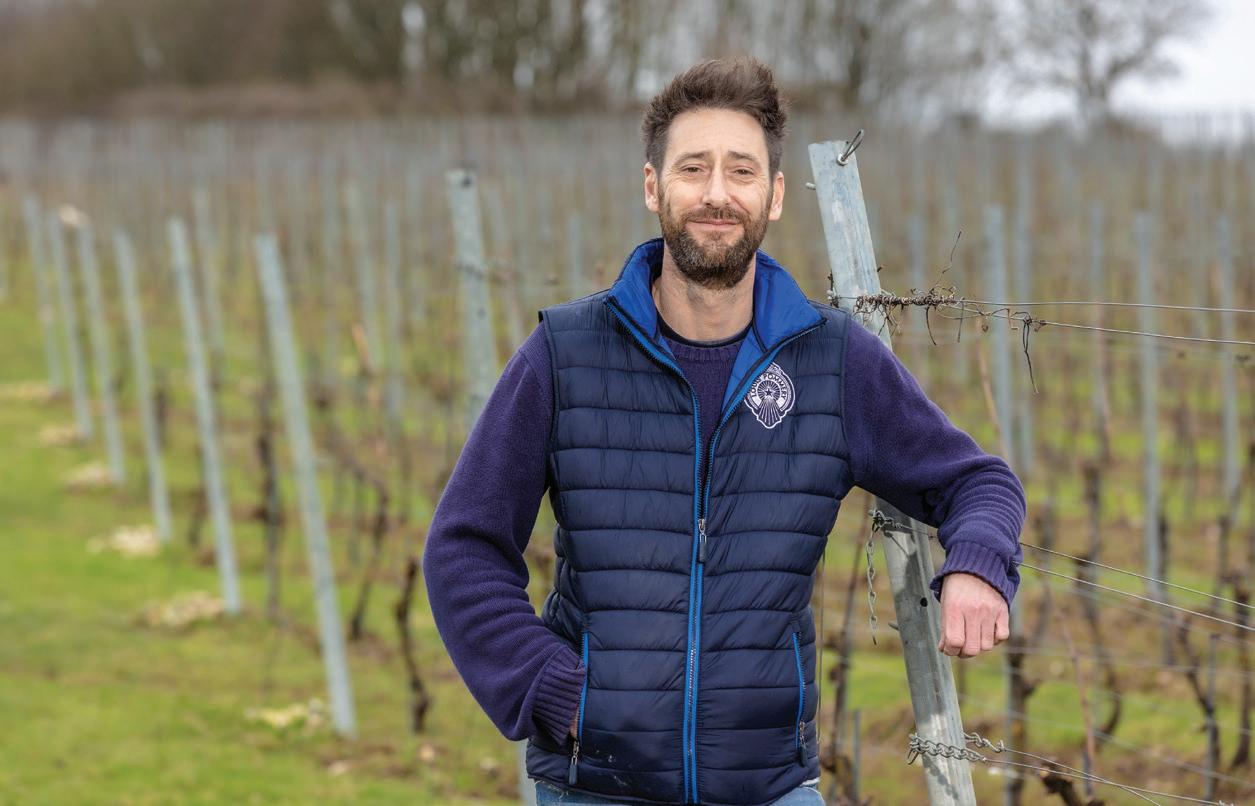 James Bowerman
James Bowerman
two members of the team from France and myself all trying not to show that we were from Louis Pommery which was very difficult,” he added with a smile.
The chalk sits at 15cm to 25 cm below the topsoil across the site. To further reflect the geology the vines have been planted in very small blocks. These blocks range in size from 0.7 of a hectare to 2.5 hectares allowing differing techniques to be applied at a level that is astoundingly precise. James likened the effect to “a palette of paints and at harvest you want as many colours as possible.”
It is obvious that although having the title of head winemaker Will also loves being in the vineyard. Working in the vineyard has helped Will to get to know the different nuances of the planted blocks. As an example of how this knowledge has benefitted the wines he lists Fork Road Block 20 as a premium block of Chardonnay and also notes that Alresford Hill Block 11 is a good example of how Pinot Meunier works differently in Hampshire than it would in France. “Here the Pinot Meunier has depth and complexity with blackcurrant notes,” he explained. <<

31 31
RELIABLE CLOSURES THAT HELP SEAL, PROTECT AND ADD VALUE TO BRANDS Quality Stoppers and Closures Since 1774 +44 (0)1844 203100 sales@rankincork.co.uk rankincork.co.uk CROWN CAPS SPARKLINGWINECORKS TIN &POLYLAMCAPSULES HEATSHRINKCAPSULES FOILS STILLWINECORKS WIRE HOODS APRIL 2024 | VINEYARD
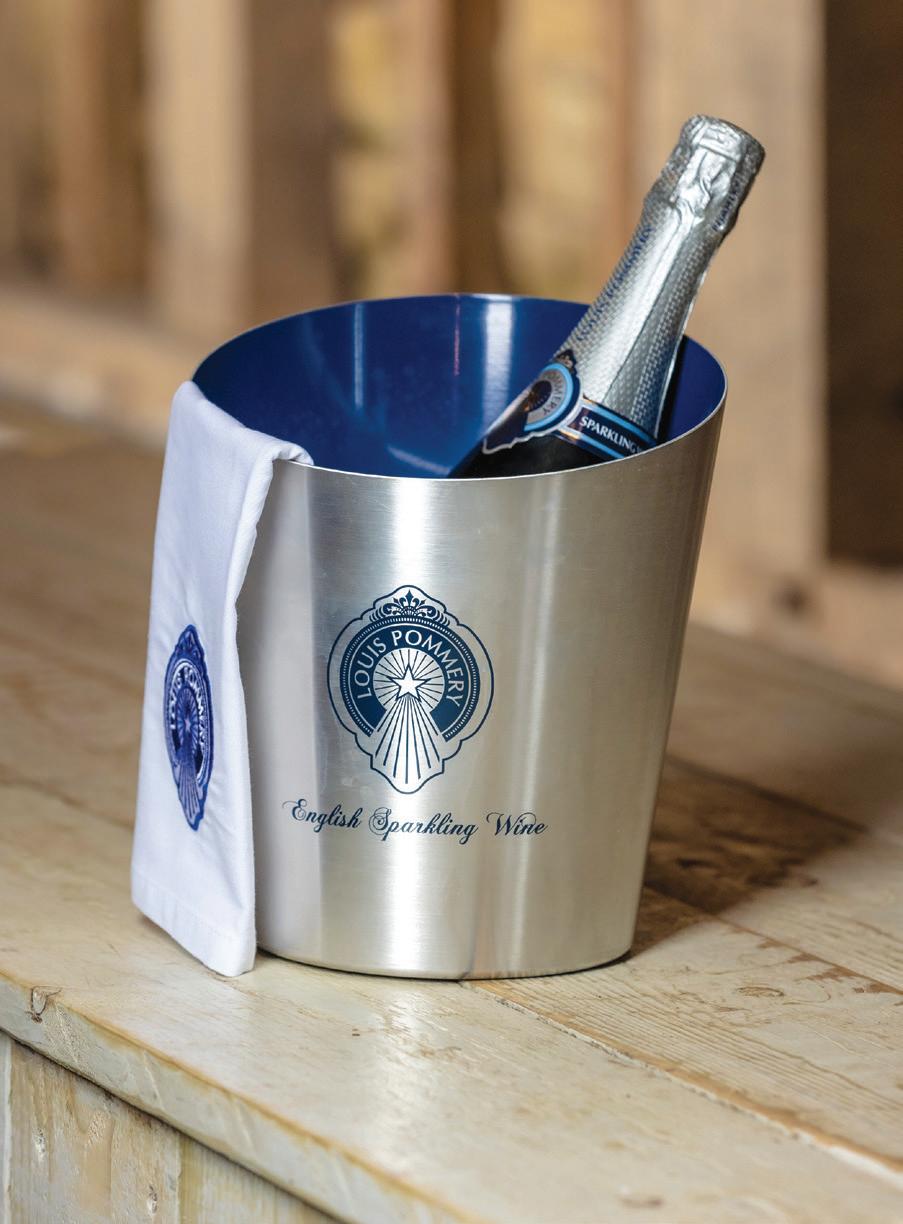

<< Pointing to the exciting future ahead for this vineyard Will also mentioned that 2023 had produced some outstanding Pinot Gris. Pinglestone Estate has a measured approach to producing wine and Will explained that there will be a prestige cuvée but that this will only be attempted once they are sure which blocks are consistently producing fruit of the desired quality.
Out in the vineyard Red Kites circle overhead and the sight of these glorious birds of prey led to a discussion about the balance of predators and pests. A complex eco system is being encouraged at Pinglestone so the bird population is actively being encouraged but only so that it is in balance with the insect population. “Hedges and ancient woodland provide a natural reservoir of wildlife and we have 17 wildlife boxes on site,” said James. The attitude here is that a pest is only a pest if there is no natural predator to keep it in balance.
Across the Vranken Pommery Group there have been moves to highlight the biodiversity of vineyards “we have been allowed to each bring our own ideas and have been supported by the group to push each other,” James added.
Respect for the land and ecological diversity are on display everywhere at the estate and there have been no herbicides used. As evidence of this there are a few stakes in the ground that James explained are there to protect a flower species called Pheasants Eye. Pollinated by insects this now rare flower is testament to the ecological work that has been undertaken on these chalky slopes. When I mention to Will that vineyard work can be lonely he smiled as he replied: “There is so much life about in the vineyard it would be impossible to feel lonely.” James also highlights how surprised the visitors from France are by the variety of life to be found in the soils, hedgerows and skies.
Frost has been making headlines worldwide in recent years and frost can
Respect for the land and ecological diversity are on display everywhere at the estate and there have been no herbicides used
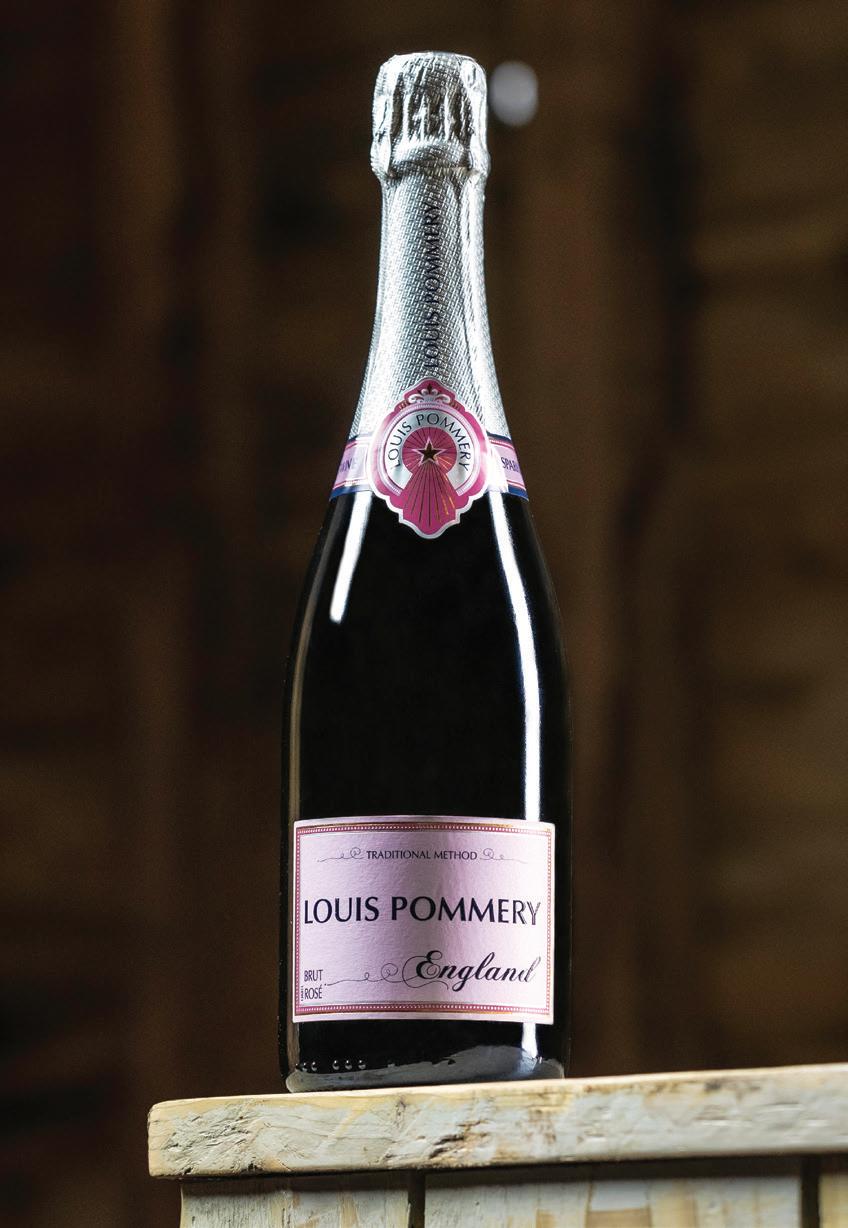
be a problem for the vineyards across Hampshire. At Pinglestone there are currently several frost prevention methods in place. These include fans and bougies but in the future the vineyard will be looking towards new technology such as sprinkler systems to mitigate the frost risks in this part of the world. The potential for frost damage was a consideration when the vineyard was initially planted with the Chardonnay being planted in the least susceptible area. “We have only ever had minimal frost losses,” said James. With a vineyard team of only four full time staff including Ben Tooley and Louis Wales the whole team is connected to the complete process from ground to glass however during times of high pressure extra help is provided by C&E Vines Labours Ltd. At harvest this consists of a 40 strong team that is able to deliver flexibility. Some of the team return to the vineyard at harvest having helped during other tasks such as pruning. “Hand harvesting really connects people to the environment and it is great to see the pride the team take in the harvest,” Will explained.
Pinglestone Estate is a wonderful blend of the old and the new. The Estate leases a beautiful barn built in 1478 for the Bishop of Winchester which provides a wonderful setting for the tastings that they provide to the establishments that carry Louis Pommery England. Currently around two thirds of sales are to the on-trade with local and London-based accounts making up the mainstay. Sommeliers and other restaurant staff are invited to visit the estate so that they can establish a real connection with the wines they serve in their restaurants.
Standing in this barn Will takes the opportunity to speak about how modern technology has been employed at the vineyard. Solar Radiation Mapping is being used to identify how different blocks will ripen and has also made it possible to identify blocks that may not need leaf stripping in certain seasons, and this is just the beginning. There has also been low level drone imagery used to pick up chlorophyll levels within leaves so performance information can be gathered and acted upon before the eye can even see any visible change. This is the very epitome of using state of the art technology to compliment the regenerative practices and natural ecology that are in practice in the vineyard.
The juxtaposition of this conversation in a beautiful 15th century building highlights the very essence of Louis Pommery England. In a large group it is surprising to find that everyone is pushing towards creative excellence in an individual way with all the benefits and few of the possible drawbacks. Pinglestone Estate is looking towards the future whilst being built on the past with the one only serving to improve the other. To adapt a popular idiom, it is like having your wine and drinking it too.
32 32
APRIL 2024 | VINEYARD
Will Perkins
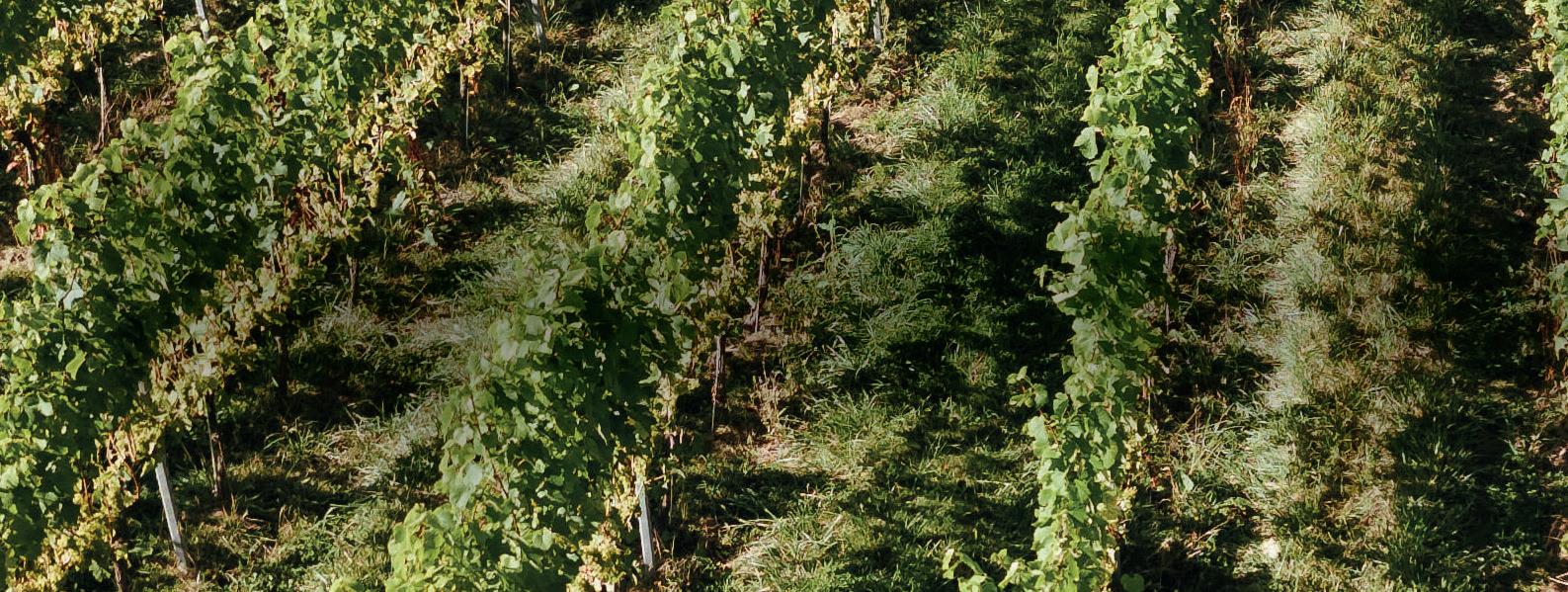
Experts in your field
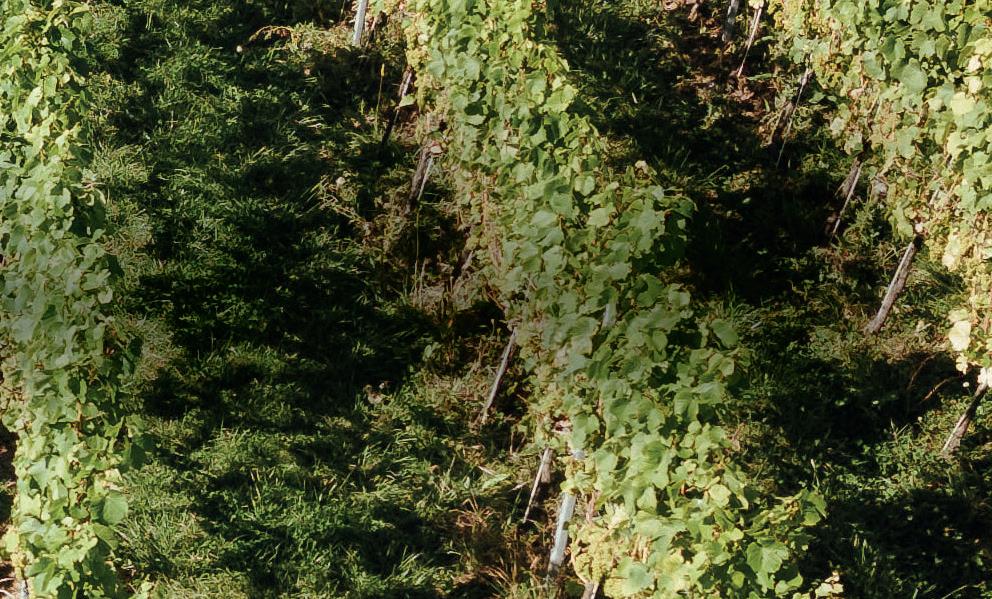
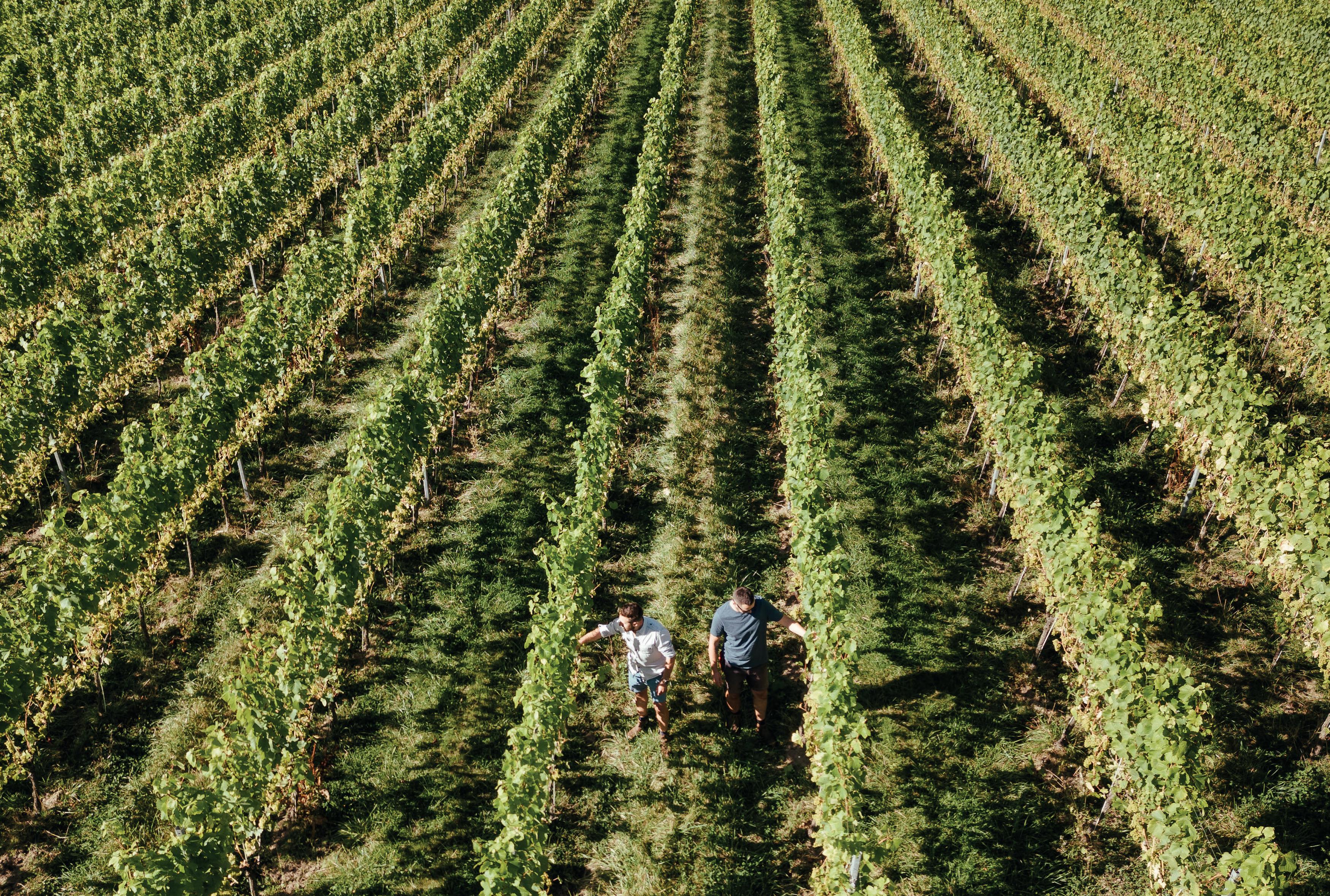
Vinescapes is the UK’s Premier vineyard and winery consultancy - precision viticulture from ground to grape to glass. Our team have the knowledge and expertise to deliver exceptional vineyards, which lead to exceptional wine.
When it comes to your vineyard or winery, we take care of everything. We’re a turnkey solution, get in touch, and we’ll show you how we can make it all happen for you.
 Vineyard Site Evaluations
Vineyard Establishment
Vineyard Management
Winery Scoping & Design
Vineyard Site Evaluations
Vineyard Establishment
Vineyard Management
Winery Scoping & Design
01306 733960 | INFO@VINESCAPES.COM | WWW.VINESCAPES.COM
PATRON
Winemaking Consultancy Research Training Investment Advice
SILVER
Picking out the SFI options
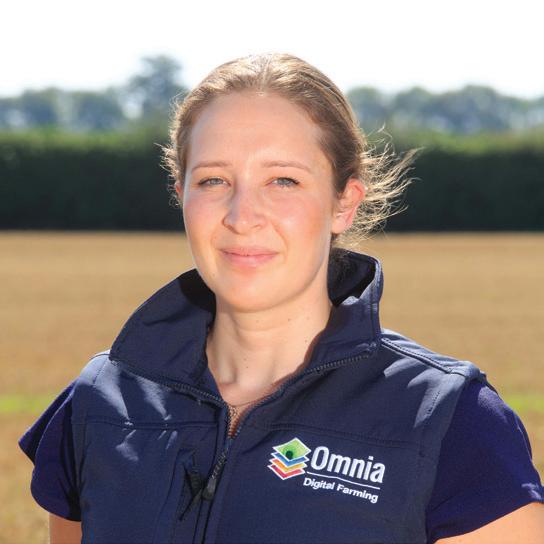
There are some excellent opportunities for vineyard owners within the new Sustainable Farming Incentive (SFI), as Hutchinsons head of environmental services, Georgina Wallis explains.
The SFI may seem like it is primarily aimed at conventional arable or livestock farmers, but there are many options within the scheme that fit well within vineyard situations.
From “easy wins” around soil or nutrient planning, to more complex actions involving the establishment of flower-rich margins or winter bird cover, there is something in the scheme to suit most situations, allowing growers to tap into useful additional income and potentially bring wider benefits to the vineyard and the environment.
Start simple
Before jumping straight into the most lucrative SFI options, it is essential to consider what will work in your situation, and the best advice is to start simple. The SFI is very flexible, so there is plenty of scope to add, or reduce (by up to 50%), the amount of land in different options year-on-year.
Three of the easiest options to start with are the soil, nutrient, and integrated pest management plans (SAM1, NUM1, and IPM1). Many growers are often doing much of this already, and these three options together could be worth £1,938 a year for a 10ha vineyard. They will also allow you to claim the SFI management payment, the rate for which has recently increased.
Applying for the SFI does require a bit of extra admin time, but the process is usually pretty straightforward, providing land parcels are up to date with the Rural Payments Agency.
Build actions gradually
The next step is to consider any other SFI options that could be easily implemented on land around the perimeter of the vineyard, where there is little risk of impacting on day-to-day management.
Hedgerows are a good natural asset to begin with, as there are various actions for assessing, managing and maintaining hedgerows and hedgerow trees. Payments range from £5 per 100m for assessing and recording hedgerow condition on one side (HRW1), to £13 per 100m for managing hedgerows to a range of different heights to provide a variety of
habitats (HRW2) – again on one side.
Leaving grassy field corners or blocks (AHL3, worth £590/ha) could be another useful option to consider, perhaps where there are uncropped frost pockets, although it is worth noting these areas cannot be used for turning machinery on, or other activities, such as stacking crates, or other equipment. Slightly more involved options might be to establish winter bird food or pollen and nectar mixes around the outside – potentially bringing benefits to vine productivity from beneficial insects. Again, make sure there is enough space to establish such strips without hampering daily activities.
At the highest level, for those looking to fully integrate more complex options into the vineyard, there may be opportunities to establish certain types of cover down alleyways, such as pollen and nectar mixes, cover crops, or a legume fallow. IPM4 also offers a payment of £45/ha to not use insecticides, so may be something to consider where growers are already avoiding their use.
However, always check the details of what you can and cannot do within any option before signing up, as they must not be to the detriment of the vines or day-to-day agronomy. Again, the flexibility of the SFI could be an advantage here – if there is something you want to try, perhaps do so on a small area first, then look to expand it in future years if successful.
Other funding opportunities
Beyond the SFI, it is always worth looking out for other sources of grant funding, either from central government, local authorities, water companies, or others.
The Farming Equipment and Technology Fund, for example, provides capital grants of £1,000 to £50,000 for specific items of equipment and technology that will improve productivity and is available to farming, horticultural or forestry businesses in England. Eligible equipment in the 2024 scheme includes items such as a tractor-mounted flail mulcher, digital weather station, rainwater harvesting system, and mechanical weeding machines.
SIMPLER SFI ACTIONS TO CONSIDER
SAM1
plus £97 per agreement
HRW1 Assess and record hedgerow condition
HRW2
SFI management payment Available up to first 50ha entered into relevant actions £40/ha (up to £2,000 total per SFI agreement)
DESKTOP www.hlhltd.co.uk ENVELOPE information@hlhltd.co.uk phone-alt 01945 461177 34 34
Georg aWal l i s
Code Action Annual payment
£6/ha,
Assess soil, test organic matter and produce a soil management plan
£1,129
IPM1 Assess integrated pest management and produce a plan
per year
NUM1 Assess nutrient management and produce a review report £652 per year
£5 per 100m (one side)
Manage hedgerows £13 per 100m (one side)
APRIL 2024 | VINEYARD AGRONOMY DIARY
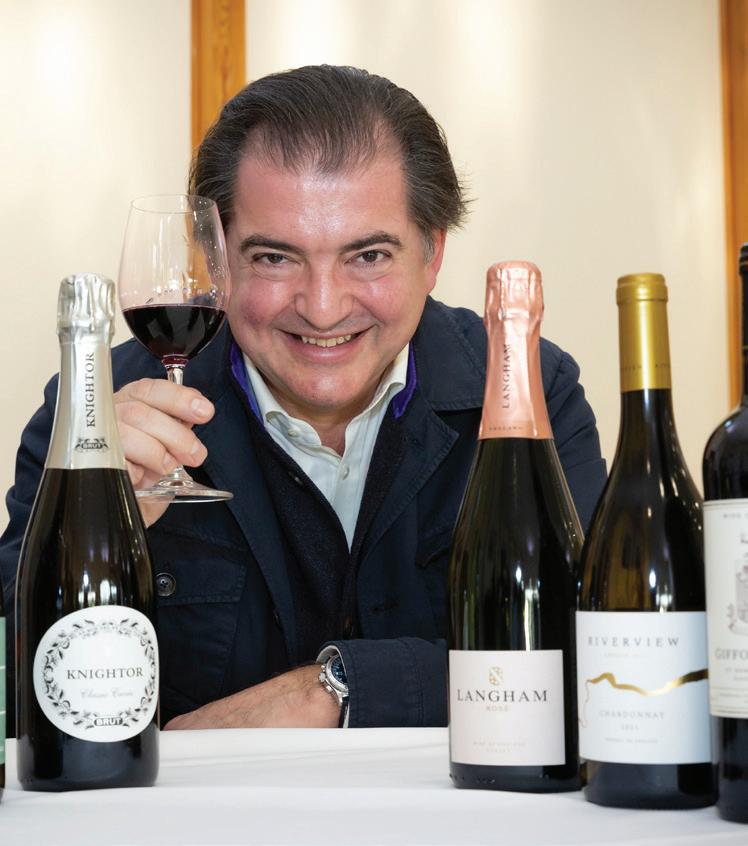
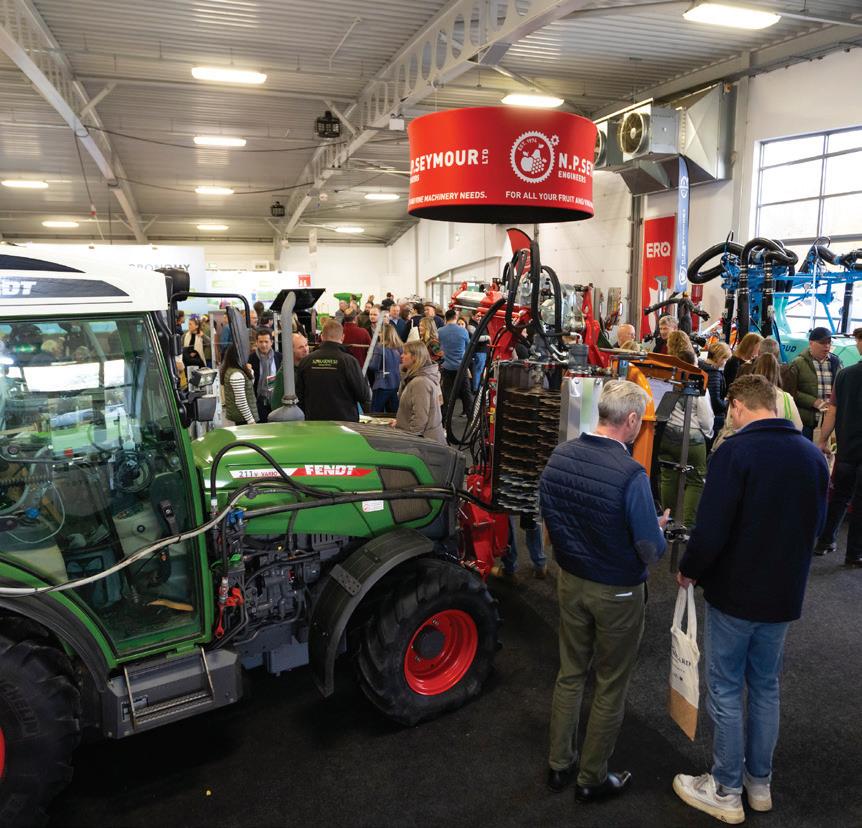




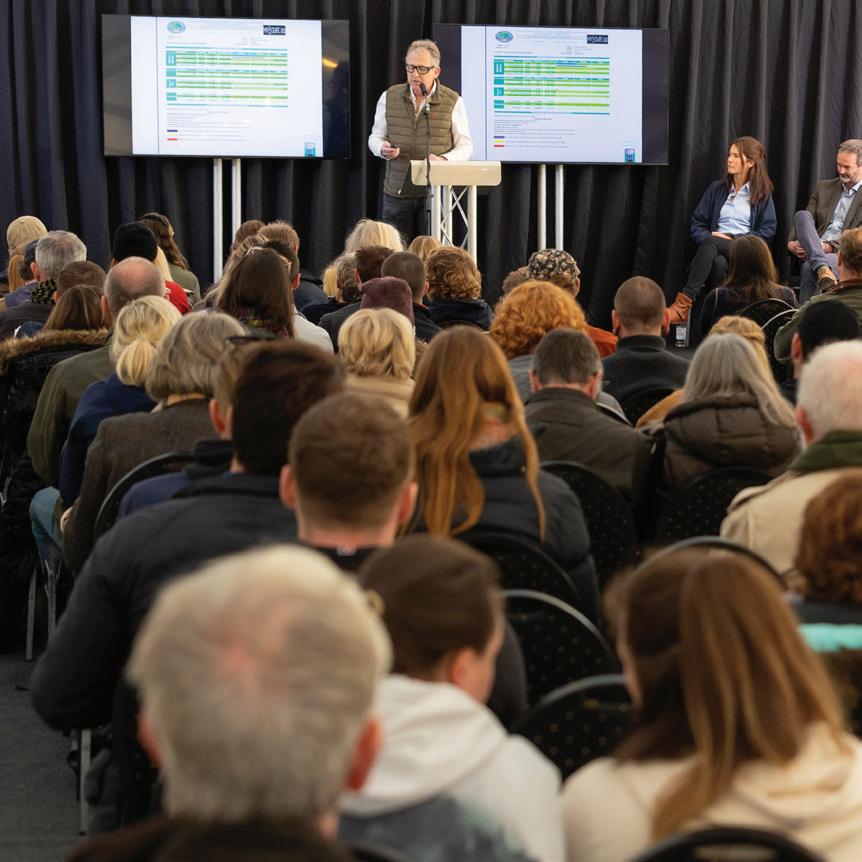

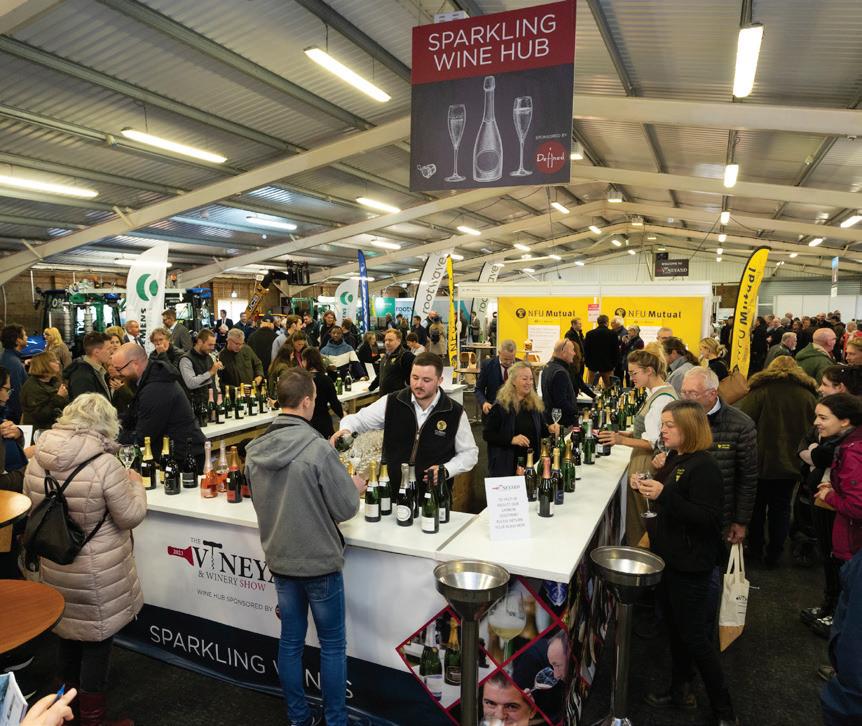


FOR GENERAL ENQUIRIES PLEASE CONTACT ONE OF THE TEAM: For viticulturists in Great Britain Booking enquiries Jamie McGrorty 01303 233883 In association with 20th November 2024 Kent Event Centre, Detling, Maidstone, Kent ME14 3JF 2024 JOIN US IN 2024 Sponsored by Vitifruit Equipment Sales and Hire
The importance of mapping before planting
When evaluating land for its suitability to establish a vineyard, upon visual observation it may look fairly uniform from the surface, however underground, it is likely that differences in the land’s properties occur.
Topographic and subsoil differences create variation across a site and affect the suitability and eventual quality of the grapes grown on it. These patterns of variation tend to become stable over time. Identification of the different zones provides valuable knowledge that can be used to inform the design of the vineyard and its planting strategy. This enables the grower to formulate a more precisely targeted management approach to optimise results once the vines are established. This leads to significant economic and qualitative benefits for both grape growers, where vineyard operations can be tailored to the different zones in a site, and for winemakers, where winemaking strategies can either ensure consistency year-to-year or bring the most out of the variable terroir the grapes are grown in.
One useful way to identify these variations is by using different resolution maps to characterise a site, followed by in-depth analysis and ground truthing (i.e. the act of collecting site specific information).
Types of mapping
The goal is to use a variety of geographic maps which provide different information. Lower resolution maps from remote sensing, such as elevation or topographic maps, provide a general characterisation of the land and useful information (e.g. aspects and slope gradients) which can be used to determine the location of blocks and the orientation of rows for planting.
Higher resolution maps can be created using technologies, such as electromagnetic conductivity mapping and gamma ray detection mapping. The data collected helps define the soil and creates colour contour maps depicting the spatial layout of the soil’s variability across a site. To capture the actual differences in the zones, the physical subsoil properties need to be documented and analysed, typically by digging soil sample pits.
The primary aim is to help predict vine performance and nutritional
Infrared high definition soil mapping
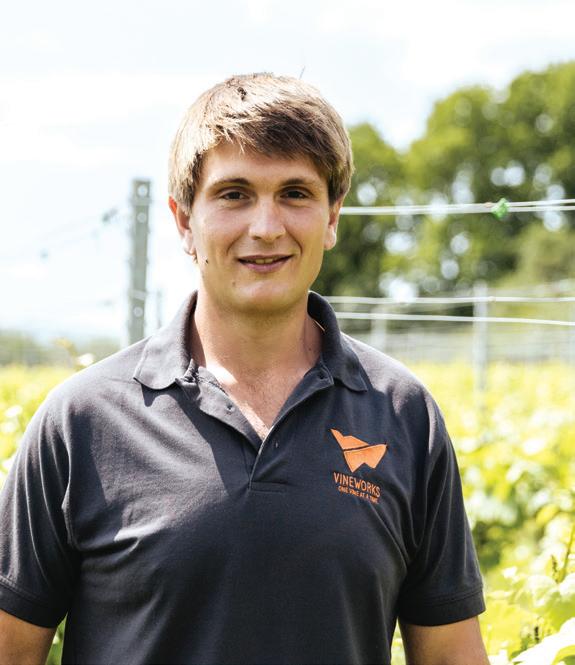
availability once a vineyard is planted, through the different soil horizons present, the soil texture, clay content, potential available root depth, and the availability of nutrients (among other factors).
Using mapping to inform a planting strategy
The information gathered from mapping technologies can be used to inform which rootstocks and grape varieties to use to take full advantage of the site’s variability.
For example, if a site presents zones with variability in terms of soil nutrient availability, clay content and topsoil depth, rootstocks with different vigour can be selected and/or the vine spacing can be altered to ensure more balanced growth across the site.
If a topographic map shows that a site has slopes with different aspects or significant undulations, vineyard blocks can be adapted using later budding varieties to reduce spring frost risk, rootstocks that promote later ripening, or earlier ripening grape varieties.
Furthermore, the knowledge of what lies beneath the topsoil can be useful when variability exists concerning the amount of active calcium present as certain rootstocks are more tolerant to calcium rich soils than others. In cases where greensand makes up large proportions of the subsoils, knowing that these soils are likely to be rich in potassium, the selection of a magnesium absorbing rootstock and a grape variety with lower magnesium requirements may be an easier way to mitigate for future deficiencies, as potassium tends to lock up magnesium in the soil.
For logistical and practical reasons, it may not be possible to accommodate all such differences, so compromises must be made, especially since vineyard blocks are usually perfect geometric shapes, but soil zones are not. However, there is value in the knowledge gathered from these tools therefore obtaining detailed mapping before planting a site is worth consideration. Mapping data is also useful in understanding established sites in order to adjust the management strategy accordingly.
At VineWorks, we use the latest technologies and research to give our clients tailored advice to suit their vineyard’s specific needs to achieve the best outcome one vine at a time.

36 36 P k Ma r tin V b l i s h m e n t C DESKTOP
ENVELOPE sales@vine-works.com phone-alt 01273 891777
www.vine-works.com
THE VINE POST
Photo: © Antonov Roman/Shutterstock.com

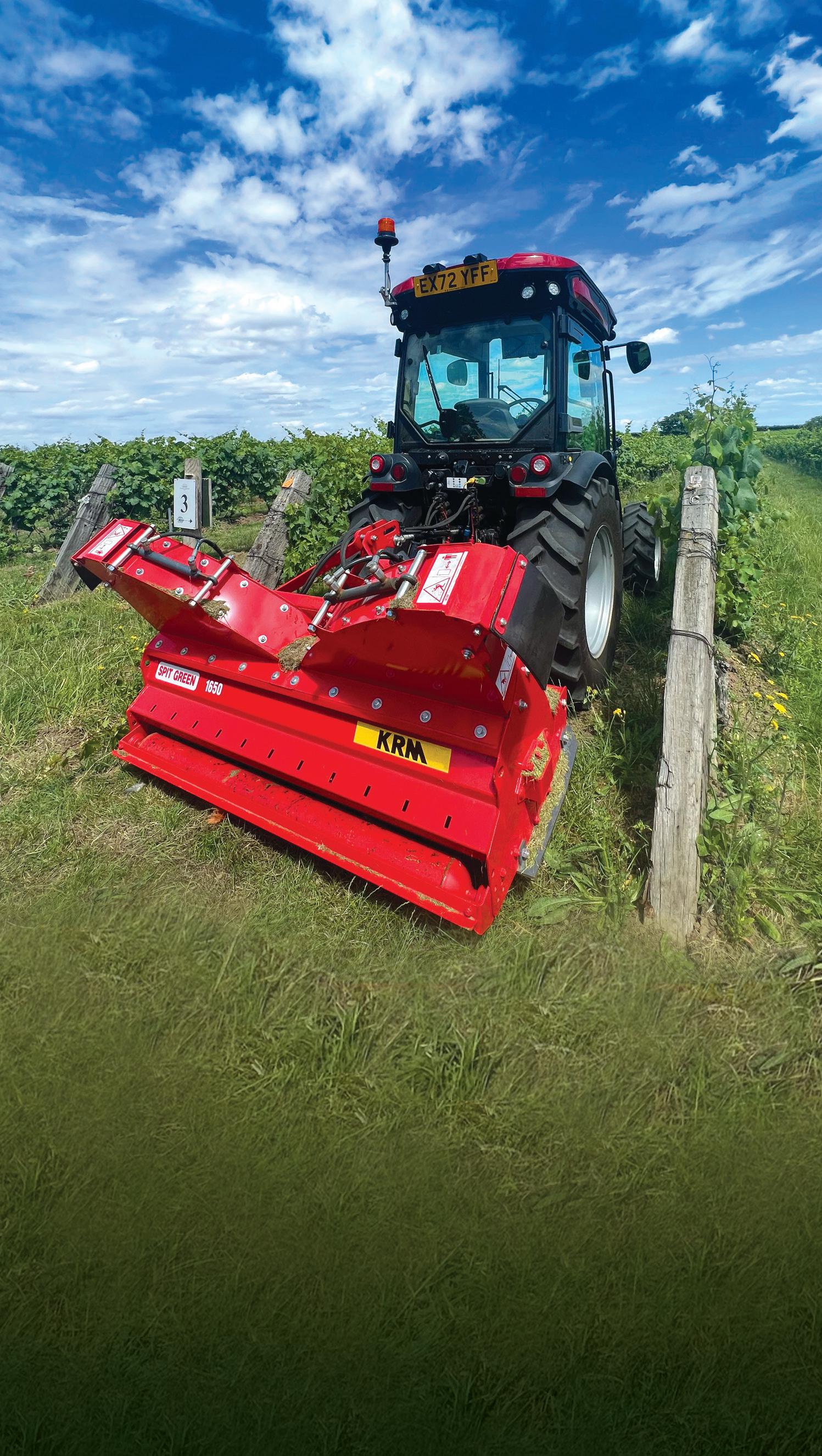
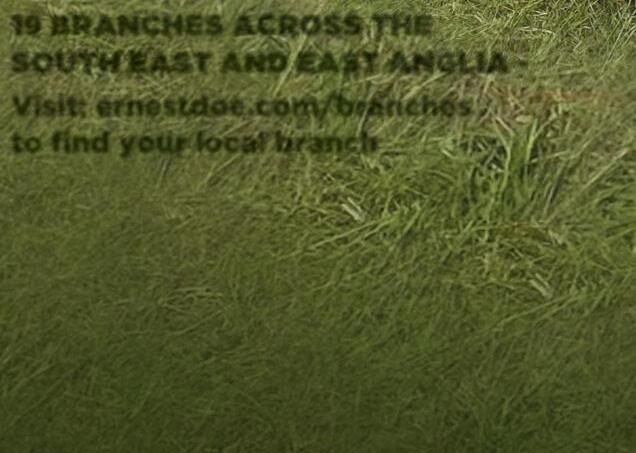








19 BRANCHES ACROSS THE SOUTH EAST AND EAST ANGLIAVisit: ernestdoe.com/branches to nd your local branch A27 M23 A23 A22 A3 A31 M3 A259 A2 M20 M2 M25 M25 M11 A1 A928 A12 A14 A14 A1 A47 A10 A17 A47 A12 A1 Eastbourne Portsmouth Cowes Lymington Eastleigh Crawley Uckfield Tunbridge Wells Dover Maidstone Guildford Staines Croydon Rochester Dartford Slough LONDON Watford High Wycombe Stevenage Luton Royston Hertford Harlow Chelmsford Bicester Milton Keynes Bedford Ipswich Bury St Edmunds Cambridge Northampton Kettering Peterborough Boston Sleaford King’s Lynn Ely Norwich COLCHESTER FULBOURN LITTLEPORT MARLESFORD FRAMLINGHAM FAKENHAM SUDBURY FYFIELD ESHER DARTFORD RINGMER ALBOURNE NORTH WALSHAM ROCHFORD WYMONDHAM BRAINTREE ULTING M4 M40 BENINGTON M1 ASHFORD ERNEST DOE ERNEST DOE POWER THE FRUIT & VITICULTURE MACHINERY SPECIALISTS ERNEST DOE & SONS LTD AGRICULTURE AGRICULTURE
Choice of rootstocks can influence the crop
Vines are known for their ability to grow in many differing soil types, and locations.
Whilst vines can be seen to have evolved to grow well around the fringes of forest trees, on which they climb up unhindered, we now expect them to adapt to our needs in trellis systems, grasslands, grafting partners and frequent pruning.
Our management needs are designed to produce what we view as a crop most suitable for efficient wine making results. But where to start the planting?
As mentioned the vines adapt to differing soil types, and indeed we can further influence this by our choice in specific rootstocks. These have been selected for holding a range of merits, and indeed work continues by people seeking ever improved types.
This being relevant for some pest/disease issues, or perhaps future drier growing seasons.
There are groups of rootstock types, favoured by one social area of vine growers, say the growers in France, where others, in Italy or Germany might favour others.
We, as a nursery, are frequently involved in developing blocks of vines from differing rootstock choices, as field trials. Some of these
selections were bred a long time ago, but are now being re-evaluated. Some are from more recent creations.
Whilst travelling, or working, in differing countries, I have noticed some of these different rootstock choices as well as the local favoured soil management methods.
For example whilst a rootstock choice such as 3309 C is favoured for its ability to set a moderate quantity of grapes, (easy to manage,) and noted for giving a more consistent and higher level of ripeness, this is also favoured for 'agile calcaire', the calcareous clay.
This in turn is frequently found to be a good soil type for under vine ploughing, and indeed alternative/or periodic row ploughing. Resulting in perhaps as much as 60% of the vineyard weed free, and the surface a broken clump type that inhibits capillary 'lift' of soil solution to the surface, (where it evaporates away.)
To use rootstocks known for specific attributes, and then manage the soil in a differing way, will give a different outcome. I have grown vines on 3309 C, on clay, and they have done well, however it is worth noting that clay holds onto the soil solution where other
soils might be less inclined to do so.
Likewise my old hippy friends who favour vineyard management noted for a mass of diverse differing wild plants, frequently do so whilst using 5 BB K. These 'wild weeds' are aggressively competitive for the available soil solution, and this rootstock is strong enough to live with this.
There are rootstocks found closer to drier mediterranean regions, (gravel/small stone chip soils) giving deeper growing roots. Choices can also be influenced by the specific mineral attributes of a soil. For example for soils with a high level of calcium the rootstock Fercal has been developed. (This gives a nod of acknowledgement to the Ferrous-Calcium balance in a soil, where this is high calcium tolerant.) The other rootstock of recent note from France being Gravesac; used in washed out low lying gravel terraces to good effect. These are calcium deficient usually, with a correspondently higher influence from iron.
On the other hand... you could simply take cuttings from an existing vineyard, and use these to start a new block. I did this with Pinot Noir in New Zealand, and they showed
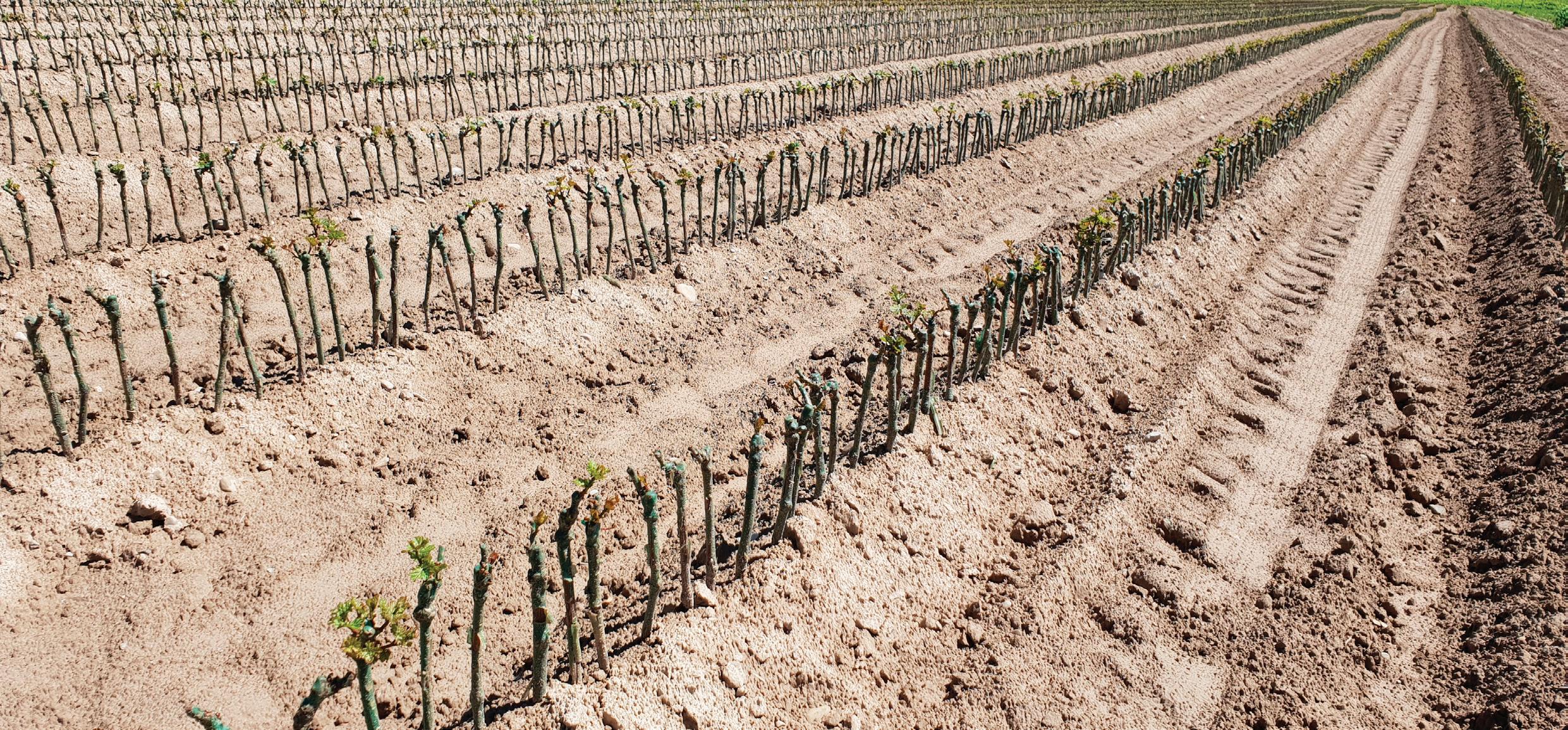
38 38
Lachen-Speyerdorf, Neustadt an der
ENVELOPE samdoncaster@hotmail.com A VITICULTURIST'S DIARY
Sam Doncaster works for Volker and Marion Freytag, of Rebschule Freytag,
Weinstrasse, Pfalz
APRIL 2024 | VINEYARD
themselves to be drought tolerant and gave as good, or better, grapes as compared to 3309 C, and certainly better than 101-14 (Millardet et Grasset,) (Couderc, Kober, Paulsen, Richter... the list goes on. A lot of people have done a lot of work in both creating rootstocks and evaluating them.)
Not a lot is written about rootstocks for cool climate winegrape production, but the Hungarian research grower in South Africa, Pongracz wrote a really interesting book about his experiences in trial work. Otherwise talk with your local colleagues, an experienced advisor or two, or phone your favoured nursery. So much for an introduction about the stuff under the ground, but there is plenty more to consider.
If you can forgive me, I will quickly outline my vineyard location choice in New Zealand. My thoughts were greatly influenced by some previous experience I had whilst working in France.
I did not want to manipulate the soils greatly, and I was not interested in using irrigation.
Whilst a lot of the New Zealand industry favoured wide herbicide strips, abundant irrigation, soil analysis/petiole analysis and applications like foliar 'feeds' and/or 'bud builders', they also had a low density of planting and high number of canes laid down with large numbers of buds. This approach is not for me.
For some of my time there I was working as an irrigation technician for this I monitored the ground water levels. This gave me an insight into how some people simply love spread sheets with a mass of numbers. Much the same as working with soil/petiole analysis...just a myriad of numbers and lumpy graphs. This upset or offended the artist in me so I walked away from it.
My vineyard lay on a clay ridge that ran south to north with rows that ran down the east side of the ridge, that stopped pretty much on the


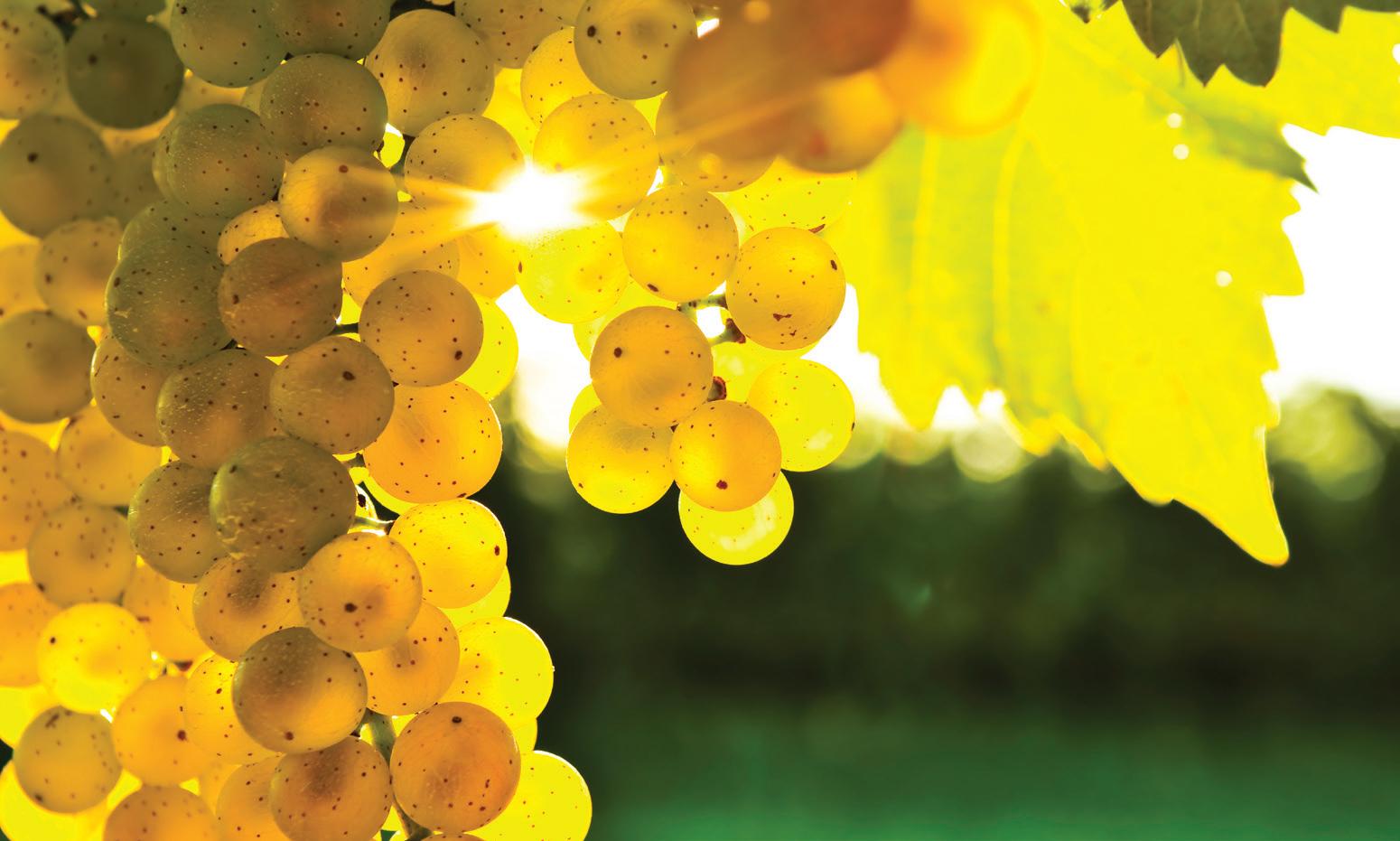
spring line that ran along the lower levels. I found an aerial photo that showed this line by a change of plant types in the grassland.
The 'mist line' that hung on this lower hillside in nights of still air, also lay very much at the same level as this spring line. The vines were planted at two metre by one metre spacing, fairly conventional stuff.
As the morning sun came up it quickly dried the dew on the grass that grew in the rows.
Then as it swung north, this being the southern hemisphere, the canopy gave some shadow onto this soil. When in the mid afternoon it was sufficiently over in the west, the late and very warm rays of sunshine came closer to running parallel to the hillside angle, and thus did not bake the soil overly hard.
As the angle of the hill was quite steep, then in periods of heavy rain much of it simply ran off it. Over all the soil got neither very wet, or became very dry.
The success of the decision to plant here, became noticeable by the significant increase in worm casts as the worm population grew at an extraordinary rate.
No irrigation, no fertilisers, minimal fungicides as it was above a mist line and was warm with gentle air movement shifting around the larger valley and coast line and as thin a line of herbicide as could be got away
with, under the vines.
Situated about 15 to 20 metres above sea level with a long growing season. On the occasional day of more robust winds, these occurred blowing in from the south and west; the sheltered angle from over the ridge line. A good place to live, if for nothing else.
Actually the soils could be described as being fairly rubbish, but this needs a qualifier.
The 'kitchen garden' was a struggle, where with only some fairly massive efforts in making compost type additions did anything much grow there.
However trees did do well and it was in a region noted for fruit trees. In one of my very occasional dabbles into soil or petiole analysis, I came up with a couple of significant concerns.
Some people might say the soil was 'sour', and certainly the acid level increased the deeper I looked, (e.g. down in the root zone.) I put on a goodly dusting of lime every couple of years, and for a dozen years. This certainly boosted white clover growth, and probably favoured the worms as well. However I never got to know just how effective this really was, as lime travels downwards through clay soils at a very slow rate. Heavy applications coupled to deep ripping and ploughing, prior to planting could well have changed that, this though was not my style of approach. <<




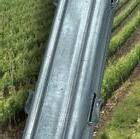

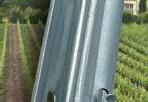


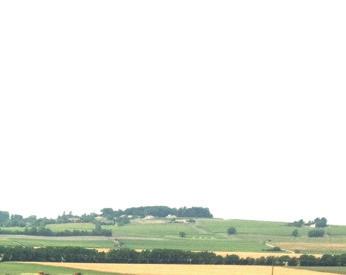



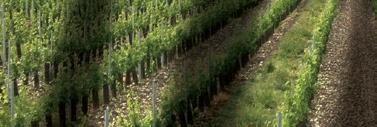



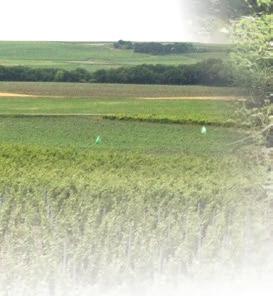











39 39
Equipping your Vineyard for Success
www.innoveausolutions.co.uk innoveausolutions@gmail.com 07576010088 Discover IDELYS, a French company providing essential accessories for your vineyard. Innoveau Solutions, official distributor of the brand SLPA® and IDELYS products in UK SCAN ME APRIL 2024 | VINEYARD
Specialized manufacturer from the southwest of France, producing steel vineyard posts since 1997.
A VITICULTURIST'S DIARY
<<
Later petiole analysis indicated a presence of iron in the vines at early grape ripening time, at a level that could only be described as stratospheric. (Four times the supposed accepted maximum and right off the scale of any graph.)
I had a feeling that this was going to be the way, and this was prior to planting and thus my vine choices. White varieties err towards a noticeable mineral character in fruit flavour, (where calcium richer soils give a more opulent, wholesome richness to grapes.)
Here in Germany it is interesting to note that in some hillside vineyard regions, a horizontal track, or headland, can be found on a strata of rock change. One side might be a noticeable iron rich sandstone, where the other side is a more calcium influenced soil.
Occasionally both above and below this strata change there are vineyards of Riesling.
Companies with both of these vineyards may well put out two, and differing, wines.
Naturally these vineyards have very similar climatic conditions in any given year, they being about 100 metres from centre to centre. (Perhaps the soils differ a little in soil solution holding abilities,)
Go to a good tasting and find these two wines...same wine maker...same year etc, and they are not the same wine which is interesting.
My choice in Chardonnay, was the clone known as 'Mendoza'. This has been considered as one of the most fruit abundant of clones, which suited me because I was looking to alleviate the effect of high iron in the soil. How this clone achieves this, is in part by its large number of very small berries, and thus high skin surface area per volume of grapes. It still carries a rather normal weight of overall kilo's per vine. It is high in acid, but this moderates in the wine making, and ordinarily high acid and high fruit couple together well enough.
The rootstock for this was Schwarzmann, from a similar background as 3309 C and 101-14, but an earlier budburst type.
Given that Chardonnay is early anyway, this gave a budburst usually two weeks prior to adjacent Pinot Noir on 3309 C.
In one year we experienced a wickedly cold frost, (for this region, Nelson, in New Zealand) at about -3°C or possibly -4°C, measured in the valley floor where most people lived.
The Chardonnay shoots were about 3 inches long at this time, and whilst the cold air rolled down and out of the vineyard where it damaged other plants in the valley floor area, it did nothing to the hillside vines.
Red varieties with high iron produce very dark and rather tannic grapes.
When I write dark it can be seen that the resulting wines are dark to look at when the wine has a back ground, but strangely are lighter or clearer when looked through up into the light. Thus they are not 'thick' like an Aussie Shiraz but are more like a cool climate Cabernet Sauvignon from somewhere like Pécharmant, a small sub-appellation of Bergerac, grown on soils where only reds are allowed.
Enthusiastic hard working young Kiwi's often fall into the trap of extracting too much from the grapes, as grown on these iron rich soils, where the resulting wine can be more akin to a black and earthy Corbières. Putting in enzymes and multiple plunging of the cap becomes excessive, and any delicacy of Pinot Noir can become lost.
As the vines were planted at 2m x 1m spacing, the pruning allowed for a conventional single Guyot approach, with the Pinot Noir this was a single 12 bud cane, but the differing rootstock in the Chardonnay appeared to favour a 10 bud cane.
The Chardonnay was much thicker wood and generally gave better individual fruit set.
The clusters were frighteningly tight, and where a local variant of a flower loving caterpillar set up home in the growing berries, they always got Botrytis.
However an introduced solitary wasp, Ancystrocerus a good caterpillar predator, was
common in this fruit growing area, and it kept matters in some balance.
The Pinot Noir I initially thought might favour a yield of about 1.5 kg/vine, but on average it ran a little over this. The best year was both a 9 t/ha year and a crop that had an early, high level of ripeness. The lowest yield came in at 6 t/ha but was also early. In the 10 years that I took a commercial crop off this block, the difference between the earliest and the latest harvest, was but two weeks. For eight years out of 10 this was at 13.5% alc/vol, with the other two years at 13% alc/vol.
The TA was fairly stable, but for reasons that I never understood, was a little higher than the main cropping area in this region, about 15 miles further east. (Possibly soils as this area was mainly alluvial gravels or warmer nights with lower diurnal temperature range.)
The harvest was always hand picked, and I always suspected a small portion of second set grapes went in there as well, this is a frequent issue with the family of Pinot varieties.
There was a small block of Sauvignon on the hillside, spotted with some erroneous replants, (which I came to believe were Grenache Gris,) The resulting wine from this, when blended with a small amount of wine from Marlborough for its fruit forward characters, say 10% or 15%, gave a wonderful and elegant wine, in my, that is the grower's viewpoint.
If the grower gets the homework right, and the vineyard is tidily managed, then the grower can believe in the resulting wine, it does not have to be a 'copy book' reflection of someone else's previous production. Go walk your own path.
Site selection, soil types, topography, rootstocks, varieties and clones to name a few, there is much to be considered. However learn to avoid a few 'cause and effect' trip hazards and there are many differing means to create wines of note, and wherever you choose to put roots down it's all in the soil...
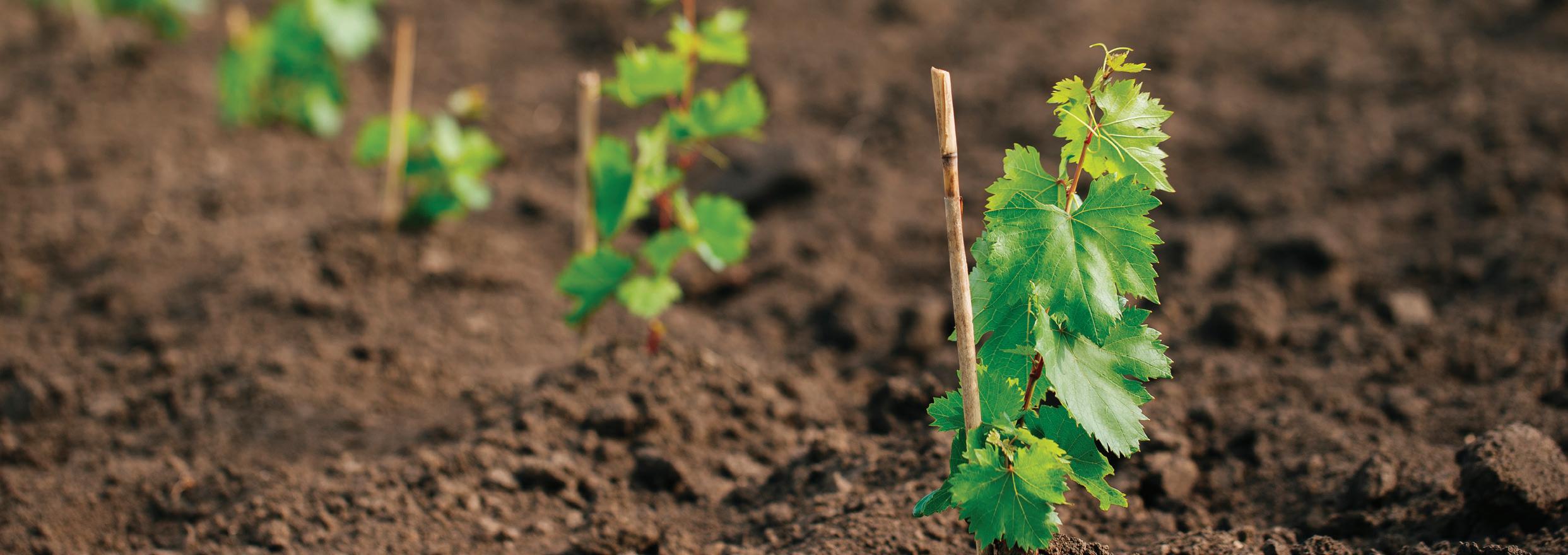
40 40

•
•
•
• Business planning & legislation, HMRC, WSB, etc.
• On an Ad-hoc, project, or annual retainer basis.
Contact:
e: sday@kingsthorne.co.uk
t: 07796 141390
w: www.kingsthorne.co.uk
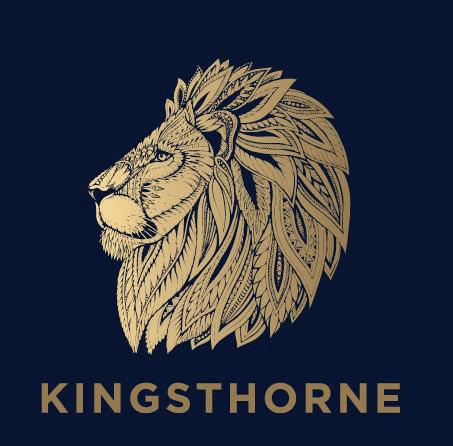
Vineyard candles

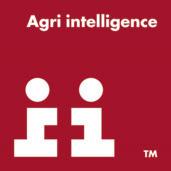
Long lasting candles with extra lighters to ensure quick lighting when temperatures drop rapidly during spring nights. By reducing radiation, increasing convection and air temperatures, vineyard candles alleviate the impact frost can have on delicate primary buds.
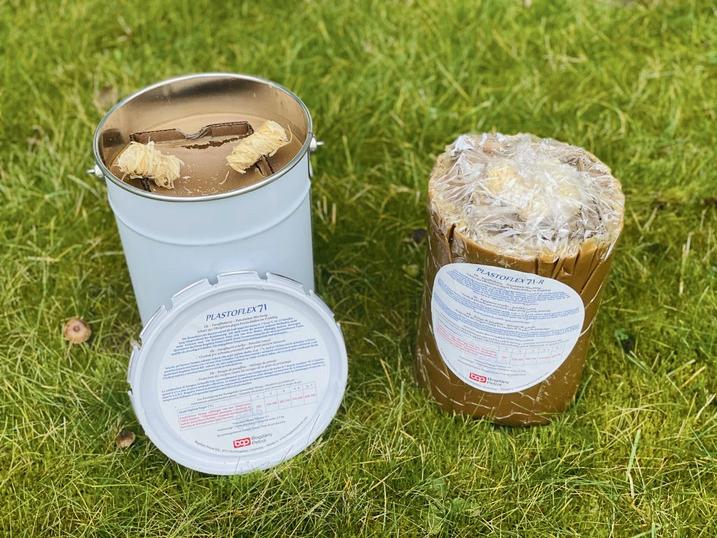
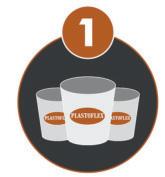
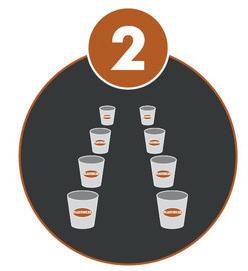
Quick and easy lighting
Burning and warm smoke for up to 10 to 12 hours
In stock ready for prompt delivery
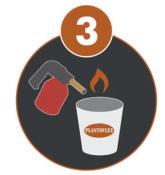



41 41
Planning for frost protection The beginning of frost protection
next season
Extinguishing & preparing for
Strengths:
for
GET IN TOUCH: 0845 607 3322 | info@agrii.co.uk Protect your vineyard against spring frosts! VITICULTURAL & WINEMAKING CONSULTANT - SIMON DAY.
Preparation
frost protection
30+ years of experience in UK viticulture and winemaking,
variety / rootstock and trellis advice
• Full site assessments and
pre-planting.
Vineyard management advice and mentoring.
Winery design and ongoing winemaking advice.
APRIL 2024 | VINEYARD
In competition...
The annual WineGB Pruning Competition is a fabulous opportunity for viticulturists from the UK to get together to celebrate the art of pruning. This year saw the event move to the West Country for the first time and it was great to see so many vineyard professionals come together on 13 March 2024 at Langham Wine Estate for the ‘Battle of the Secateurs’.
In weather which was cold but mostly dry, teams from Hattingley Valley, Bride Valley, Ridgeview, Vineworks, Vinescapes, Gusbourne Kent and Gusbourne Sussex went head to head displaying their skills to the judges and the spectators all of whom had an encouraging word at seemingly the right time.
Before the team event took place the solo pruning event was held. Phil Harris, Naomi Solomon, Daniel Bojan, Stephen Skelton MW, Dragos Nitu, Ned Awty, Adam Foden, Rebecca Mackie, Rebecca Bowyer and Chris Buckley were all those who had bravely put their pruning skills on display.
It was mentioned by several in attendance that the competition had attracted more female entrants than in 2023 which saw Naomi Solomon as the only female to enter but 2024 saw not only more female entrants generally but also saw Gusbourne Sussex enter an all female team of Claire Foden, Isabel Tucker and Kimberley O’Brien. “People in the industry are embracing the competition year on year,” said James
Dodson of VineWorks. “We have never been this far west and eventually we would like the competition to grow to include regional events and a grand final,” he added.
It was a privilege to witness this celebration of those who work so hard to improve the quality of grapes produced year on year. The excellent spirit in which the competition is conducted was illustrated by the fact that after the final call all the entrants decided to examine the work of the other competitors.
This year the team from Hattingley Valley consisted of Colin Hayward, the vineyard manager, Andrew Smith and Adam Mynot. “At Hattingley Valley the vineyard tasks are undertaken by a team of volunteers that have each been trained in various tasks and there are many who previously had very different careers,” said Colin. This means that unlike most teams in the event Colin was the only professional on the team. “The twelve minutes passed quickly,” said Adam. <<
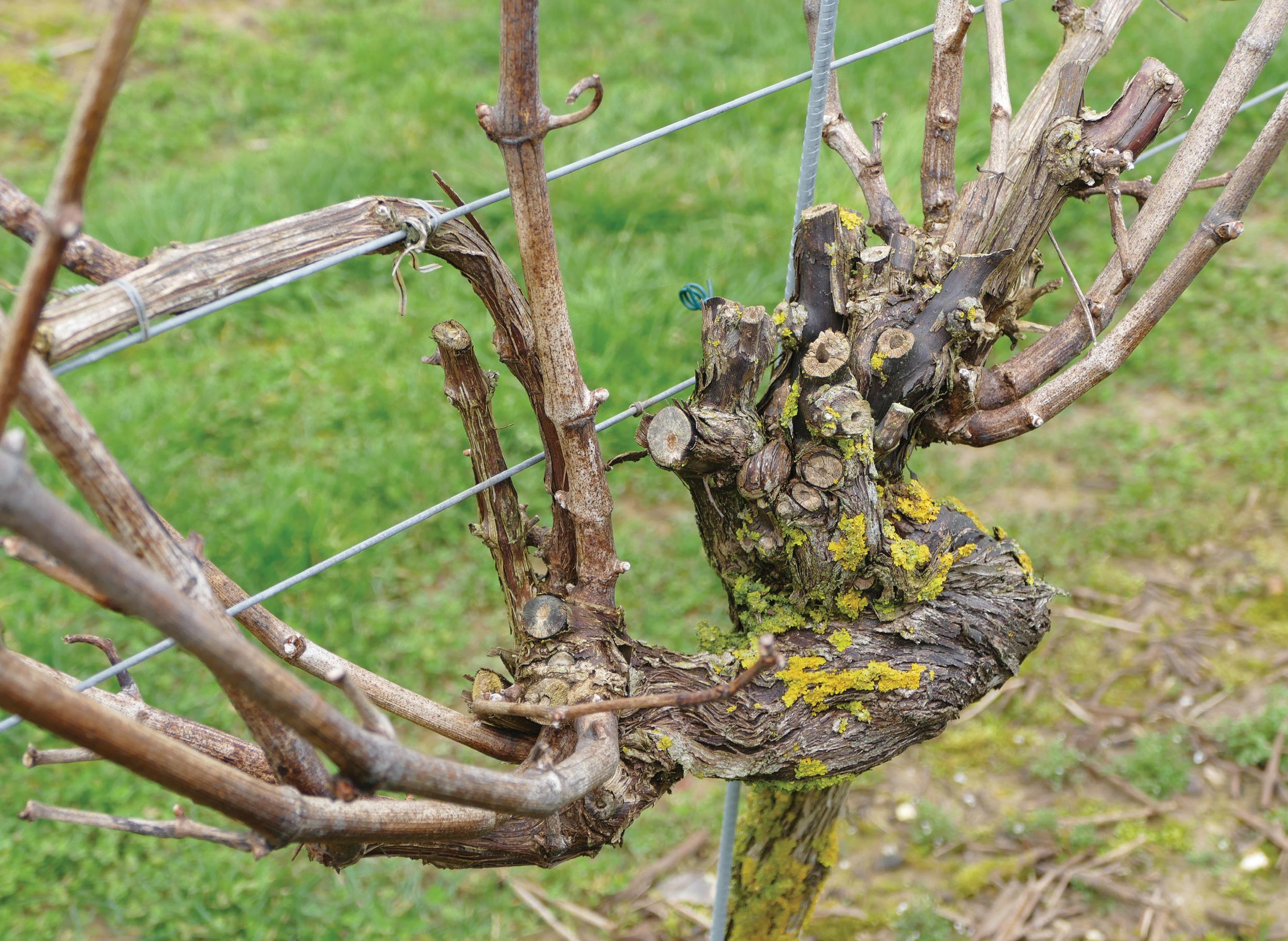
42
WINEGB PRUNING COMPETITION



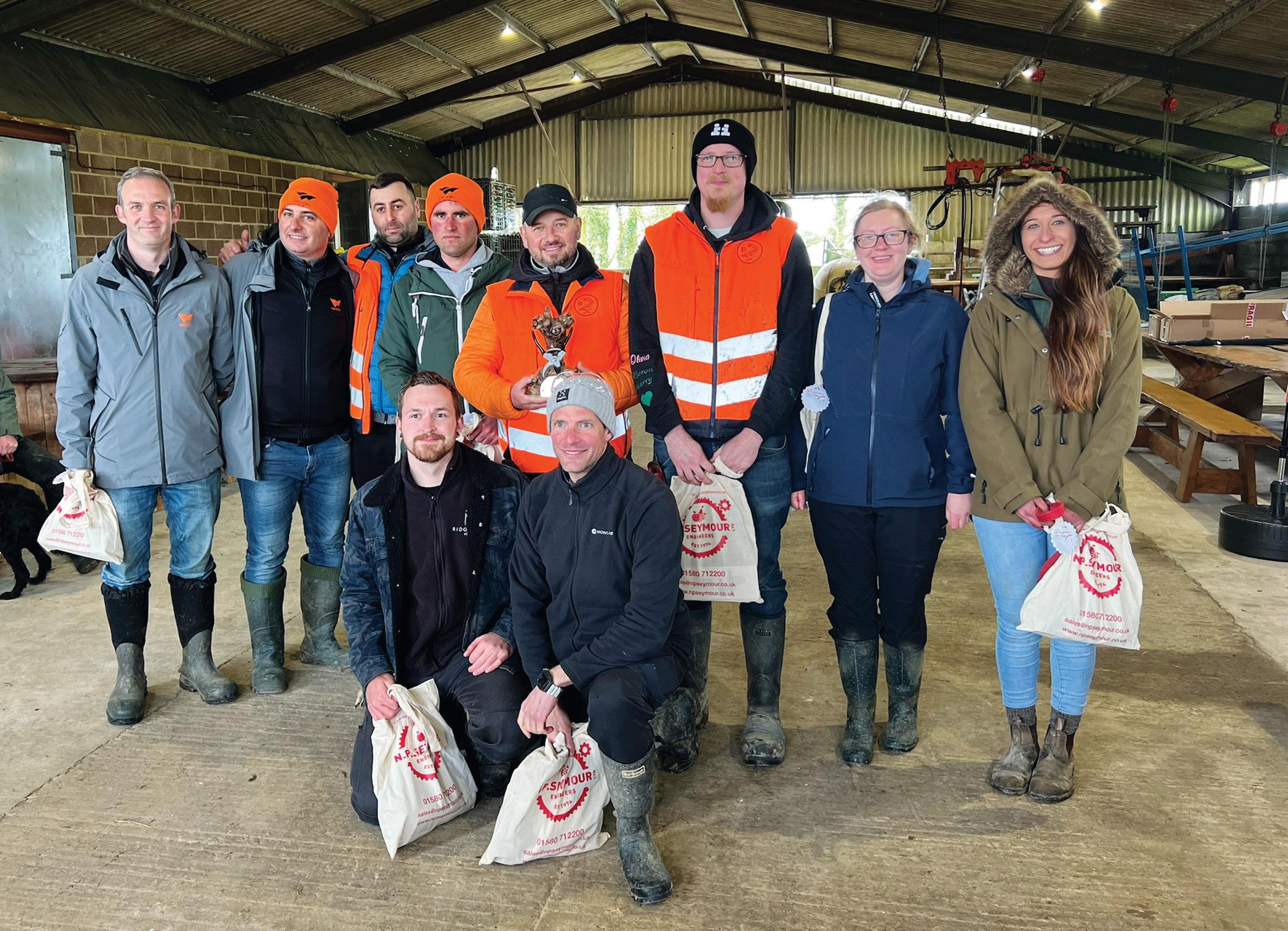
Winners

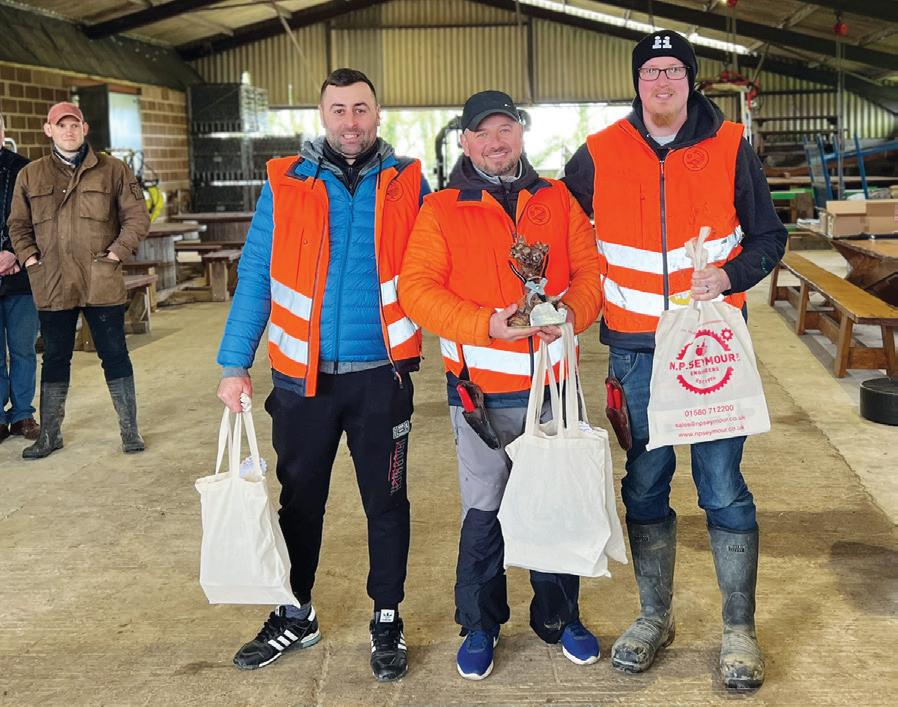
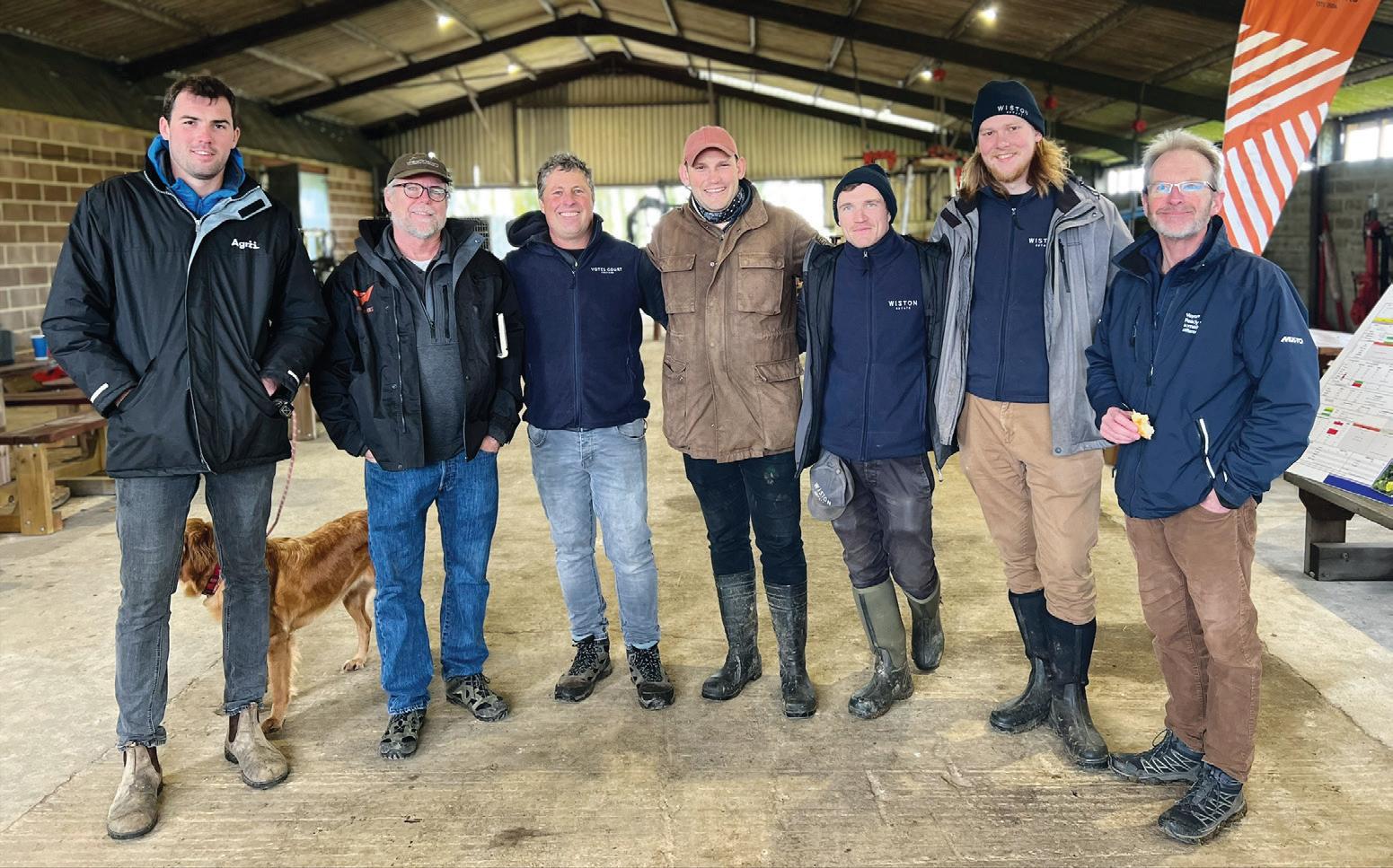
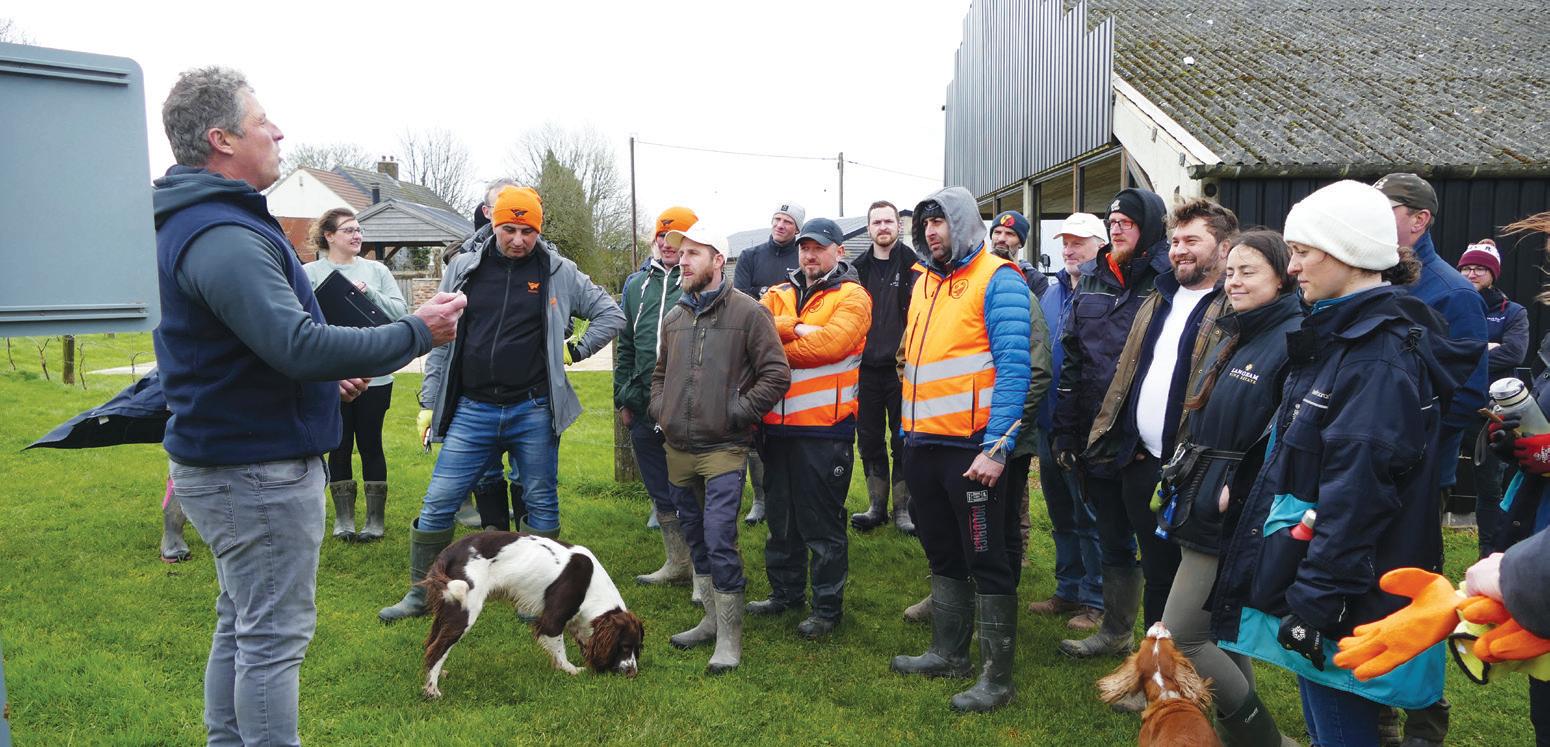
43
Judges on the day
Solo winner: Daniel Bojan
Team winner: Gusbourne Kent
Winner photos: Phoebe French, WineGB
<<
Outlining details of the competition joint organiser Tony Purdie, Vineyard Manager of Yotes Court explained: “Teams of three have to choose one person to prune, one to pull out and one to tie down. The team must complete five vines in 12 minutes. There were extra points to be gained from pruning and tying down extra vines.” The focus is always kept on spur positions, cane positions and sap flow.
The Vines at Langham Wine Estate are high grafted which provided plenty for the competitors to think about. “This provides a much larger head with water sprouts so it can be difficult to tell where the spur starts,” said Stephen Skelton MW. High grafting is not that common so it provides a challenge and a unique experience for everyone including the judges,” added Tim Ferris.
The atmosphere and camaraderie were evident throughout the day and the opportunity to celebrate vineyard skills was appreciated by everyone including the judges. Lead Judge Tony Purdie was assisted by James McLean (Vineyard Manager, Langham Wine Estate), Travis Salisbury (Vineyard Manager, Wiston), Tom Bailey (Assistant Vineyard Manager, Wiston), Ben Brown (Agrii), Julian Searle (Agrii) and Tim Ferris (Hutchinsons).
The challenge was made more interesting as “shoot selection had not taken place so the number of cuts was increased and therefore the difficulty was higher” explained Travis Salisbury, who joined the judging panel for the first time this year. “It is good to be faced with different systems,” said Tony as he congratulated all the particpiants.
Tony Purdie and James Dodson of Vineworks started the competition together several years ago as a way to celebrate viticulture. Tony Purdie explained: “The whole idea of the team competition is that you really
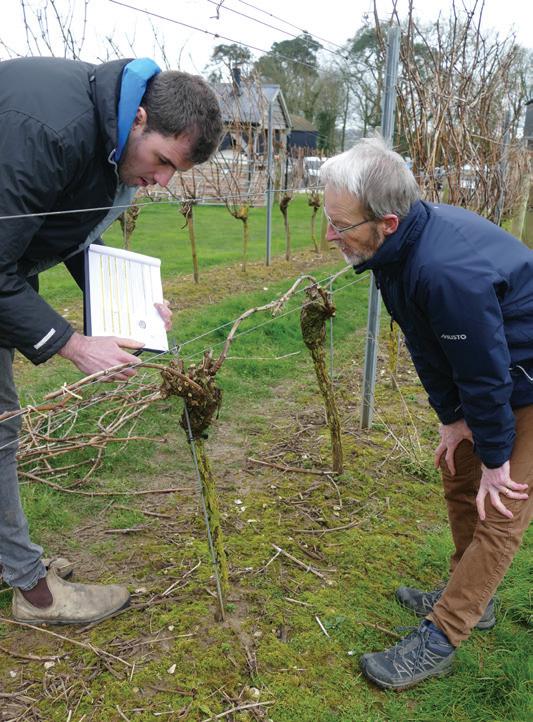
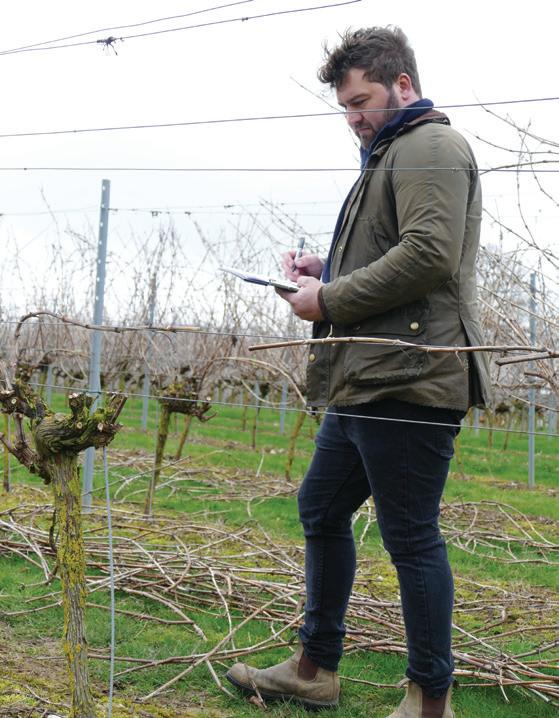
have to stop and think about what the person before you has done. James Dodson said: “I would like to say a special thank you to all the sponsors Agrii, Felco, NFU Mutual, NP Seymour, Vineyard Magazine and VineWorks. Also Thanks go to Langham Wine Estate and Phoebe French of WinesGB for all her hard work.”
First place in the Solo Pruning Competition was awarded to Daniel Bojan of VineWorks, Dragos Nitu was second and Naomi Solomon was amongst the winners once again as she was awarded third place.
Congratulations go to the winners in the team event with Gusbourne Kent taking first place. The three person team consisted of Dragos Nitu, Alex Stancu and Ben Osbourne who are taking the trophy back to Kent. The team from VineWorks consisting of Daniel Bojan, Catalin Tufareanu, and Daniel Cicu placed second and the team from Ridgeview of Austin Ellis, Lars Lundqvist and Emily Paine were awarded third place.
The winners were provided with Felco goody bags donated by NP Seymour who were there on the day to support the event. Prize bags for the winners included a pair of Felco 8, 911 holster, f602 saw, 703 gloves, a Felco 501 knife, and beanie hat. Second place prizes included a pair of Felco 8, 910 holster, 702 gloves and beanie hat, whilst the prize for third place was a pair of Felco 8, 701 gloves and beanie hat. All the winners were also given a soil thermometer provided by Hutchinsons.
Miltos Mademlis assistant vineyard manager at Yotes Court whose vineyard in Greece produces wines from the Assyrtiko, Xinomavro and Malagouzia grapes really captured the day when he said: “It is lovely to see everyone joining together and having fun.”
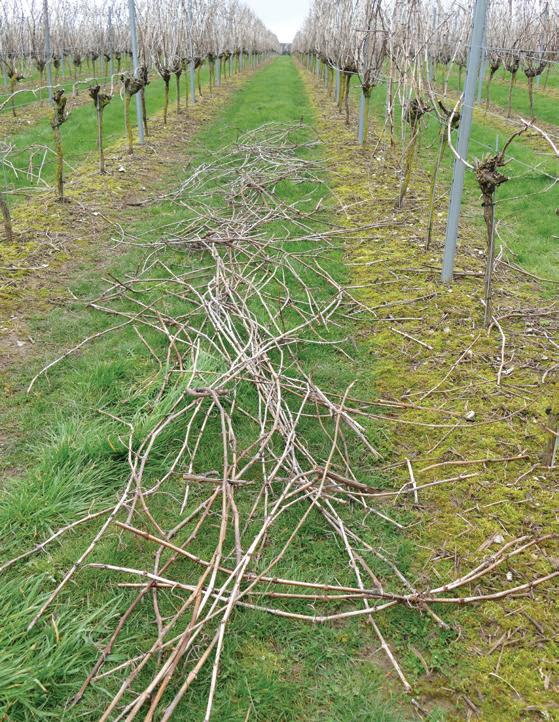
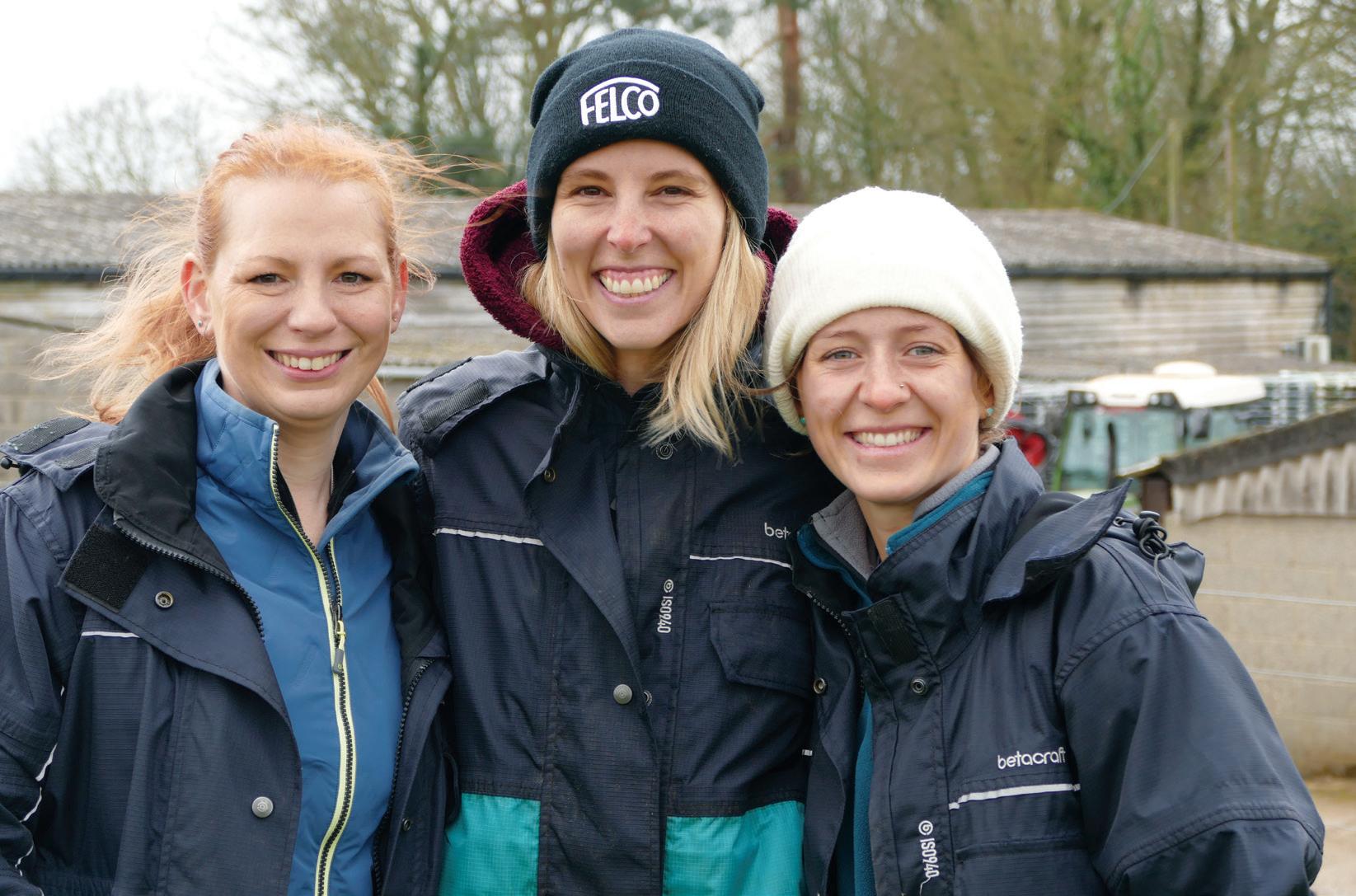
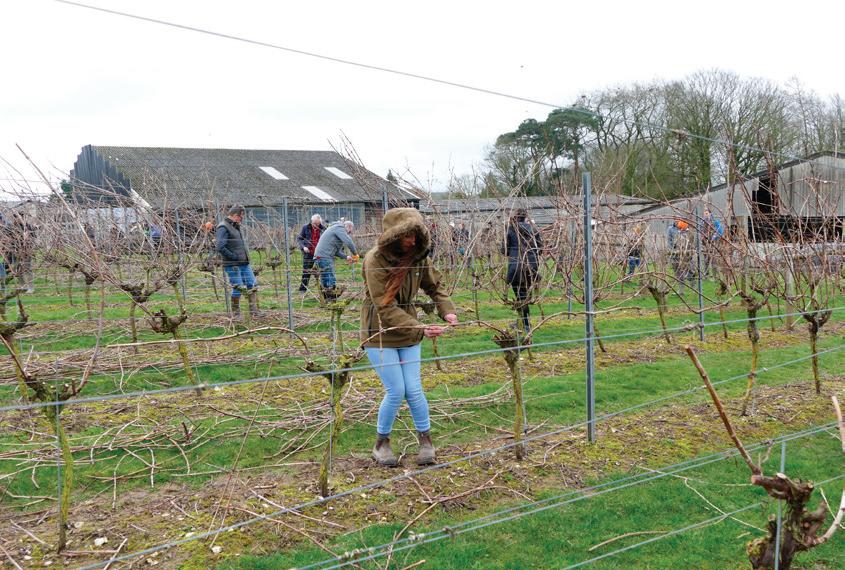

44
WINEGB PRUNING COMPETITION
Gusbourne Sussex entered an all female team of Claire Foden, Kimberley O’Brien and Isabel Tucker
Key component
Getting out into the industry and visiting wineries is a key component of our degree courses at Plumpton College.
Last Semester we visited Blackbook Winery and Vagabond, two Urban Wineries in London with our Wine Production and Viticulture & Oenology Masters students. Beck Cedar, one of those students, has just gone live with a crowdfunding campaign to launch an Urban Winery, ‘Haar’. We asked Beck about their experience, their plans, and all things ‘Urban Wine’.
“There are 943 vineyards and 209 wineries in the UK – and none of them are in Brighton & Hove. I had seen all these incredible places like Rathfinny and loved them, but you needed to drive and have access to a car to work there. I’d hear friends saying “I’d love to visit a vineyard but how do you get there?” and I knew there’d be a buzz for something accessible in the city I live.
“I’d heard about people doing things more ‘bootleg’ in cities without needing the same funding, investment, or inherited wealth. No one had set up an Urban Winery in Brighton, it’s one of the most expensive cities in the UK. But if that’s the case, there must be so many people living locally who would want to work in wine but not be able to afford to.
“Haar aims to change that. It’s a social venture, not for profit, making minimal intervention wines from grapes grown organically in Sussex, Kent, and Essex. There are currently around 2,300 people working full time in the UK wine industry. 52% are men, 47% are women, and 0.4% identify in another way. Haar aims to change this for trans and non-binary folks.
“People need to change their buying habits if they’re going to say that they are ethically minded. We have got used to having our wine a certain way, you click to buy and it arrives. English wine already takes a step in the right direction. Traditional method is slow, you have to wait. Haar will take this a step further. It gives customers the opportunity to spend their money more transparently. Every part of our supply chain will have transparency, including profiles of the people making your wine so you know the community you’re helping – building – part of.
“I’m at Plumpton College because I may
know how to make a project work, but I need to know how to make wine! The place to do that is here. If you want people to trust you with their hard-earned money, you have to be learning from industry experts, and that’s what you get learning at Plumpton.
“Our Urban Winery visit was great. It was amazing to see what Sergio Verillo, (2014 graduate) has done. It was really aligned to where Haar is coming from. He built Blackbook from the ground, which I’m going to have to do with my project too, as well as being so creative with the space!” Sergio discussed the importance of growers and grapes with our students, sharing his ethos and giving us so much insight into the business. We tasted tank and barrel samples as well as their delicious finished wines.
We stopped at Vagabond Winery afterwards, to visit Jose Quintana (2019 graduate) and Freddie Cobb, who were equally generous with their time, amusing us with the logistics of running a winery in a bar, as well as so many insights about their processes, customers, and unique business approach. We tasted several of the excellent wines and some exciting upcoming projects still in the pipeline…!
Beck mused “You’ve got to learn the rules before you can break them. To see what they’ve done at Vagabond… Proof that you can make wine anywhere!”
Vagabond Winery
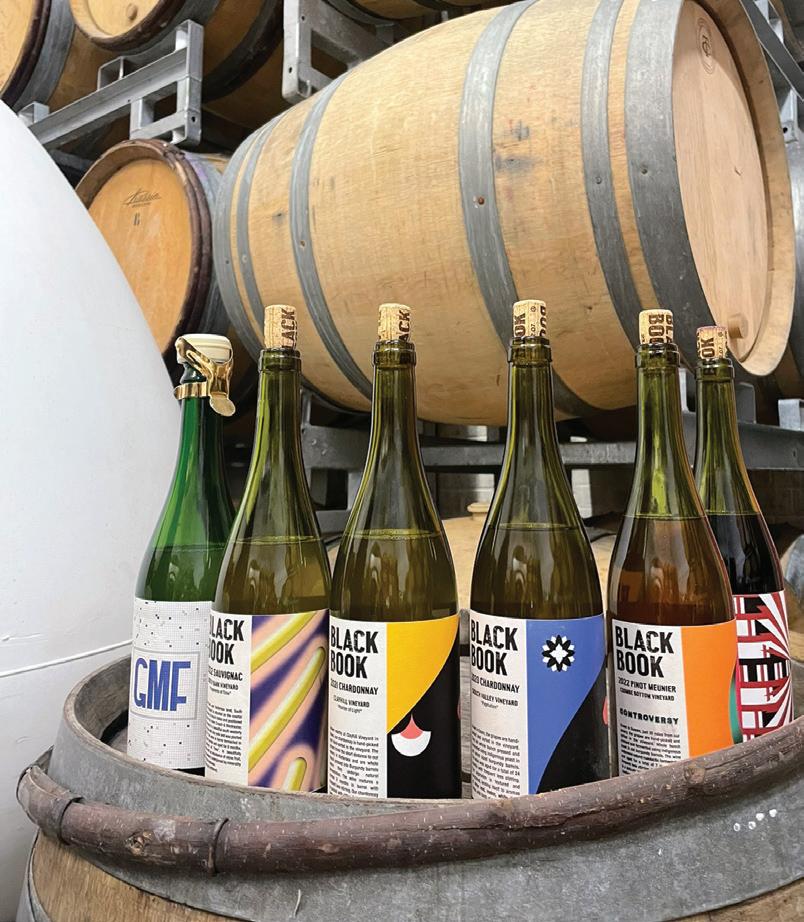
Scan QR to find out more about Beck’s crowdfunding for Haar Winery
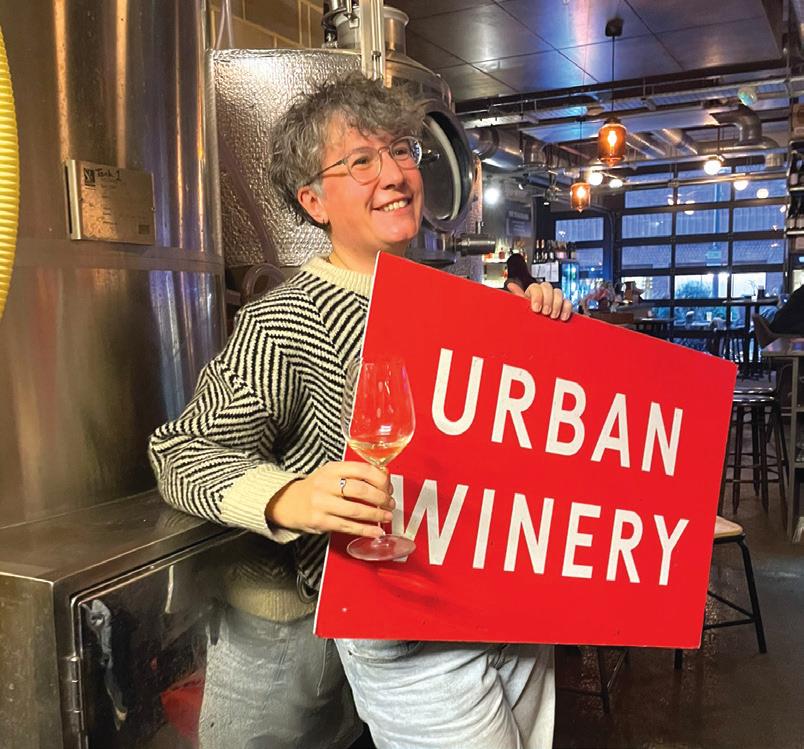
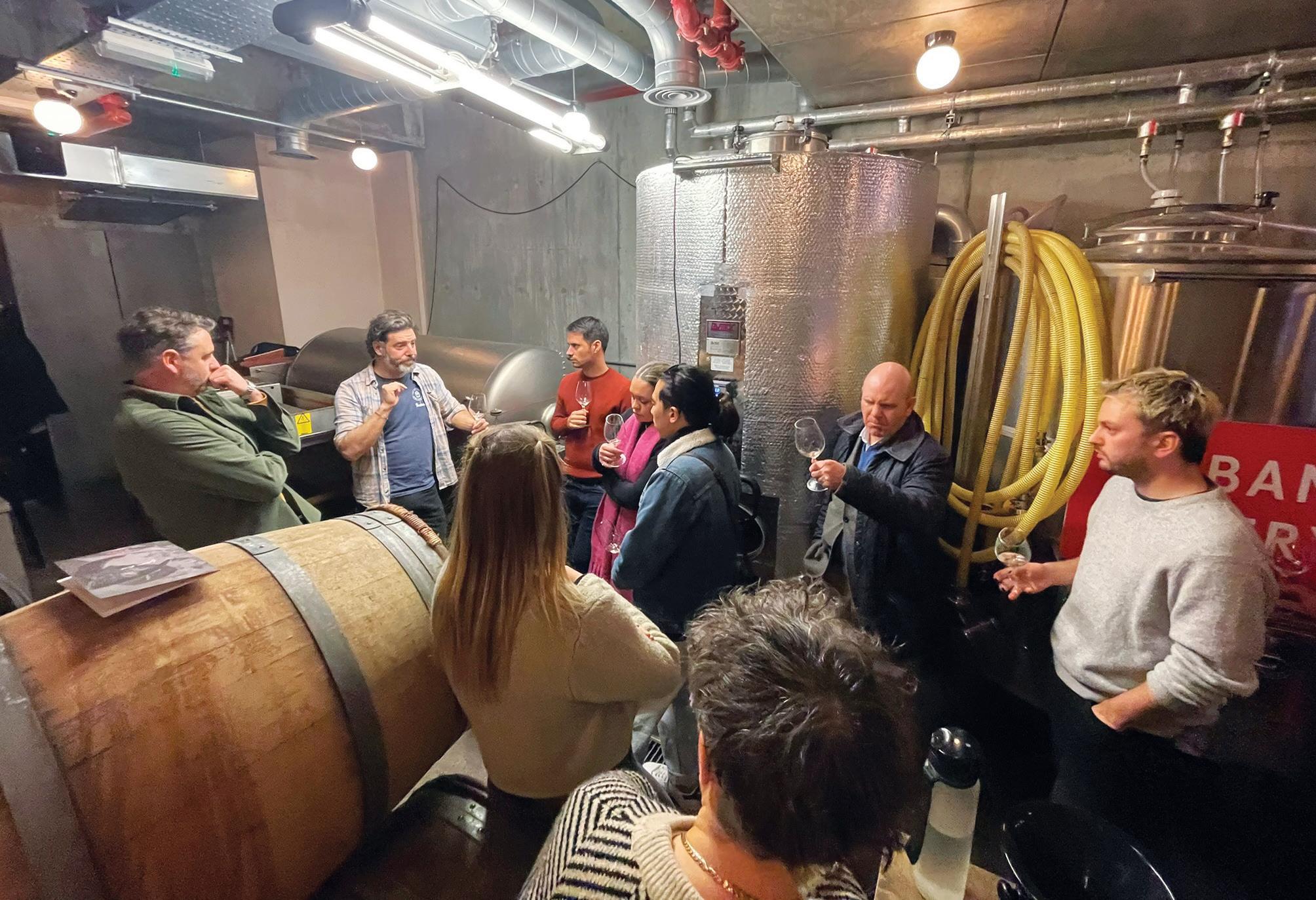
45 EDUCATION DESKTOP www.plumpton.ac.uk ENVELOPE wine@plumpton.ac.uk INSTAGRAM @plumptonwine
Beck, founder of crowdfunder Haar Winery
APRIL 2024 | VINEYARD
Blackbook Winery
Representing you
Working in partnership with Vineyard magazine for a developing UK wine industry.
WineGB is the national trade body representing the vine growers and winemakers of Great Britain from the largest producers to small hobbyists.
Our members work together with the organisation to develop strategy, expertise and marketing opportunities for long-term, sustainable success.
If you are interested in wine production in the UK find out more about WineGB and join us. Visit our website www.winegb.co.uk
WineGB team changes


Following a review of the team structure to deliver our future WineGB strategy and plans, the following changes have been made to the executive team:
◆ New role and hire: Interim Policy Director – Vincent McGovern
◆ New role and hire: Industry Relations Lead – currently recruiting
◆ New role: Communications Manager – Phoebe French
◆ New hire: Sustainability Executive – Emma Rix
◆ Leaving: Head of Marketing – Julia Trustram Eve
The move is a reshaping of the team to have a stronger focus on building the reputation and prominence of the industry to better influence the external environment, especially within Whitehall.
Sadly, we will be saying goodbye to Julia Trustram Eve, Head of Marketing. She is widely recognised and respected for having supported and shaped the sector and building the brand reputation of the English and Welsh wine industry – including the initiation of English Wine Week, a go to for press and UK trade, which gets stronger recognition each year. We wish her all the very best in her next ventures and intend to find a time later in the year to bring the English and Welsh wine sector together to celebrate her many years working in the industry.
We are currently recruiting for the position of Industry Relations Lead. The new hire will grow the funding for the association from new members, industry supporters, and to a lesser degree public funding. The role will also identify new routes to market for members, working to promote our campaigns that drive sales. If you are interested in finding out more, the details are on the contact page on the WineGB website.
Nicola Bates, CEO of WineGB, the trade association for English and Welsh wines, said: “This is an exciting time for the sector and the growth of the team. These essential changes will allow us to advance our support. It is essential that we support our members at all levels, and these changes will


ensure that we can best shape the market for English and Welsh wine, allowing everyone to sell more.
“A warm welcome to Vincent McGovern and Emma Rix. Thanks and congratulations to Phoebe French for her move to Communications Manager. If you are reading this comment perhaps you could be our next Industry Relations Lead.
“I would like to give a personal thanks to Julia Trustram Eve who throughout much of her wine trade career has been dedicated to building the sector. We are in no small part a success due to her hard work.”
Sam Linter, Chair of WineGB, said: “I have had the pleasure to know Julia over the years in which she has helped to build the profile of WineGB, and before that English Wine Producers. She has shaped the perception of the industry and been a fundamental part of building our reputation. She should be rightly proud of her considerable achievements during a career promoting English and Welsh wines.”
Julian Barnes, former member and Chairman of English Wine Producers (which merged with UK Vineyards Association becoming WineGB in 2017), said: “30 years ago, the English and Welsh wine industry was a little less known and far less visible. Having worked alongside Julia, we owe her more than a vote of thanks for her consistent and persistent marketing and promotion of the sector. From the early 90s, Julia has been the most embracing person any organisation could wish to have, every meeting, every event, brand ambassador, membership co-ordinator, always on point, well-polished and always smiling. Julia, we look forward to celebrating your achievements together.”
Julia adds: “I am so proud to have been part of an industry that has seen such phenomenal growth in size and reputation over the last number of years. I’m looking forward to new career challenges and to seeing what the future holds for the wonderful world of English and Welsh wines.”
46 facebook-f @winegb X-TWITTER @Wine_GB INSTAGRAM @winegb linkedin-in @winegb
Emma Rix Julia Trustram Eve
Phoebe French
APRIL 2024 | VINEYARD
Vincent McGovern
Twelve of England’s leading wine brands travelled to Düsseldorf in March, some returning, others new to the international market. First-time exhibitors were Danbury Ridge (Essex), Langham Estate (Dorset), MDCV (Kent/Sussex), Sandridge Barton (Devon), Simpsons’ Wine Estate (Kent) and Wiston Estate (Sussex), while returning participants were Balfour Winery (Kent), Chapel Down (Kent),
Record number of GB producers at ProWein Funding for frost
Gusbourne (Kent), Hattingley Valley (Hampshire), Lyme Bay Winery (Devon) and Roebuck Estates (West Sussex).
Exports of English and Welsh wines, according to WineGB’s 2023 industry report (based on 2022 sales data), account for some 7% of sales and are continuing to grow.
Nicola Bates, CEO of WineGB commented: “Britain’s wine industry is thriving. We are engaging with an ever-growing crowd
WineGB is part of a group that has secured over £300,000 in funding from the government to create and promote an innovative frost forecasting and management project for grape vines.
With the potential to revolutionise frost related crop protection, the project will create hyper-localised, site-specific, and variety-specific frost risk forecasts, enabling vineyard managers to make more informed, targeted, and sustainable choices when responding to frost events.
Other participants in the project include the joint leading sensor manufacturer Terraprima and agri-tech facilitator Agri-Epi Centre as well as land-based education provider Plumpton College, vineyard and winery consultancy Vinescapes, vineyard monitoring solution Vinewatch and weather forecasting provider WeatherQuest.
Sensors installed in Dillions Vineyard (West Sussex), JoJo’s Vineyard (Oxfordshire), Tanhurst Estate Vineyard (Surrey), Plumpton College (East Sussex), Ridgeview (East Sussex), and Quarry Wood (East Sussex) will be used to assess frost risk at a micro level.
This site-optimised forecasting will subsequently be available through an app, which will deliver frost alerts to mobile devices.
The project will last for two years, and the grant was secured through Innovate UK’s ‘Farming Futures: Environmental Resilience, Feasibility’ funding competition, a collaboration between the Department for Environment, Food and Rural Affairs (DEFRA) and the UKRI Transforming Food Production Challenge.
Phoebe French, Communications Manager at Wines of Great Britain, said: “Frost events can significantly affect grape yields and require vineyard managers to be on alert throughout the night, often for days on end. This project will give vine-growers greater control of their frost management and hopefully their sleep schedule!”
of followers and fans across the world as trade buyers, influencers, and consumers recognise the word-class credentials of our wines. We were delighted to be at ProWein this year with the largest presence ever.
“We are grateful for all the support from our government which enables us to showcase these high-quality brands on this international stage and look forward to extending our reach into the global wine market.”
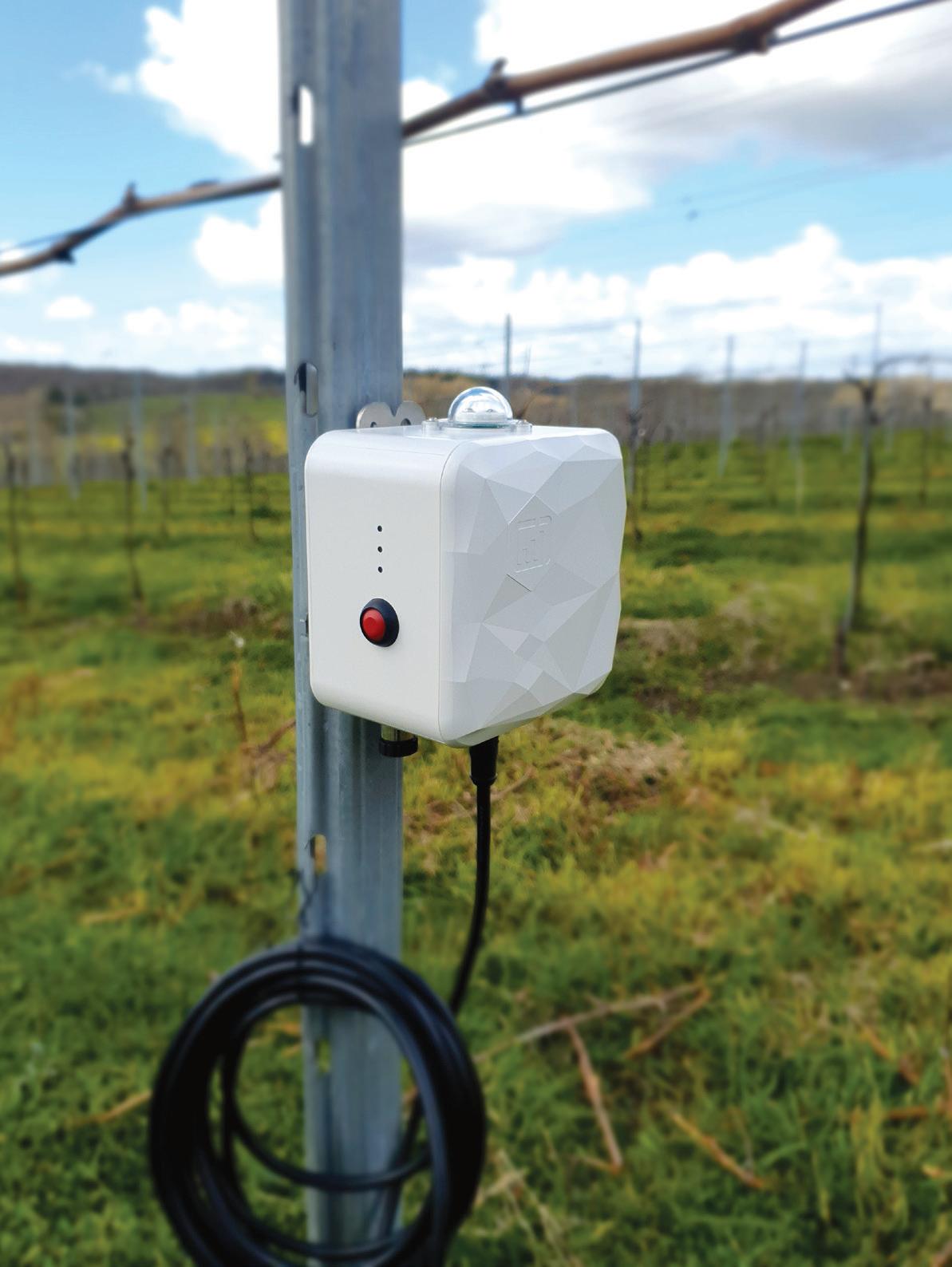
JOIN WINEGB phone-alt 01858 467792 paper-plane office@winegb.co.uk globe-asia www.WineGB.co.uk 47
Terraprima Ladybird Sensor
APRIL 2024 | VINEYARD
UK WINE TOURISM
Exploring wine culture
The WineGB Trade Survey for 2022-23 told us that wine tourism provides an average of 24% of the total revenue generated by English and Welsh vineyards and wineries. Given this significant figure, it is not surprising that many UK wine businesses are planning to expand their offer in the short term. But where are the opportunities for growth and expansion in the UK wine tourism market?
What is wine tourism?
Wine tourism is a travel experience that centres on exploring wine culture. That might mean a visit to a vineyard, winery or other related locations to engage with a diverse spectrum of activities. For premium wineries, direct-to-consumer sales are a vital source of income. Encouraging those interested customers to come directly to your location is a proven, and efficient strategy for bolstering sales.
Traditionally, wine tourism has been focused on educational experiences; guided tours and wine tastings, perhaps lending a helping hand as a harvest volunteer. But increasingly wine businesses are diversifying their offer. Food pairing sessions remain popular, but more and more vineyards are offering a permanent dining option at their venue to attract a new clientele. This capacity for accommodating guests on a drop-in basis rather than only at formal booked events maximises opportunities for wine sales.
Having accommodation on site, whether in the estate buildings themselves or via a glamping model, is also more widely visible these days. Wineries are taking the opportunity to build collaborations and partnerships with neighbouring businesses and communities to host and participate in more cultural activities within their environs.
As well as giving visitors a pleasing sensory experience, wine tourism acts as a way to offer insight into the traditions and craftsmanship of wine

growing and production. These activities can give a new window to the rich variety and importance of the natural landscape. And perhaps most importantly, they provide people with enriching activities to engage with in their leisure time – wine tourism is fun!
Wine tourism insights
Regardless of geography, wine businesses across the globe face similar issues – they are usually small, independent operators who are attempting to compete against global industries. Winetourism.com offer consultancy services to wineries and vineyards around the world. They have about four thousand clients who use their site to target new visitors. As the largest online booking service for wine experiences, winetourism.com is regularly asked for insights into boosting the quality and take-up of wine tour experiences. They offered Vineyard Magazine some top tips:
1. Ensure that your online copy is more orientated towards the visitor’s experience and not your offer. In practice, this means using the word “you” more than you use the word “we”. Tell potential visitors what they will experience and what they might enjoy when they come on your tours. Think about their needs and what will help them to access your tours easily - make it easy for them to book, to know that their access requirements will be met and so forth.
2. Move the focus from your social media feeds to other people's. Find ways to get visitors to post pictures of their experiences on their own Instagram squares and stories. People expect you to wax lyrical about how fun your tours are. But 100 visitors with 1000 followers can reach 100,000 potential new visitors, and their recommendation is more believable. With this in mind, make it easy for guests to share their visit – make your social media handles and hashtags visible to guests and give them calls to action IRL (in real life) while they are with you.
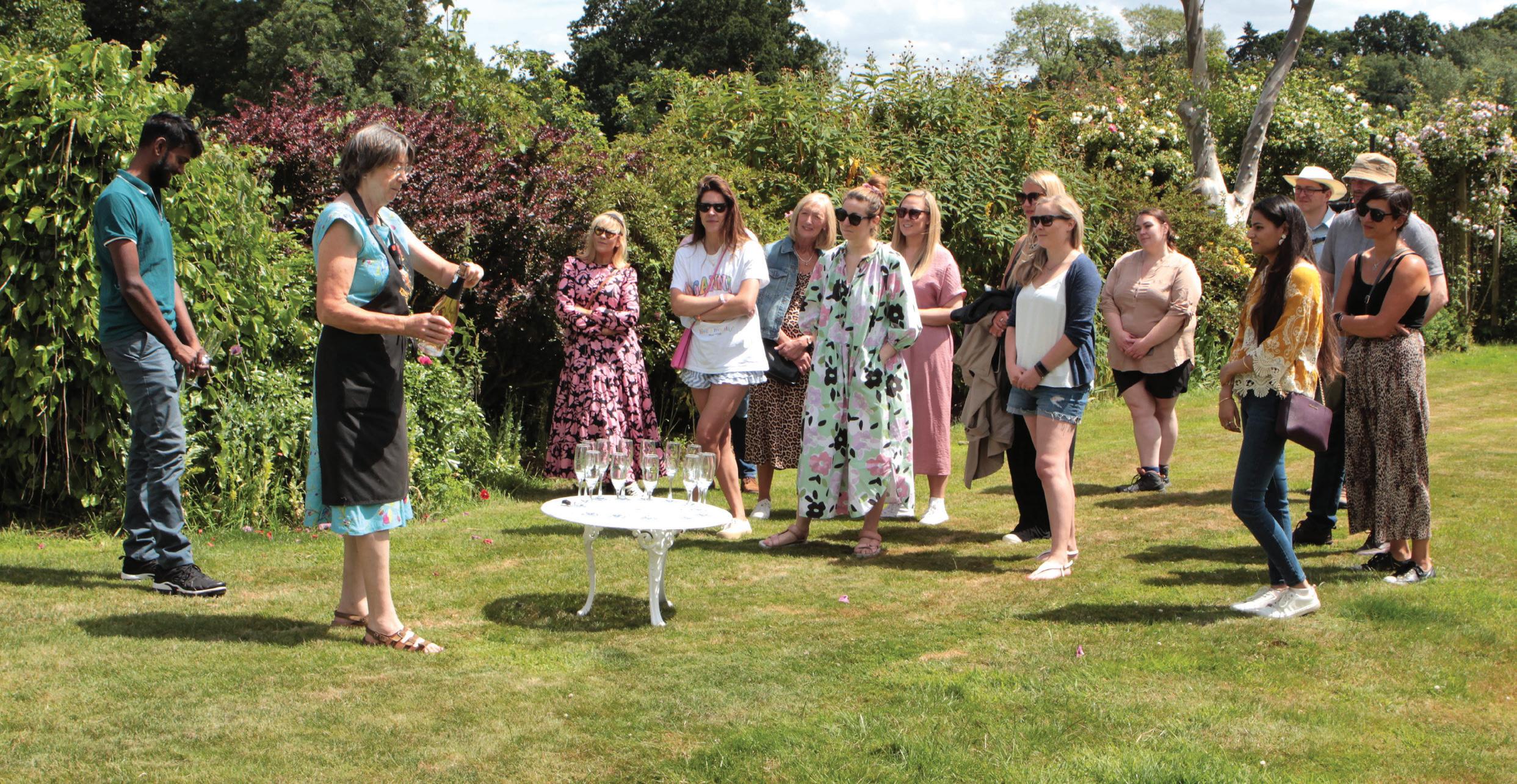
48 48
La aHad l a n d
3. Personalise the experience for your top visitors, especially those who visit in person and buy wine. The Pareto Principle says that 80% of your income comes from 20% of your clients, so work hard to maintain a personal bond. Handwritten notes, bespoke offers and money-can’t-buy invitations are all ways of nurturing that important client base.
Vineyard tours: step by step
Dipping your toe into wine tourism for the first time can be intimidating. Indeed, inviting the public to your vineyard or winery is not something you want to get wrong, as the reputational damage of a botched event could be considerable. But even for the smallest wine business, starting your own tour can be simple to manage and not too onerous a commitment, if you break the process down into simple steps.
Things to consider when arranging tour and tasting events:
◆ Think about the best times and dates for your tour. Consider using your social media to reach out to existing customers to find out when they’d be most likely to attend.
◆ Look at your options for ticketing.
– Platforms like Eventbrite provide an off-the-shelf solution that has the added benefit of making your event more visible. However, there is a small cost to using these solutions which you can choose to absorb into the ticket price or defer to the customer.
– Building a simple ticketing portal on your website is not hugely complicated for the more tech-savvy or those with web designers to hand. It saves on those additional costs (but not card fees) - but then the promotion is all down to you.
◆ Do a bit of market research to set your ticket prices. Make sure you’re in line with the local competition and that you are charging enough to cover the cost of wine samples and your time.
◆ Plan the event. Where will you take the group? What will you show them? What are the key parts of your story and ethos that you would like to share?
◆ Once you have a plan, you can start thinking about logistics. Consider:
– How long will the event last?
– Is the route accessible?
– Are toilet facilities available?
– How many guests can you accommodate in your space?
– Where will you host a tasting and do you have sufficient glassware available?
◆ Once you have these details planned out, you can start writing a description to promote the event. Think about what a visitor will need to know to facilitate their journey - where do they park, and if they don’t drive can they still access your venue, for example?
◆ Plan out the running order of the session in advance, including briefing any staff or volunteers who may come along to help. Are you pouring tasting samples in advance, or as you go? What happens if the weather is inclement? How will you encourage and facilitate wine sales at the end of the event?
◆ Make sure you update your risk assessments accordingly and ensure you have sufficient public liability insurance to cover on-site guests.
◆ Consider running a one-off pilot event first to test the water before committing to a regular, or seasonal run.









Do you need support with recruitment in 2024? We can help!
At Flawless we are motivated, reactive and committed to finding you the workers you need


Contact us
07809473645 Del Warner
07716599379 Lisa Warner Delwarner@flawlesspremises com Lisawarner@flawlesspremises



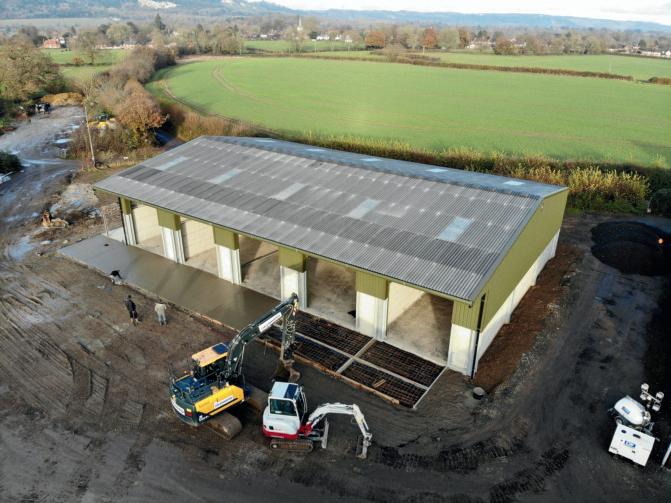


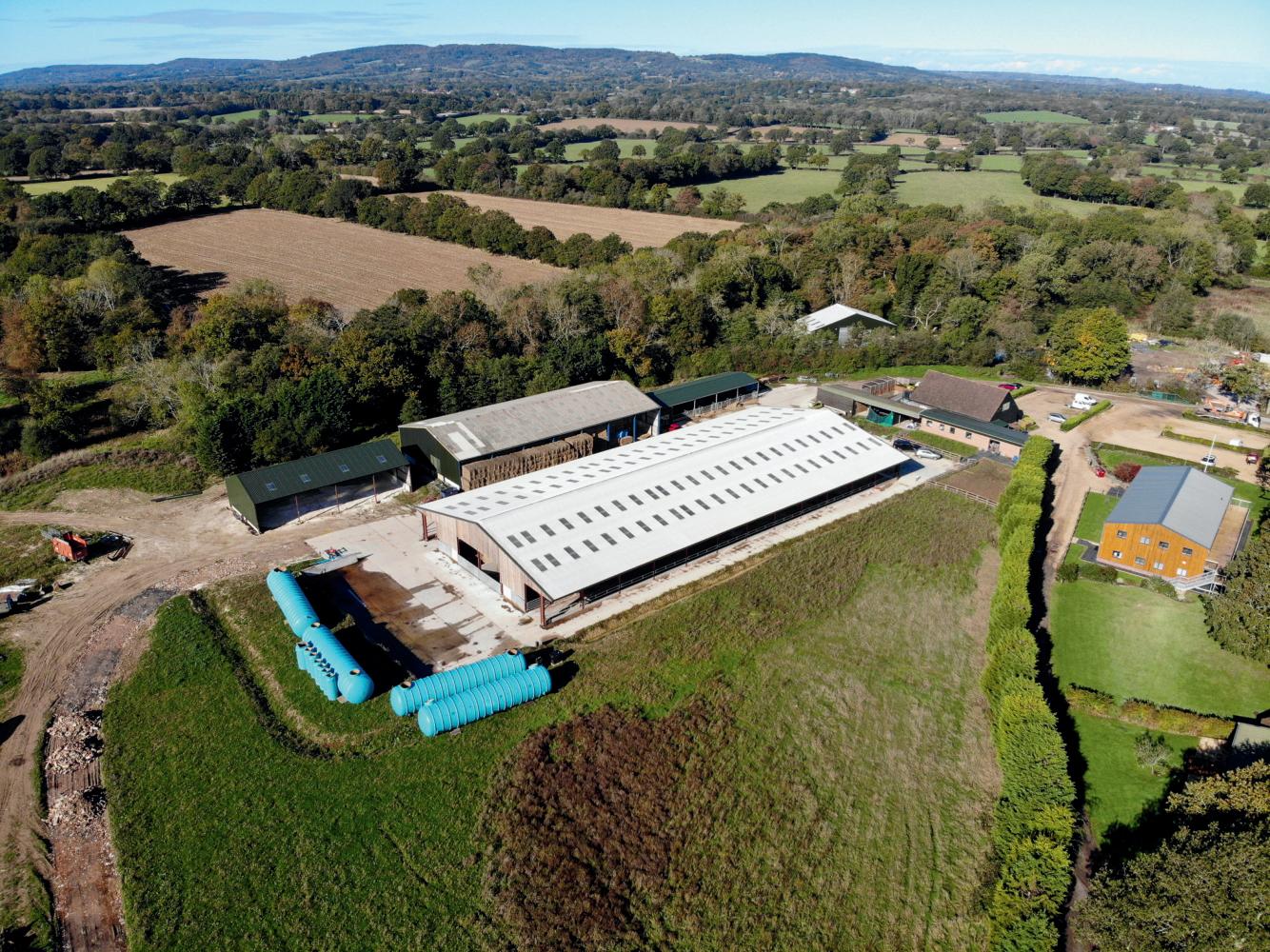
<<
Flawless Recruitment GLAA Licensed Labour Provider ALP Member APRIL 2024 | VINEYARD
com
UK WINE TOURISM
Finally, make sure you market the event. Share the details on your website and social media accounts, and consider sending out a short press release to keep local media informed. Ready-made ticketing platforms or a bespoke solution should have the capacity to capture guests’ email addresses so you can build a mailing list to keep interested parties informed of future events. Remember, it is
easier to earn repeat sales than to find new clients!
Wines of Sussex
In the summer of 2023, ‘Sussex Wine Tourism: A Plan for Growth’ was launched at a dedicated Parliamentary reception. The plan aims to grow the county’s wine tourism sector from the current value of £25m up to an ambitious
KATHARINE BEER FROM THE SOUTH DOWNS NATIONAL PARK AUTHORITY (SDNP)
TOLD VINEYARD MAGAZINE MORE
How did the partnership and the growth plan come about?
In 2019 I was working as Sustainable Tourism Lead at SDNP and it was clear that there had been huge growth in the number of vineyards, not just in the South Downs but in the wider Sussex area. Many of the vineyards already had cellar door or holiday accommodation on site or were planning to expand their tourism offer.
There was already collaboration between some of the vineyards to deliver shared marketing campaigns but it was apparent to both the tourism professionals and the vineyards that there could be huge potential to develop wine tourism in Sussex.
I was invited onto the board of Sussex Modern in 2019, and we developed the tourism marketing collaboration promoting culture, wine and landscapes in Sussex. The marketing campaigns were really well received by visitors, and it became apparent there was potential to attract high-spending visitors.
In 2021 we saw that the Government launched Community Renewal Funding, an opportunity to apply for funding to develop the strategy for growing wine tourism in Sussex. This process involved bringing wine producers and tourism industry professionals together, resulting in ‘Sussex Wine Tourism: A Plan for Growth’.
READ MORE: www.sussexmodern.org.uk/sussexwinetourism
£283m by 2040, cementing Sussex’s position as the UK’s premier wine tourism destination. The Growth Plan was funded through the Government’s UK Community Renewal Fund, and led by a partnership which includes Sussex Modern (the wine tourism development agency for Sussex, an independent business consortium founded in 2017), Plumpton College and Council representatives.
What are your aspirations and what actions are being taken to achieve them?
It was a huge undertaking to bring partners together so it's important we build on the strong relationships and the fantastic expertise we have in Sussex to create an internationally recognised, sustainable wine tourism offer.
Delivery on the actions has already been achieved through the creation of the Wine Industry Group which brings together the vineyards in Sussex to take ownership of the strategy and coordinate delivery. And recently, because of funding, steps are being taken to create a shared look for signage and waymarking which can be used on wine routes and trails right across Sussex. This would create a toolkit for other vineyard clusters in Sussex to adopt and use.
What advice do you have for vineyards that are looking to grow their brand awareness and indeed their income from wine tourism?
It’s important to know your customers, what people are looking for when they visit, and what makes your vineyard different from the one down the road. We have found that visitors are really interested in the story behind the vineyard and the people behind the wine so it’s important to get this across in your marketing.
To maximise income I would suggest that collaboration is key. Right across Sussex, we have seen vineyards working together, and with other tourism providers, to provide complementary offers and itineraries. This is key to creating a wine tourism offer where visitors will stay longer and make return trips.

50 50
<<
APRIL 2024 | VINEYARD
Rathfinny Wine Estate
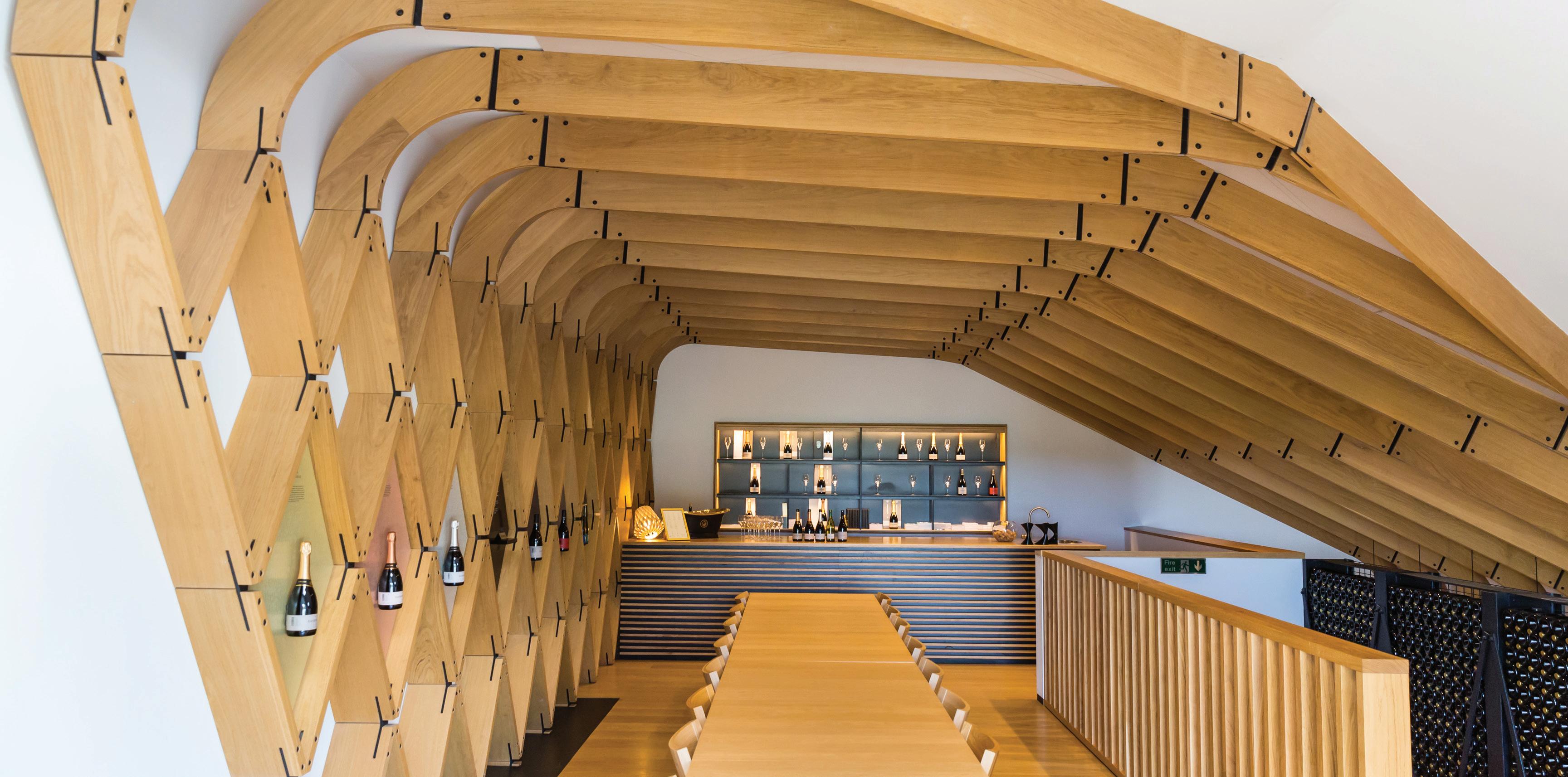
Unique wine tourism experiences
Finding your unique selling point (USP) is critical for developing and promoting wine tourism experiences to the consumer. Plenty of enterprising vineyards around the country have already been thinking outside the box to create quirky, elegant and unforgettable experiences.
Here are some of Vineyard Magazine’s favourites.
The Nest at Gusbourne
The visitor centre at Gusbourne, Kent, was opened in 2017. More than just a modern cellar door, the building was designed to tell the story of the estate through its architecture. Carefully shaped oak timbers reflect the ancient forests around the estate as well as wine barriques.

The colour scheme is intended to reflect the Kent sky, soil and of course the vines and fruit. They have feathered the Nest with stories; facts, finds and features of the Gusbourne story over hundreds of years.
Why is it called The Nest? The family crest of the de Goosebourne family features geese, and “just as a goose calls its nest home, so do we.”
<<
51 51
www.mayowynnebaxter.co.uk Specialist legal services for Vineyards & Wineries Call us on 0800 84 94 101 Offices across the South East Agricultural matters Biodiversity Net Gain Borrowing against stored wine Business sale/purchase/transfer/set up Commercial property sales/purchases/leases Contracts advice/drafting/disputes Employment matters Grape broking/growing contracts Land sourcing/sales/purchases Planning permission Tenancy issues Wine storage arrangements APRIL 2024 | VINEYARD
The Nest at Gusbourne
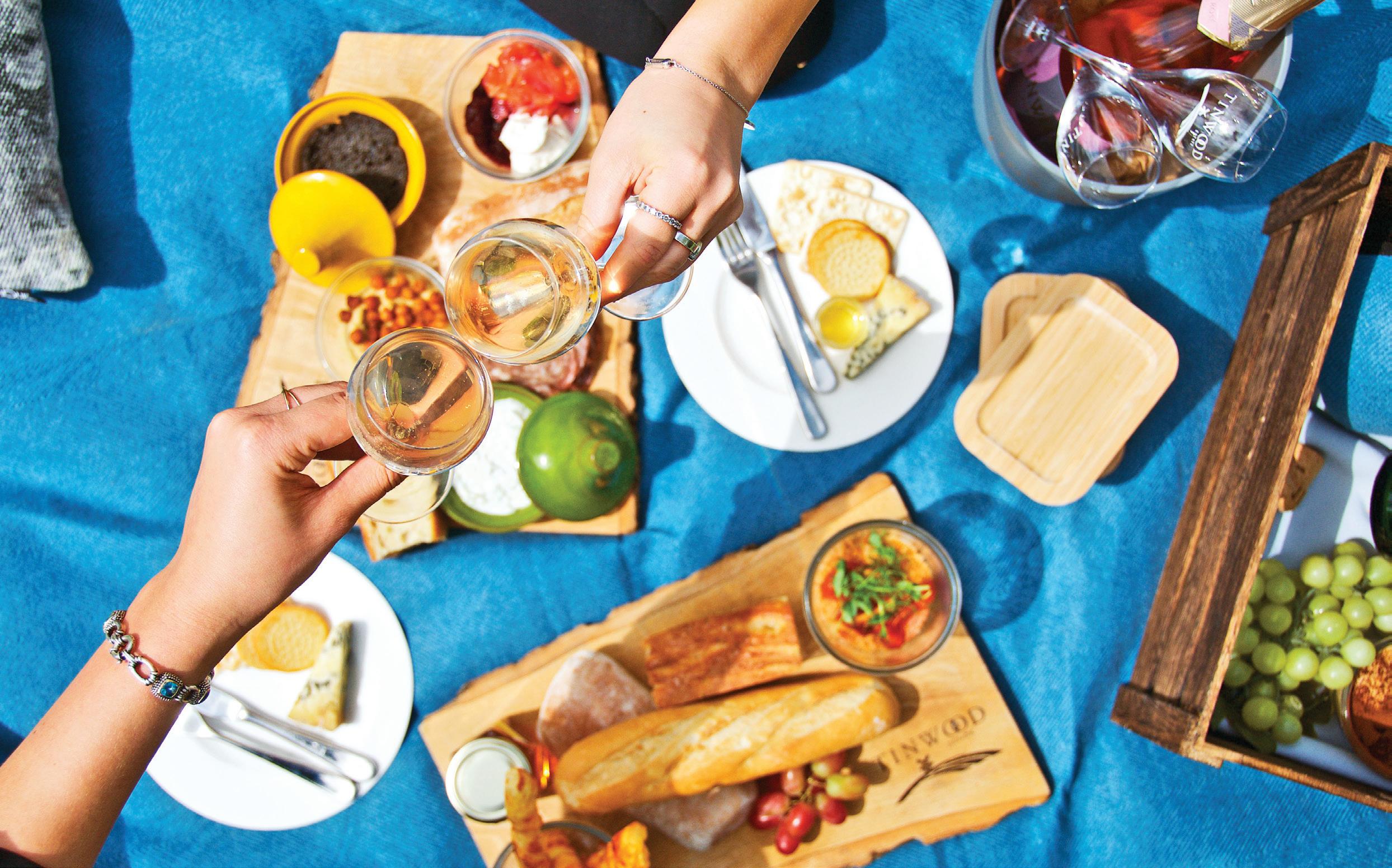
Vineyard Hollow at Oastbrook
The Vineyard Hollow accommodation at Oastbrook in Sussex looks like something out of a fairytale. Or perhaps a movie adaptation of a fairytale… A beautiful place to relax and also endlessly Instagrammable.
“We realised at Oastbrook that we needed to build a diversified business right from the beginning and this involved accommodation on site,” says co-founder and winemaker, Nick Brewer. “Vineyard Hollow, which started off with another name, (you can probably guess what it was) was built in 2018.
“We wanted something unique with a bit of magic and had originally intended to build two treehouses, but that got turned down by planning. As the only objection was height we decided to build down. We went for a luxury fit-out with two en-suite bedrooms and vaulted living space.
“We went on to build a further house – Avalon Waterside Lodge – by our old mill pond in a Scandinavian style and that has proved very popular. People have said they feel they can really escape, relax and enter a different world. We are in the process of building a third house, similar in design to Vineyard Hollow but this time sleeping eight in four en-suite bedrooms. We've tried to keep everything unique and special and this has meant that our occupancy rates are high throughout the year.
“Offering accommodation gives you an alternative income stream and

a ready audience you can provide other services too, both at booking and on site. As with any service business be prepared to manage both your guests and their needs at all times. You need to consider all the costs of building and running such a business... and pandemics!”
Modern British Tapas at Tinwood Estate
Tinwood Estate added accommodation in 2016 to give customers the option of staying a little longer. Each lodge has a private deck with views out over the vines. To encourage even more guests to stay even longer, they added the Vineyard Kitchen, which opened in April 2023.
Before having the kitchen, simple cheeseboards were available at wine tasting sessions. Now their team of chefs use locally sourced ingredients to create a range of seasonal food pairings that work well with their full complement of sparkling wines. By offering a tapas-style small plates menu, guests can collect their dishes in a crate and enjoy a vineyard picnic in warmer weather.
The lunch and hot drink menu has proved popular with customers who enjoy being able to stop in at the vineyard without doing a tour or wine tasting experience. And now tours and tastings are enhanced because the option to add food pairings is also available.

52 52
Sharing board at Tinwood Estate
Oastbrook accommodation
Vineyard Hollow at Oastbrook
Introducing our new contributor

Stephen Skelton MW has been involved with growing vines and making wine since 1975. He shares his thoughts and experiences with Vineyard Magazine in this new monthly column.
Stephen Skelton MW spent two years in Germany, working at Schloss Schönborn in the Rheingau and studying at Geisenheim, the world-renowned college of winegrowing and winemaking, with the late Professor Helmut Becker.
In 1977 he returned to the UK to establish the vineyards at Tenterden in Kent (now the home of the UK’s largest wine producers, Chapel Down Wines), and made wine there for 22 consecutive vintages.
From 1988 to 1991 he was also winemaker and general manager at Lamberhurst Vineyards, at that time the largest winery in the UK. Wines Stephen made won the Gore-Browne Trophy, the award given to the English and Welsh Wine of the Year, in 1981, 1990 and 1991.
He now works as a consultant to vineyards and wineries in the UK and has helped set up many vineyards for the production of both still and sparkling wines. One of the most recent vineyards that he has helped create is Domaine Evremond, majority owned by Champagne Taittinger. This 60ha estate (which is continuing to grow) is set to release its first wine in 2024.
Stephen is also a well known author, having written Viticulture, a text book for students and now translated into Japanese and Chinese, together with the UK Vineyards Guide. His latest book The Knight who Invented Champagne is about the development in the 1630s of a glass bottle strong enough to take the pressure of sparkling wine. <<

UK Vineyards Guide database
I have just launched an update of my UK Vineyards Guide database and am looking for all new vineyards (planted 2020-23) to check if they appear and if not, to get in touch.
www.englishwine.com/vineyard_database.php
DESKTOP www.englishwine.com/contact.php
53 53 WRITTEN FROM EXPERIENCE
St hen Sk e lnot M
Starting my journey into wine
The flap of the butterfly’s wings that brought me to a life of wine was a three-line classified advertisement in the Daily Telegraph. It said “Bright lad wanted in shipping office. Experience not as essential as willingness to learn. Box No. 2305”. I applied and six months later found myself in the office of a small wharf and warehouse company at Denton Wharf, Gravesend, then, as now, the first wharf on the Thames.
It was 1968 and I was 20. After working there for a year or so, my boss suggested I join a skiing party he was organising, and although never having skied before, I signed up.
In January 1970 we arrived at the Hotel Cervosa in the Austrian skiing resort of Serfaus and walking through the front doors, late at night after a long drive, we were greeted by an attractive blond receptionist who turned out to be, not the classic Tyrolean mädchen I first took her to be, but a farmer’s daughter from Tenterden in Kent! One thing led to another and in September 1971, we were married, thus starting my journey into wine.
In early 1972, with our first child recently born, the need for a larger house soon became apparent and one Saturday morning we set out house-hunting. One of the houses we looked at that weekend was in Nettlestead,

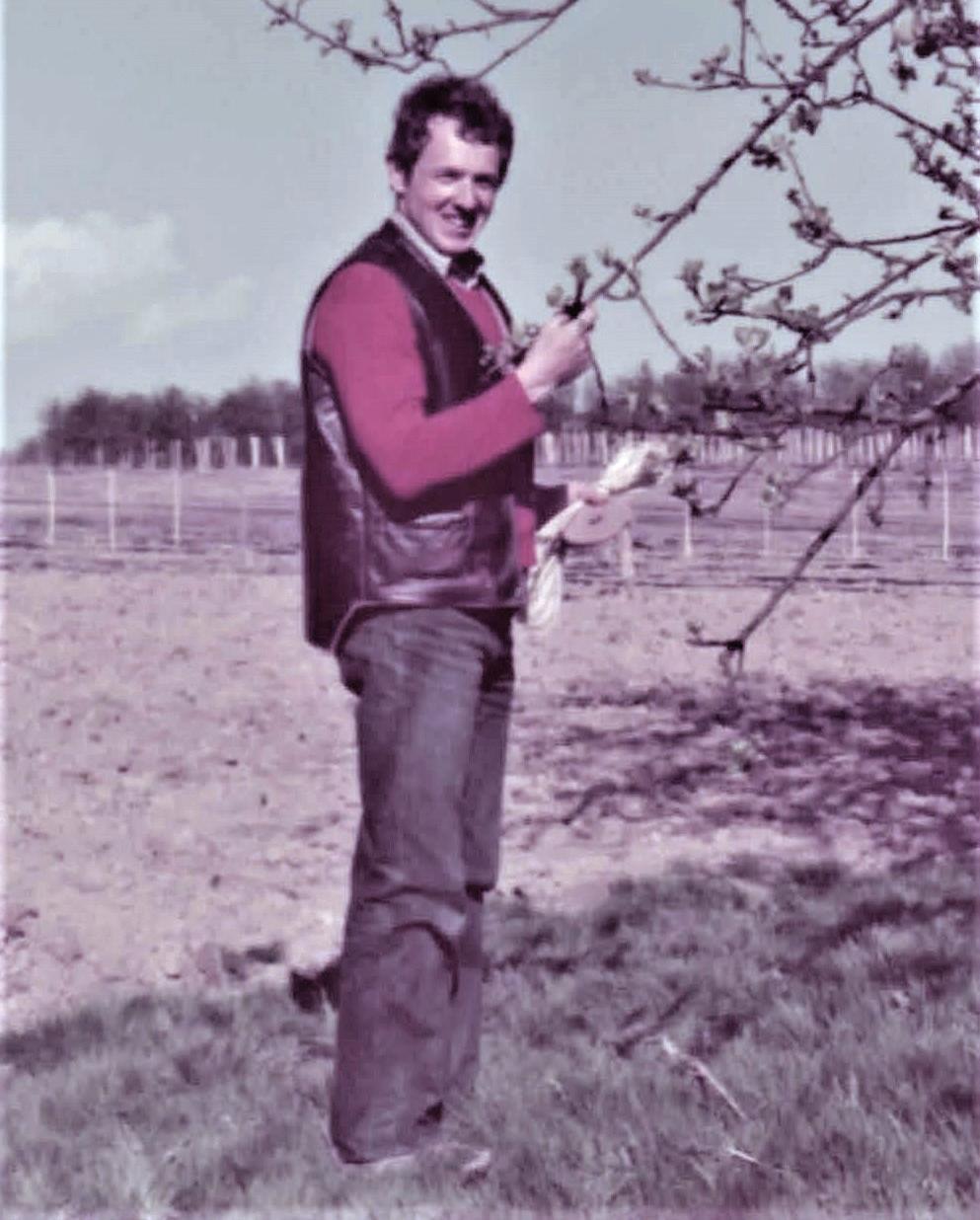
near Maidstone, and as we drove into the drive, we were confronted with a small vineyard. We looked round the house, asked a few questions about the vineyard, and went on our way to the next appointment. As I recall things, we didn’t like the house or it was too expensive, and the house was ticked off as being a firm ‘no’. The vineyard however, did stay in my mind and over the next few days I found out a bit more about the world of English and Welsh viticulture.
In those days, without the internet and websites, the first port of call was the library in whose ‘reference section’ directories of the whole country could often be found, plus Yellow Pages, the business directory. I soon established that there was an English Vineyards Association (based in Felsted, Essex, the village where I spent 10 years at school and near where I spent the first 20 years of my life) and made contact, and eventually joined it. My parent’s house was in the CM3 postcode whose southern edge is pretty much the whole of the north shore of the river Crouch, today the much-talked about ‘Crouch Valley’ and from our bathroom window we could see the spire of Danbury Church.
The next time we visited my parents, we took it upon ourselves to go to the only vineyard in that area, New Hall Vineyards, established in 1969, where we were greeted by its owner Bill Greenwood (wearing, as I recall, both a belt and braces). I don’t remember if we looked around, whether we bought any wine, or what Bill told us about running a vineyard, but whatever happened, it didn’t dent our enthusiasm for the subject.
At that time I was working for my fatherin-law, John Leroy, who having made a success out of a travel company and sold out – he and his father had invented what today we would call package holidays – they had then decided to invest their family money
54 54
WRITTEN FROM EXPERIENCE
Stephen in April 1977
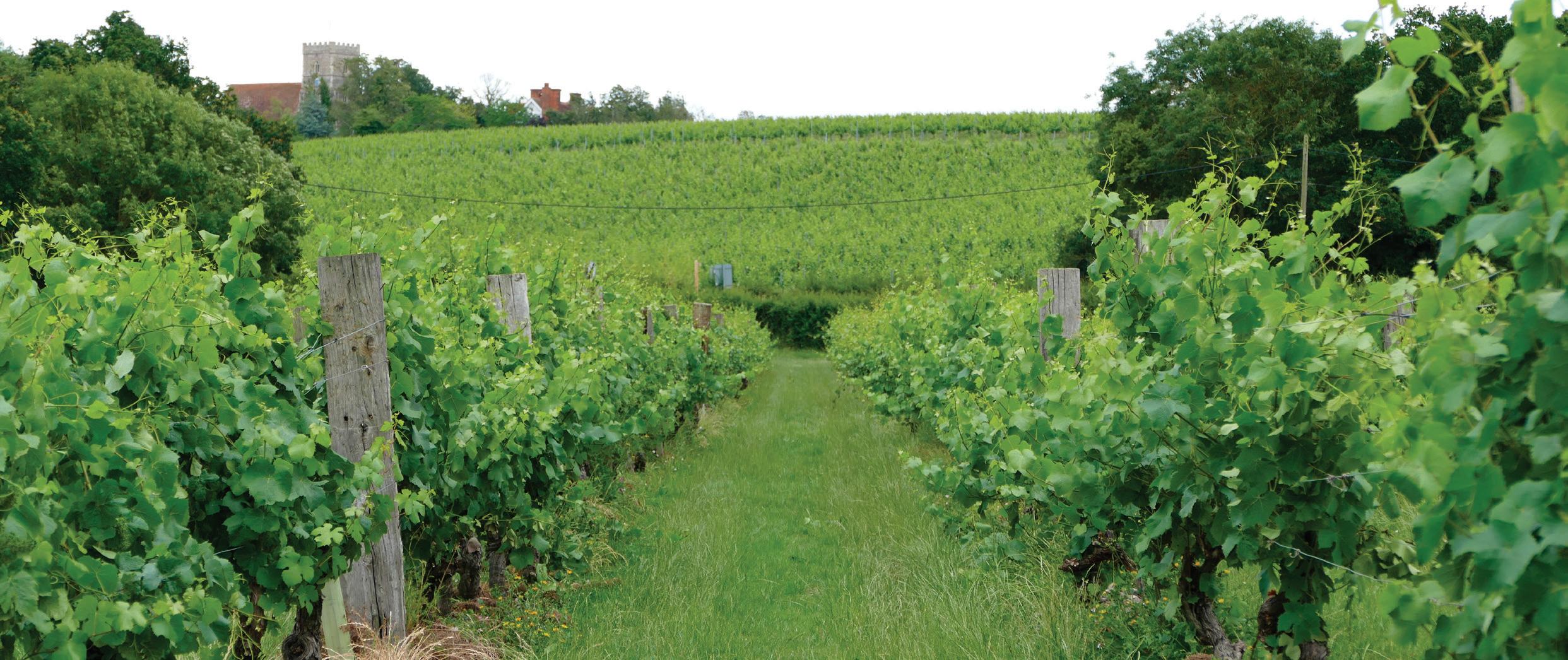
into a 2,500 acre farming estate in Tenterden. John Leroy, not having a farming background, was always interested in something new in agriculture and on hearing about our interest in vineyards, started to ask questions. He accompanied me to a viticulture conference held at the Royal Agricultural Centre at Stoneleigh in Warwickshire, put on by the British Farmer and Stockbreeder, a magazine owned by the NFU.
After more research, visiting vineyards and talking with the then luminaries of this small branch of horticulture, I decided the best way to further my career in wine was to go and work in Germany, the source then of almost all the vine varieties we grew.
popular white wine, Blue Nun, didn’t really understand what we wanted and had merely invited us to visit as a PR exercise.
We visited their Mainz bottling plant, tasted a very large selection of wines that had been laid on for a visiting British wine merchant, and fairly late in the afternoon, their then assistant sales director, Riquet Hess, popped his head round the door to pay his respects. After the usual questions ‘what are you doing here’ and ‘what are you after’ he said ‘Lets go for a beer’ and we then laid out our plans to Hess. What we didn’t know about him was that as a teenager, he had spent time on a Somerset dairy farm, and had even considered at one time staying in Britain and taking up farming.
in Hattenheim in the Rheingau, arguably Germany’s most prestigious wine growing region. It was also very near to Geisenheim, a village world famous for its wine university. Schönborn, founded in 1349, was a very old-school estate and was run for the Graf by a genial betriebsleiter Robert Englert, who fixed me up with a hotel to stay in for three weeks (the now famous Zum Krug) whilst the company flat he’d earmarked for me became vacant.
In us therefore, he saw something of a parallel and after far too many beers, he said ‘don’t worry, I can help’. This almost chance meeting led to Hess finding two wine estates who would take me, and after some negotiations, I finally secured a place as a praktikant, what we today would be called an intern, at the largest privately owned wine estate in Germany, Schloss Schönborn
Wine Growing in Great Britain – Second edition is an A to Z of growing vines in the UK
For anyone contemplating planting and establishing a vineyard in the UK, and for those already growing vines on a small scale who perhaps wish to expand their vineyards and improve their winegrowing skills, it will be invaluable. It will also be of interest to students of viticulture. Wine Growing in Great Britain covers not only the viticultural tasks involved, but also, uniquely, the finances of UK wine growing: land costs, vineyard establishment and management costs and the income from both grape sales and wine sales.
Despite not speaking a word of German (luckily my wife had picked some up during her six months working in Austria) we set out in a camper van right at the end of December 1974, to visit three wine producers with whom I had been in contact and who offered me interviews. The first two didn’t seem keen to help, and after relatively short meetings, we went on our way. The last one, Sichel’s in Mainz, the makers of Britain’s then most Available
It was June 1975, in the middle of a heatwave, and the smallest and undoubtedly cheapest room in the hotel, a single situated right above the kitchen range, was hot as hell. Englert introduced me to the hotelier and said he would see me at 7am the next morning ‘in the hof’ i.e. the courtyard in front of the winery, and where everything happened. I didn’t know quite what to expect, but duly turned up, wearing shorts and on my feet, the black boots that had been my school ‘corps’ boots. Thus started my first day in wine.
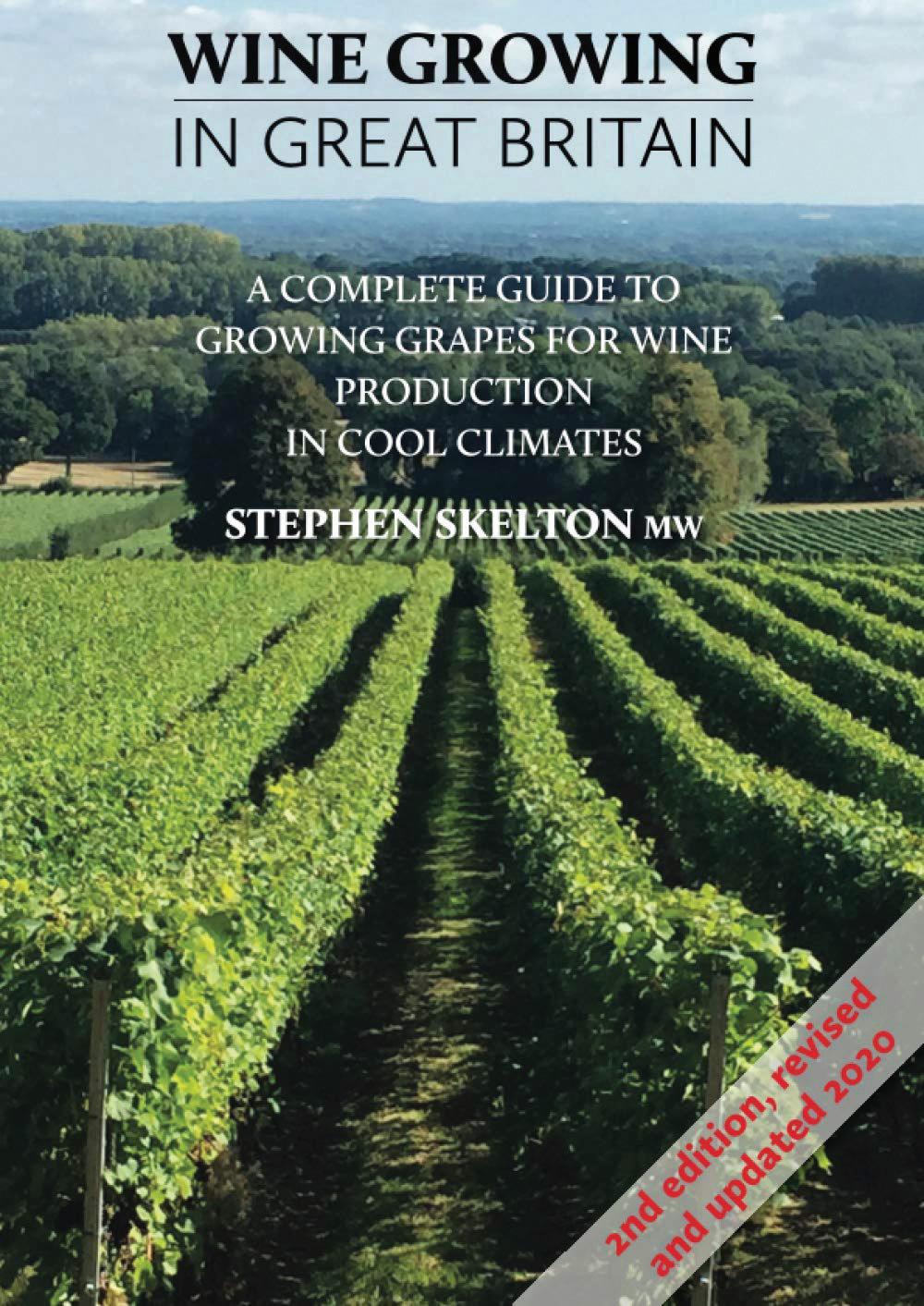
55 55
from: Amazon and World of Books
APRIL 2024 | VINEYARD
New Hall Vineyard today
Impressive range of machinery
Vitifruit Equipment Sales and Hire
It would be difficult to find a machinery supplier with more experience of viticulture than David Sayell, one half of the highly respected Edenbridge, Kent-based Vitifruit Machinery.
While Vitifruit itself was only set up by David and business partner Richard Witt around a dozen years ago, David has abeen supplying vineyard equipment for some 44 years, beginning not long after growers first recognised this country’s potential for growing grapes.
It’ s a track record that makes him the longest-established importer of vineyard machinery in the UK and has given Vitifruit a reputation with suppliers that furnishes the company with a major advantage when sourcing and supplying equipment to growers.
“We are sole importers of much of the equipment we provide, and we know it’s the best there is because we have been selling it for a long time and we researched it thoroughly in the first place,” Richard commented. “Growers who want the most reliable equipment at the best price point know that we can supply it.”
The other major ‘selling’ point with Vitifruit is that by “supply”, Richard doesn’t just mean “sell”. The company has a thriving hire business that allows potential customers to try out a piece of equipment in real world conditions before deciding whether or not to buy it.
Indeed, as David explained, it’s positively encouraged. “We have
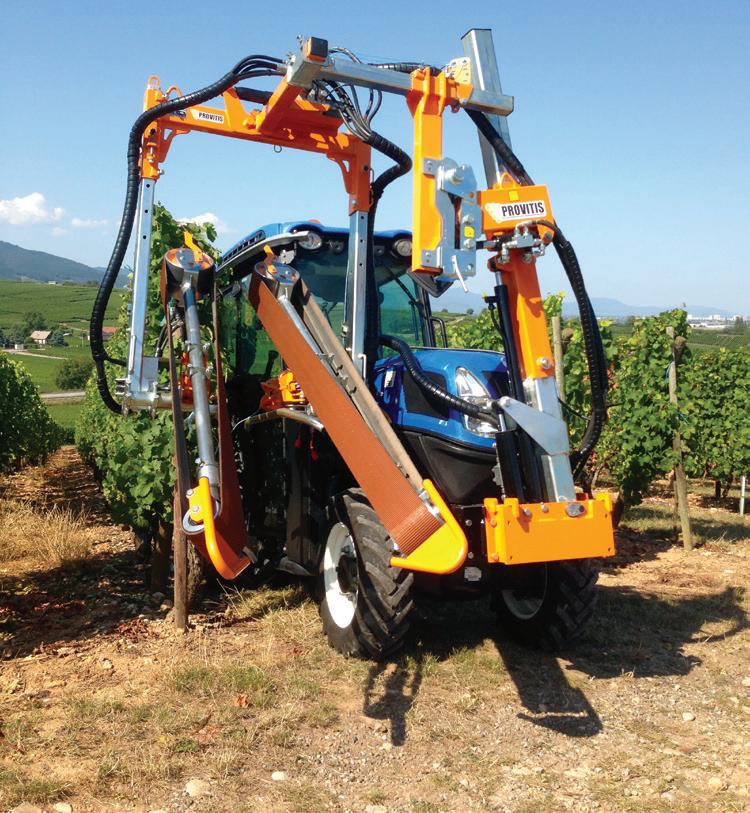
machinery at a range of price points, but it can be a big commitment to buy a piece of specialist equipment for a vineyard, so making sure it’s exactly right for your set-up has to be a good thing. The other issue, of course, is that some of this kit is only used for one task, once a year, so it can make sense to hire it rather than buy it.”
The range of machinery on offer is impressive, covering all the usual vineyard tasks, although Vitifruit does not supply winery equipment or tractors, since it would be difficult to provide nationwide backup to its usual standard.
“We pride ourselves on being able to look after the equipment we provide, and by choosing our manufacturers carefully we find most of it rarely goes wrong. Tractors would add another dynamic – and would be more challenging in terms of deliveries around the country – so we stick to what we know best,” David explained.
For everything else, though, from pruning and tying down through spraying, mowing and weed control, subsoiling and compost spreading and on to canopy management, Vitifruit has become the supplier of choice for many of the country’s best-known vineyards.

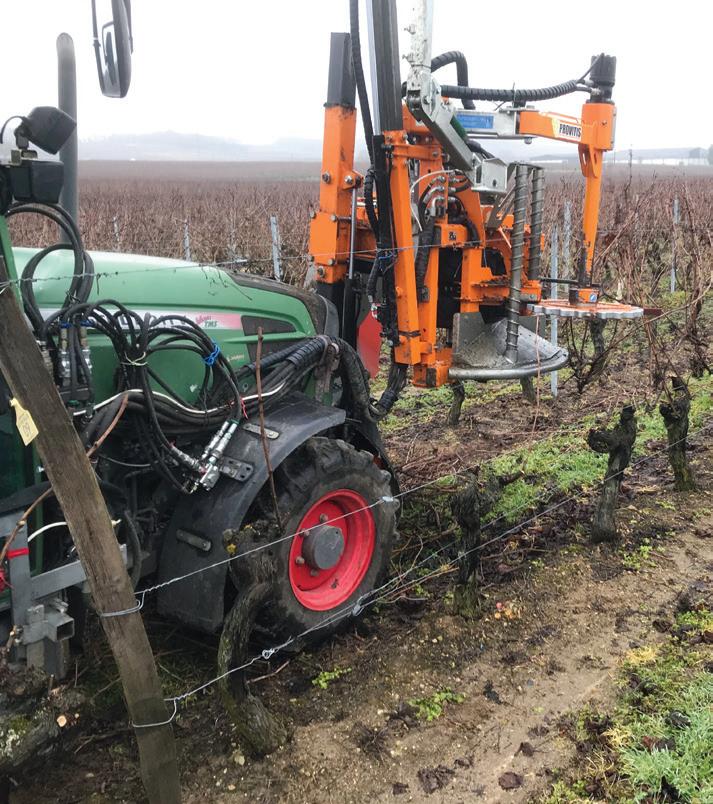
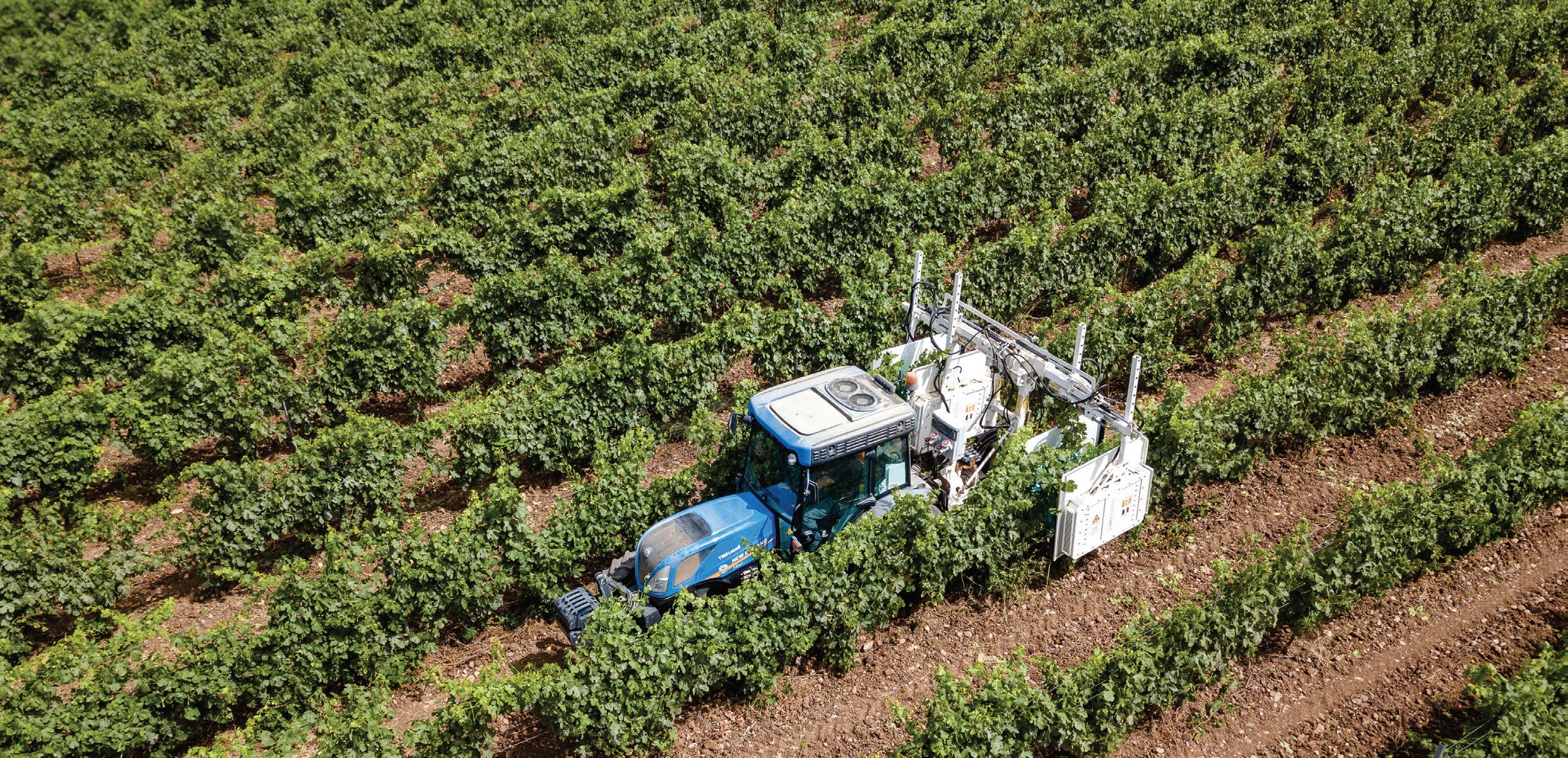
56
56 VITIFRUIT EQUIPMENT
<<
UV boosting
Provitis lifting and tying in machine
Provitis Cane Puller
Fertiliser distributor
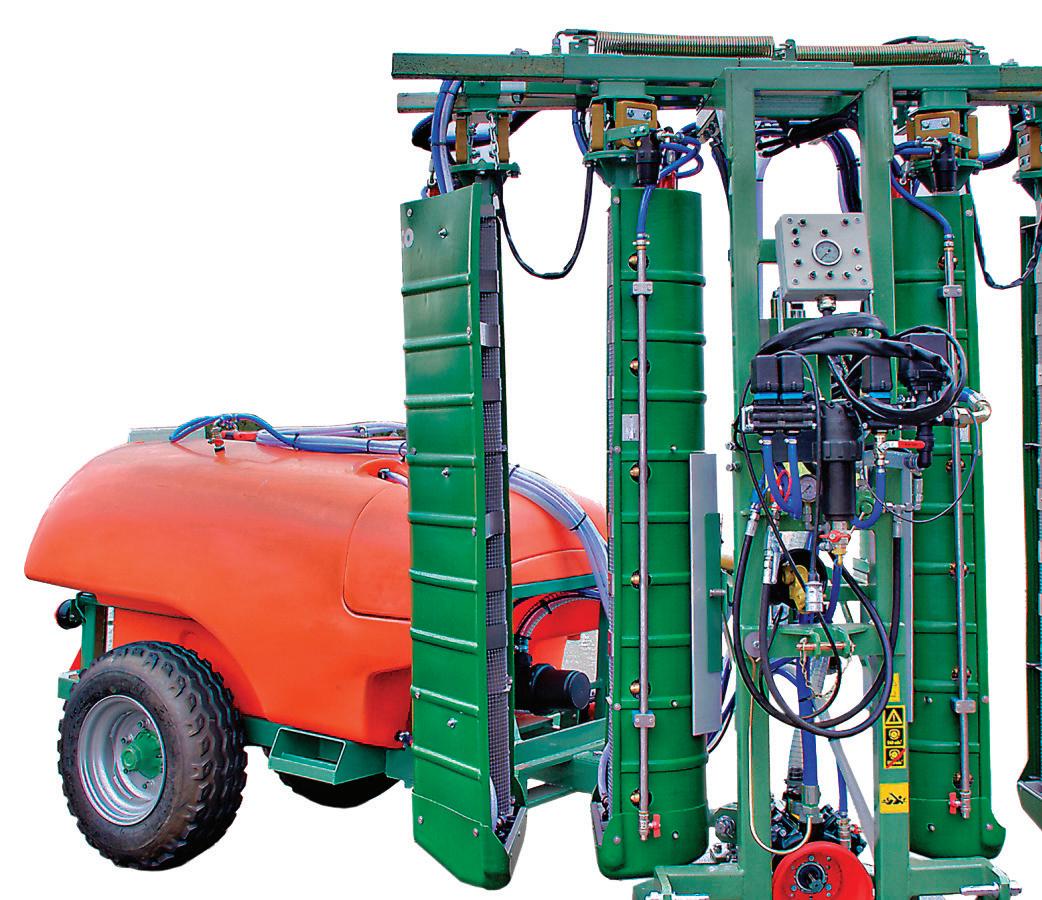















































































































































































































































Spray Recycle Reuse www.lipco.com Eco-Spray up to 40% agent use reduction 95% loss reduction approved no restriction LIPCO TUNNEL RECIRCULATION SPRAYERS MACHINE OF THE MONTH Sales and Service from Vitifruit Equipment Sales and Hire Unit 3, Skitts Manor Farm, Moor Lane, Marsh Green, Kent TN8 5RA Telephone: 01732 866567 Mobile: 07908 239643 Email: vitifruitequipment@sky.com


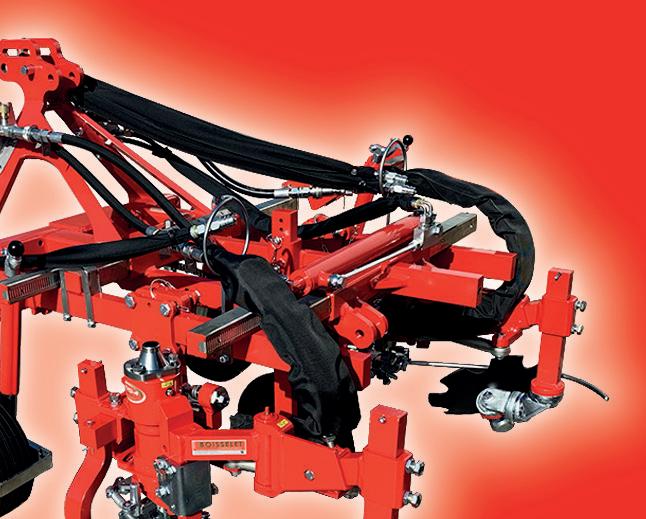


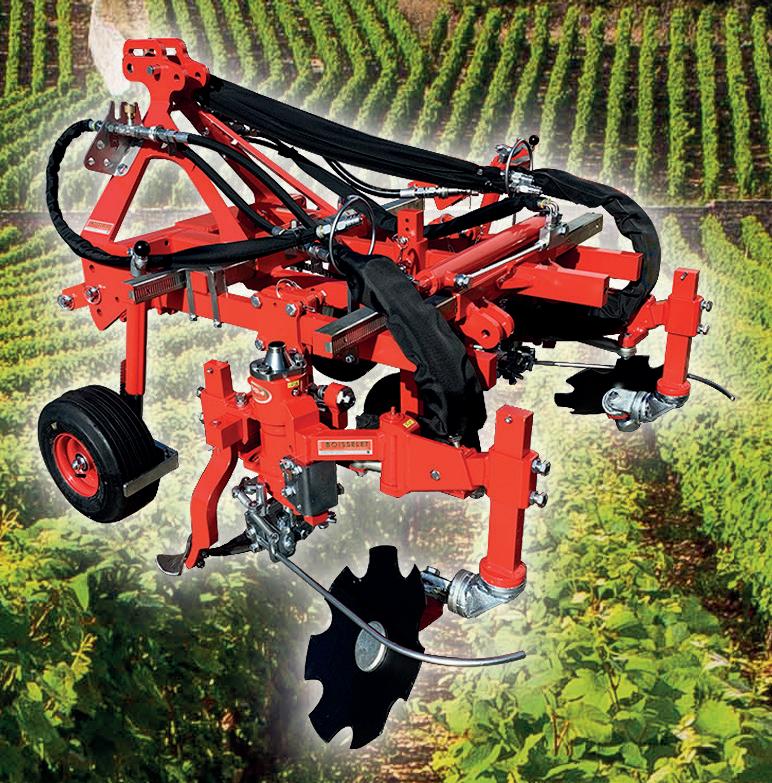




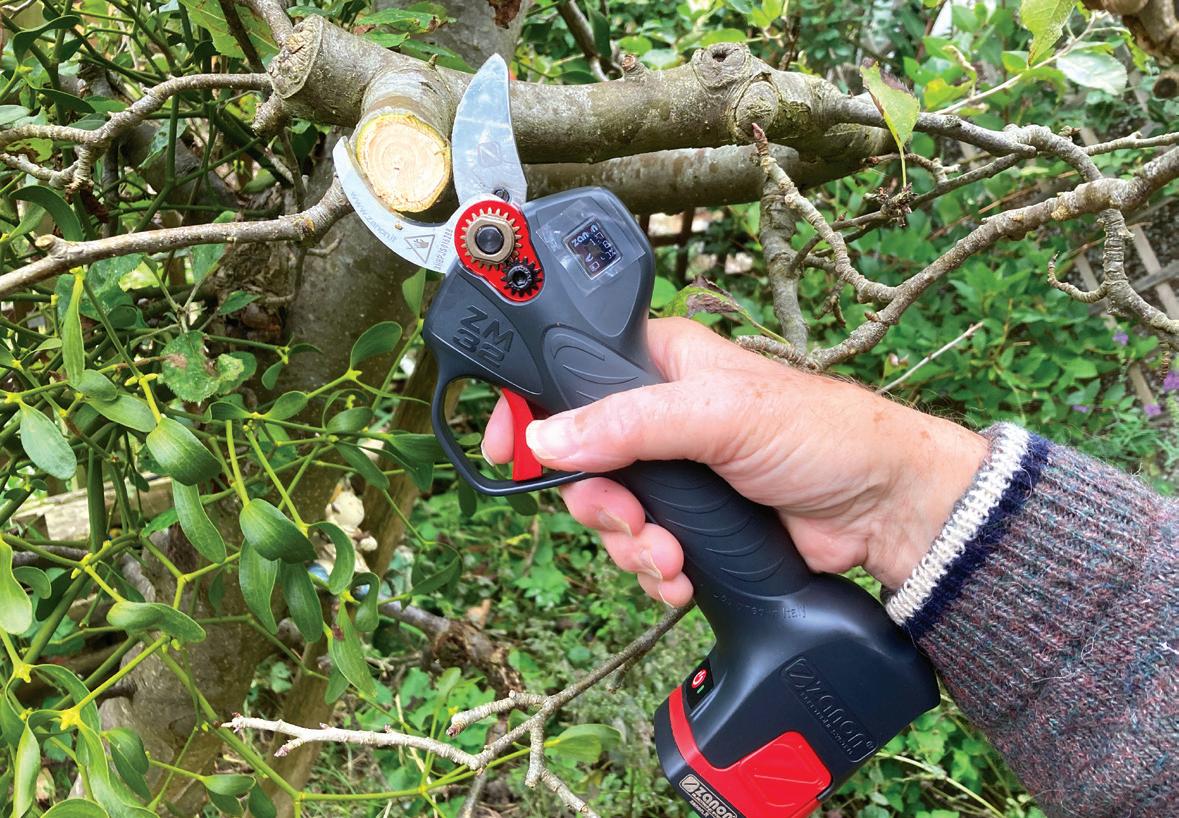




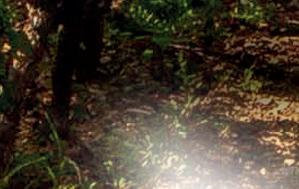

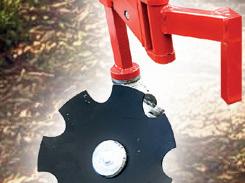






















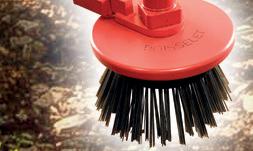




















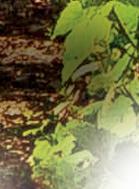





































































Getting ready for the season ahead

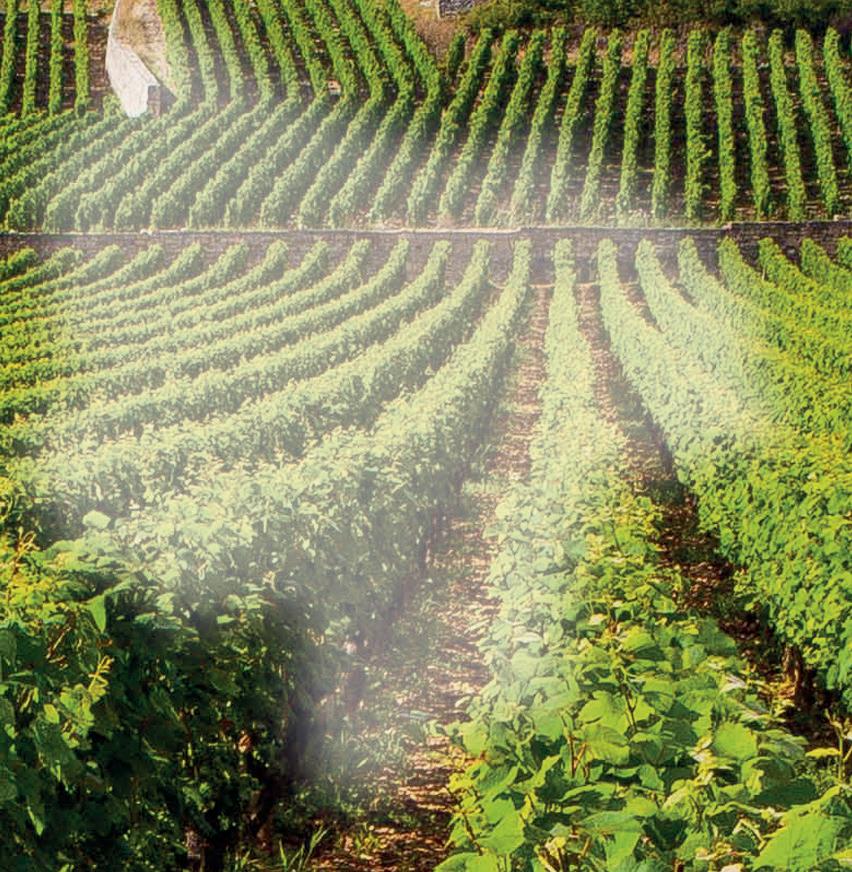
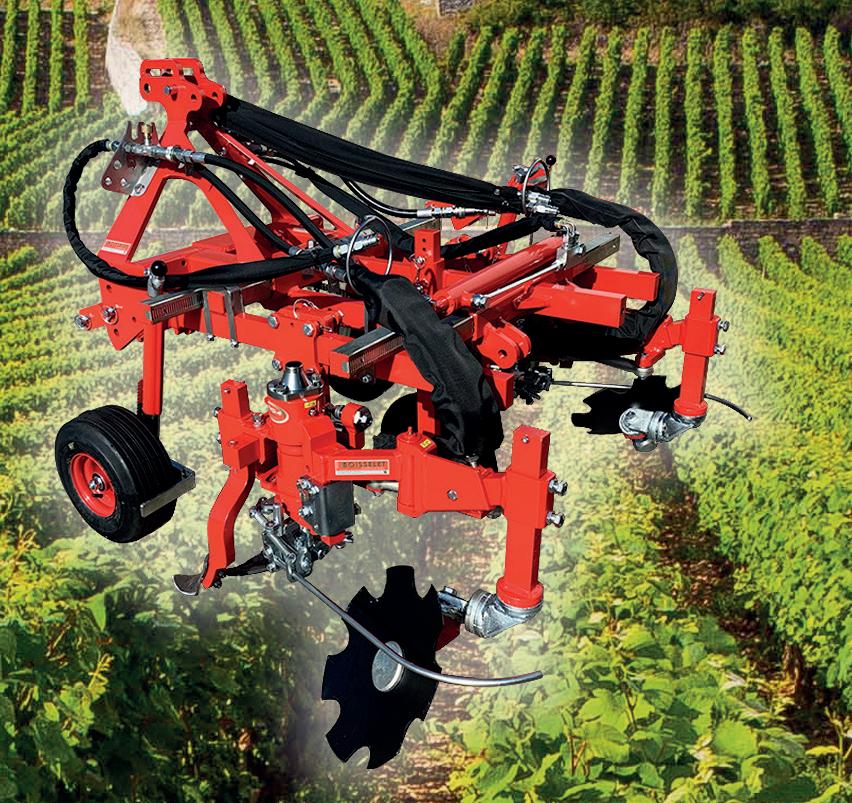
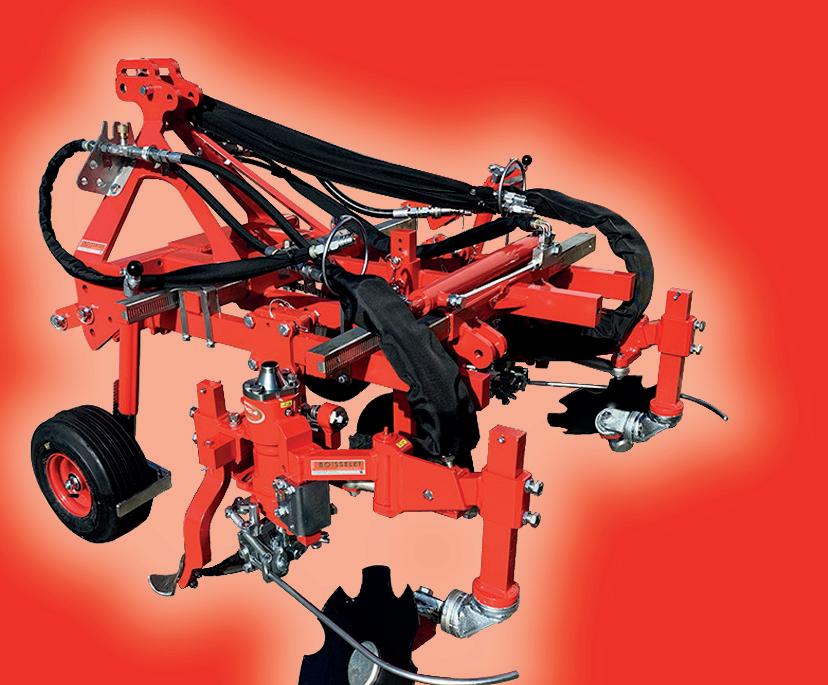









Mechanising leaf removal: Leaf removal by hand is labour intensive and expensive so the alternative is to mechanise. Various systems have evolved over the years with the early ones being rather rough and ready but the recent ones being refined, safe and able to cover a lot of ground in a day.
Vitifruit Equipment have been selling and hiring them for over twenty years and have seen a growth in use across the country as more people try them and get used to them.
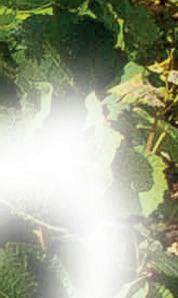

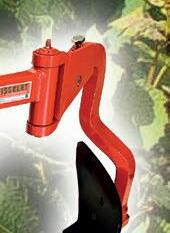






There are two basic types, first the one which sucks the leaves into contra rotating rollers which plucks them off and second the type which jets fast moving air into the leaves and blasts them off. Both types have their place with the plucking type being used all through the season right up to the day of harvest but the jet type being used more mid season before the berries get too soft, however that type is more capable of removing all the leaves particularly those in the densest centre of the trellis.



































































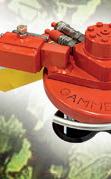




















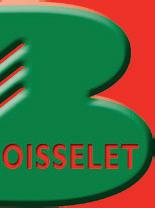

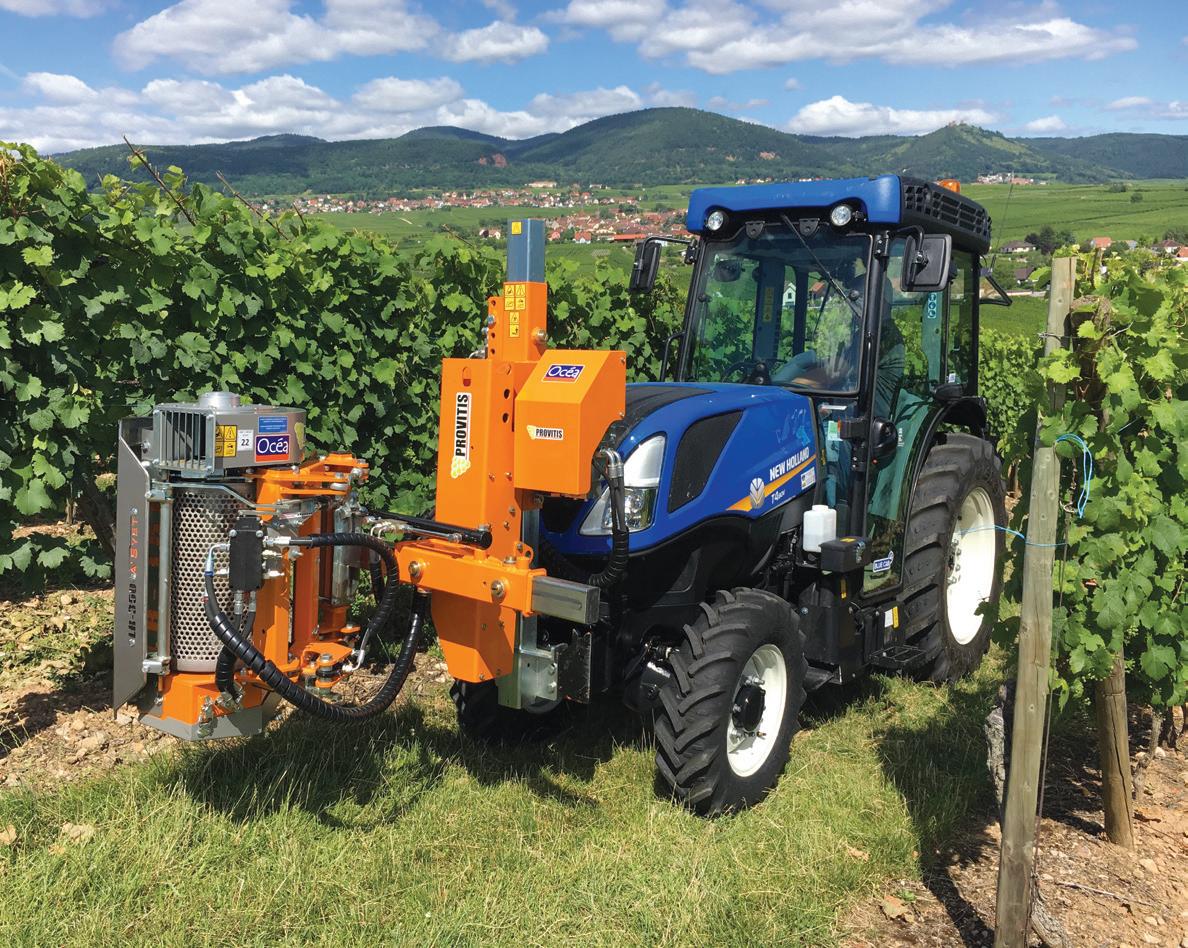
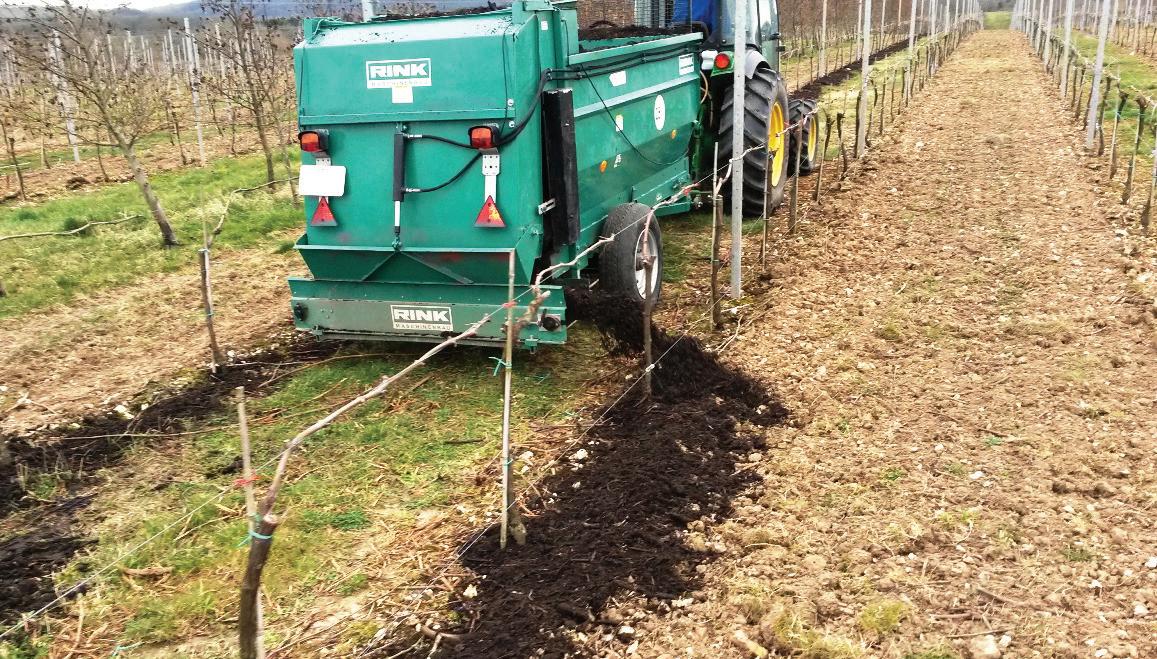
58 58
32
Zanon
ZM
Leaf Removers
Provitis
spreader
Compost
FRAME WITH TOOLS Tomo ow’s tradition SINCE 1836 Designer, manufacturer of viticultural equipement, arboricultural ... Distributed in UK. Vitifruit Equipment Unit 3 Skitts Manor Farm, Moor Ln, Marsh Green TN8 5RA, United Kingdom Phone number +44 1732 866567 CUTMATIC DÉCAVATIC
RANGE BIO-MATIC BOISSELET SAS 3 Rue de la Motte, 21200 Montagny-lès-BeauneFrance tél : +33(0)3 80 22 07 82 • info@boisselet.com • www.boisselet.com Coordonnées GPS : 46,9937938, 4.851453
THE
holder frame with the EVO4 Servomotor Servomotor APRIL 2024 | VINEYARD
Tool
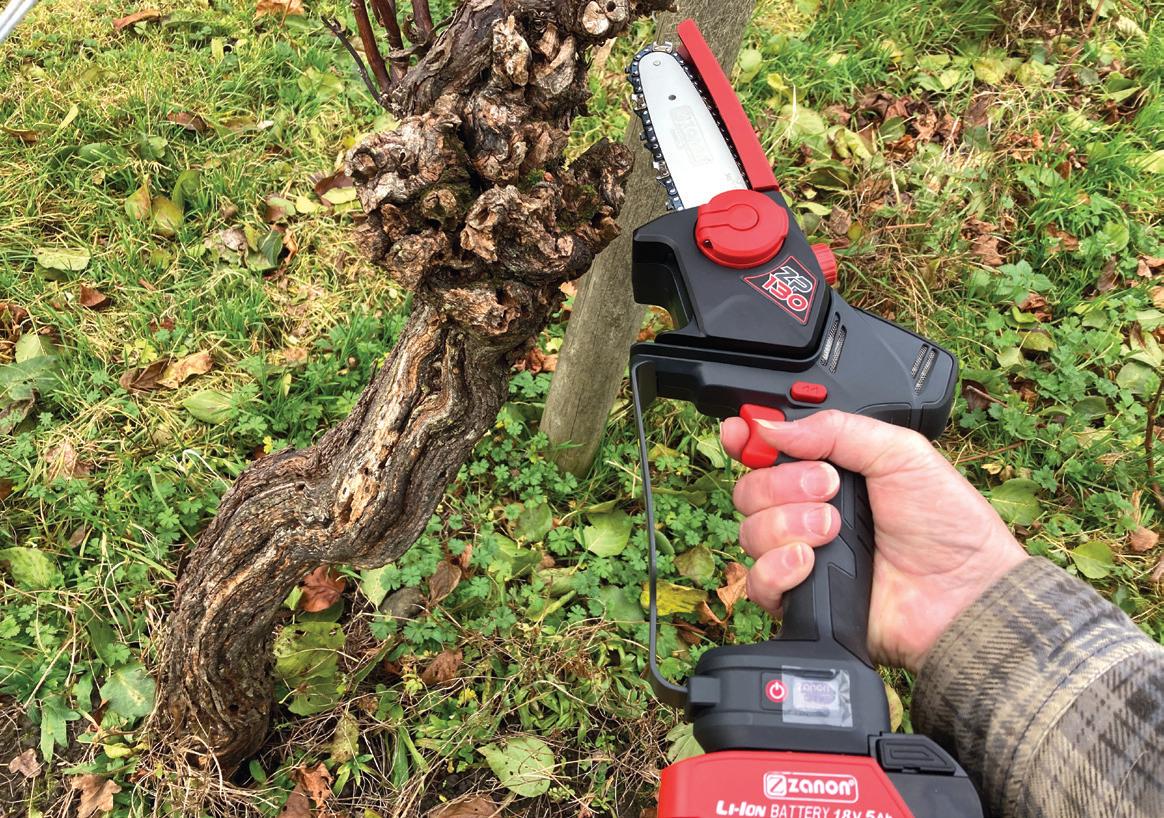
Its carefully selected products come from manufacturers including Lipco, MM, Provitis, Boisselet, Ligatex, Fehrenbach, Sauerburger and Zanon, while for frost protection David and Richard have recently teamed up with French company Ventigel, which manufactures a machine that blows warm air across the vines to dry the buds and raise the temperature at the same time.
Such is the company’s reputation, that manufacturers such as Sitevi in Montpelier and Sifel in Bordeaux regularly approach Vitifruit at trade shows to ask the company to distribute their products.
It’s a far cry from the early 1980s, when David first realised that there was a gap in the market for a specialist machinery supplier and set out to find equipment that would be suitable for UK vineyards.
He was working as a machinery salesman for two South Eastbased dealerships who were mainly supplying fruit growers when he came across a newly established vineyard in Penshurst in Sussex, one of only a handful across the country at the time.
“I soon realised that while this new crop was beginning to take off, the growers were making do with existing bits of equipment rather than using kit that was designed specifically for the jobs that needed doing around the vineyards,” he said.

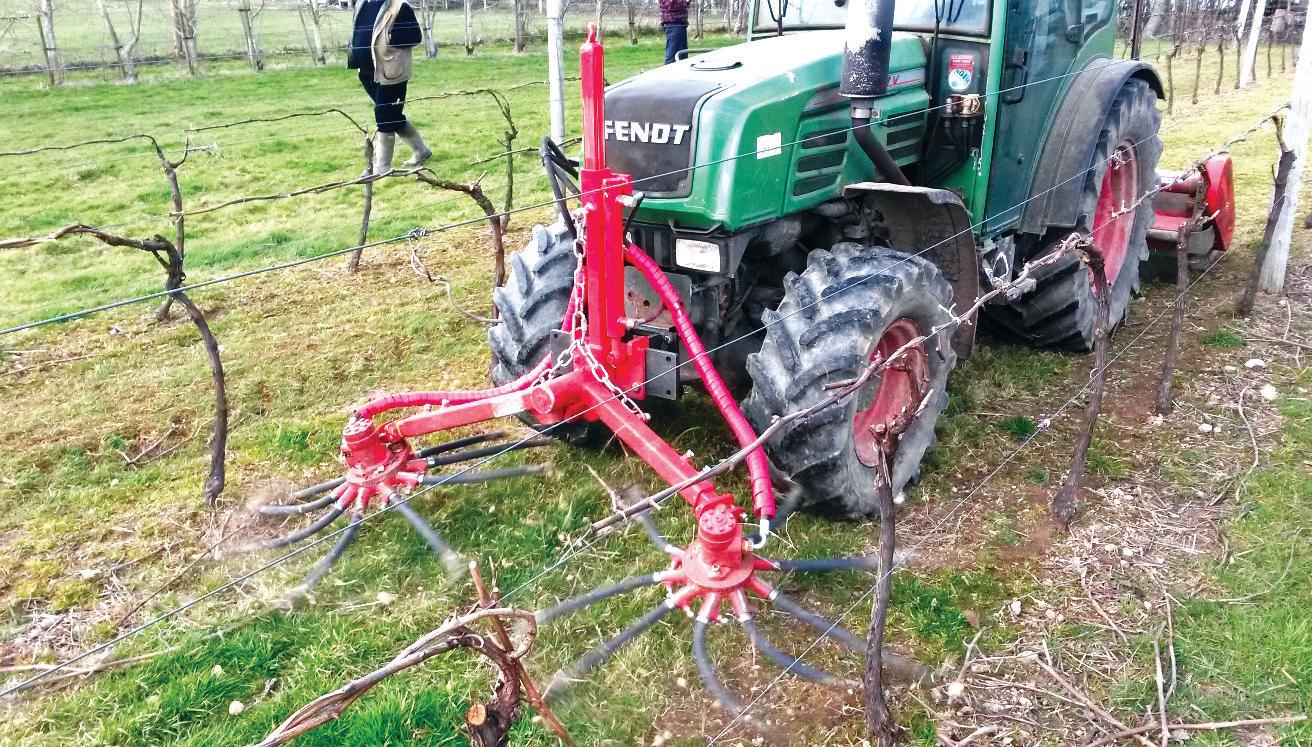
































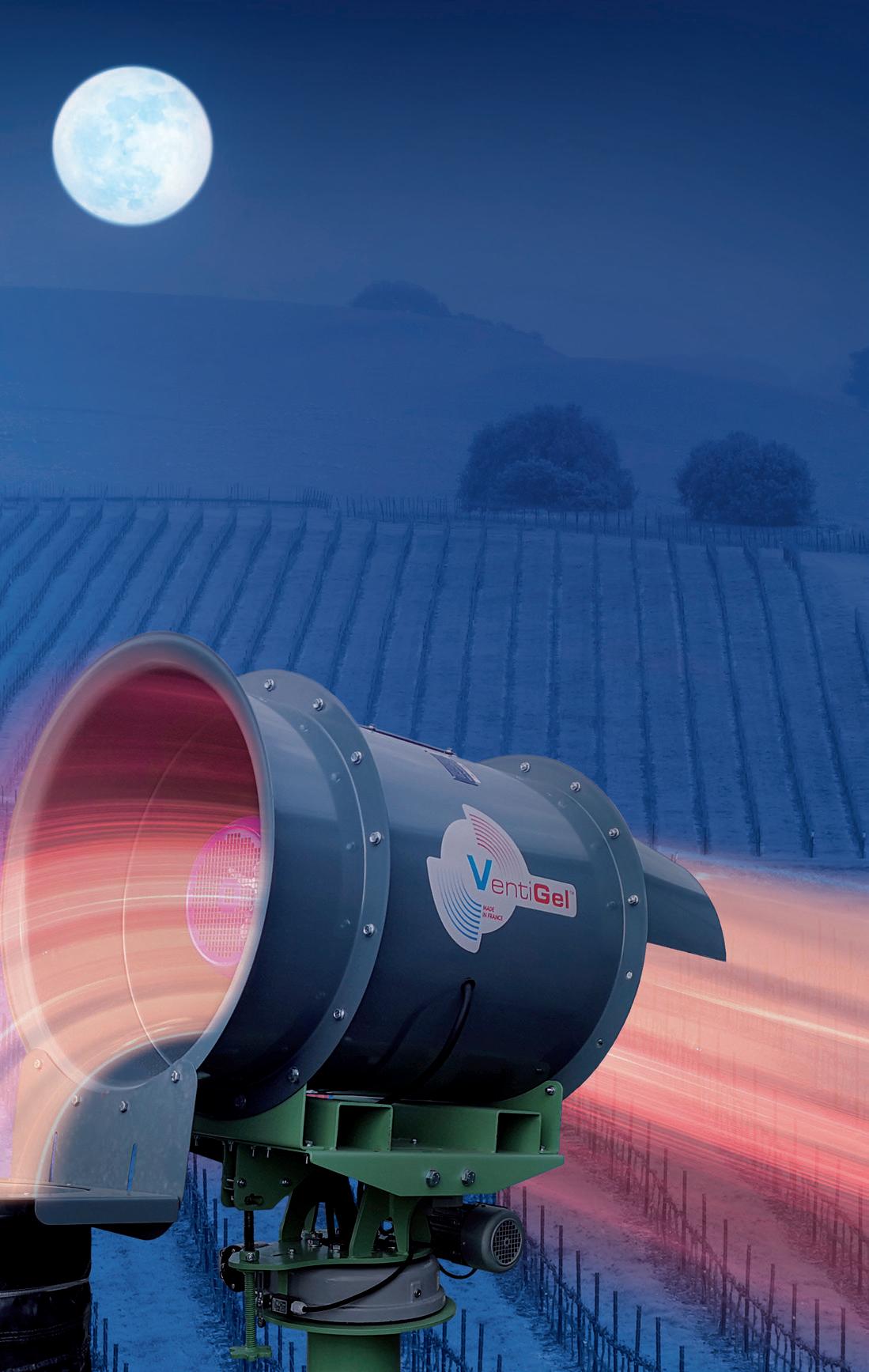

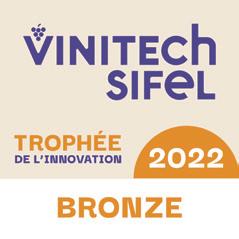

59 59
<< <<
ZP 130
Provitis Trunk Cleaner
VITIFRUIT EQUIPMENT Unit 3, Skitts Manor Farm, Moor Lane Marsh Green, Kent TN8 5RA Telephone: 01732 866567 Mobile: 07908 239643 Email: vitifruitequipment@sky.com The solution against
After more than 150 units sold in France, VENTIGEL is now available in England with APRIL 2024 | VINEYARD
Boisselet Prunings Sweeper
frost
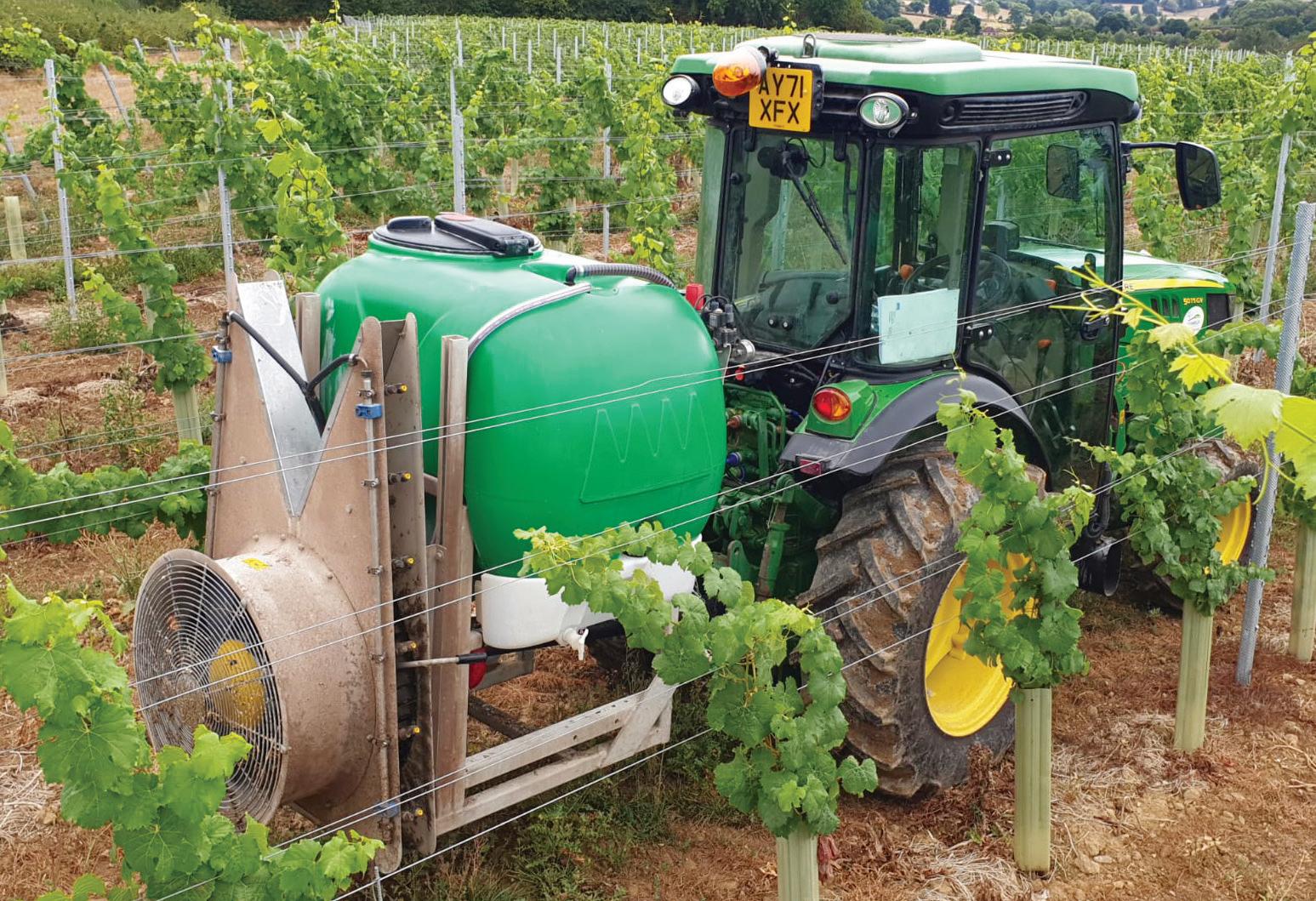
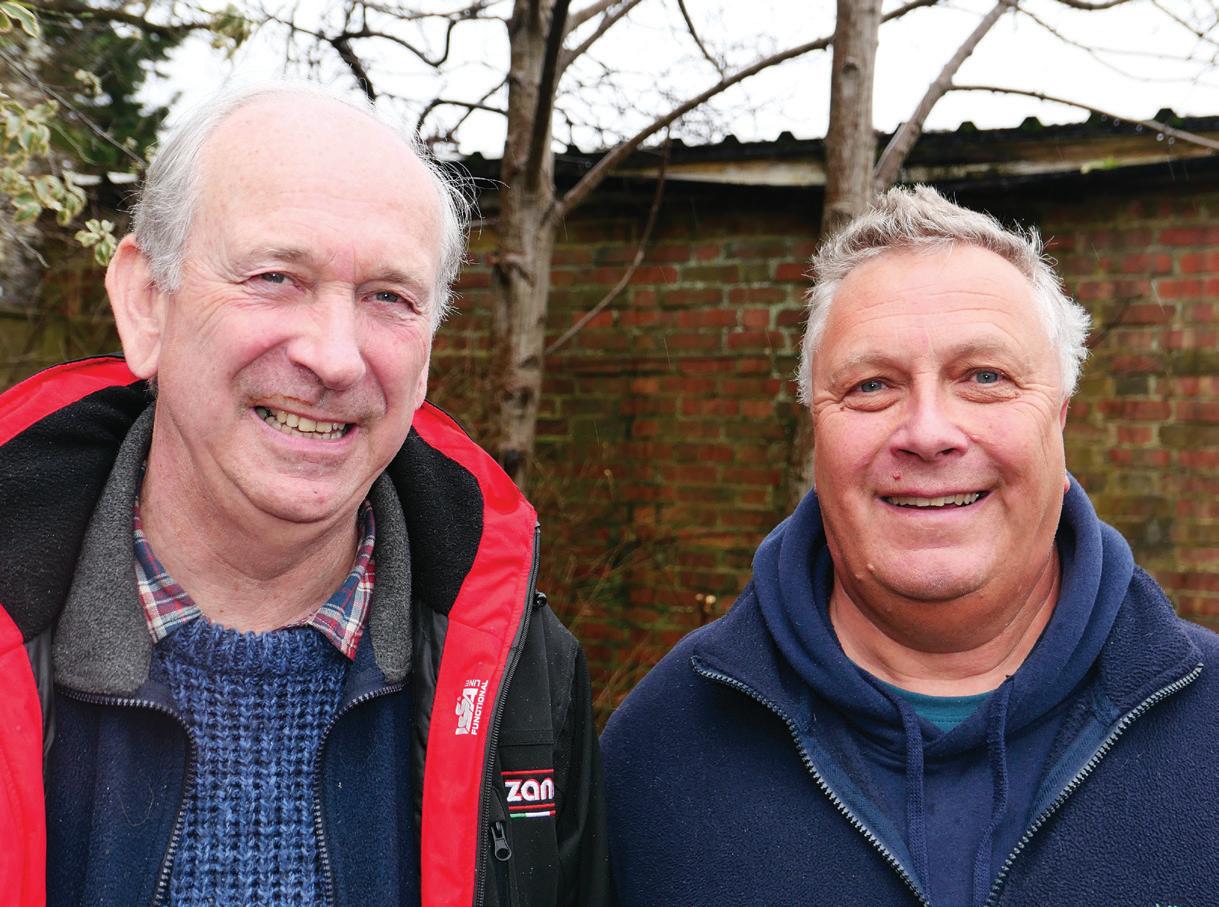
<< The decision to stock equipment for hire as well as for demonstration purposes was made early on, and many growers now take advantage of the ‘try before you buy’ option, particularly for jobs that may only need doing once in a season.
At one vineyard he visited, David met a German employee who gave him some useful information and a number of industry contacts that inspired him to travel to viticulture exhibitions in Montpelier and Stuttgart. There he found the equipment he was looking for and that the UK’s steadily growing wine industry needed.
“Over the years I went on to build relationships with manufacturers across Europe and with growers across the South East and beyond,” he recalled. “The aim was to provide a range of good quality, reliable machinery at a reasonable price point that wouldn’t need an army of people to maintain it or a warehouse full of spare parts ‘just in case’.”
David traded under his own name until 2011, when he teamed up with Richard to form Vitifruit Machinery. With the rise and rise of vineyards in the UK, the company’s head start is now paying dividends. “We put a lot of effort into making the right connections and sourcing the right equipment in the early days and now we are able to ride the wave of an increasingly thriving industry,” Richard commented.
Vitifruit aims to provide a variety of equipment that hits a broad range of price points but is also well built, low maintenance and long lasting. The breadth of the range is evident in sprayers, where as well as the renowned Lipco range, the company stocks the Italian-built MM models that are ideally suited to small to medium-sized vineyards.
“It means we have to be shrewd about what we buy in, as we don’t want to be stuck with equipment for which there isn’t a market,” explained Richard. “It encourages us to do our homework, and so far we’ve always managed to pick winners.”
Richard estimated that around one third of the company’s current income came from equipment hire, with two thirds of customers going down the traditional sales route. Sprayers are the only pieces of machinery that are not available to hire.
Given the complex nature of the equipment and the fact that a fair number of growers are new to the industry, Vitifruit makes sure customers are happy that the machinery is not just right for their needs but works with their tractor and is set up properly.
Han Rushanov, a talented fitter, visits clients to install new equipment and make sure it runs properly before demonstrating how it works.
“It’s not easy to find skilled and experienced people in such a young industry, and from Vitifruit’s perspective, ‘OK’ is not good enough,” said David. “Han is a remarkably skilled individual who has taken the

60 60
David Sayell and Richard Witt
MM Sprayer with linear fan
Lipco
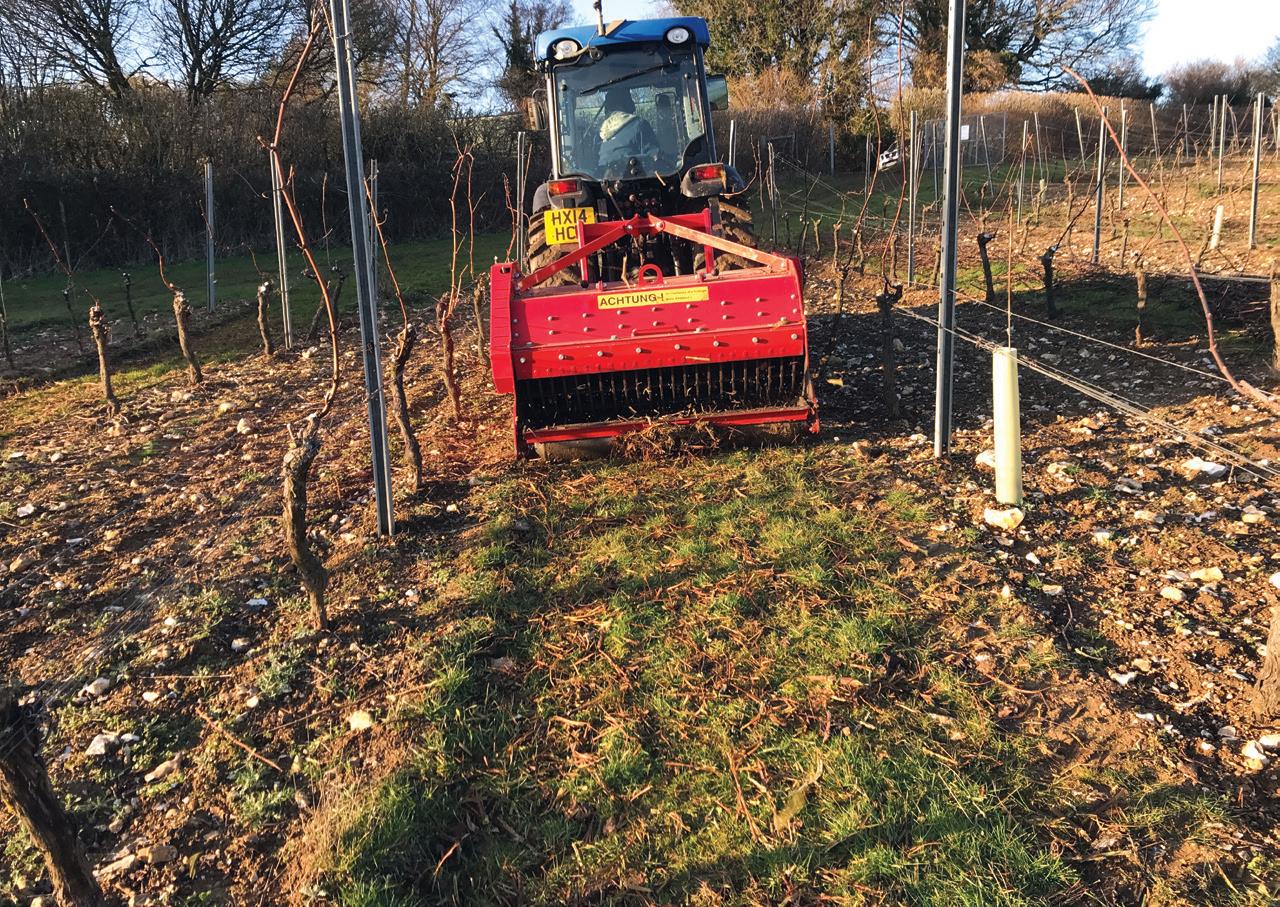
service we offer to a different level.”
Equally valued as a member of the Vitifruit team is David Wood, who looks after the servicing and repairs side of the business.
While the expansion of grape growing in the UK has led to a number of manufacturers approaching Vitifruit with a view to exporting to this country, David and Richard are confident that in most cases they are already dealing with the right suppliers.
David also pointed out that while the area of land under vines in the UK has now hit around 4,000 hectares, there are vineyards in Europe that are close to that on their own. “Yes, the growth here is exciting, but we are still tiny by comparison,” he pointed out.
Vitifruit offers machinery from new manufacturers only after a careful vetting process to make sure that it is reliable, cost-effective and does the job it is supposed to do. The MM Italian range of air assisted sprayers aimed at smaller vineyards is a case in point. “They do exactly what they

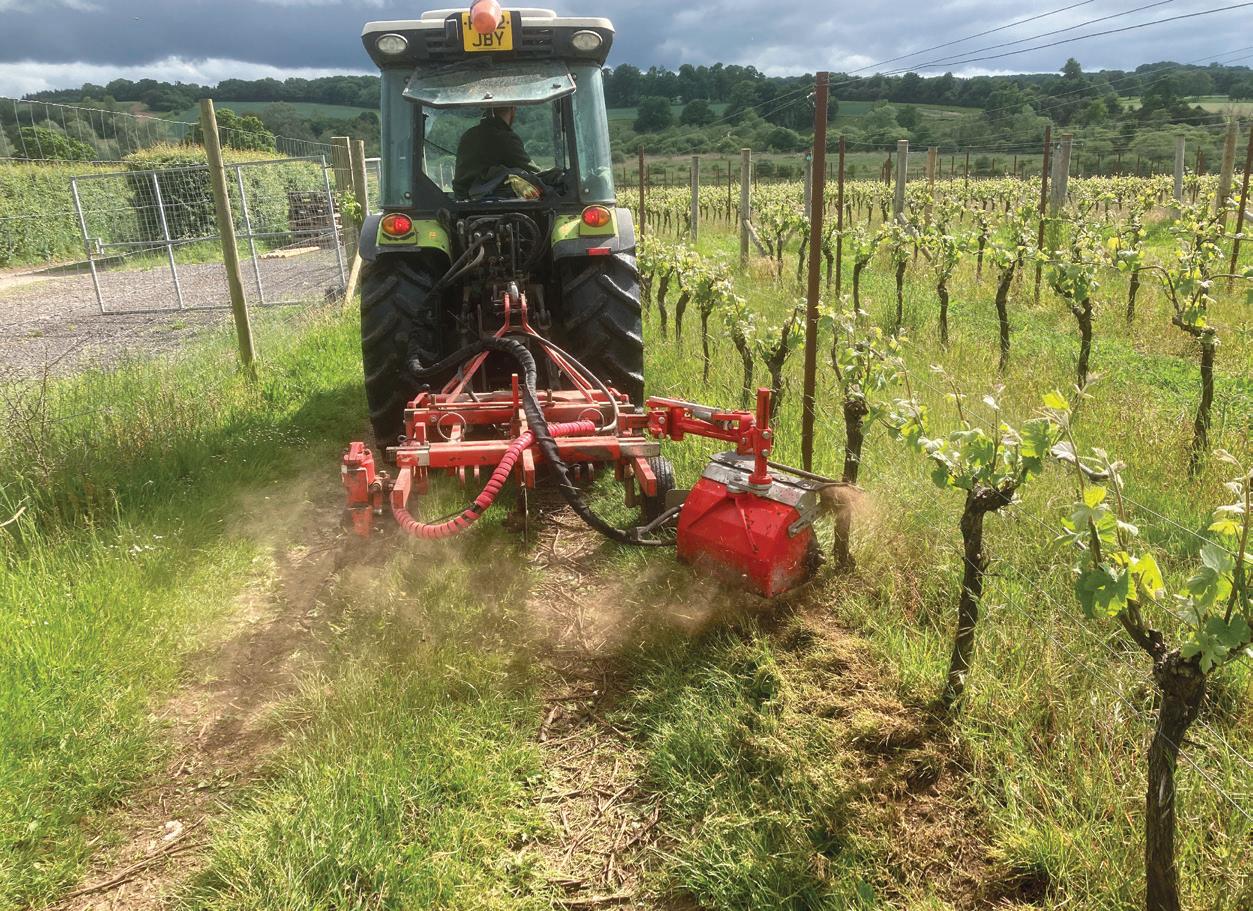
claim and have proved ideal for the target market,” David commented.
Provitis, which he referred to as “The Swiss Army Knife of grape growing”, produces a wide range of equipment that is all attached to one central mast fixed to the tractor. The comprehensive range includes a trimmer, bud rubber, leaf remover, stem cleaner, pre-pruner and pulling-out and tucking and tying equipment, all built to a high standard.
“Because it all attaches to the same mast, the grower saves money on the control system, which he or she only has to buy once,” Richard pointed out.
Equally flexible is the Boisselet modular system, which is based on a frame from which a variety of tools can be hung. The Boisselet is particularly good for under-vine weeding, leaving the roots but removing the stems of unwanted plants and avoiding the use of chemicals. It’s adjustable torque servo motor means it can be used on young vines without causing any damage.

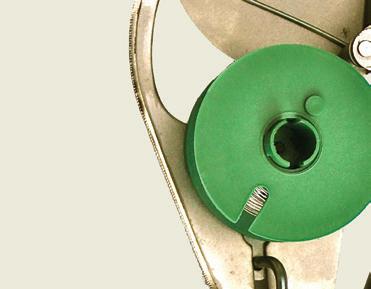
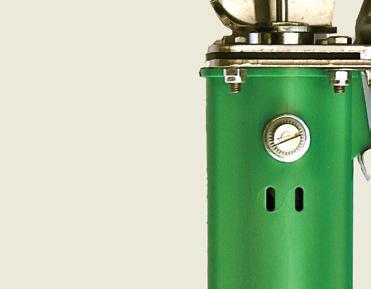
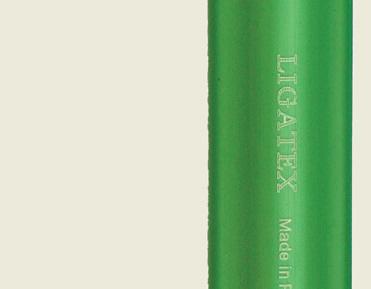



61 61 <<
Rotofil one side at the Grange Estate Prunings mulcher Lima 1500 VITIFRUIT can source the best weed and herbicide sprayers for your requirements. FOR WEED CONTROL AND SPRAYING WWW.MMSPRAY.IT CALL VITIFRUIT TODAY ON 01732 866567 LIGATEX BINDER Designed and manufactured in France Fast Comfortable Economical 100% manual Zero lithium, zero rare metals Degradable iron links without plastic coating. Spools and handles made from recycled materials. Revisable, repairable, recyclable Efficient eco-friendly and eco-responsible binding Vitifruit Equipment Sales and Hire Available from APRIL 2024 | VINEYARD

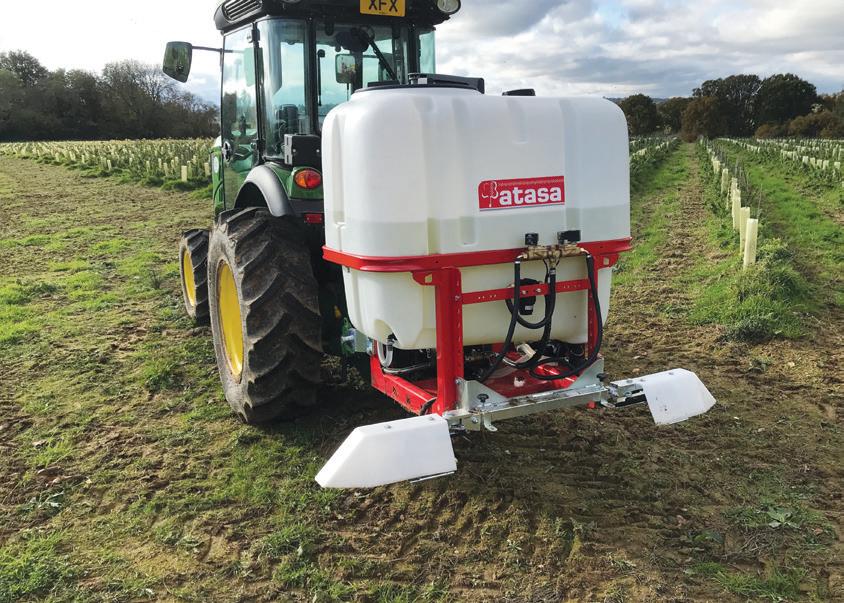
Lipco’s recycling sprayers are renowned in the industry, ticking an important environmental box by not throwing spray around the countryside while at the same time cutting costs by reducing wastage.
“Figures show that Lipco sprayers use 30% to 40% less chemical and water,” David explained.
Most Lipco models also spray in both directions from the centre, which means they cover two rows of vines with one pass, and their recycling function means they can be used in light (but not gale force) winds.
The Ventigel frost protection equipment comes from an experienced French manufacturer and benefits from a flexible power source. The fans have powerful electric motors requiring three-phase supply from mains, static or pto tractor-driven generators. By blowing warm air across the vineyard, one machine can protect around two-and-a-half to three hectares of fruit.
Vitifruit benefits from close links with Vinescapes, which provides


expertise and advice to growers around the country. “If the Vinescapes team is advising a new entrant to the industry and is asked about equipment, they tend to point them in our direction as they know we have the expertise to advise them,” Richard commented.
David has seen plenty of changes over the past 44 years but is particularly impressed by the professionalism shown by growers and by the steadily increasing quality of the wine produced here in the UK. He puts that down in large part to better educated growers, something for which he thinks Plumpton College should take much of the credit.
On the flip side, he sees attracting labour to the vineyards as being a challenge. “A lot of people who are interested in wine would rather work in the winery than get their hands dirty outside with the vines,” he pointed out.
“On the other hand, the shortage of workers is leading to more mechanisation, which is good for business!” he added.

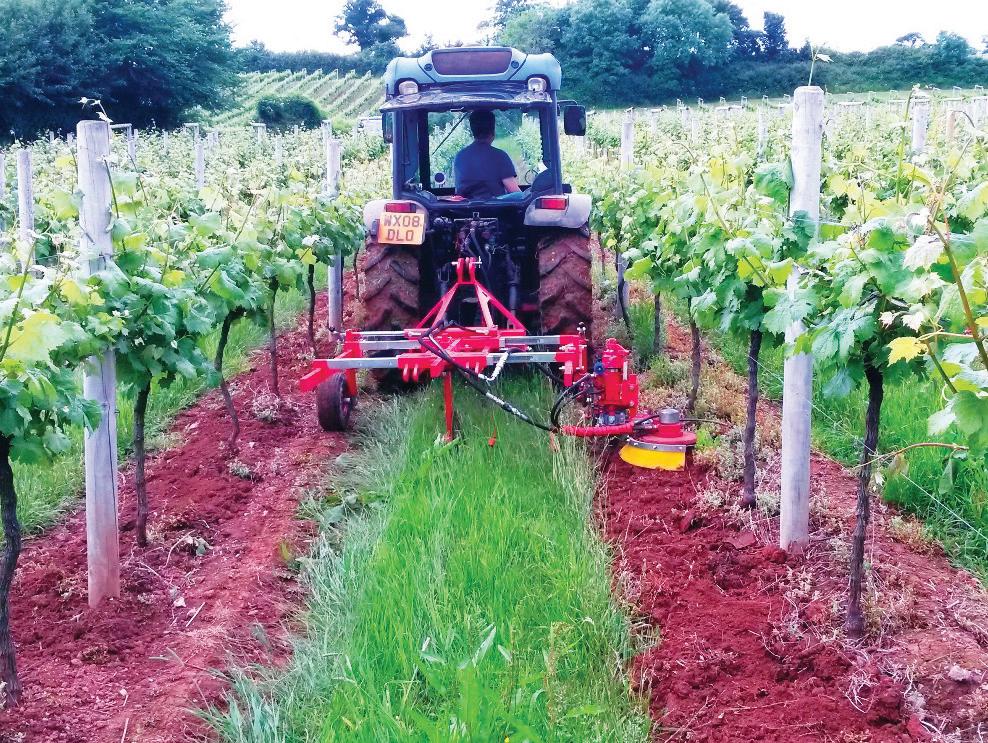
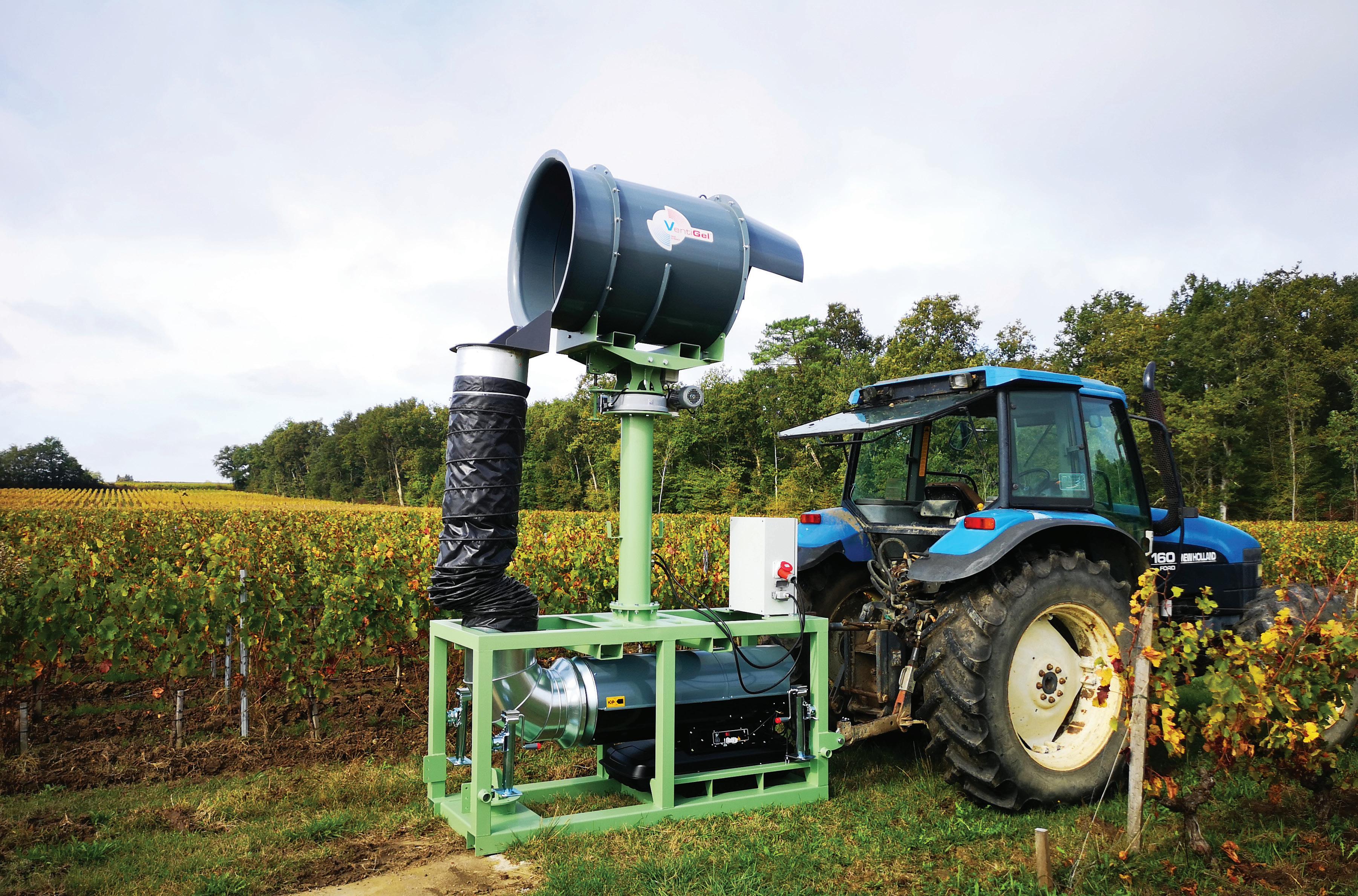
62 62
Boisselet at Sandridge
<<
Rotavator
Ligatex
Seed drill on a rotavator
Ventigel
Strip sprayer
Subsoiler
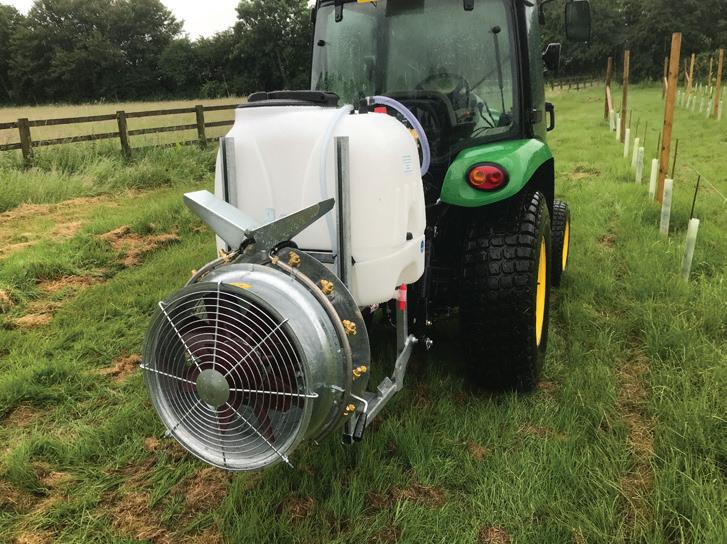

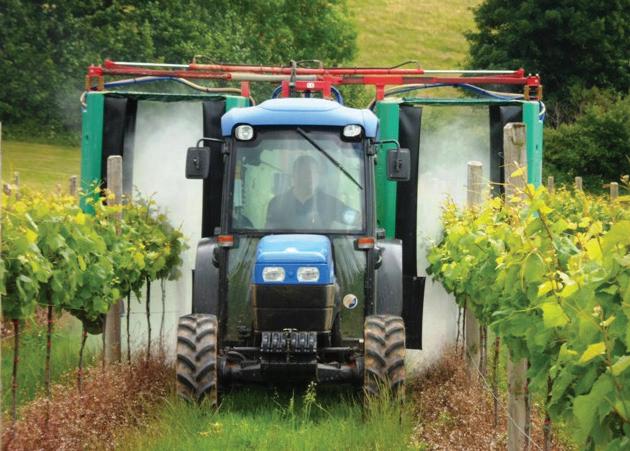
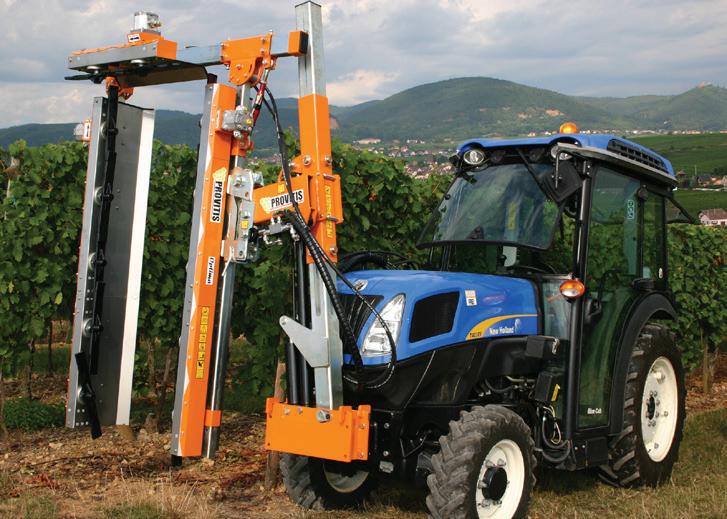
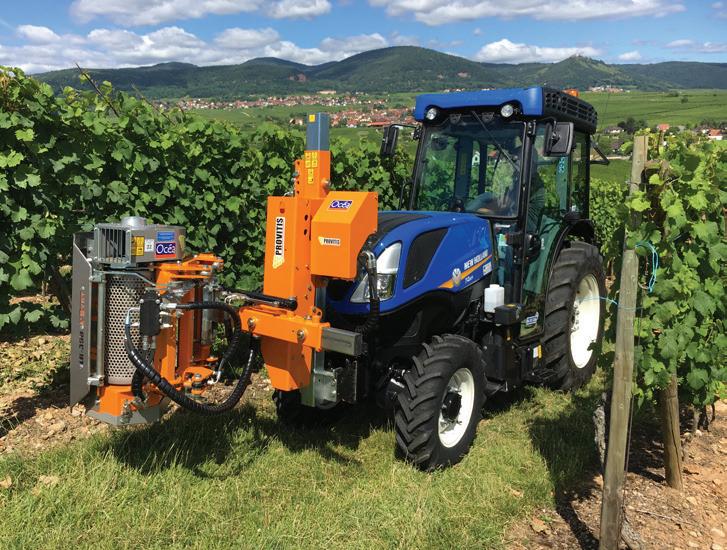
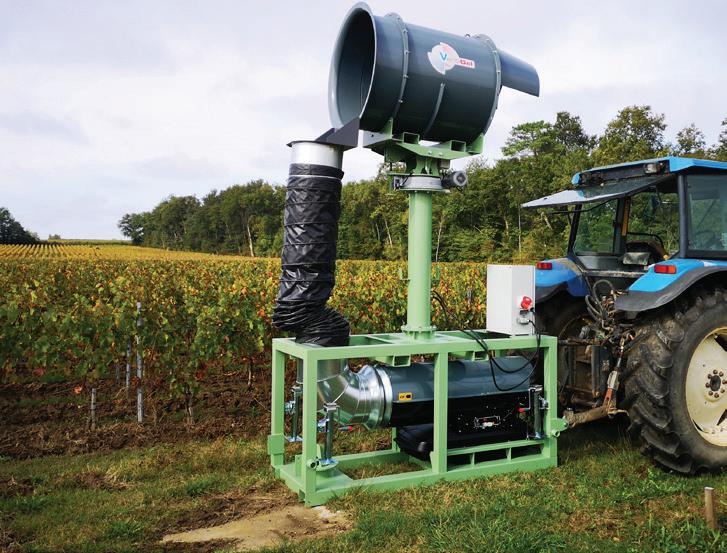

63 63 VITIFRUIT EQUIPMENT SALES AND HIRE provitis.eu sayelldavid@gmail.com vitif ruitequipment.co.uk / vitif ruitequipment 01732 866567 Rea dy for th e n ext summ er ? Vitifruit Equipment Sales and Hire /vitifruitequipment vitifruitequipment@sky.com 01732 866567 www.vitifruitequipment.co.uk VENTIGEL FROST PROTECTION PROVITIS LEAF REMOVERS MM FAN SPRAYERS PROVITIS TRIMMERS LIPCO RECIRCULATION SPRAYERS BOISSELET CULTIVATORS & STRIMMERS APRIL 2024 | VINEYARD
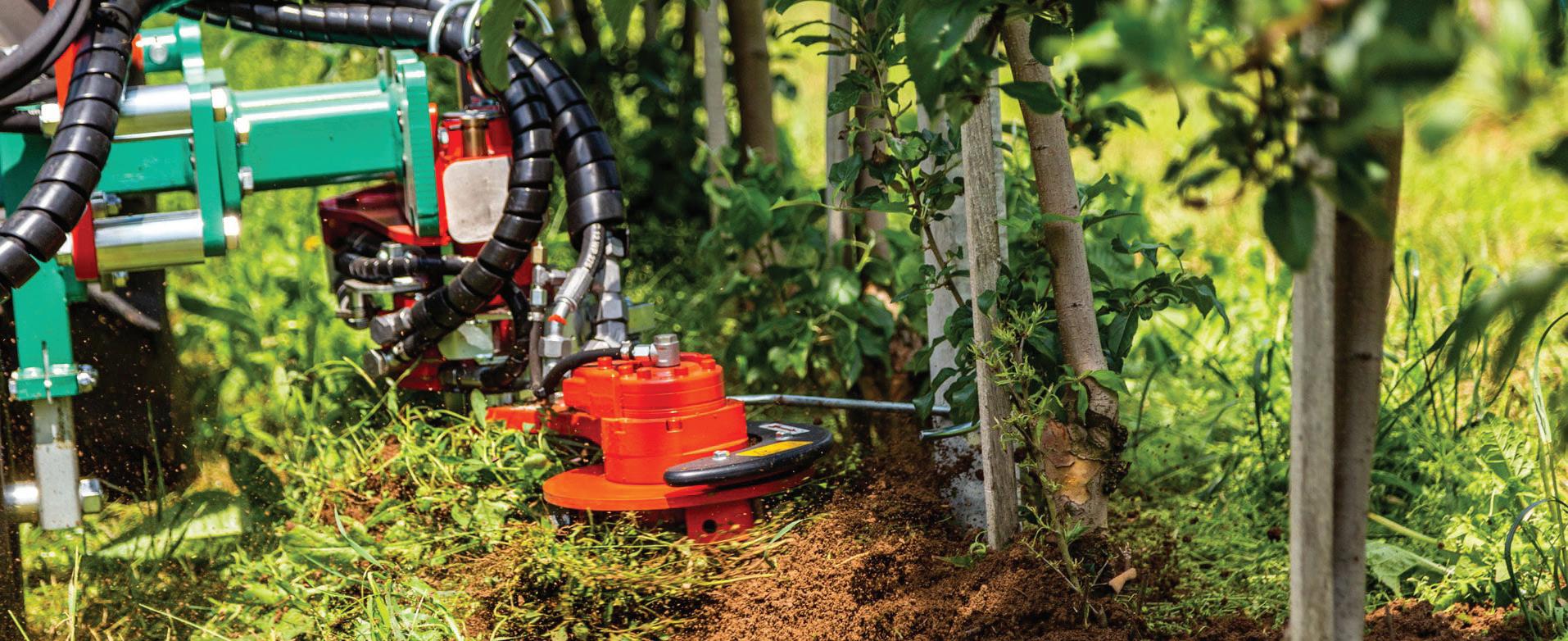
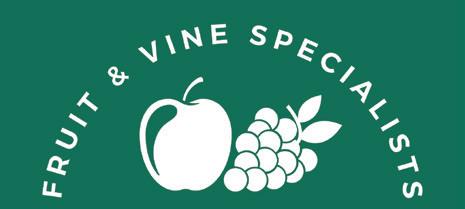

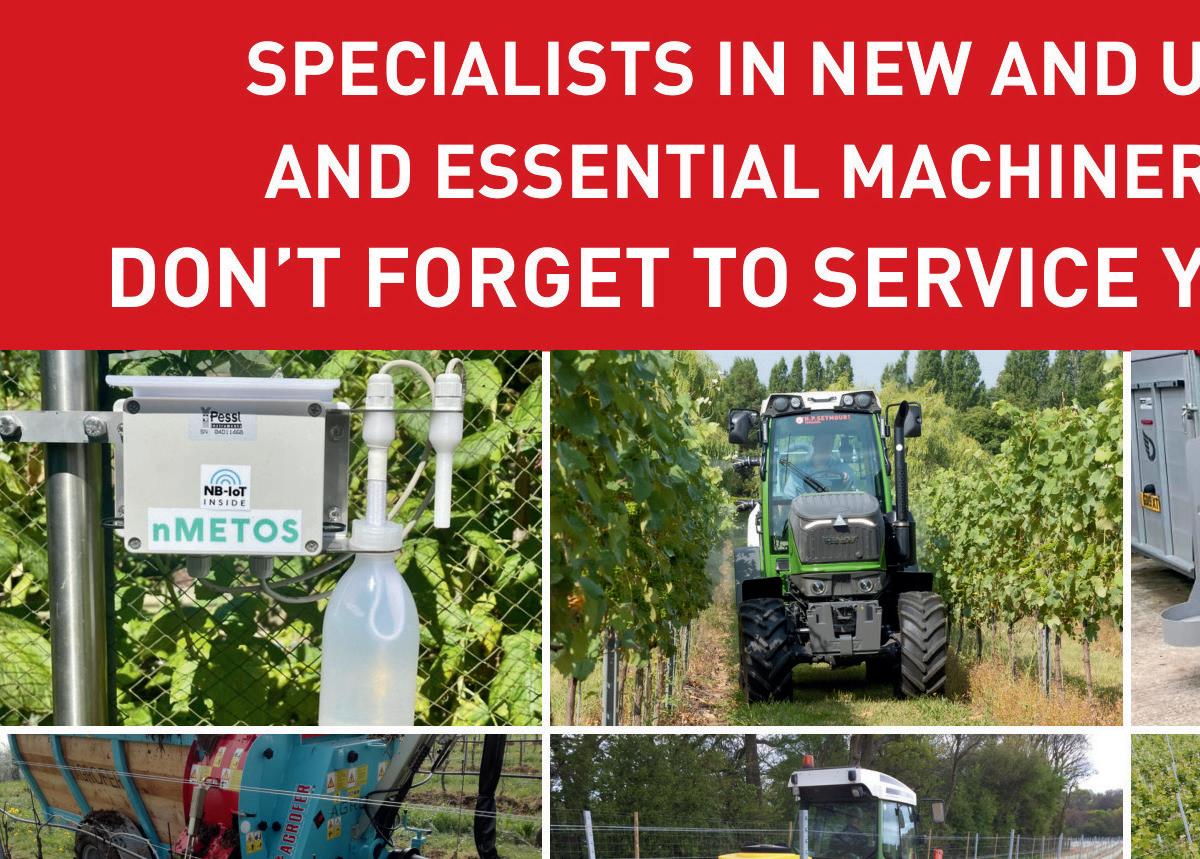
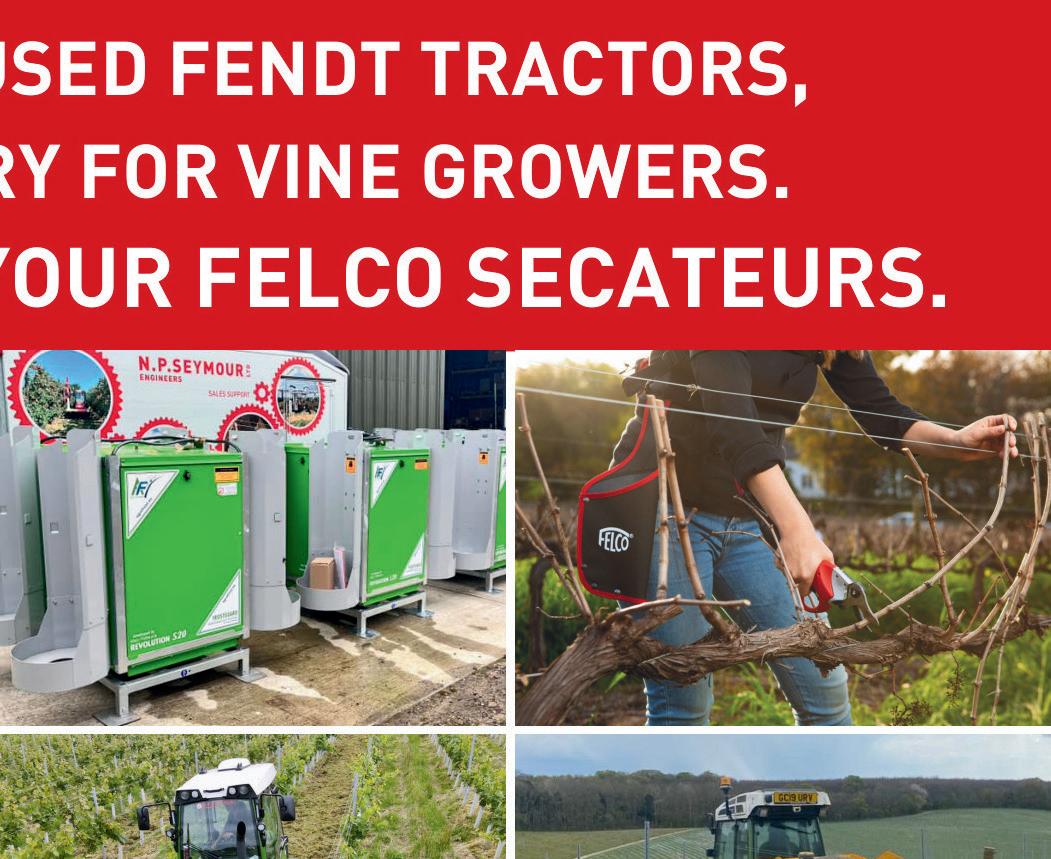


64 64 TN15 8LW TEL: 01732 880880 WINCHESTER SO21 3DN TEL: 01962 794100 TN22 5RB TEL: 01825 841100 NEWBURY RG20 7DJ TEL: 01635 281222 TN26 1JJ TEL: 01233 822205 HORSHAM RH12 3PW TEL: 01403 790777 @agrimachines Haynes agri HAYNES AGRICULTURAL LTD. TECHNOLOGY FOR ROW CULTURES #INTELLIGENT MECHANISATION Haynes agri @agrimachines Haynes agri COVERING SOUTH & SOUTH EAST ENGLAND Richard Smith – 07483 035922 – Richard.Smith@haynesgrp.co.uk Matt Pinnington – 07484 063280 – matt.pinnington@haynesgroup.co.uk www.Haynes-Agri.co.uk APRIL 2024 | VINEYARD
T4. VisionView Cab
The new New Holland Stage V T4 Speciality tractor has been available for purchase in the UK for just over a year, and is proving as popular as its makers had hoped writes Matt Pinnington of Haynes Agricultural.
This is due in no small part to the luxurious new VisionView cab, providing operators with a completely flat floor and unrivalled visibility, paired with the industry leading BlueCab 4 Category 4 filtration system.
The good first impressions start as you open the door- this is hinged at the rear of the cab with no B pillars, providing excellent visibility at each side. Hopping into the cab is easy with a wide opening and low fender, while the flat floor means no transmission tunnel to catch a welly as you sit in the seat, and allows the pedals to be arranged centrally under the steering column.
The steering column is angle adjustable and telescopic, and is finished off with phone charger, drinks bottle holder and the 7” InfoView LCD display. The display shows the operator all the necessaries and is also where adjustments are made to the electrohydraulic remote: flow control, priority, lock out and motor mode – an innovative feature designed to protect hydraulic motors when a remote is shut off.
The BlueCab 4 carbon filtration system monitor has been moved from above the operator’s head to inside the InfoView – crucially showing filter life and cabin pressurisation. The system is still engaged by a simple rocker switch, meaning the carbon filter is only used as required, with the CAT 2 filter offering dust protection when the tractor is not being used for spraying.
Sitting in the air suspended operator’s seat really shows off the space and airy feel; the headlining slopes up and away from the driver, while the bonnet is even lower than the previous models to give better
visibility for trimmers or pre-pruners. The seat is raised up and sat back to enable the operator to see the sides and rear of the machine easily, and the slightly wider cab allows for some wiggle room.
Controls are laid out intuitively on the right-hand side of the cab and fall to hand regardless of task required, for example, the switches for the hydraulic top link, stabilisers and drop arm are all in a bank on the righthand rear corner of the console, just where they’re needed when looking over your shoulder in order to hitch up an implement.
Implements with control boxes can be wired into the cab via pull-out plugs in the rear and front window apertures – this means the cab stays sealed, and that it’s class leading sound level of 71dBA stays that way. Control boxes can be fitted either to the RAM mounts in the headlining, on the right-hand grab rail, or via a threaded block in the A-pillar, while there is a choice of power sockets placed to reduce any trailing leads.
Transmission, pto and hydraulic controls all sit forward on the righthand console, with auto pto, engine speed management switches, shuttle aggressiveness and front/rear diff-lock buttons all occupying a switch bank close to the EHR paddles. Often changing the engine speed is matched with changing gear, so another engine speed management switch is located on the transmission control joystick. This joystick also features a power clutch button, meaning eight gearshifts can be made without use of the clutch pedal on Dual Command transmissions.
The cab is topped off with a choice of either halogen or LED worklights, and high mount roadlights can be fitted as an option for when front mounted implements might obscure the usual hood mounted lights.
The new New Holland T4.FNV range is available from all New Holland dealers, for enquiries or demonstrations in the South East/South Central areas please contact either Richard Smith or Matt Pinnington at Haynes Agricultural.
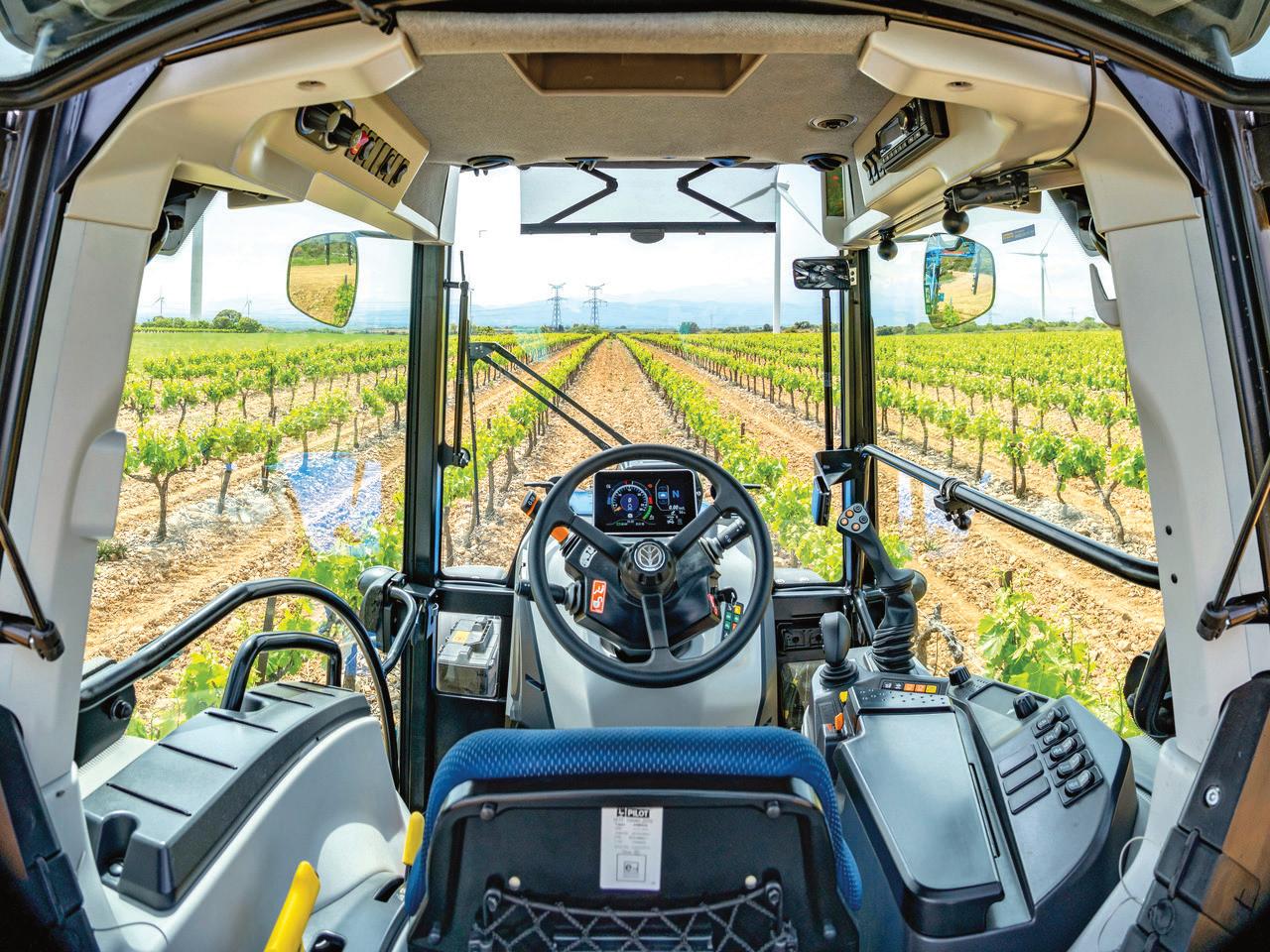

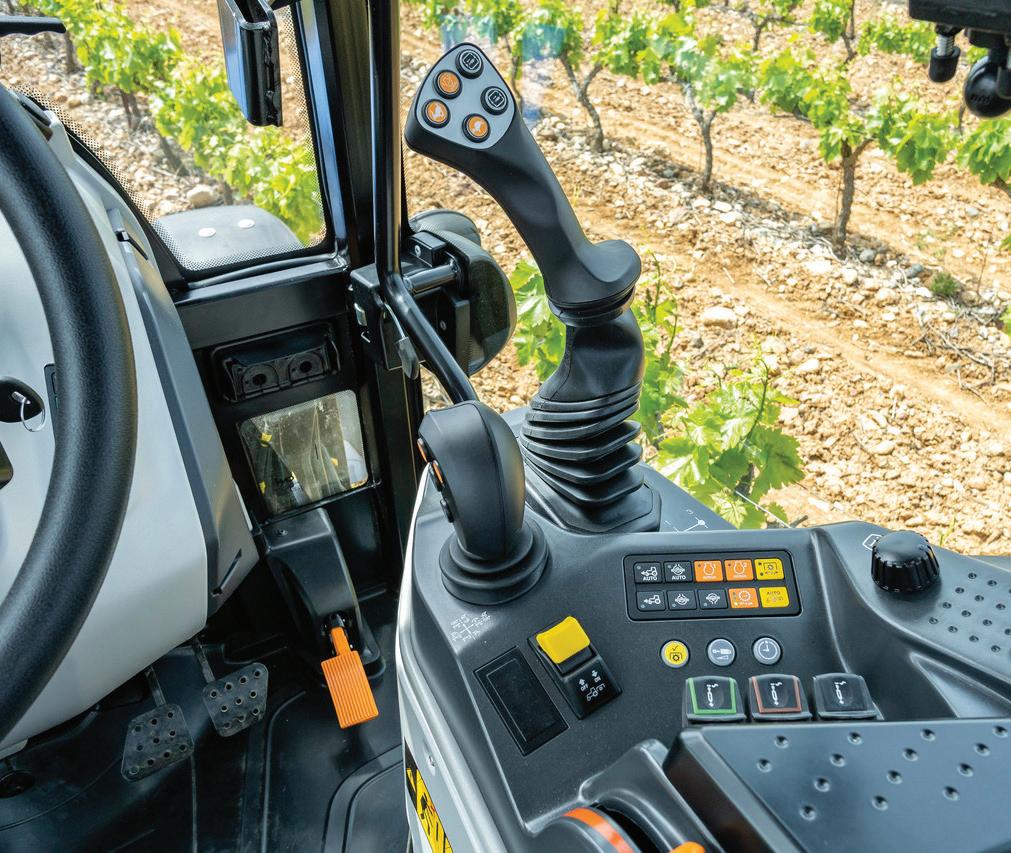
65 65 MACHINERY & EQUIPMENT
Fighting frost in the vineyard
Having worked with growers for half a century, we understand that spring frosts are one of the worst threats vineyard owners face.
While you can argue that the best way to prevent damage is to ensure the right varieties of vines are planted on frost-free sites, frost is something the majority of growers in the UK have to deal with at some point. Especially as we are seeing more advection, or wind frost, events occurring on a global scale during flowering.
Both radiation and advection types of frost may occur during a frost event, and growers should also be aware that the temperature, humidity, topography and soil moisture all significantly impact how much damage is caused to buds.
The amount of weeds and length of grass also have a big impact on the efficacy of whatever frost protection you have in place.
One of the oldest methods of protecting vines is heating the vineyard's air. Many UK growers have adopted the traditional French practice of placing and lighting bougies.
This “tried and tested” method has been used for years, but as effective as they are, they do require a significant amount of labour to set them out, light them (often during the small hours of the night) and bring them back in.
Those looking for a more efficient approach have long chosen to use the Frostbuster and Frostguards from Agrofrost.
Unlike other frost protection systems, the working principle is not based on raising the temperature above the critical values but on phase transition and controlling the formation of hoarfrost, which is the biggest enemy of flowers and buds.
The phase transformation of vapour into hoarfrost is called desublimation or deposition and liberates a lot of energy. This energy is transferred to the surrounding air and soft tissue of the vine.
Without protection, the layer of hoarfrost will increase and finally cause damage to the plant by dehydration as the ice crystals
extract energy and humidity from the buds and flowers.
The Frostbuster and Frostguards we supply allow growers to protect crops at sites where no water is available and can be used not only during radiation frost but also during wind frost.
Both machines form a hot air stream every seven to 10 minutes, so part of the ice evaporates while the remaining ice gets energy from the passing air. The higher the humidity, the more energy is transferred. This allows growers to protect crops with only a fraction of the energy input that other systems need.
The Frostbuster works by burning gas to provide a heated air supply, which is then blown by a tractor-driven fan. Driving around the vineyard following a pre-determined route makes it possible to protect an area of up to eight hectares.
Alternatively, the Frostguard is a smaller, stationary version of the Frostbuster, featuring a petrol engine-powered fan that can rotate 360° continuously to protect up to one hectare of vines.


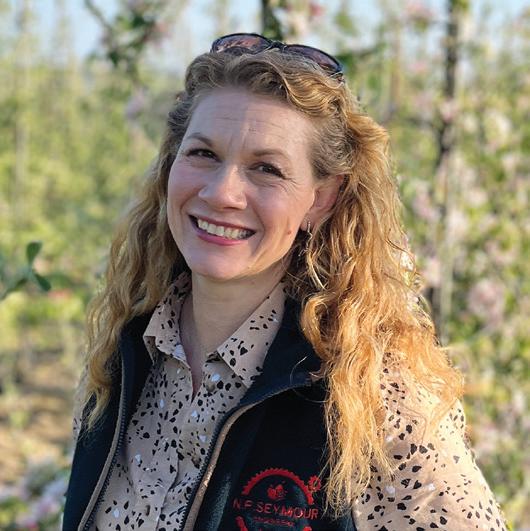
Lower protection temperatures are possible, but for every degree below -5.5, the protected surface is reduced by about 10%.
Growers will often opt to have several Frostguards located in known vineyard frost pockets rather than having to drive a Frostbuster around in the night. The area protected will also depend on the direction of the wind and will need to be evaluated each night to ensure the right area is being protected.
In a previous edition of Vineyard Magazine, Romain Henrion, from Hattingley Valley Vineyard, commented: “I wanted to tell you about the excellent results regarding the Frostguards. This year and last year, we had several cold spells in the spring, and the Frostguards have shown great efficiency on our sites. We were able to reduce the damage to <1% on the total plots, which represents a minimal economic loss for us.”
Both machines have been scientifically proven to offer protection in radiation frosts down to -5.5°C and down to -3.5°C with a wind frost.
WineGB members looking for an in-depth review of a range of frost protection methods, along with temperature monitoring systems, can visit the knowledge section in the members-only area of the website.

6666 Claire Seym ur N P S e y m ruo dtL If you would like more details about the Frostguards and Frostbusters from Agrofrost, as well as the other frost protection equipment we have in stock for the 2024 season, please phone us on 01580 712200 or email sales@npseymour.co.uk
MACHINERY ADVICE AND TIPS APRIL 2024 | VINEYARD
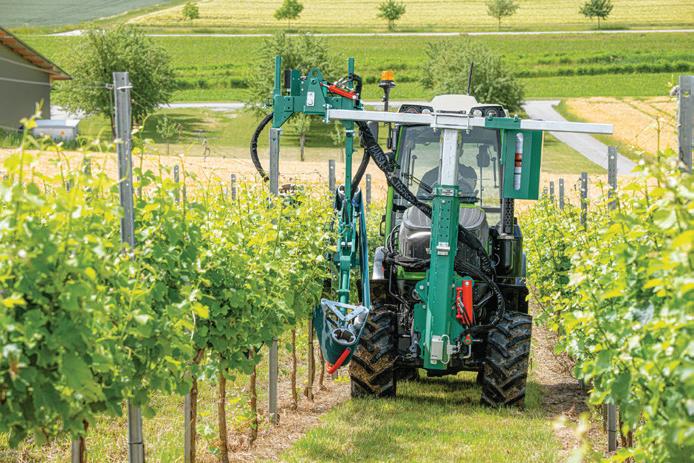
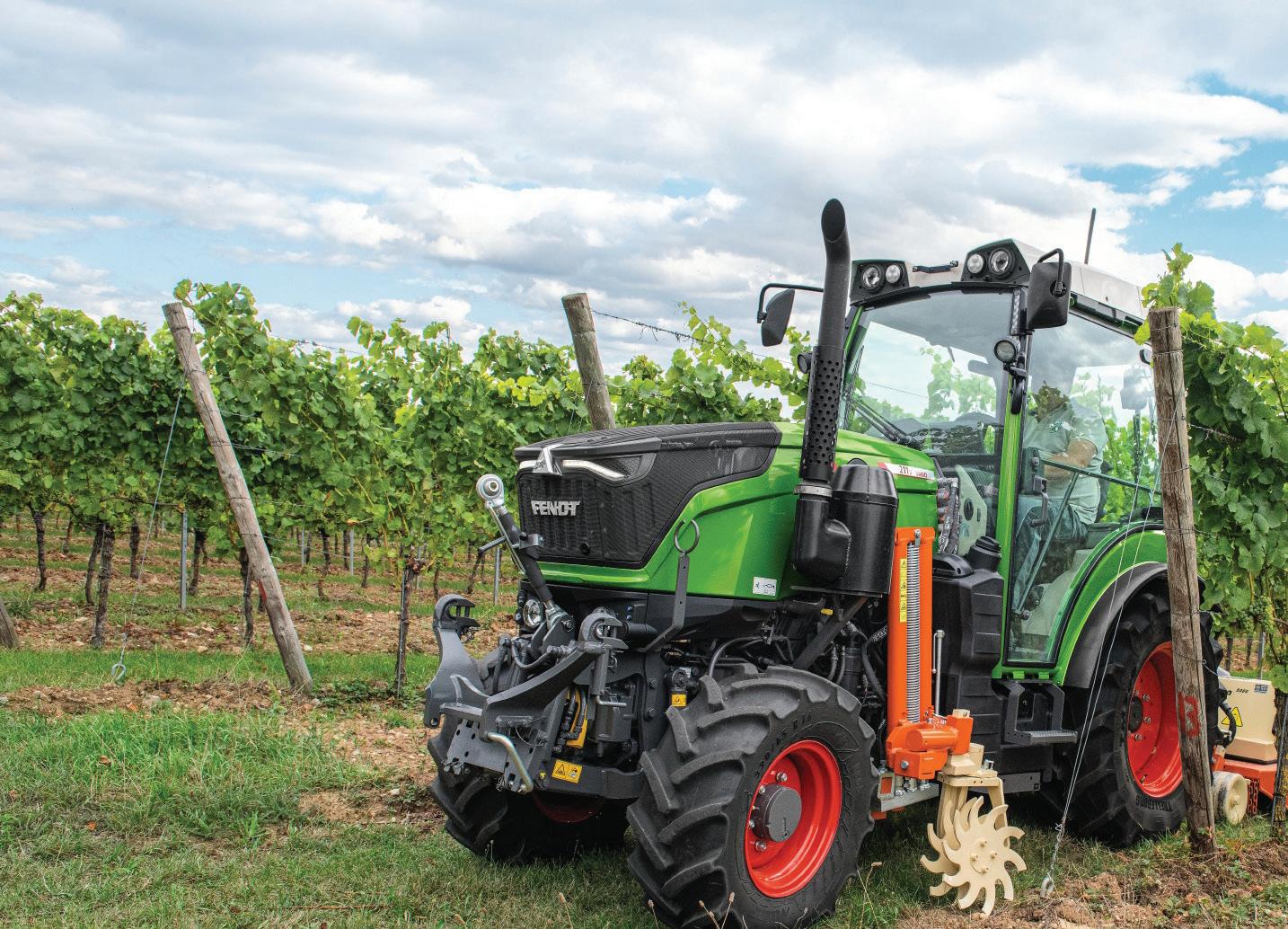

Unleash Success with the Fendt 200 V Vario Contact Us to Reserve Yours! WRITTLE Fox Burrows Lane, Writtle, Essex, CM1 3SS 01245 322733 CHARING Little Hook Farm, Hook Lane, Charing, Kent, TN27 0AN 01233 714123 BILLINGSHURST New Bridge Road, Billingshurst, West Sussex, RH14 9HZ 01403 330030 ROPLEY Unit 1, Ropley Business Park The Dene, Ropley, Aylesford Hampshire, SO24 0BG 01962 674640 Your Future-Ready Partner for Unrivaled Results Tackle tomorrow's challenges today with the Fendt 200 V Vario. Streamline and digitise your work with advanced functions and software, ensuring a successful harvest for your business. fendt.com | Fendt is a worldwide brand of AGCO Fendt 210 V Vario 0% Finance Available * *T‘s&C‘s Apply. Stock Units Only. Units Available Now for Immediate Delivery! STOCK AND DEMO UNITS AVAILABLE NOW! RWCRAWFORD.CO.UK


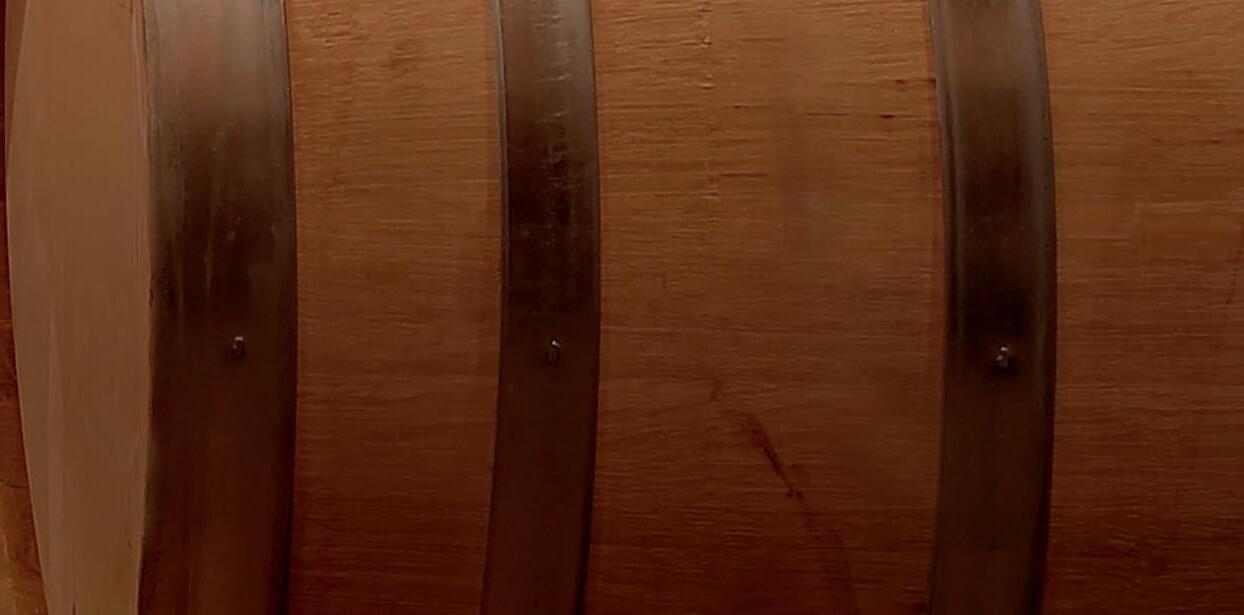


GENTLY PUMPING QUALITY






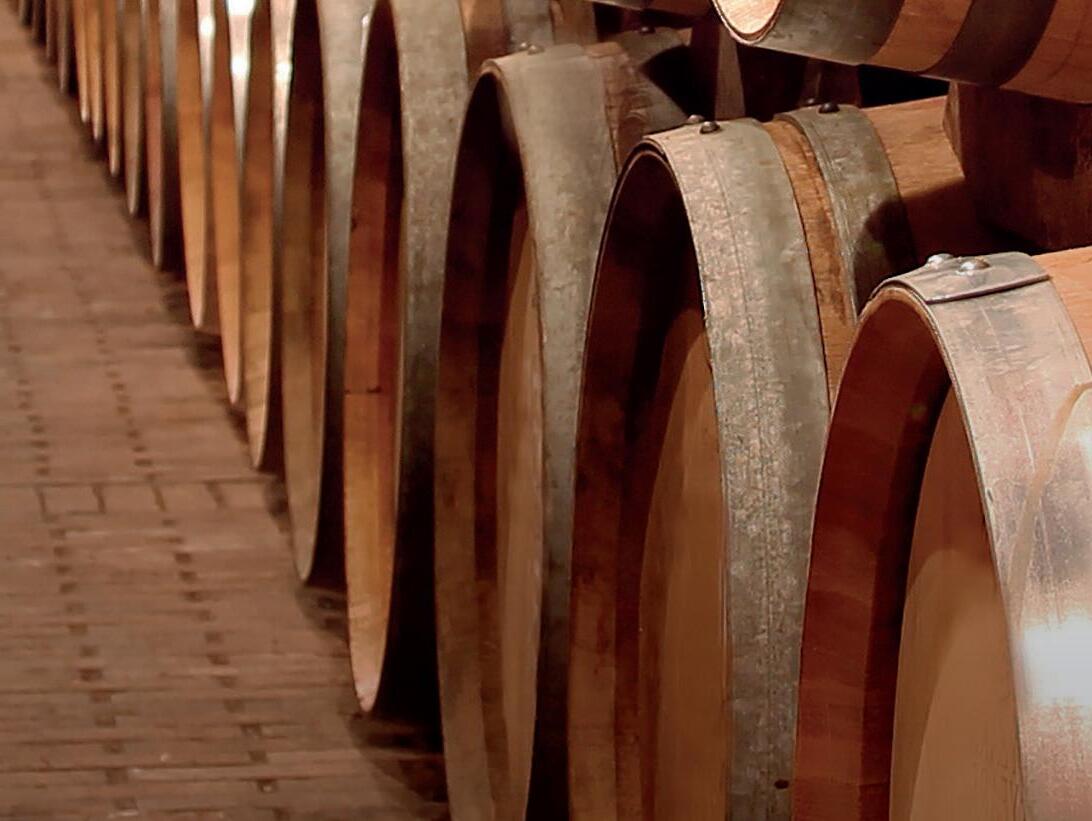
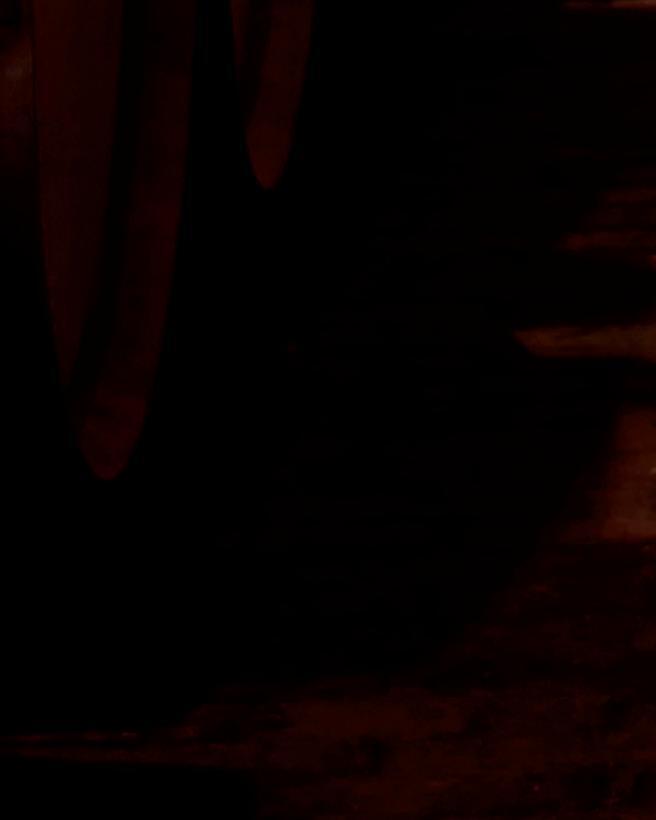
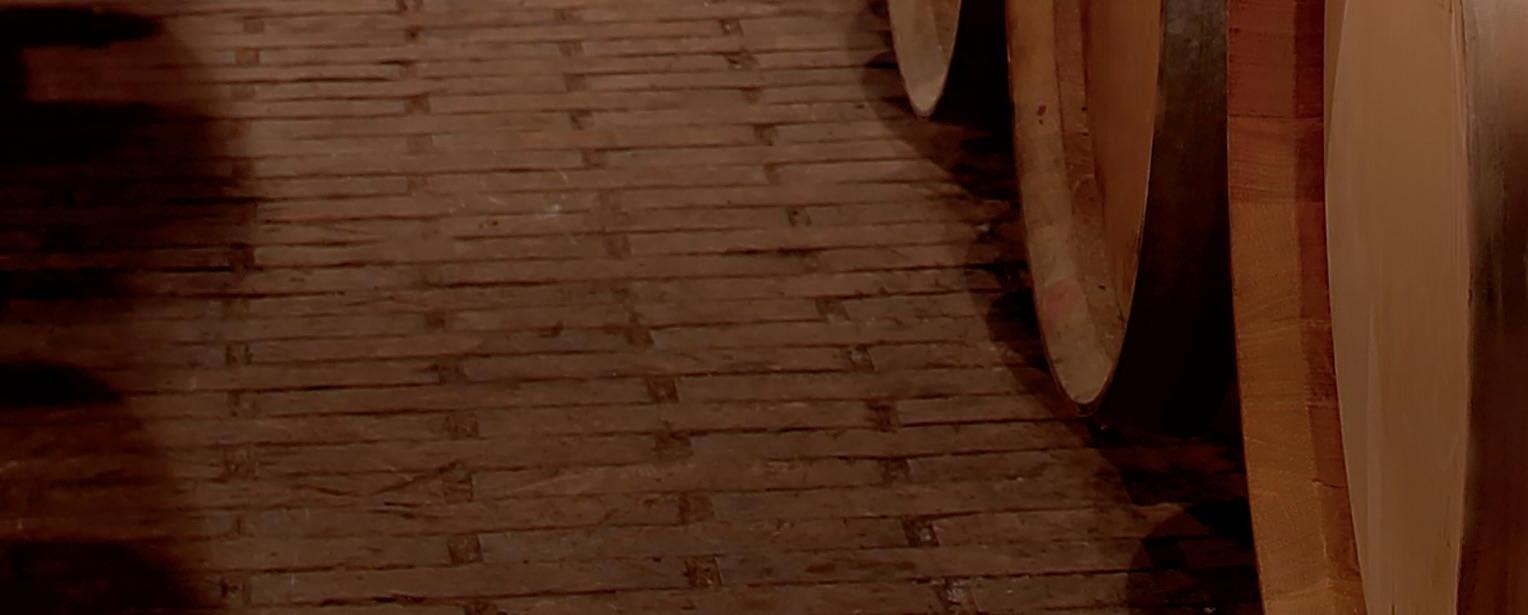

At Vogelsang, we never lose sight of what matters to you: economy and ease of use.
As innovators in the field of pumping techniques, we have developed a pump especially for the winemaking industry to help move liquids and solids without losing any vital flavour and quality of the wine.
The compact, intelligently designed rotary lobe wine pump is created specifically to reduce wine oxygenation through its quiet and gentle operation, and is ideal for recirculation or pumping to and from the cellar, and use in transportation, storage and bottling.
Grapes, seeds, must and wine, everything remains unchanged during the transport process, for the highest quality of the final product.
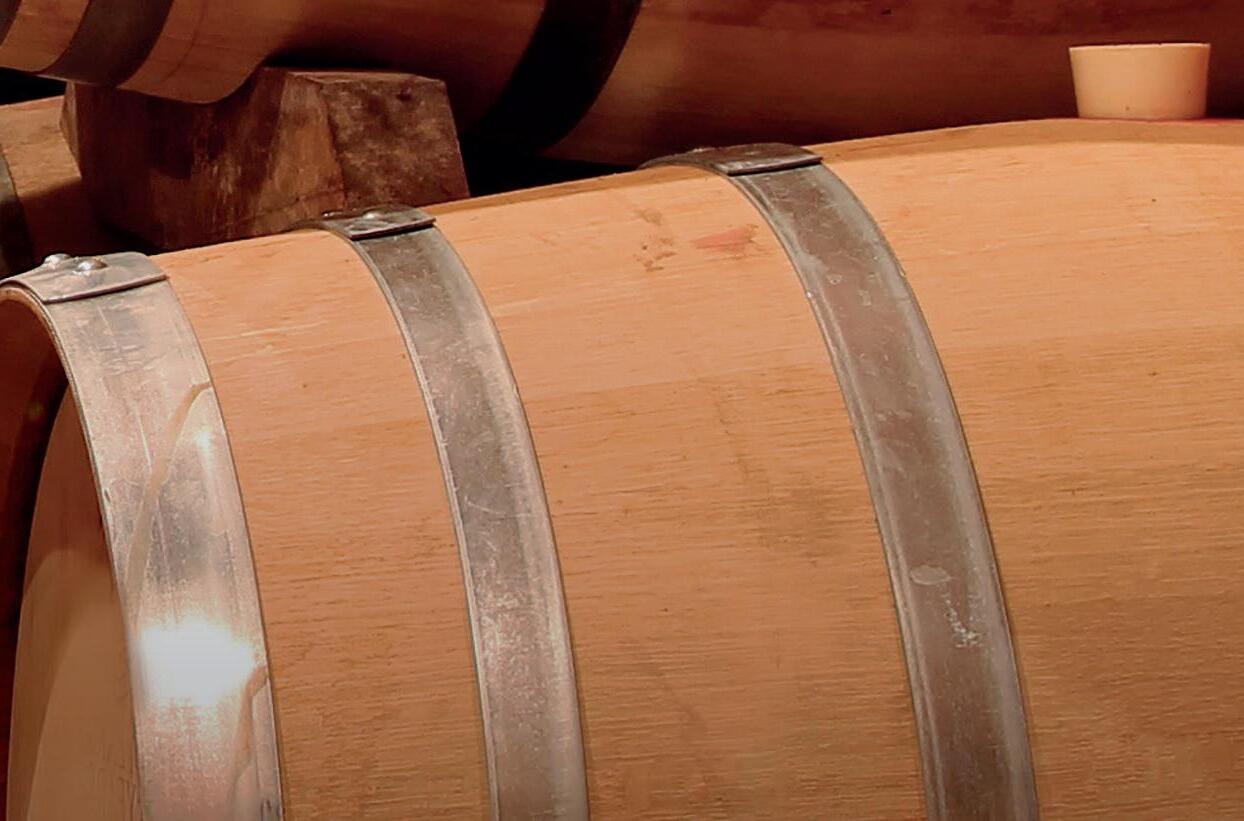

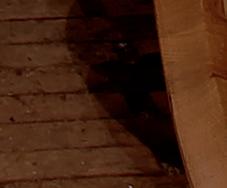












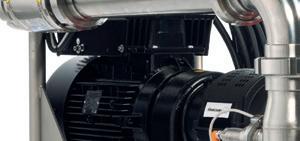

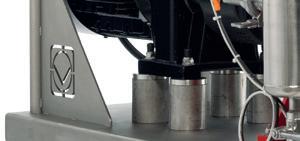



For the special requirements of winemaking, Vogelsang offers a variety of pump solutions for grapes, must, and wine. Due to the characteristics of our rotary lobe pumps, the sensitive grapes and must can be conveyed gently.
Contact person: Richard Love
Mobile: +44 7765 902140 | richard.love@vogelsang.info
vogelsang.info





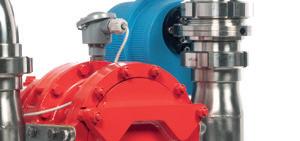




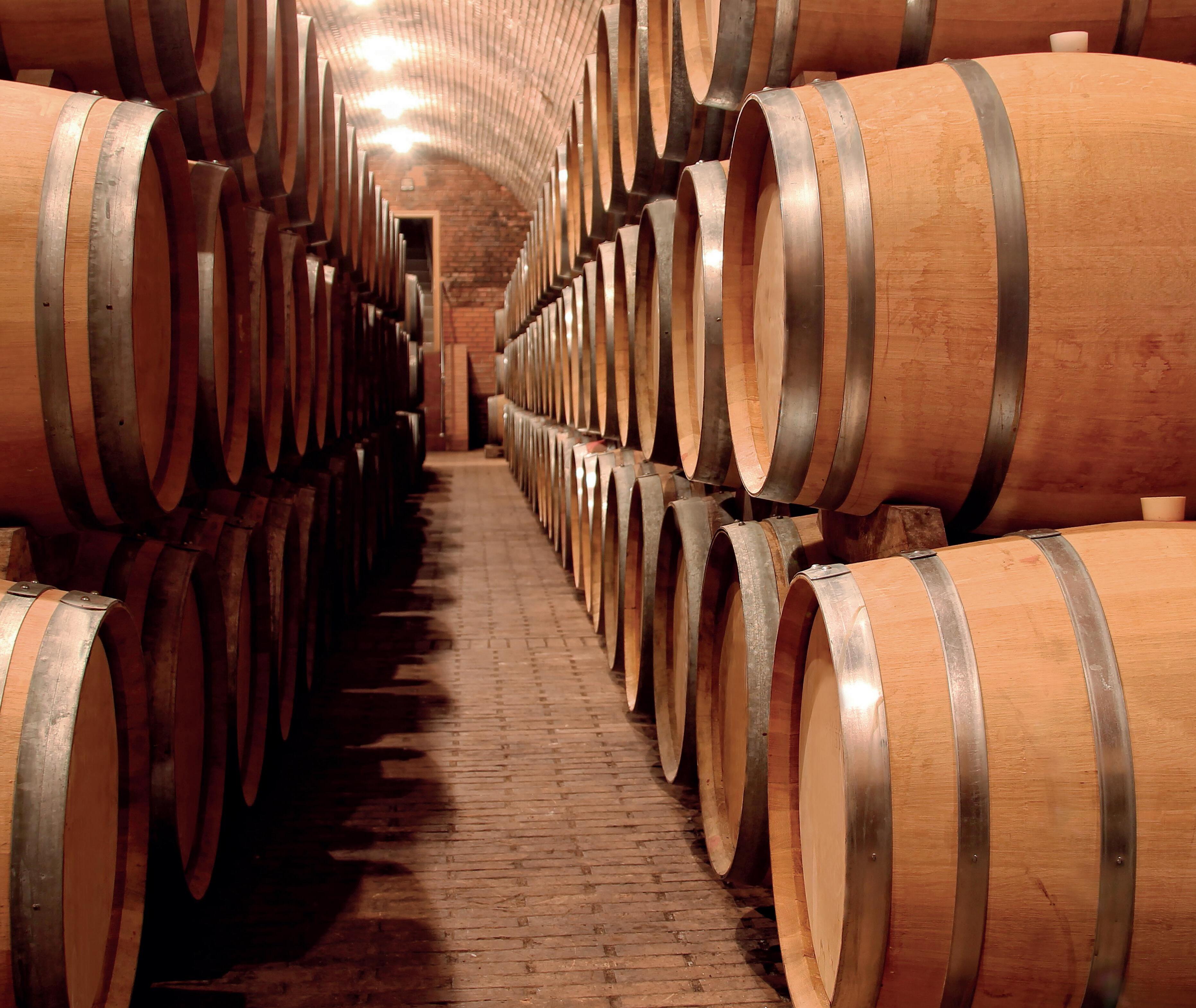



TECHNOLOGY
VOGELSANG – LEADING IN
AND VERSATILE PUMPS FOR ALL WINEMAKING PROCESSES
POWERFUL
TECHNICAL SERVICES LEADING THE WAY IN WINERY TECHNOLOGY PUMPS PROCESSES with Itasca Technical Services / Contact: John Simmons Tel: 07788 561464 / Email: john.s@itascawines.com / www.itascawines.com














































































































































































































































































































 James Bowerman
James Bowerman







 Vineyard Site Evaluations
Vineyard Establishment
Vineyard Management
Winery Scoping & Design
Vineyard Site Evaluations
Vineyard Establishment
Vineyard Management
Winery Scoping & Design































































































































































































































































































































































































